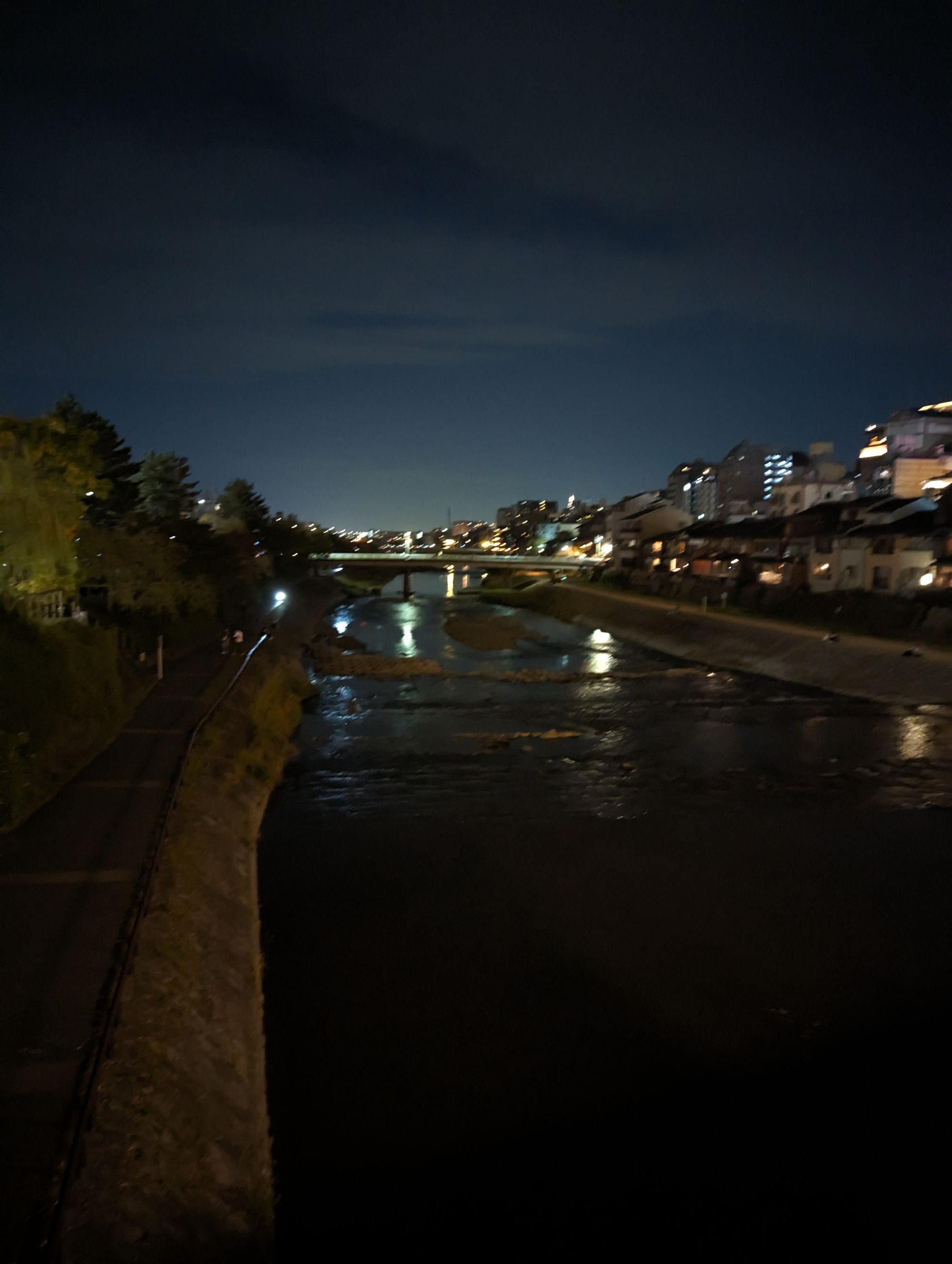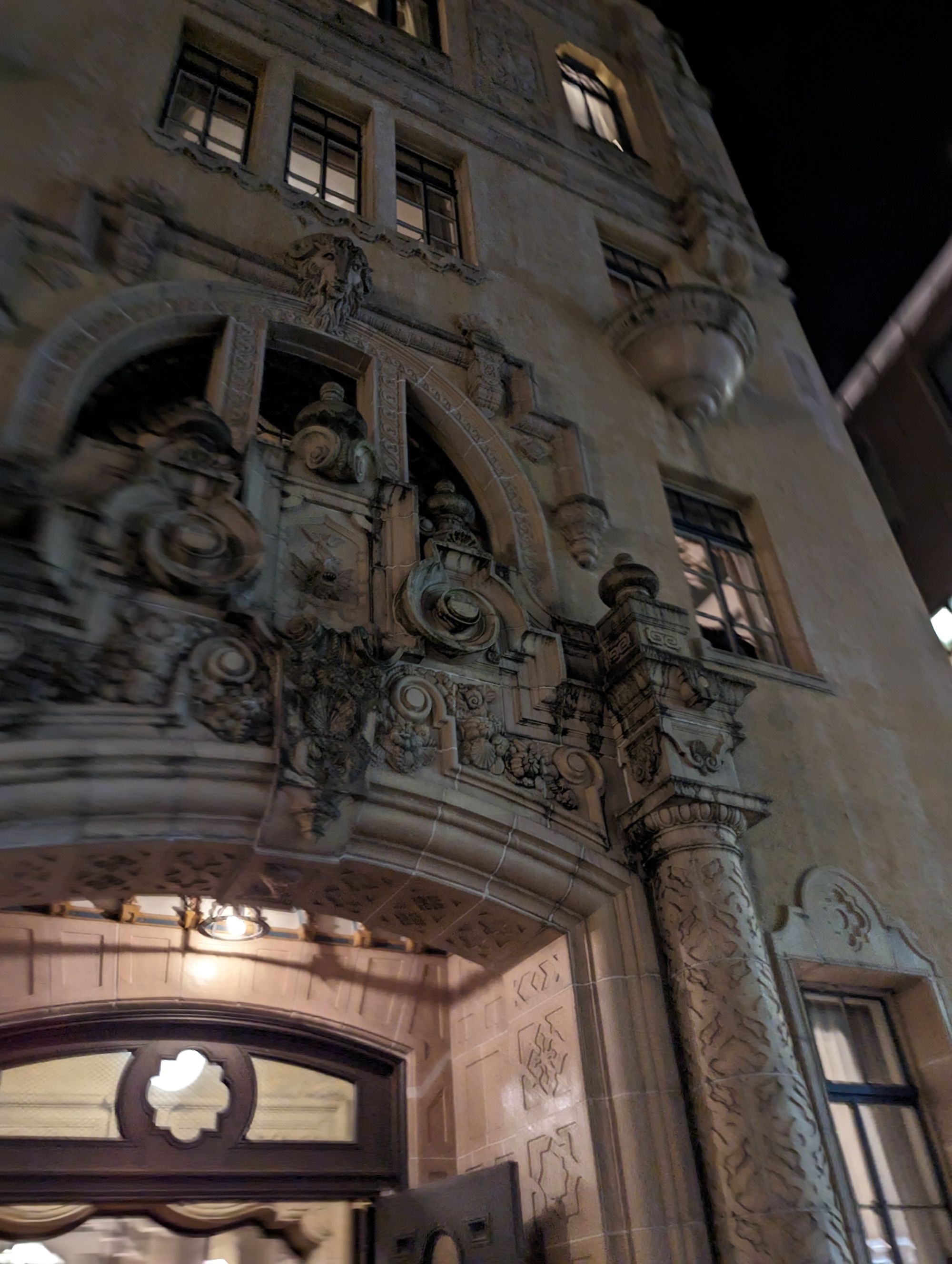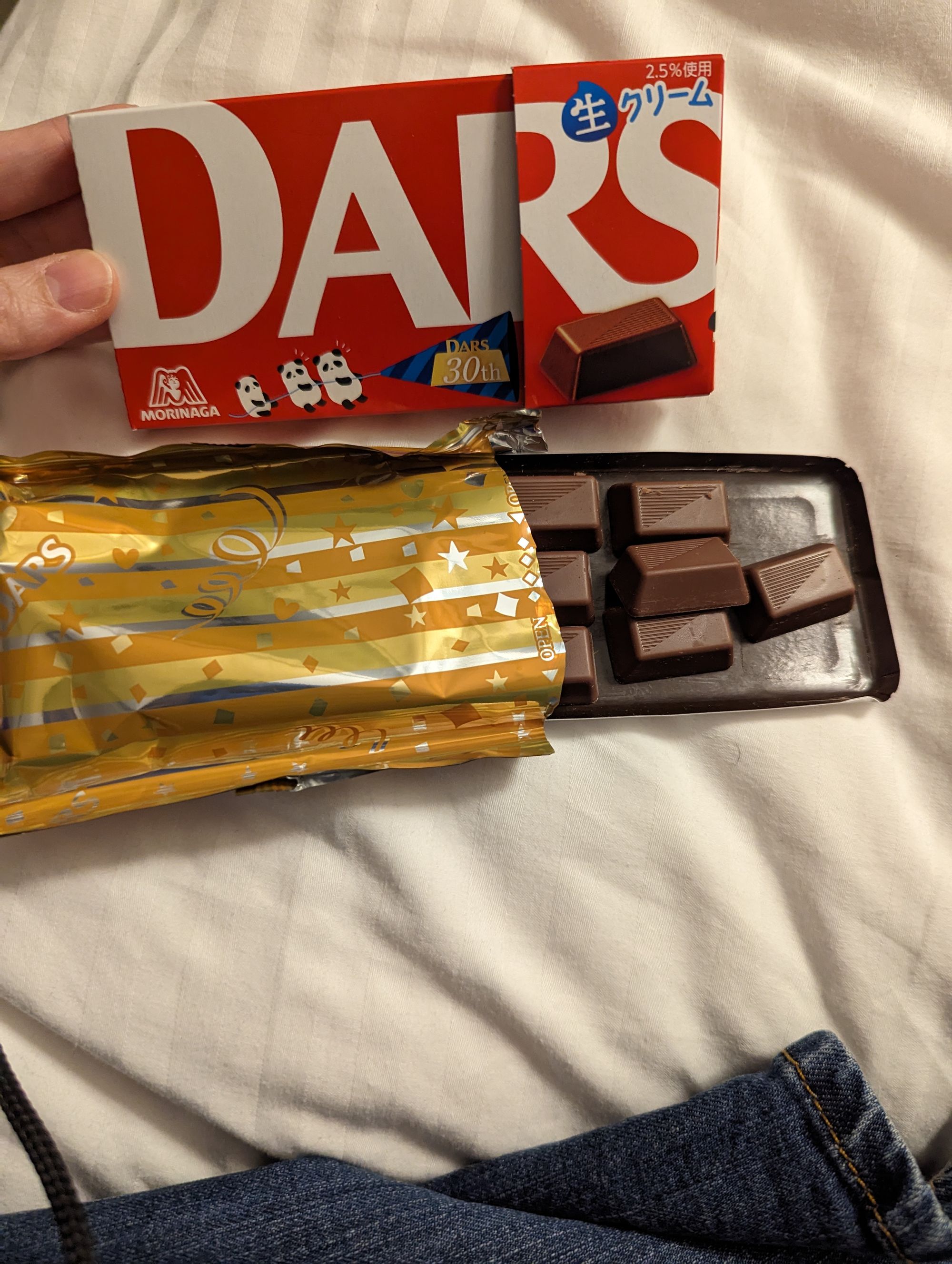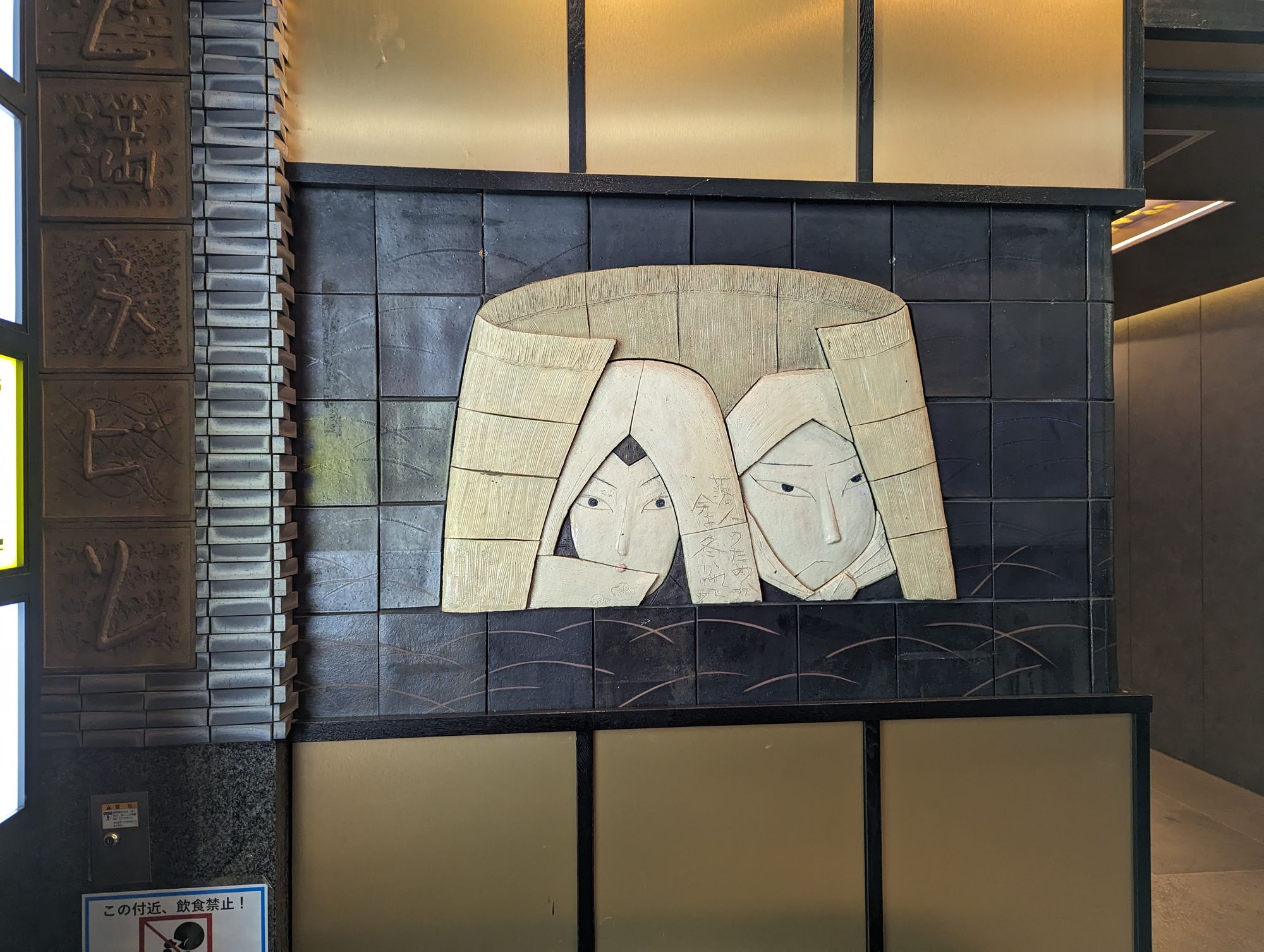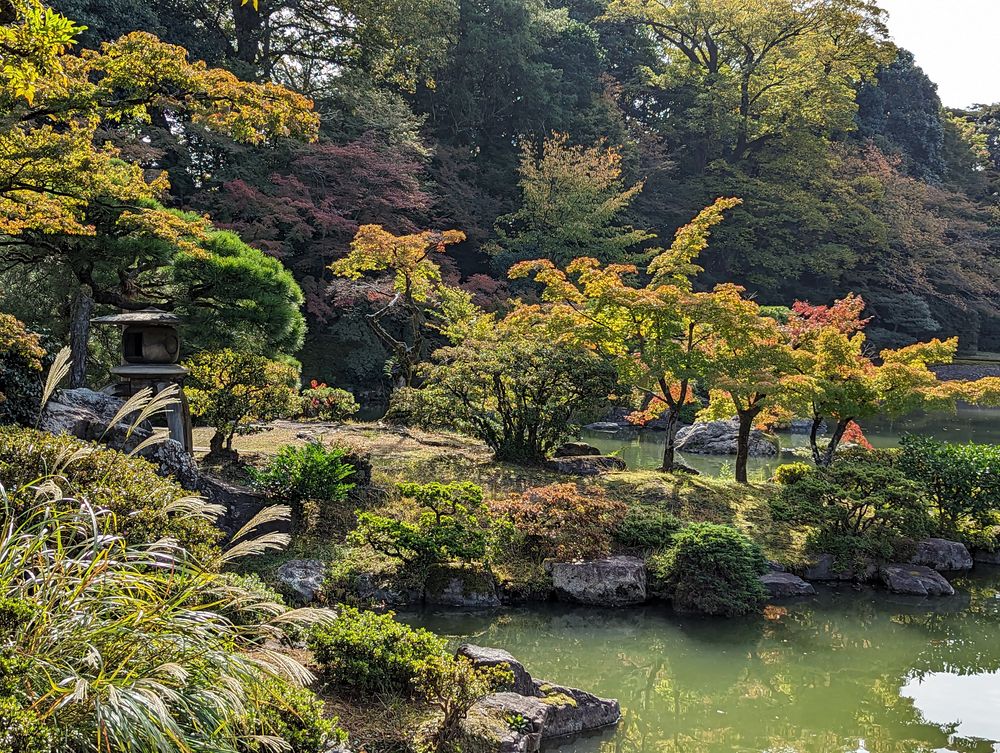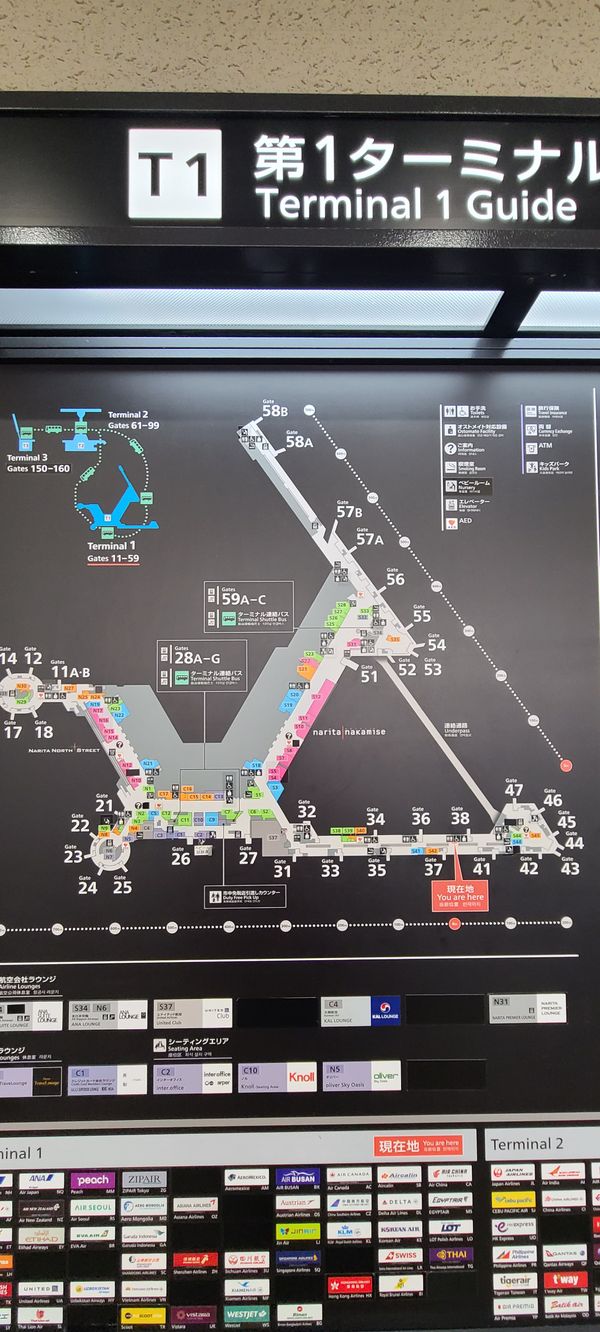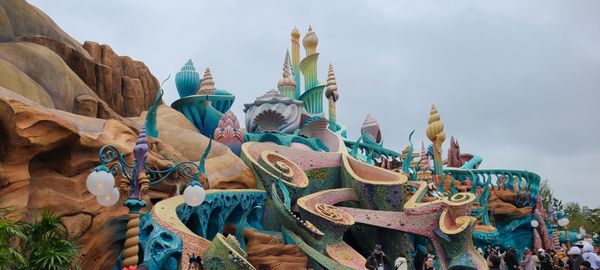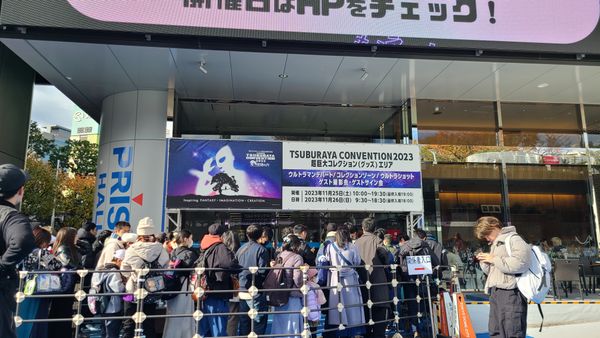Stacy: Day 6 - Kyoto Palaces!
Today was a lot of fast walking so we could hit all of the guided tours. Sometimes we grabbed a taxi because we were cutting it too close [had we walked].
But, guys. The gardens at these imperial palaces are some of the most gorgeous I've ever seen.
We started with the 9:30am tour at Kyoto Sento Imperial Palace. It was built at the beginning of the seventeenth century as a palace for Emperor Go-Mizunoo (1596–1680) who abdicated from the throne. Later, there were several fires and reconstructions; however, now there are no buildings, and only the garden remains.
This is still owned by the emperor/the State, and this particular palace is where retired emperors and guests of the emperor stay.
I believe Nando and I agree that this was the most beautiful Japanese garden of the day--possibly that we've ever seen!
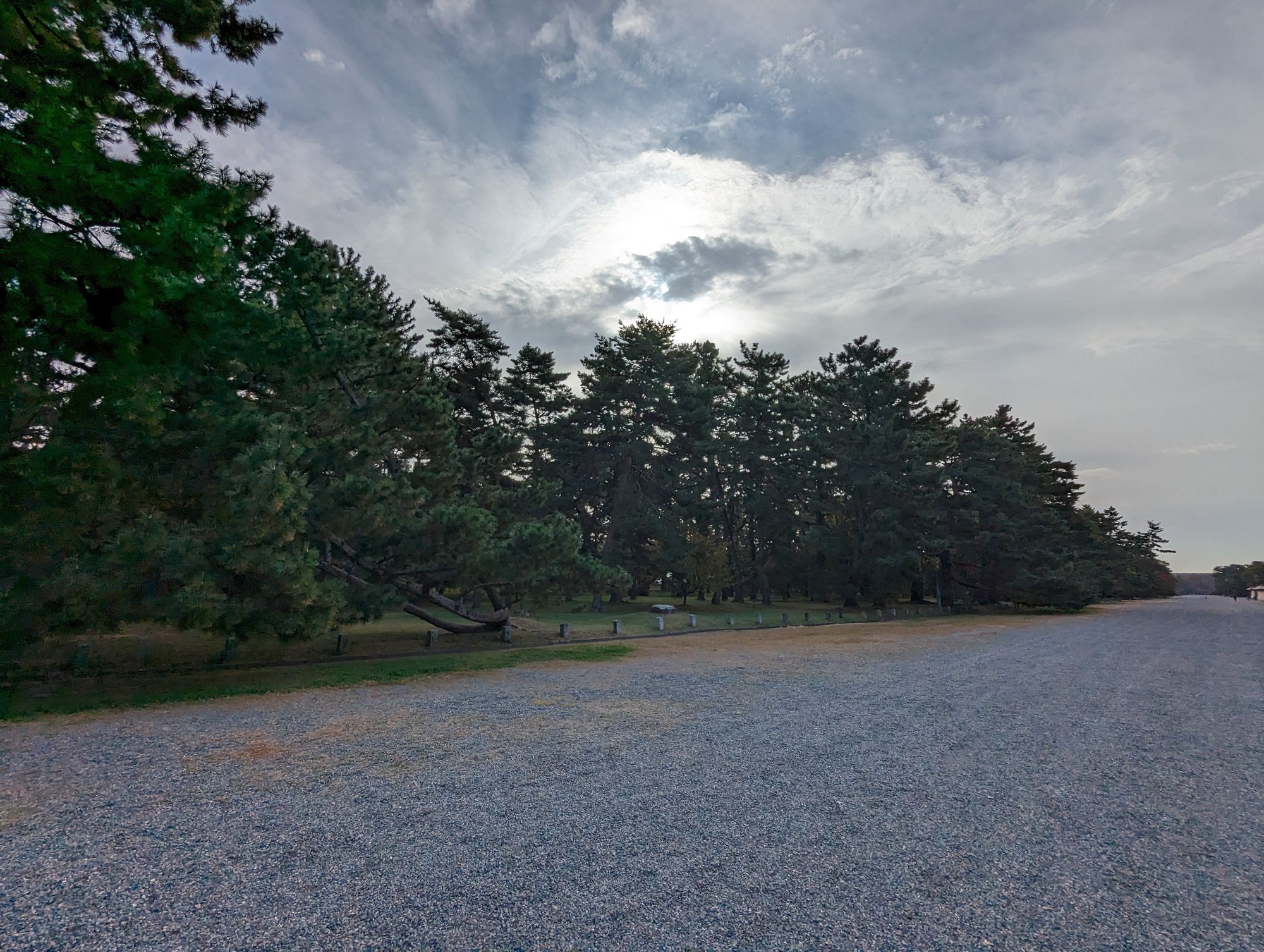
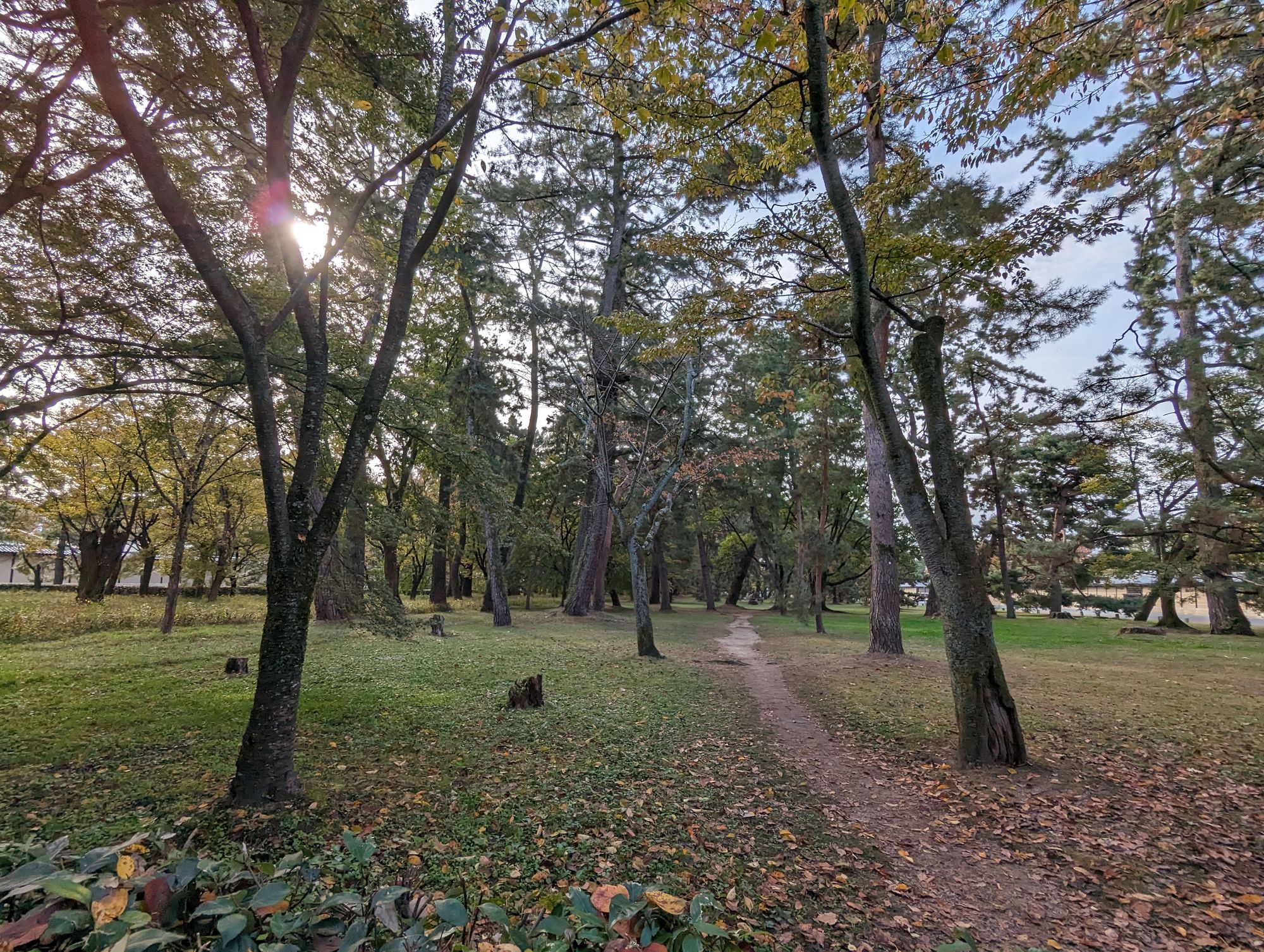
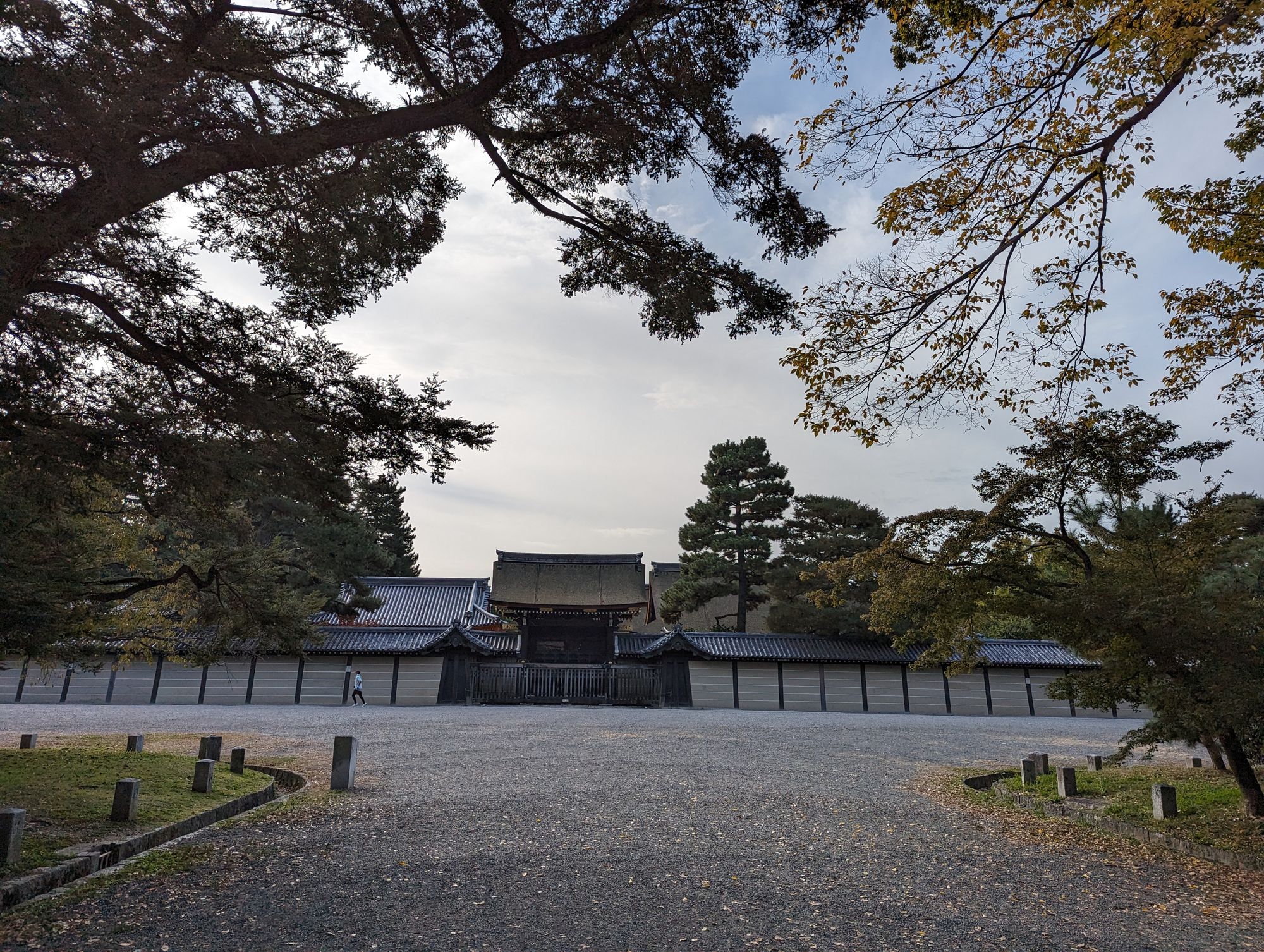
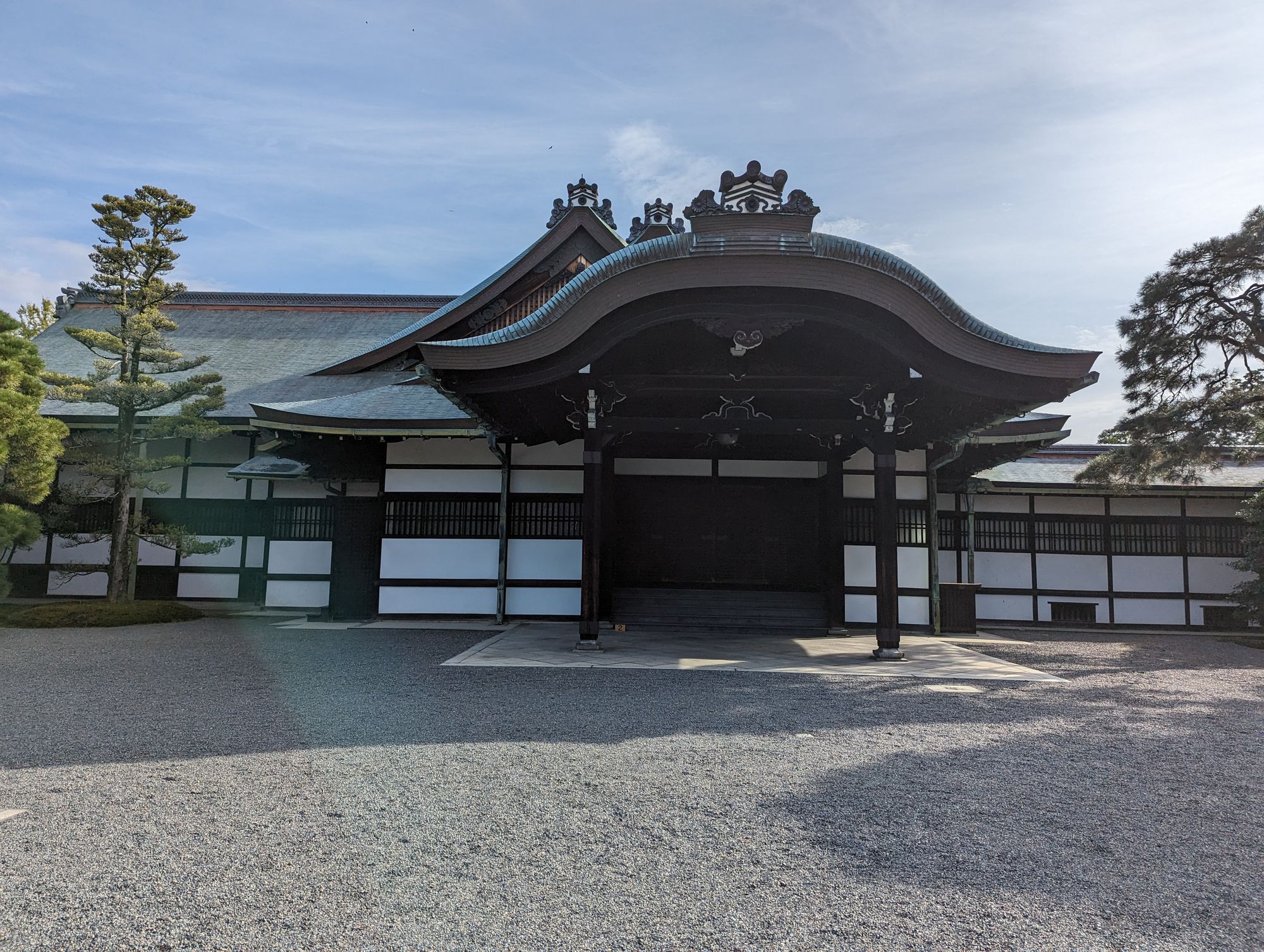
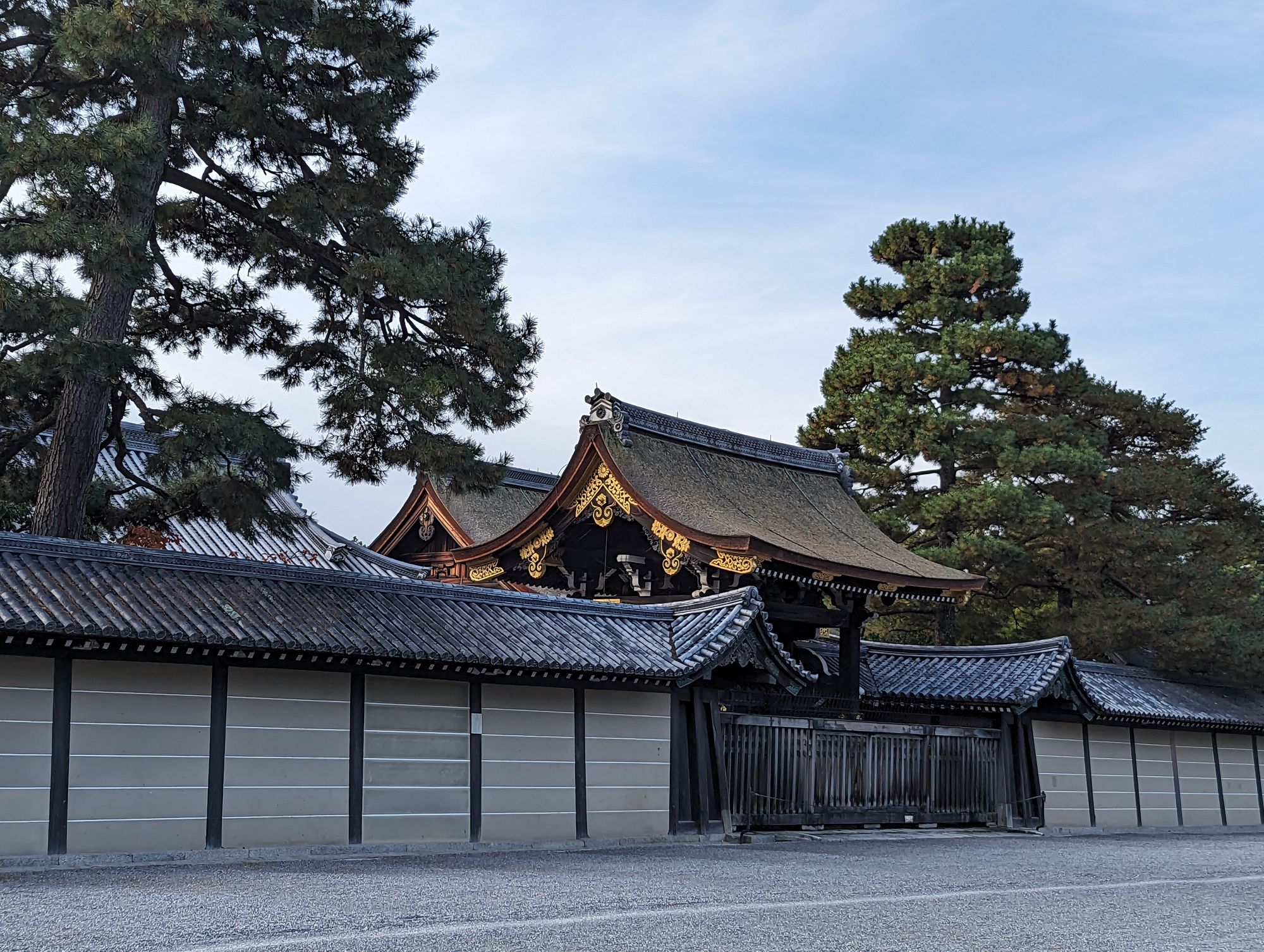
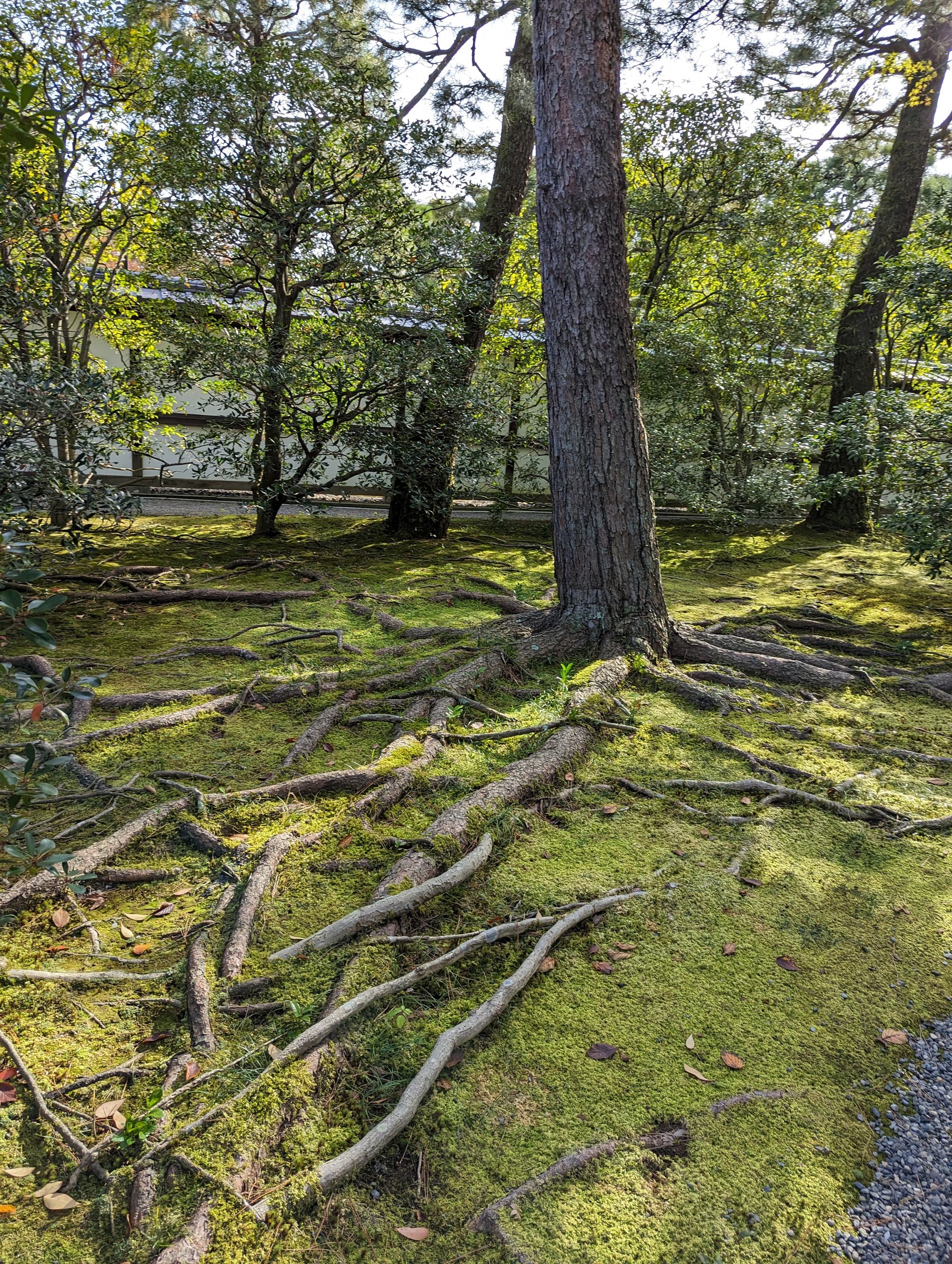
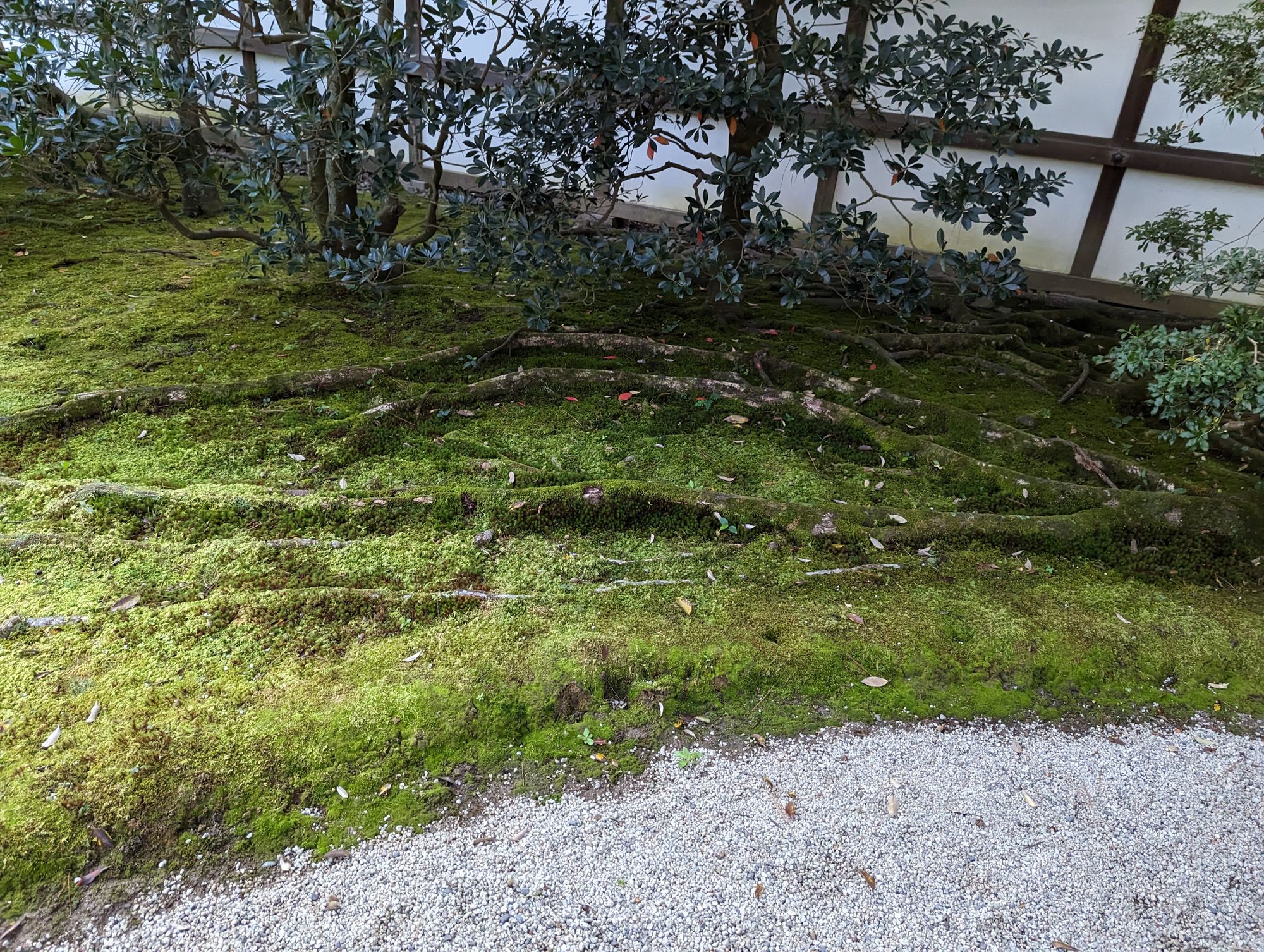
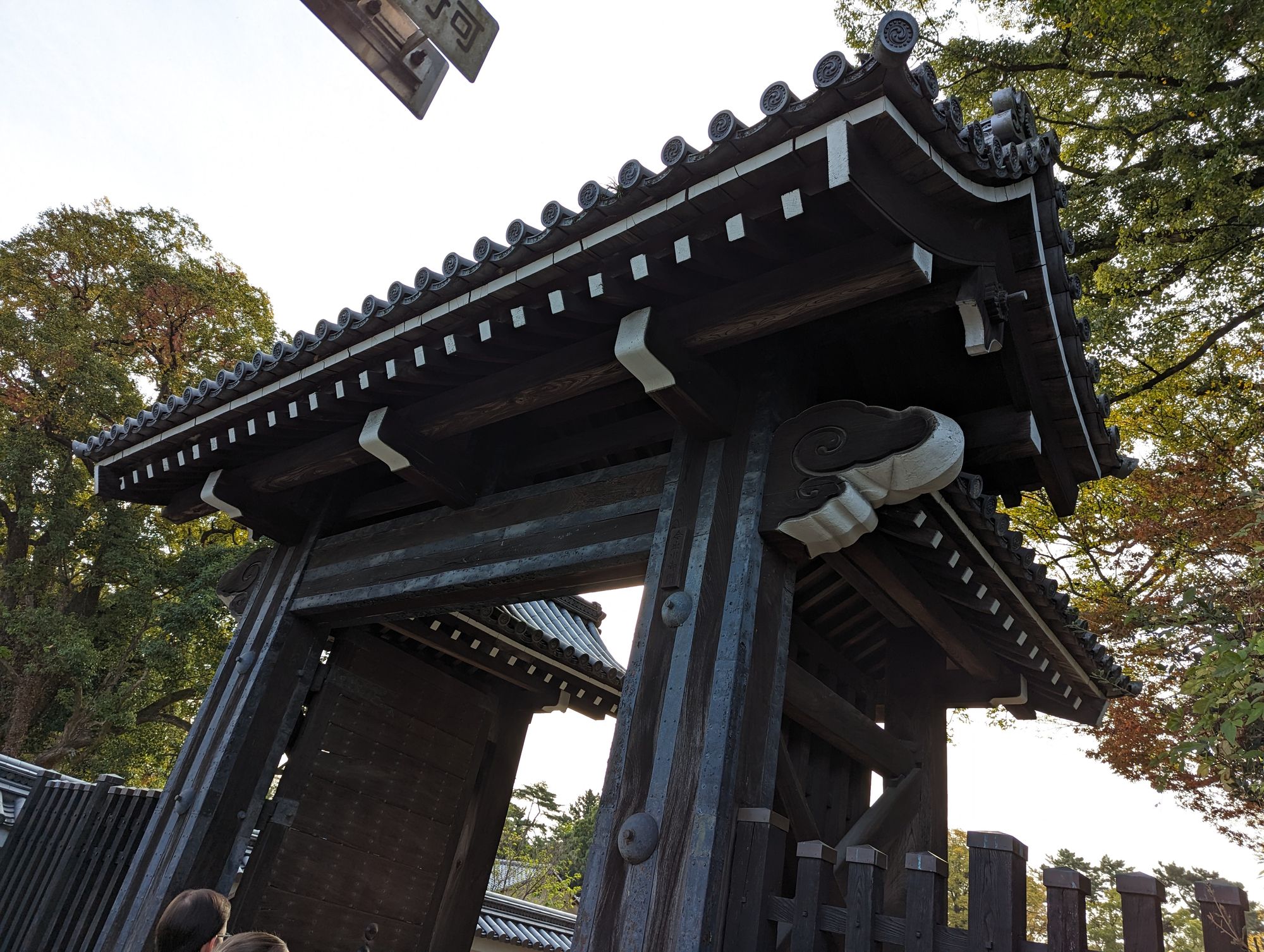
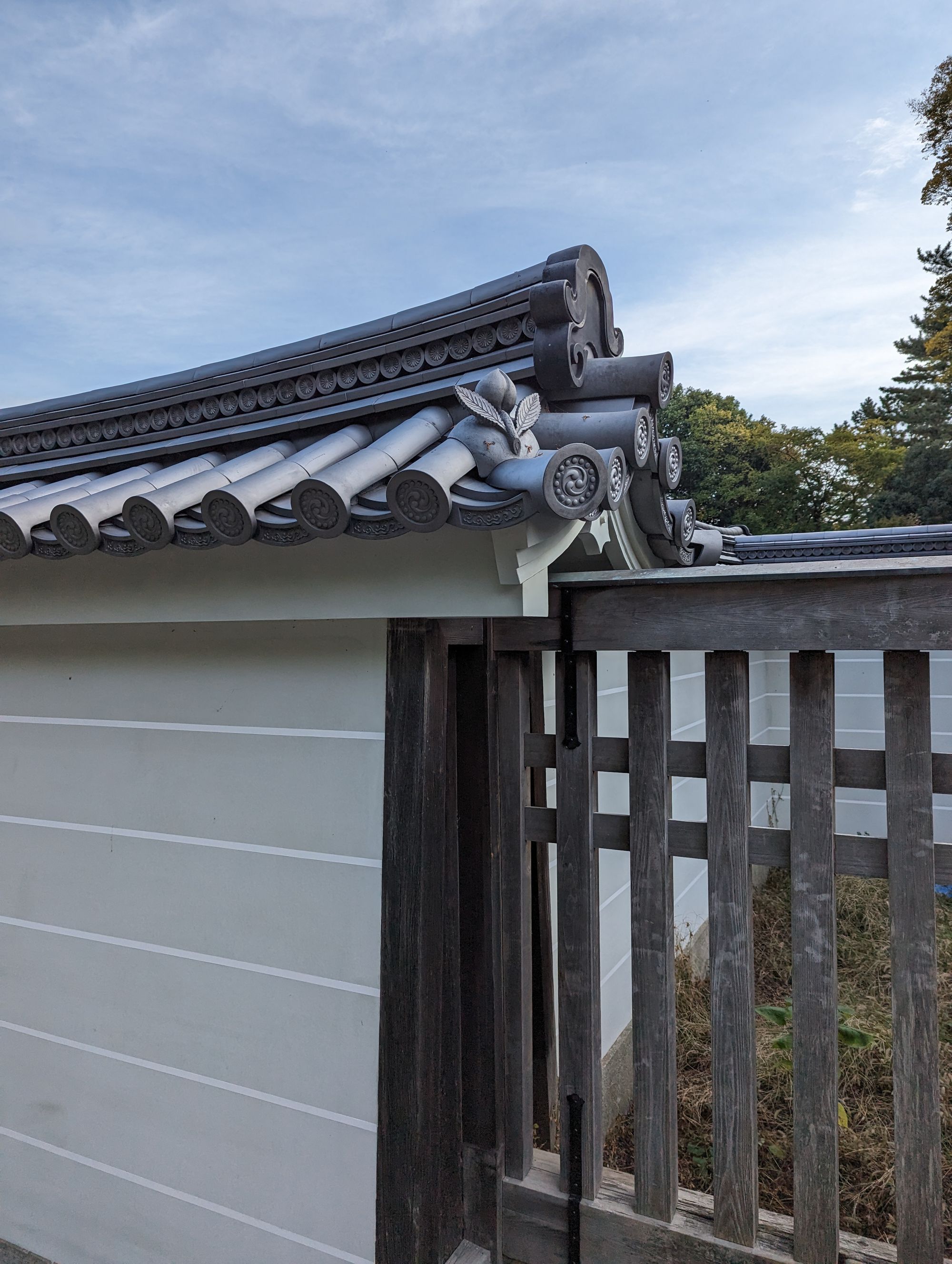
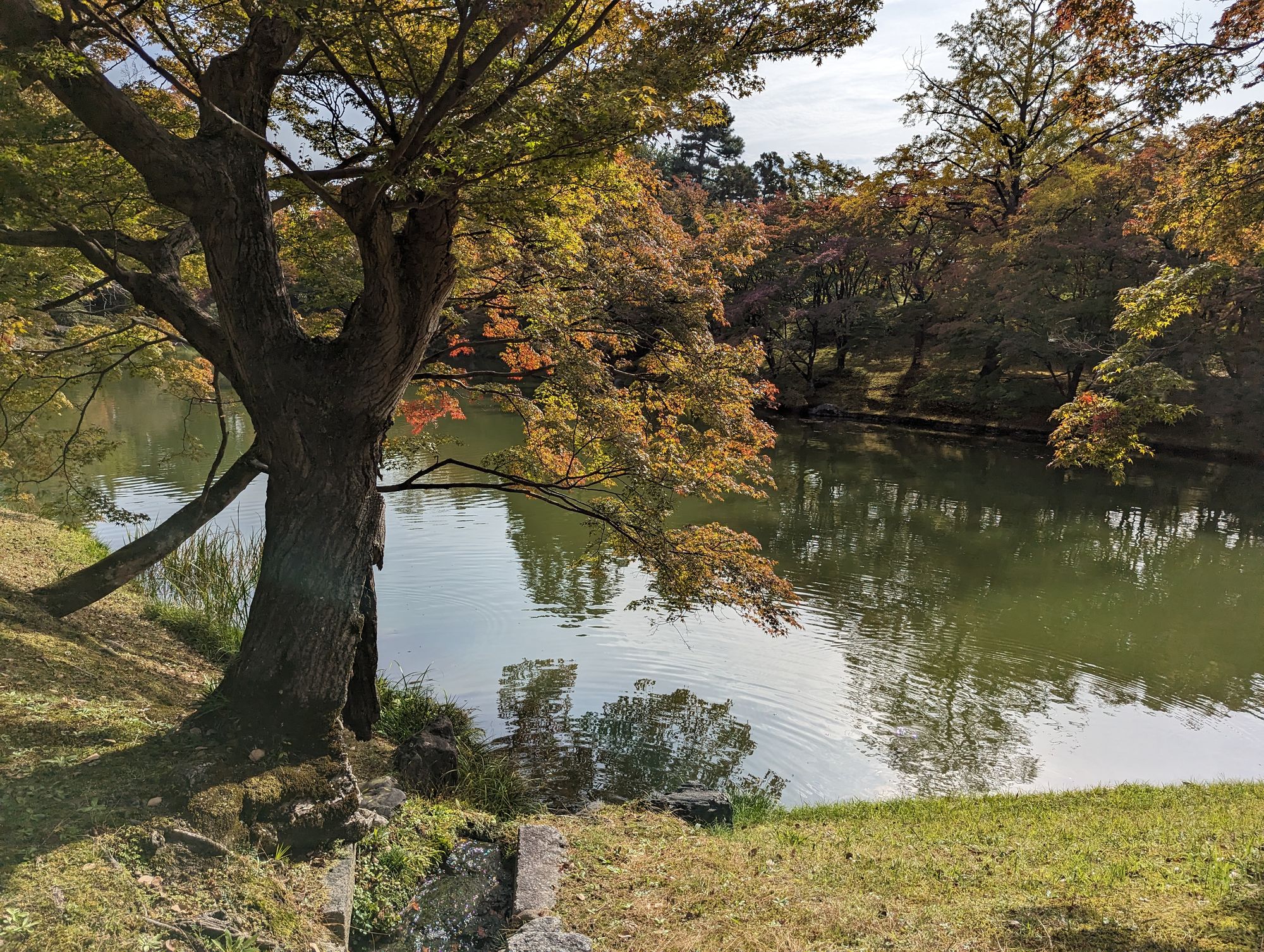
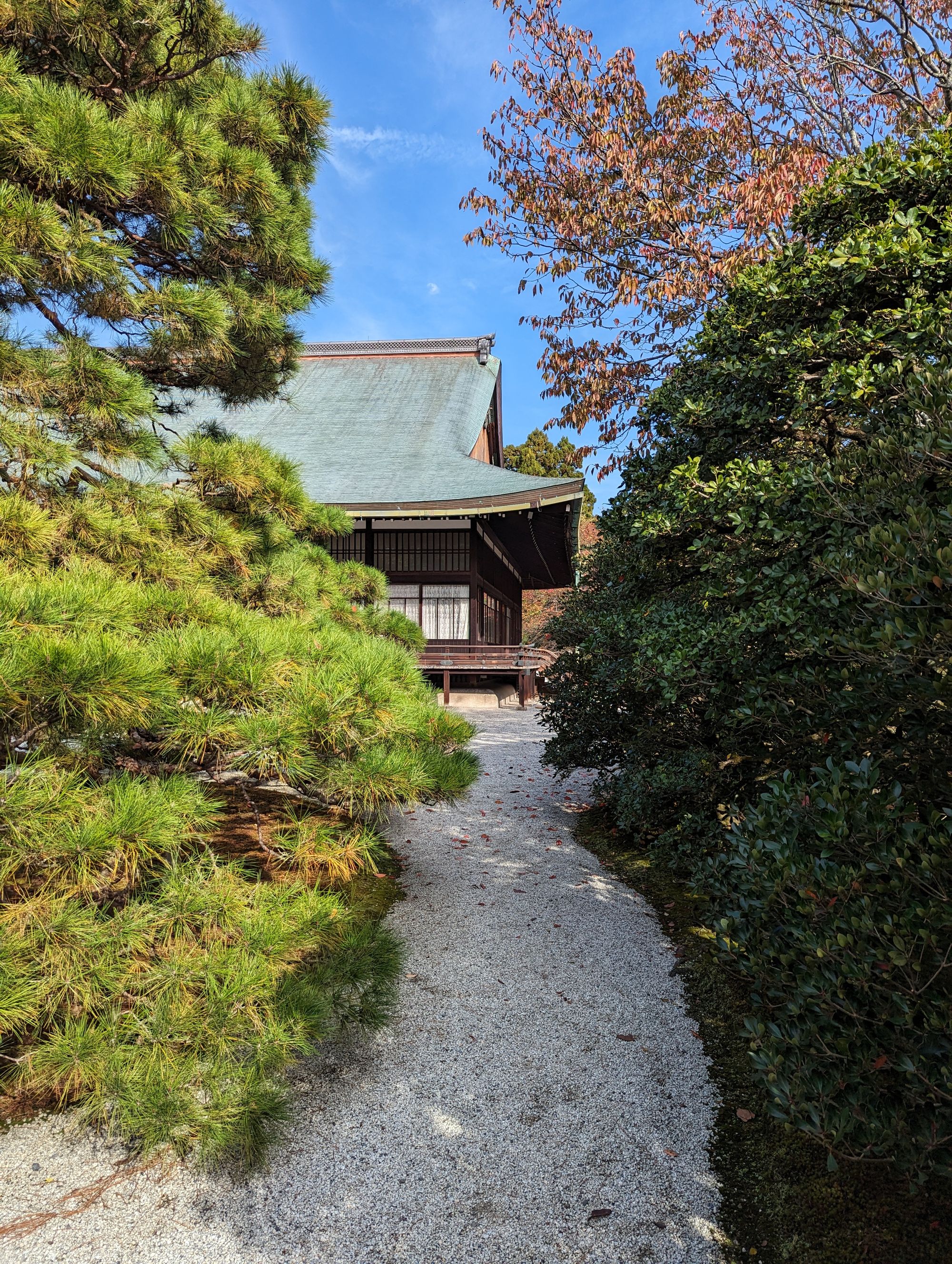
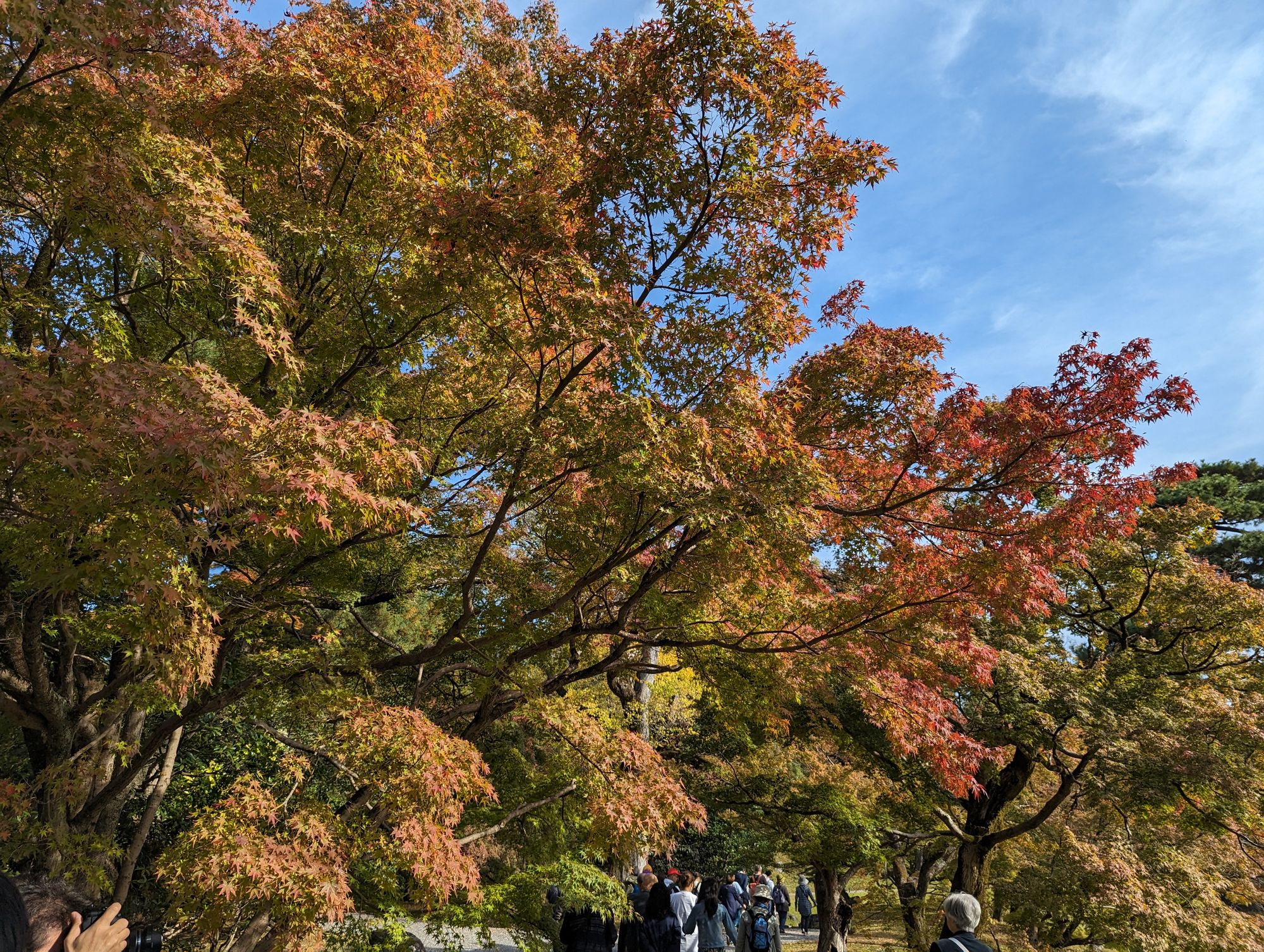
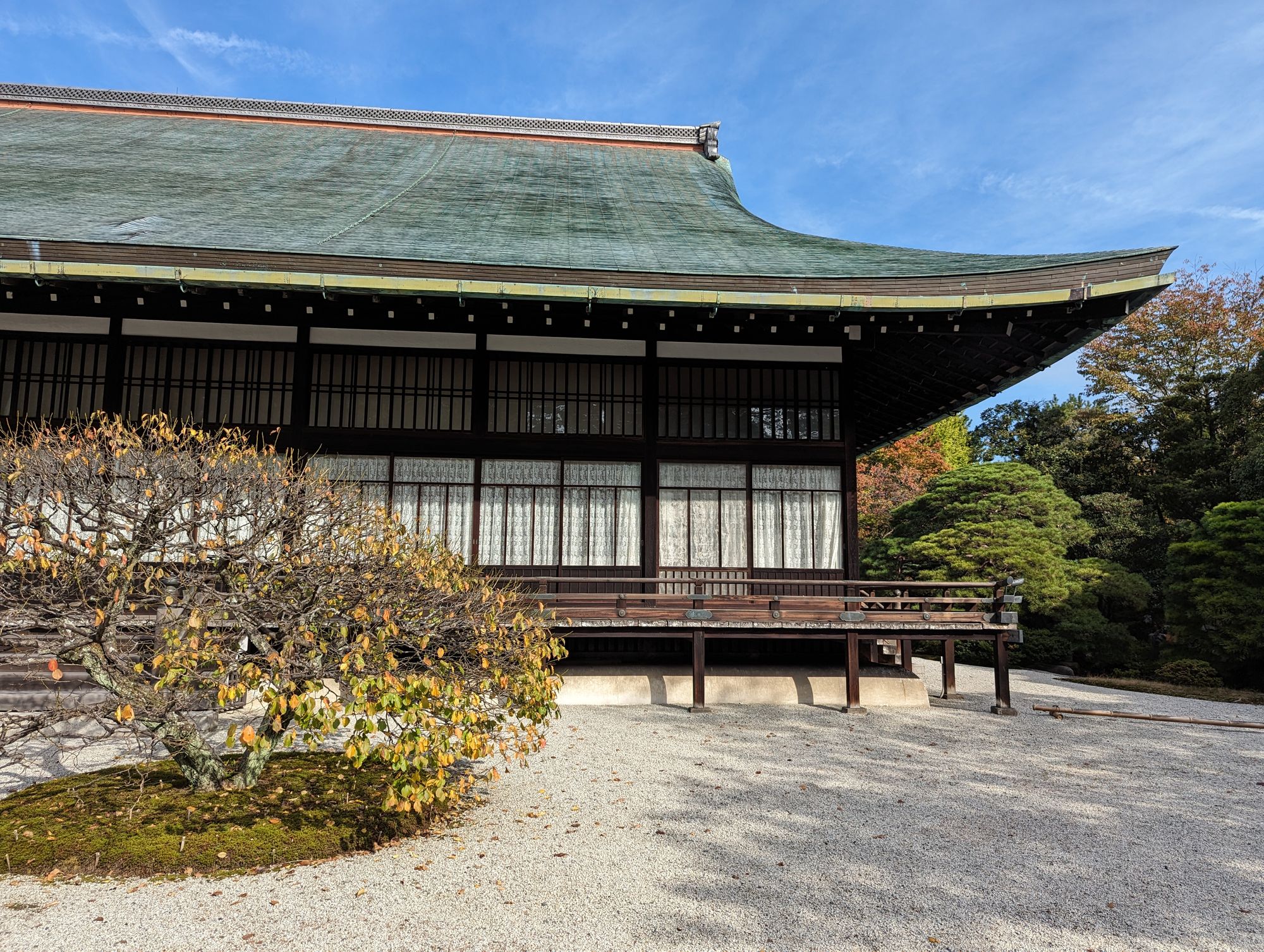
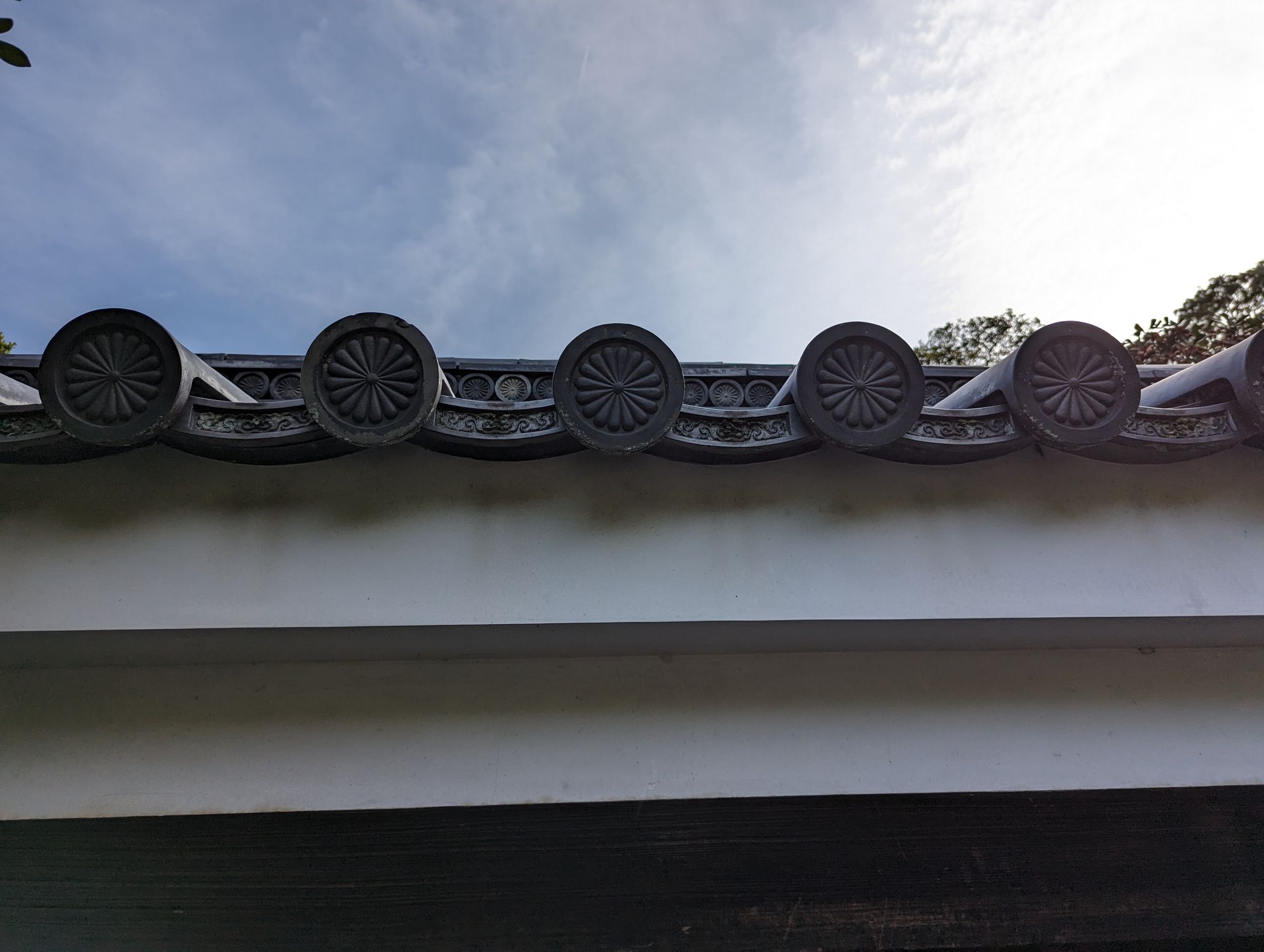
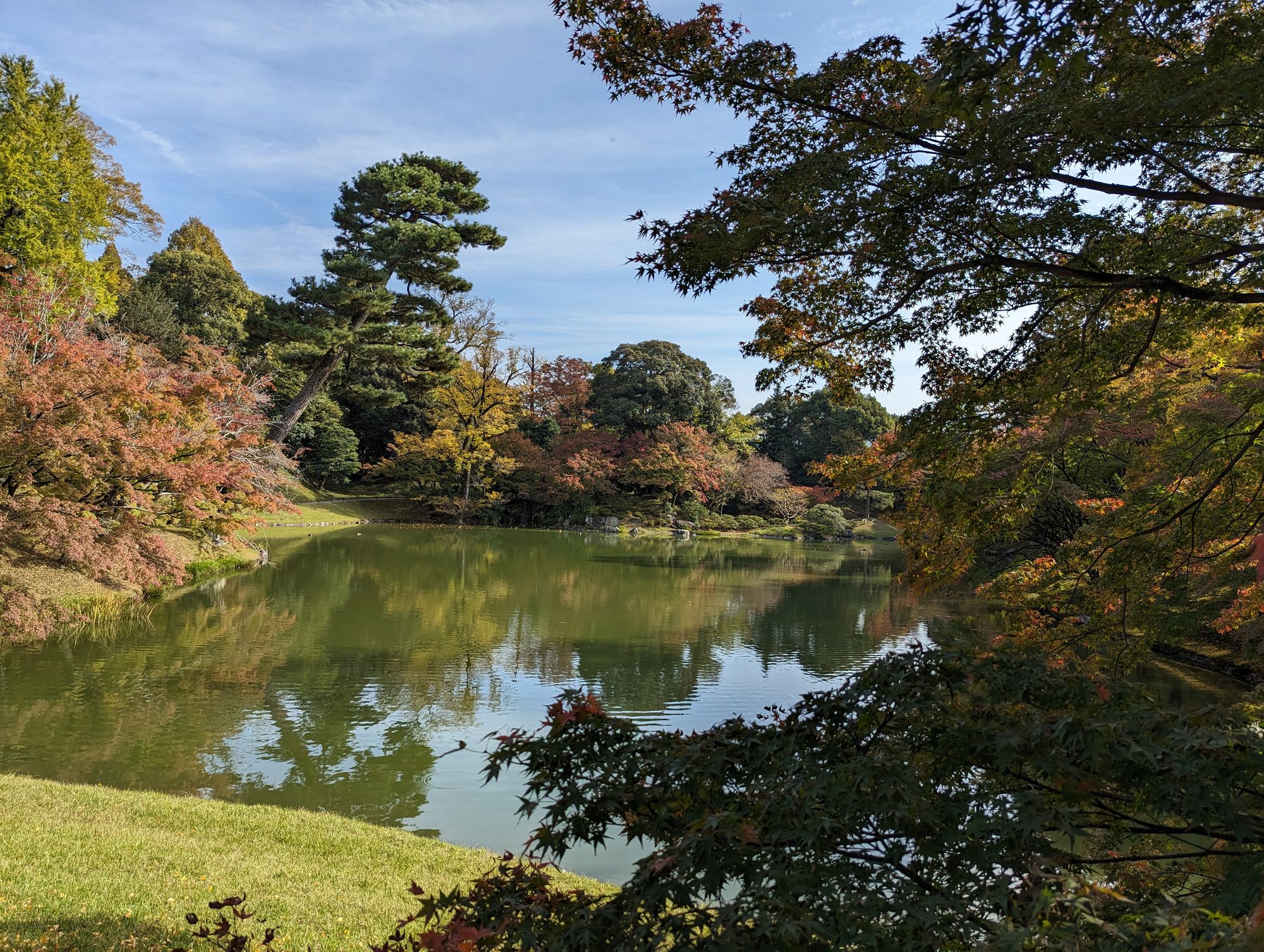
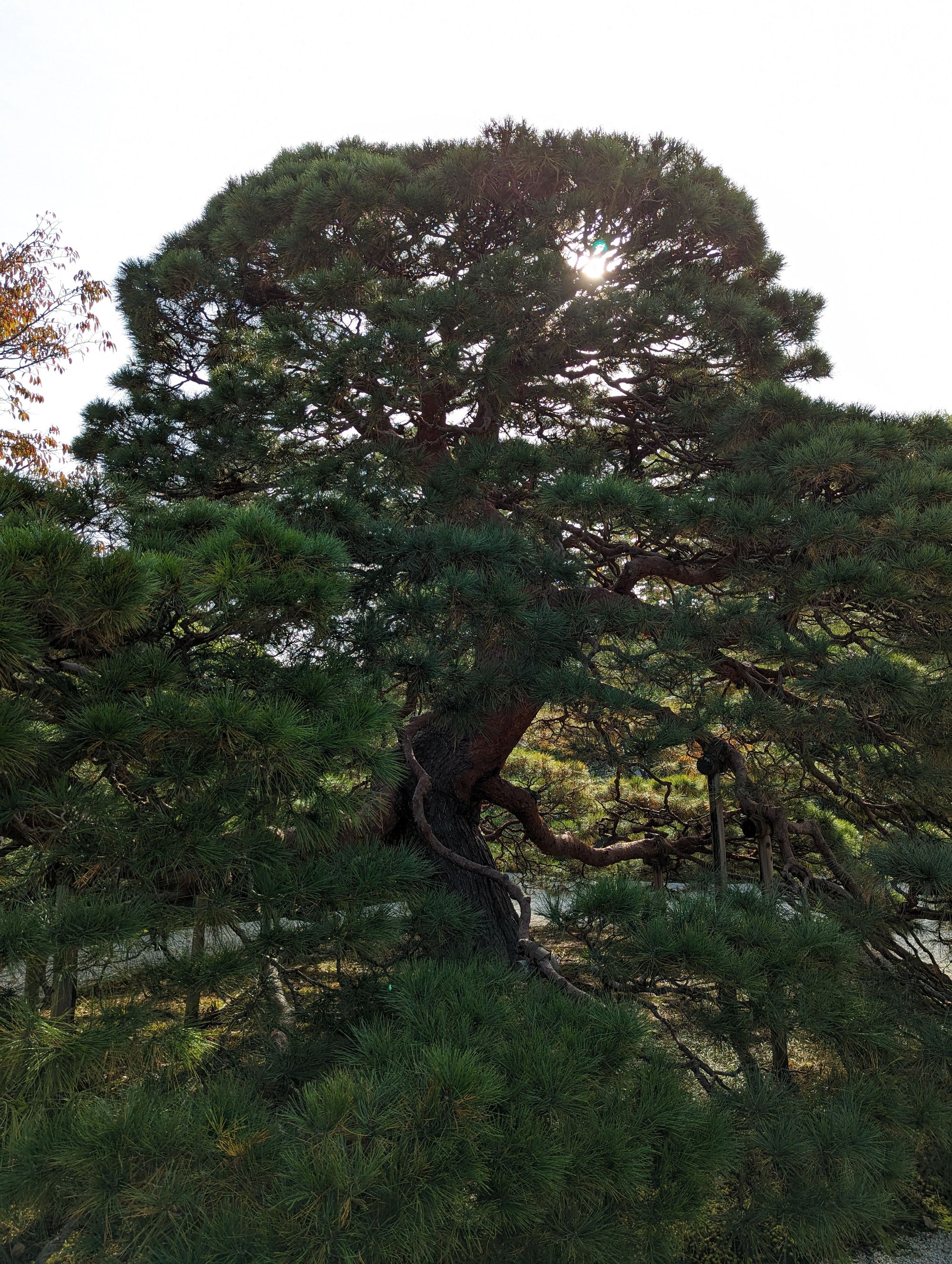
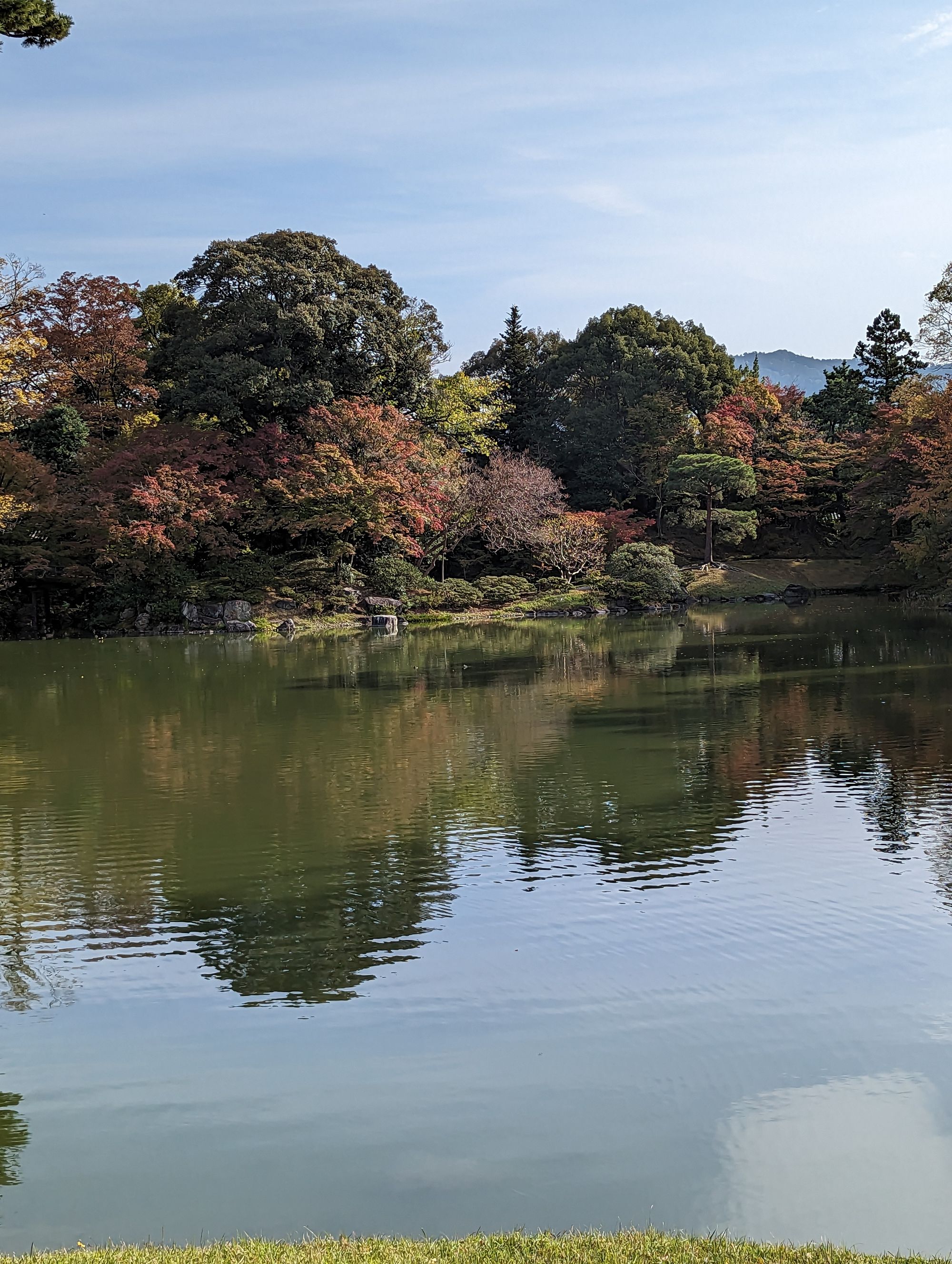
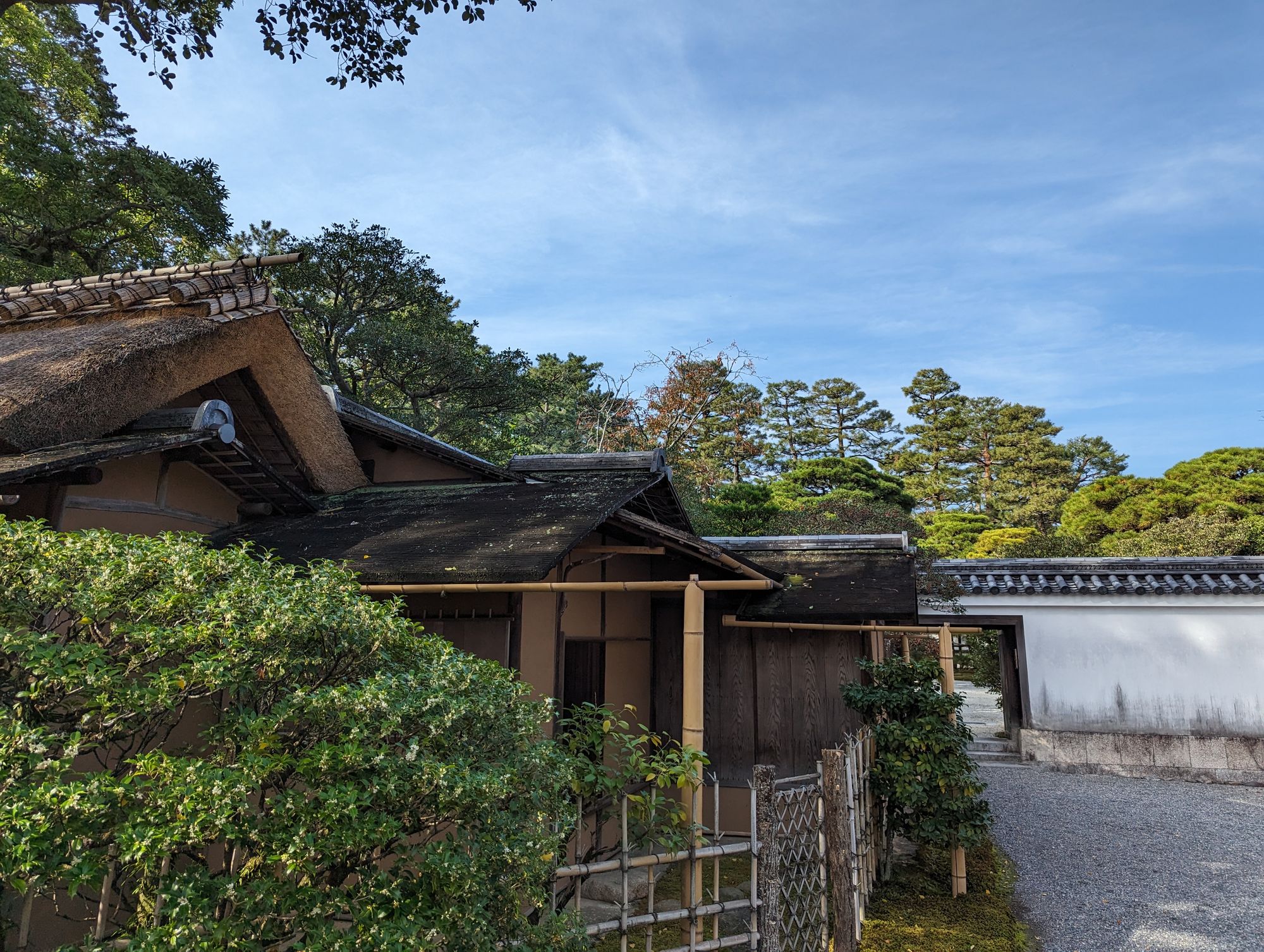
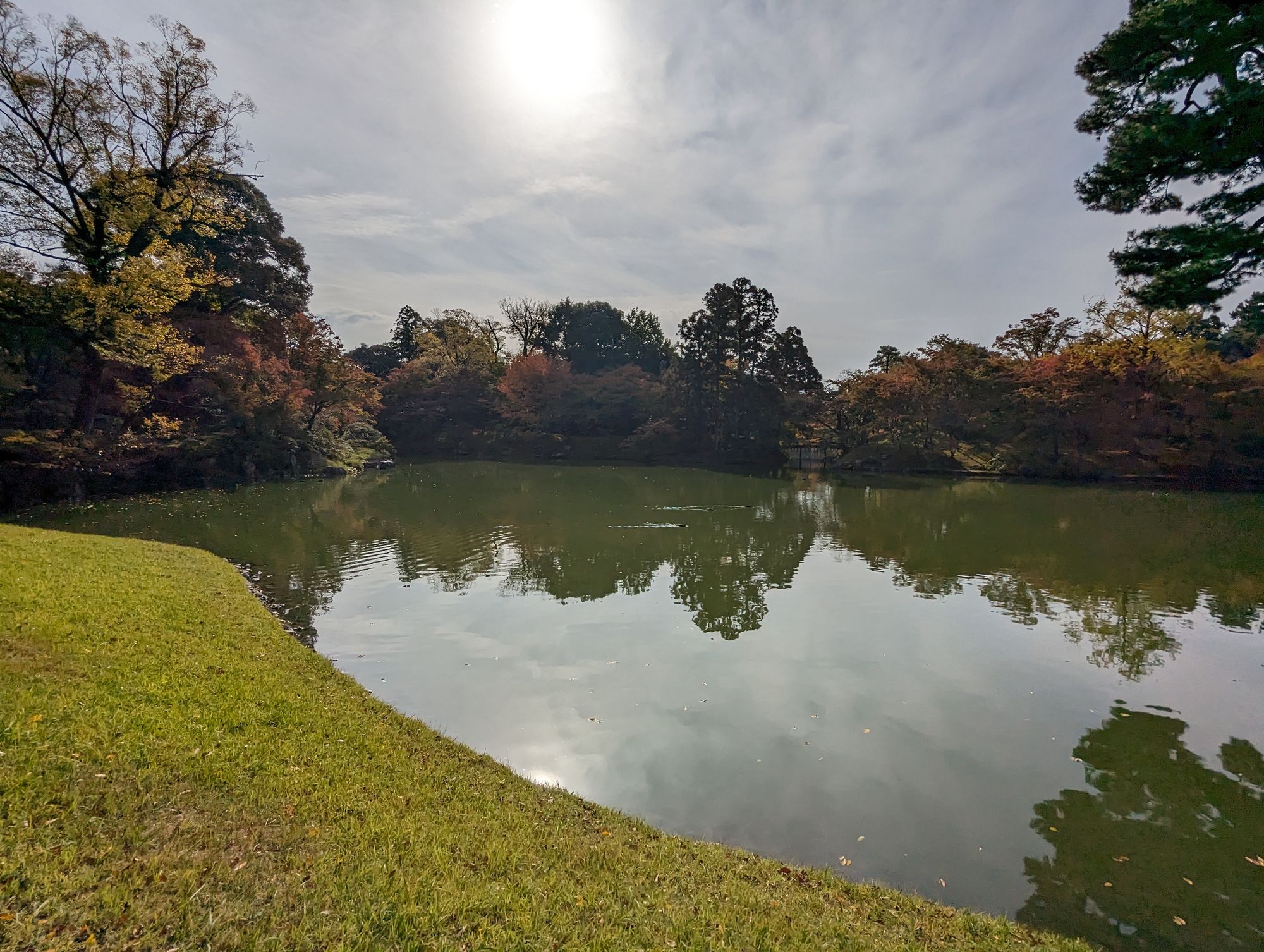
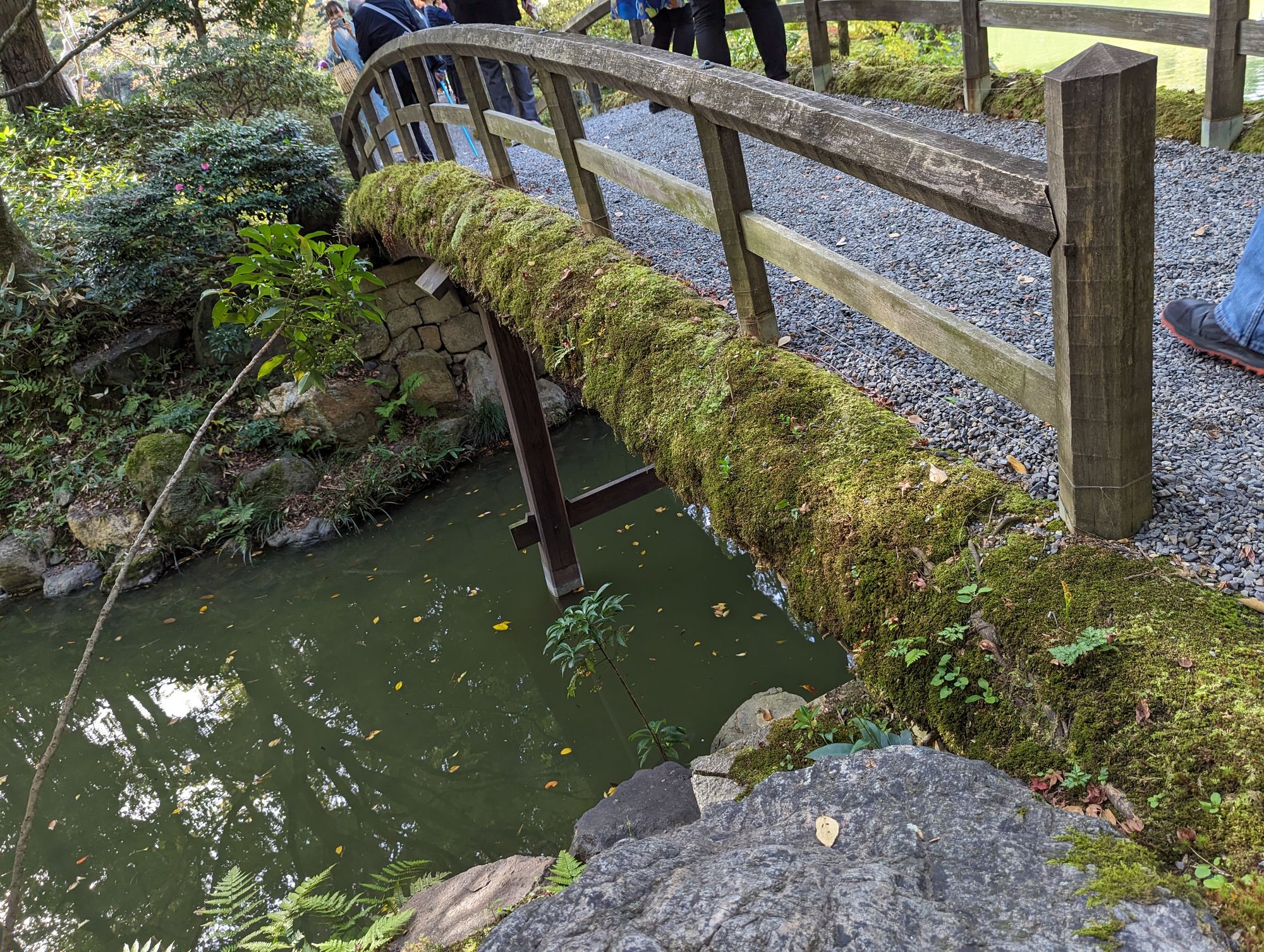
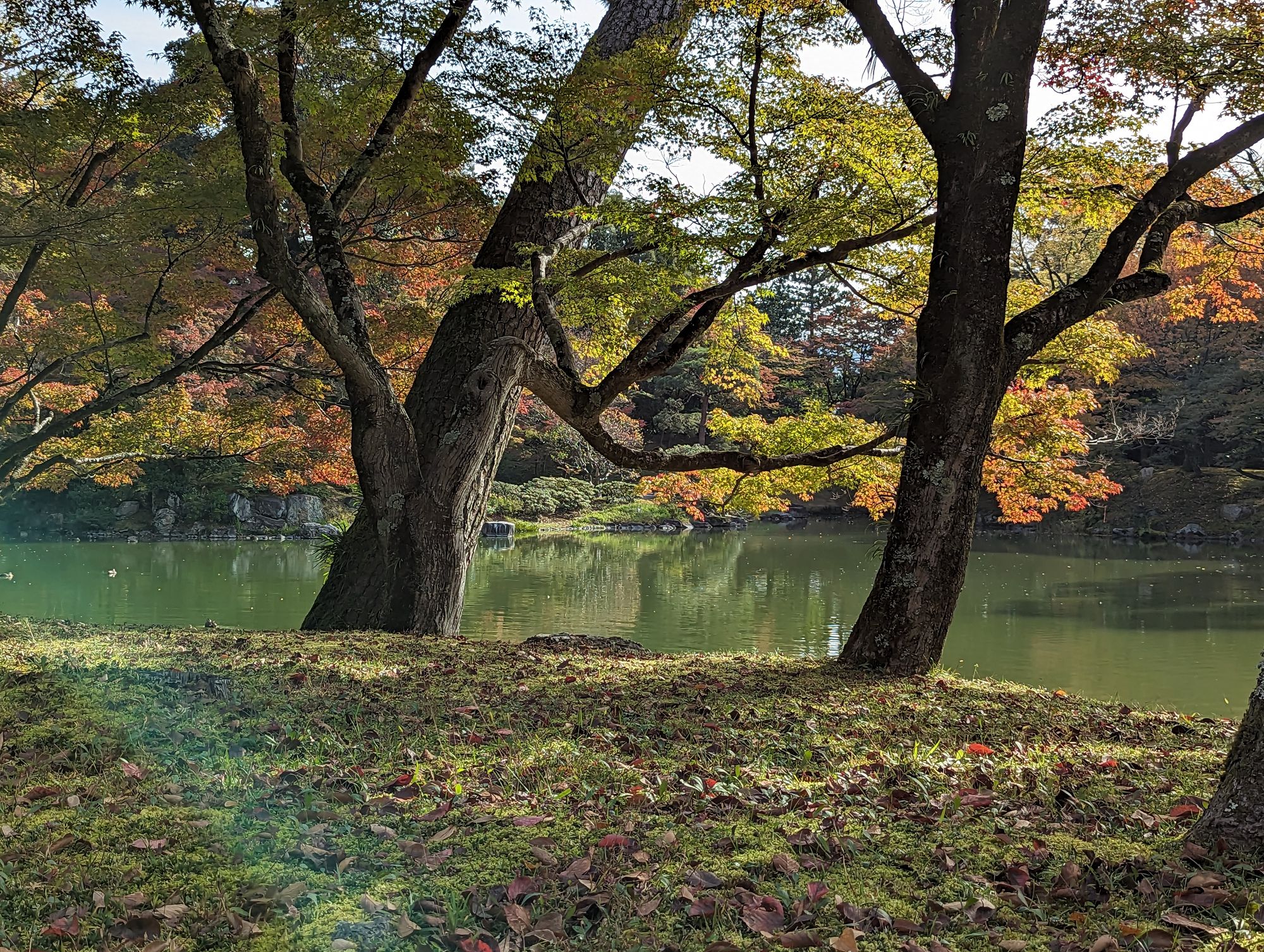
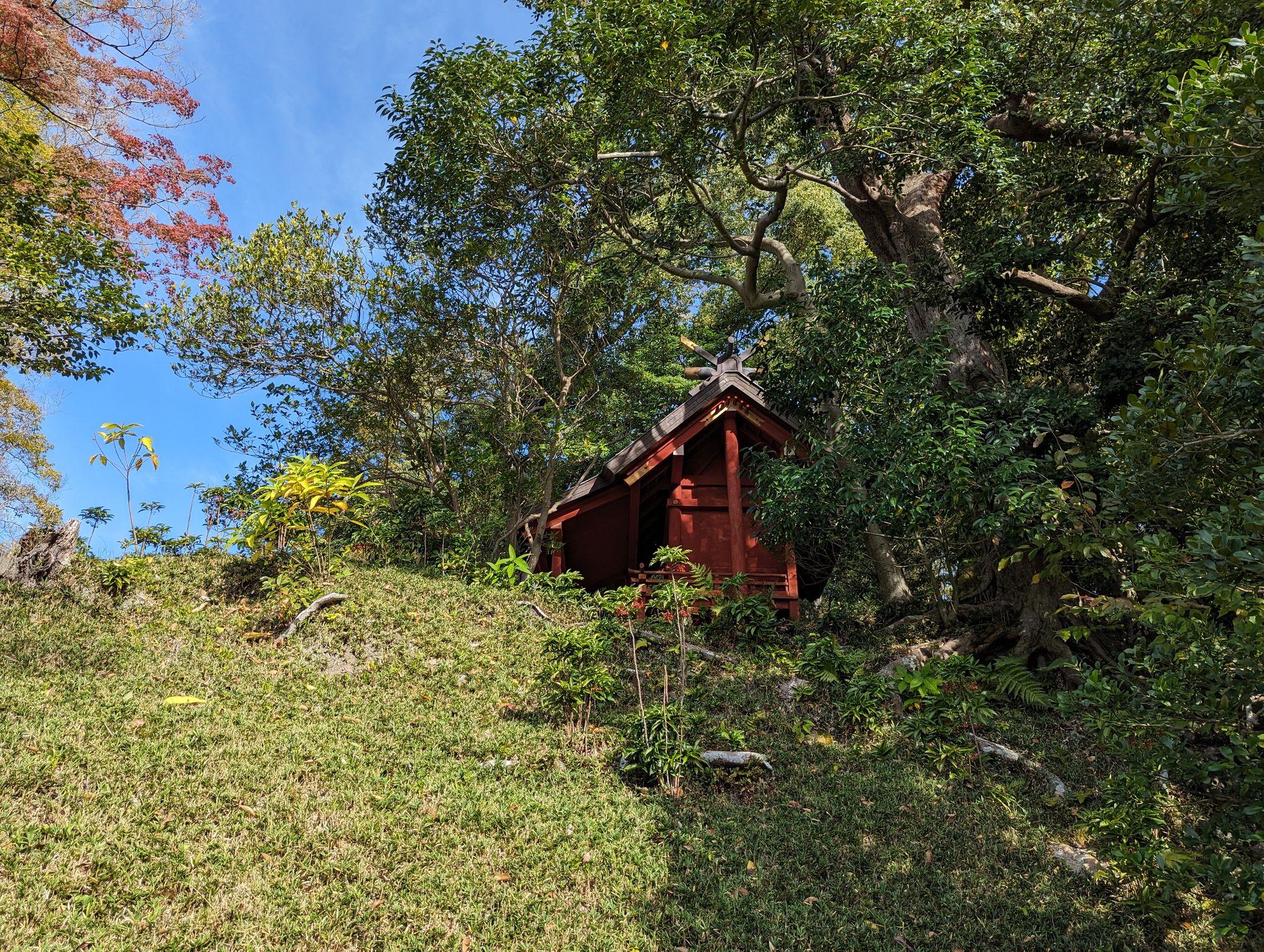
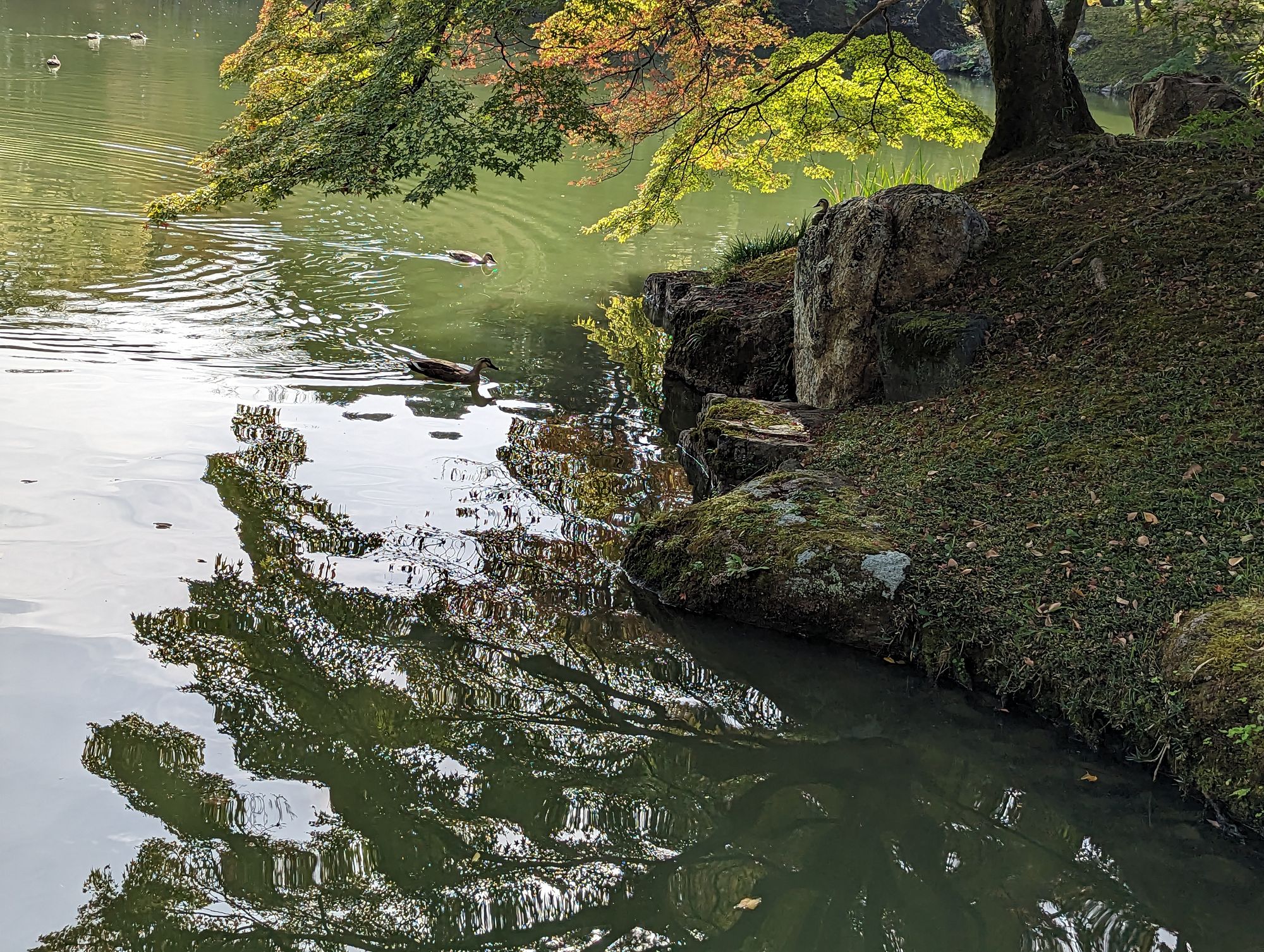
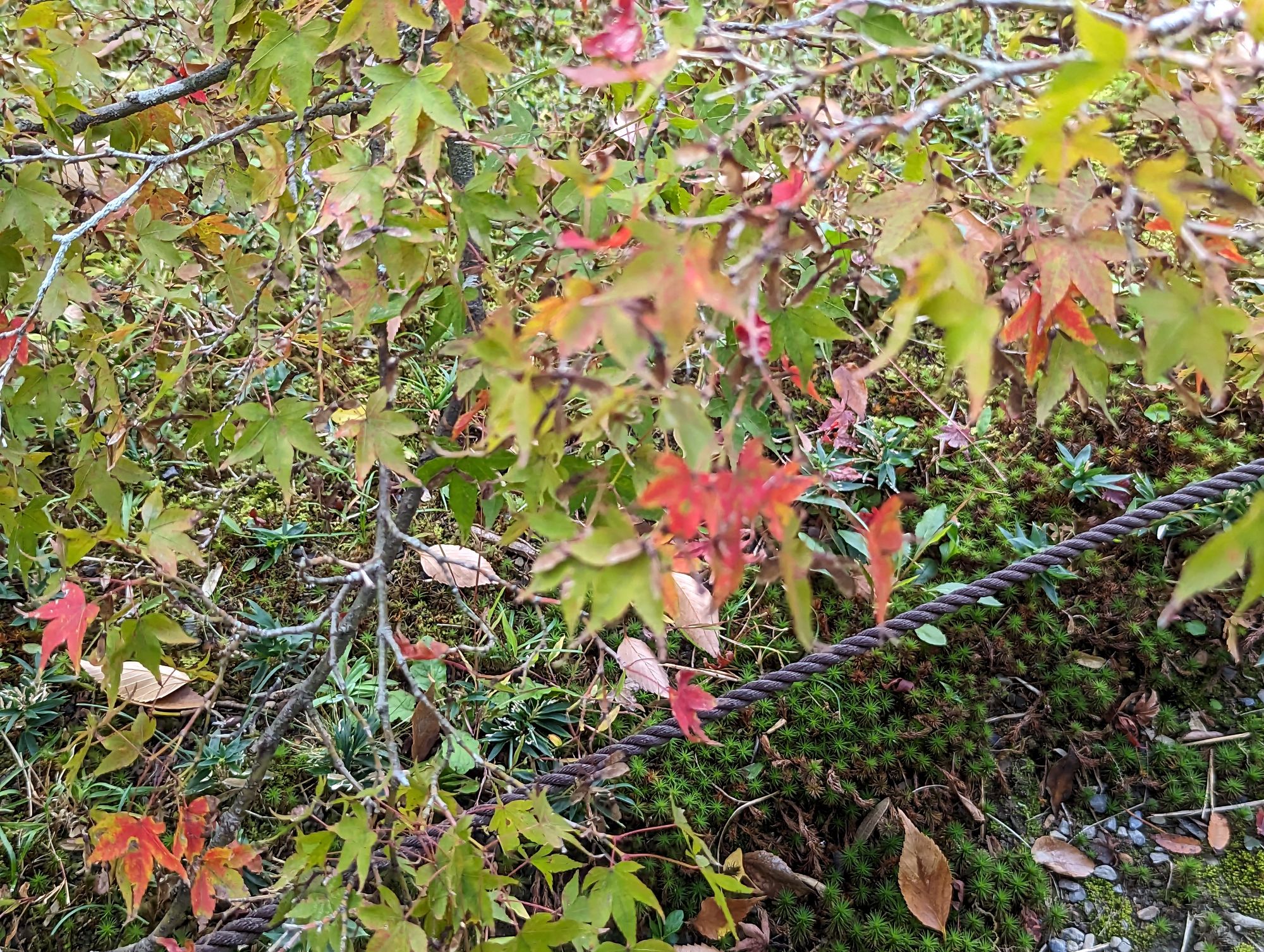
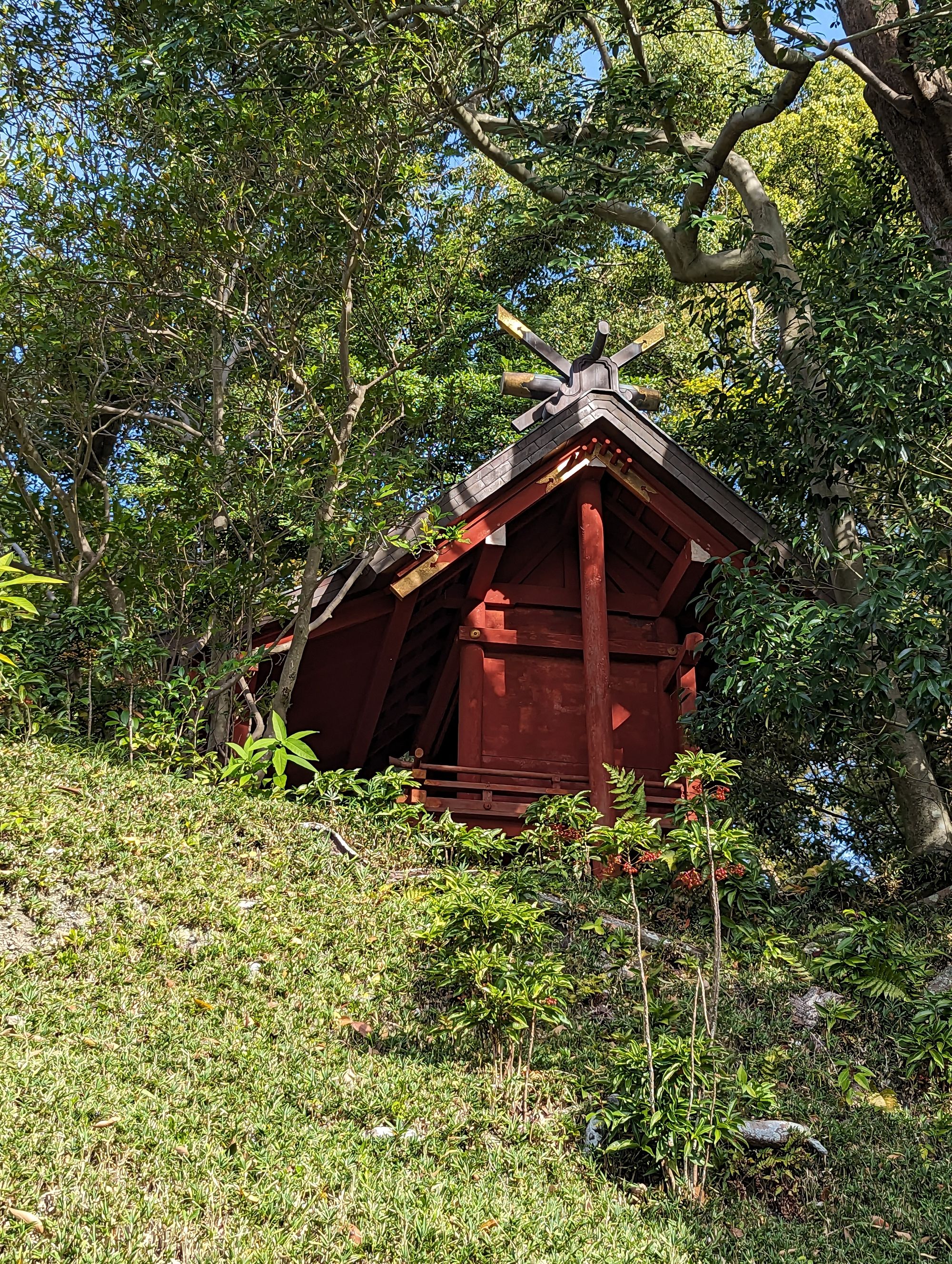
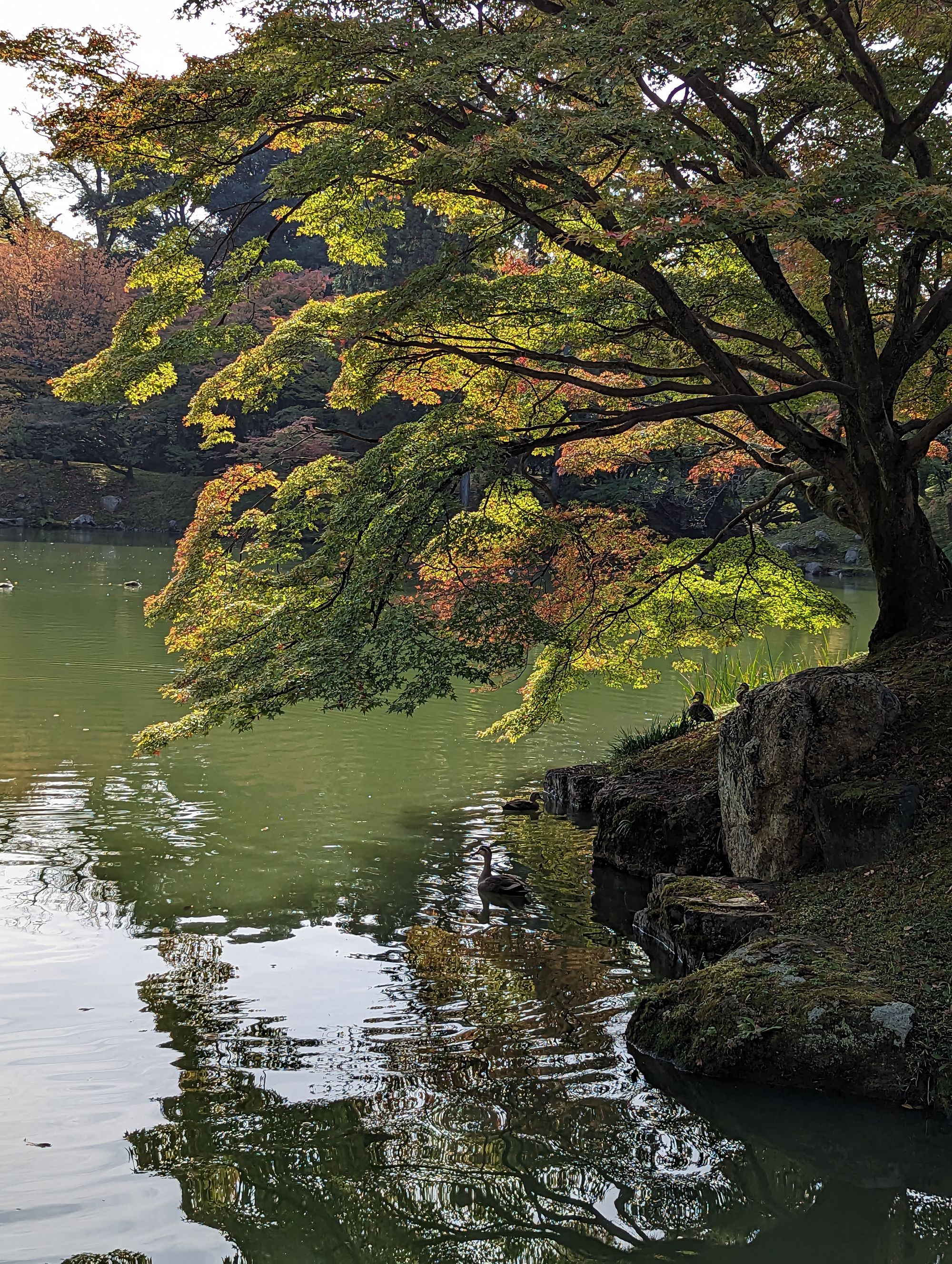
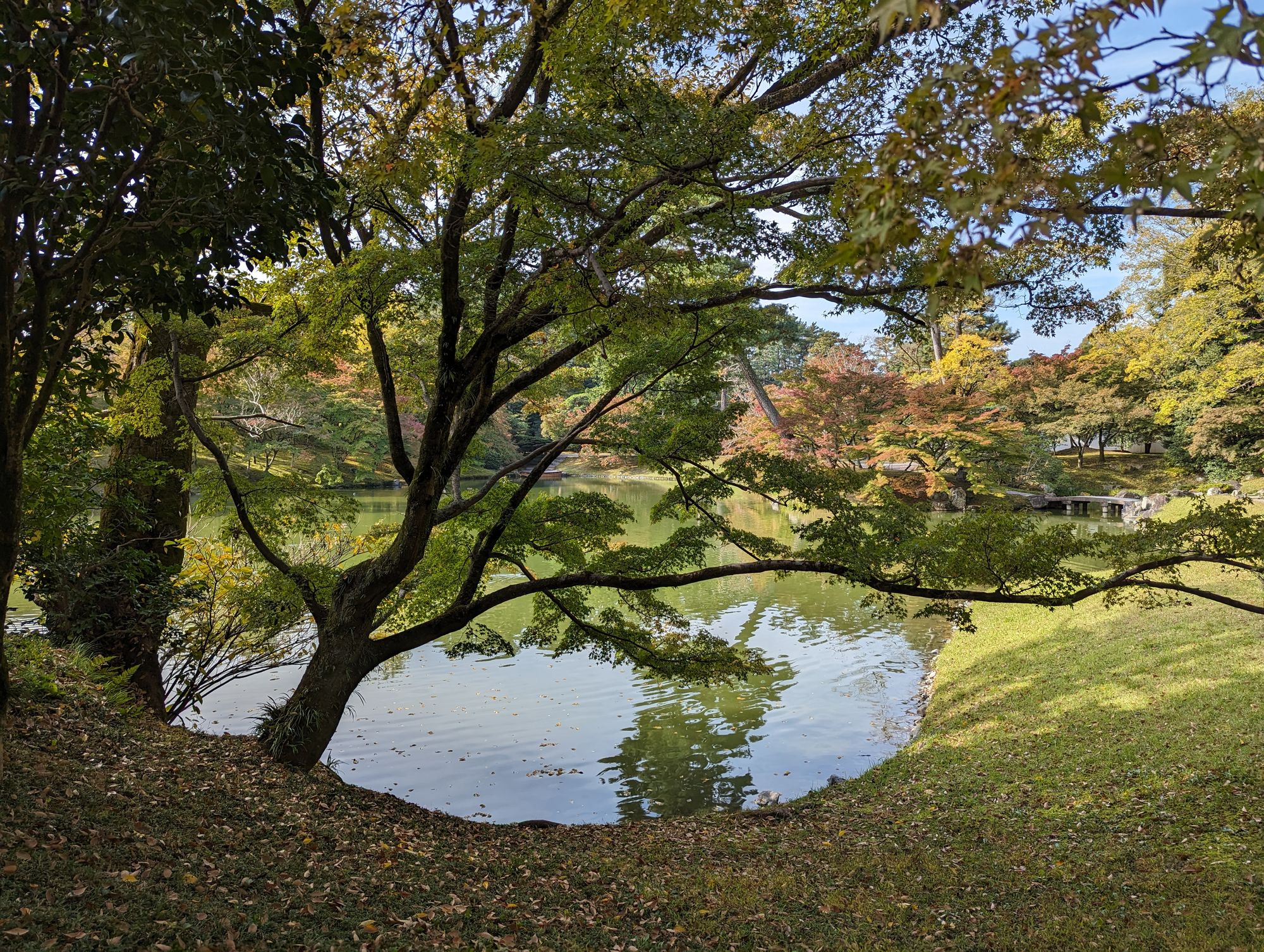
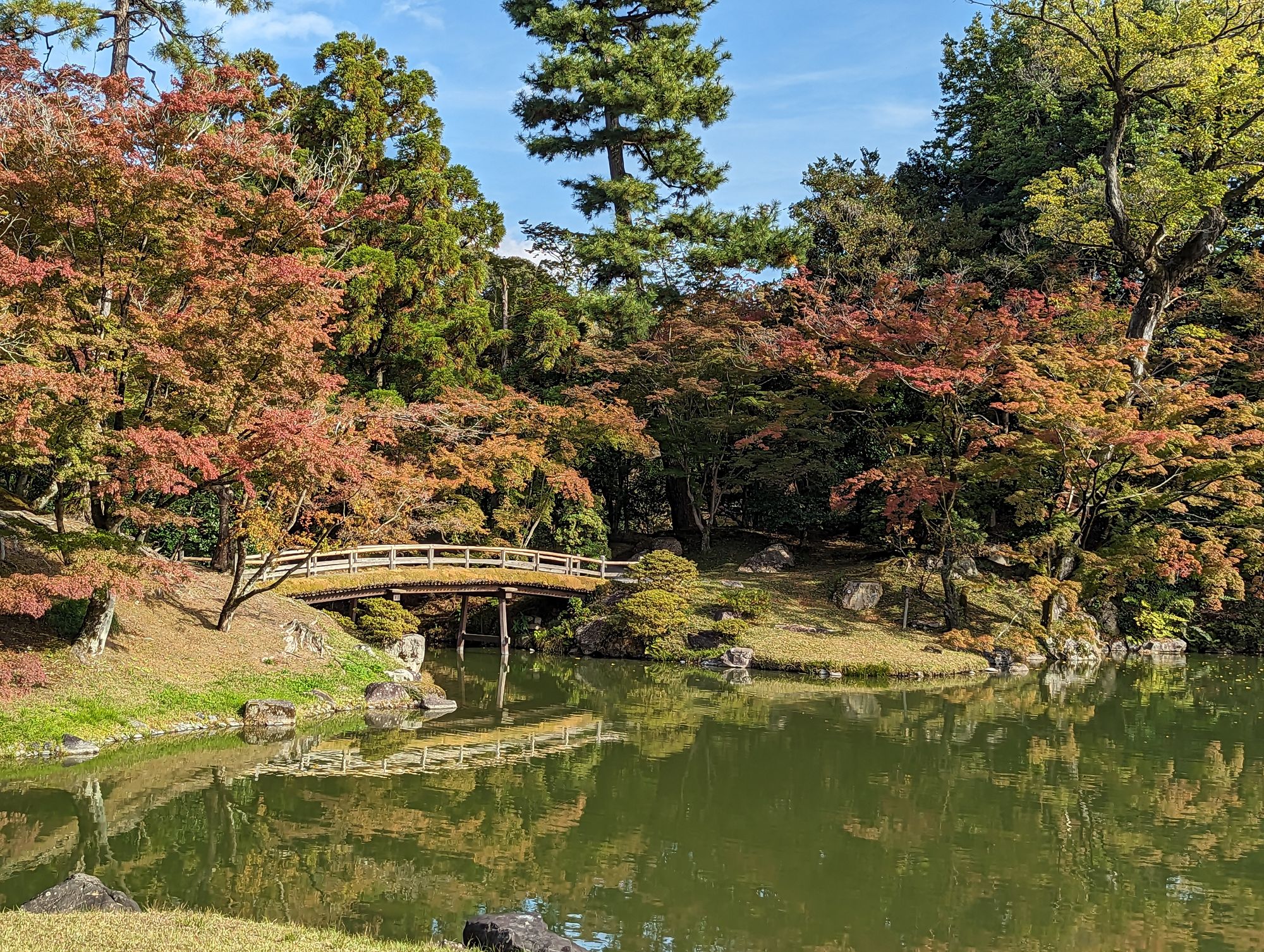
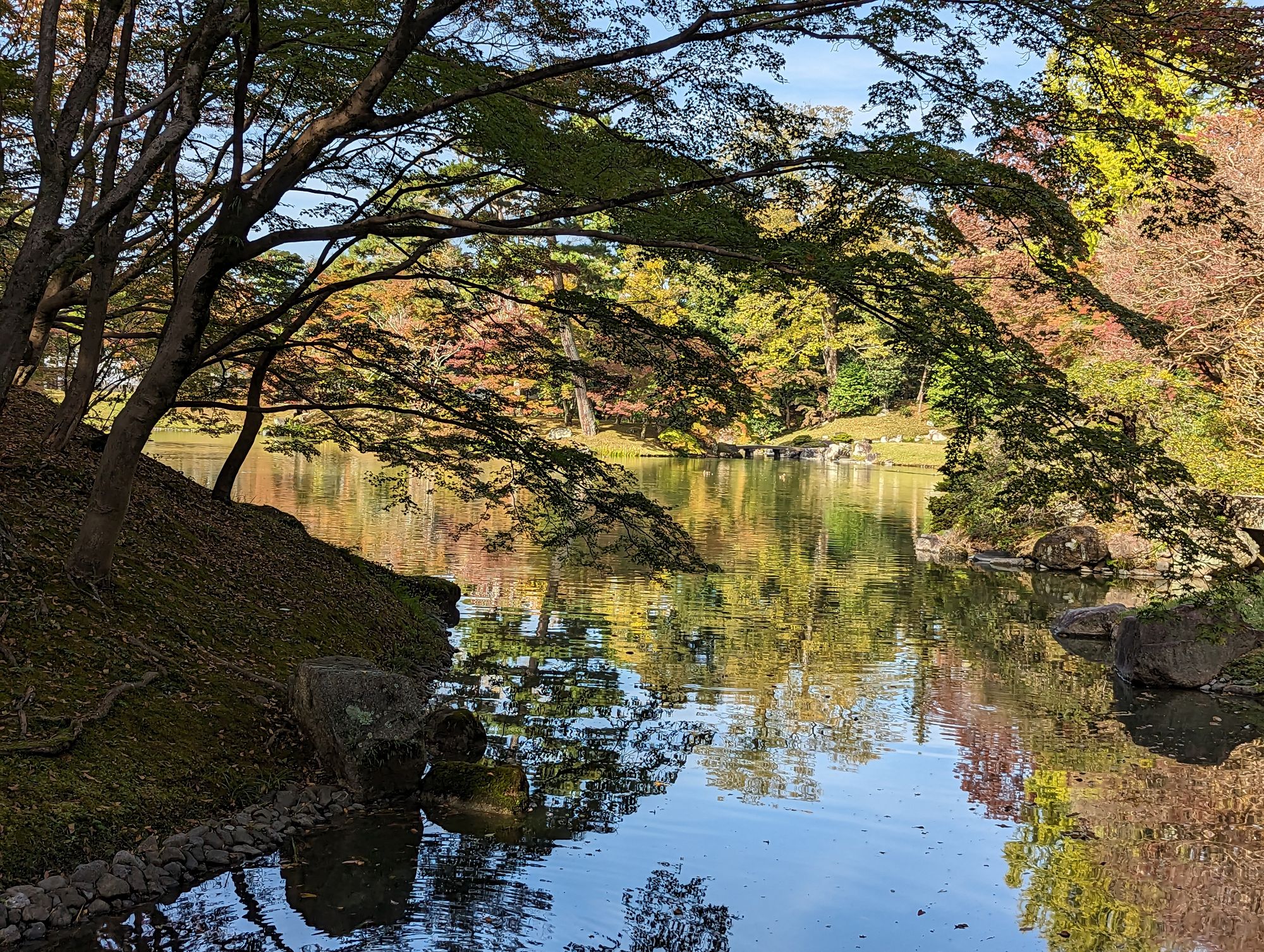
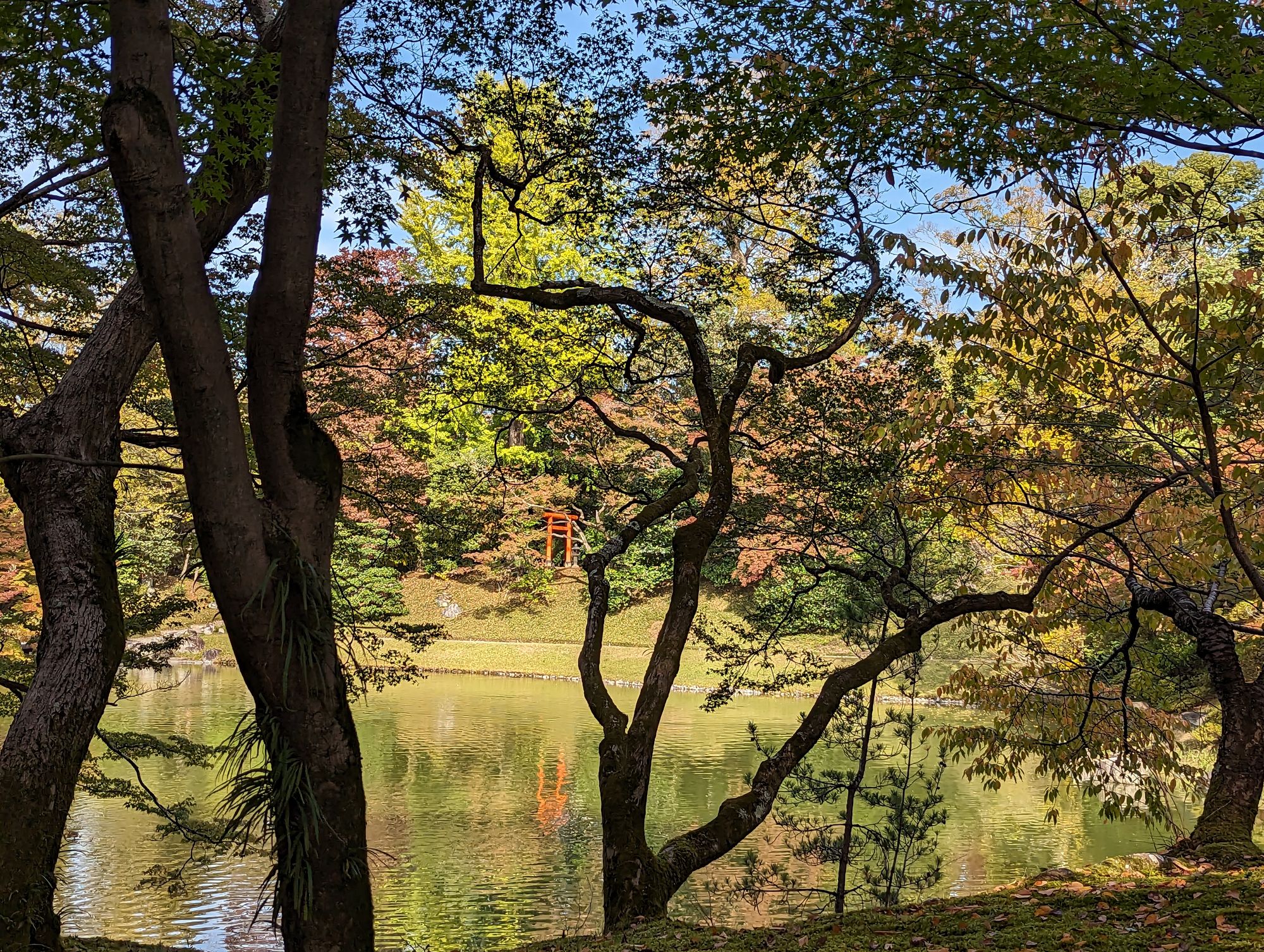
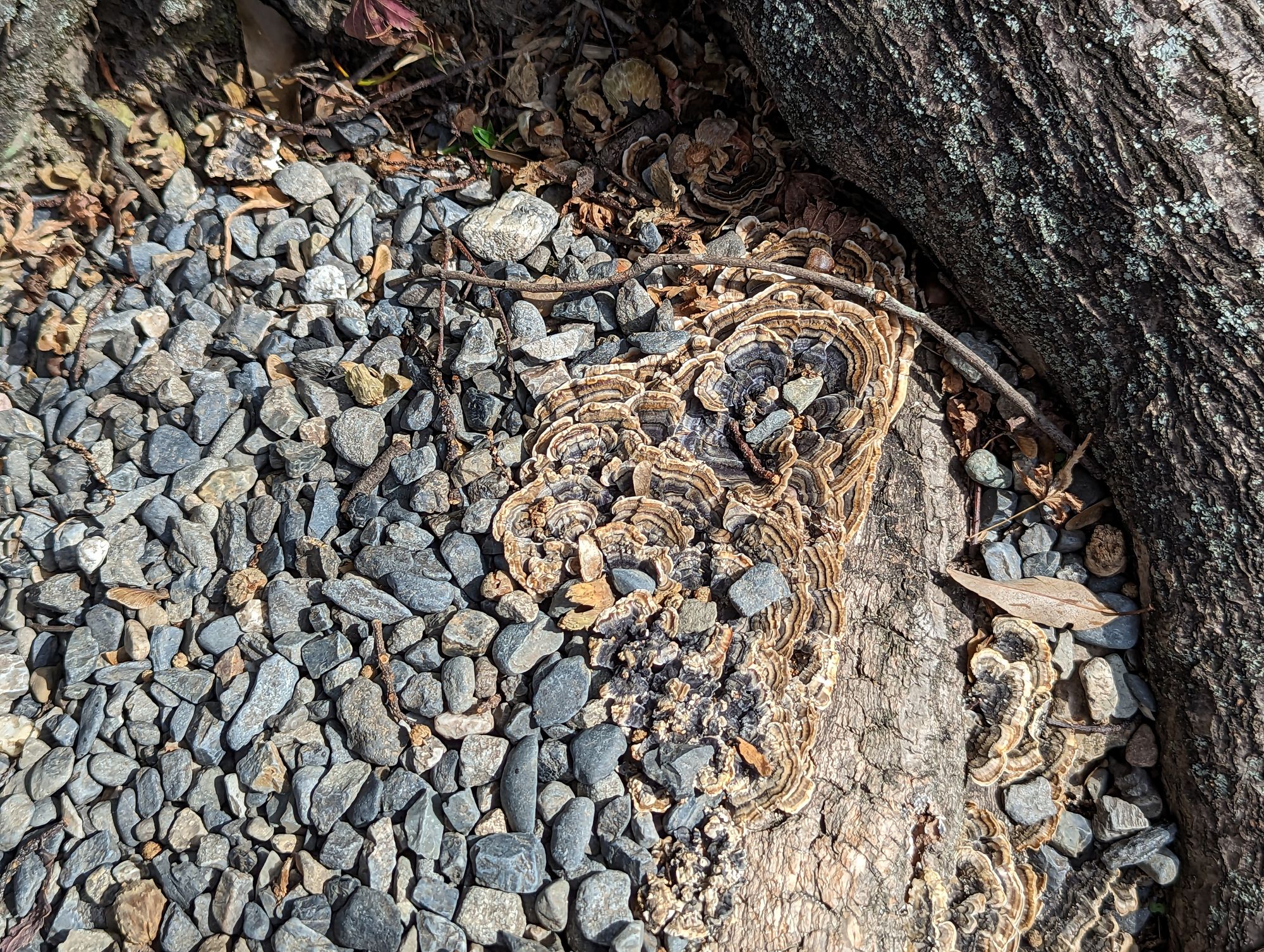
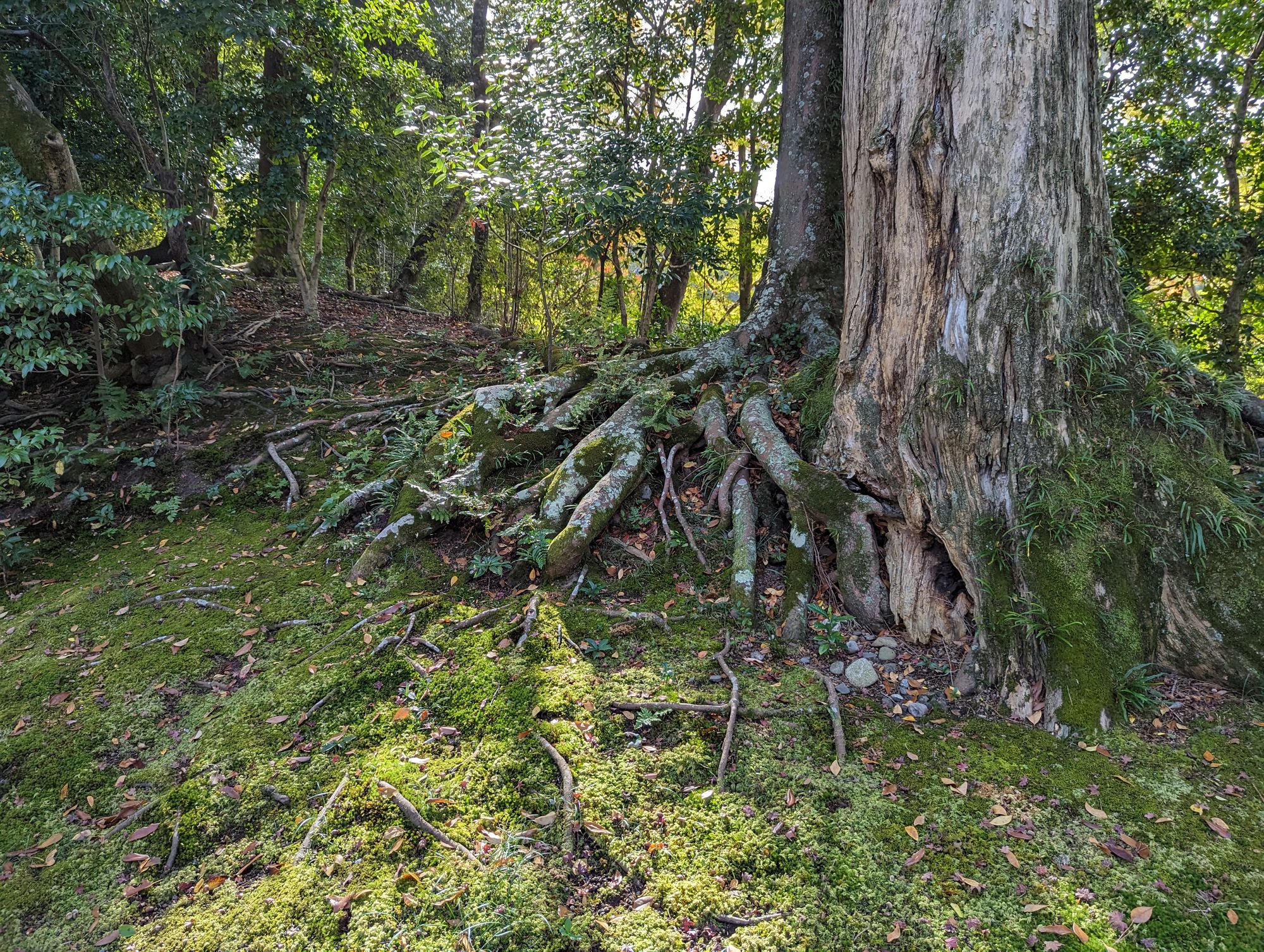
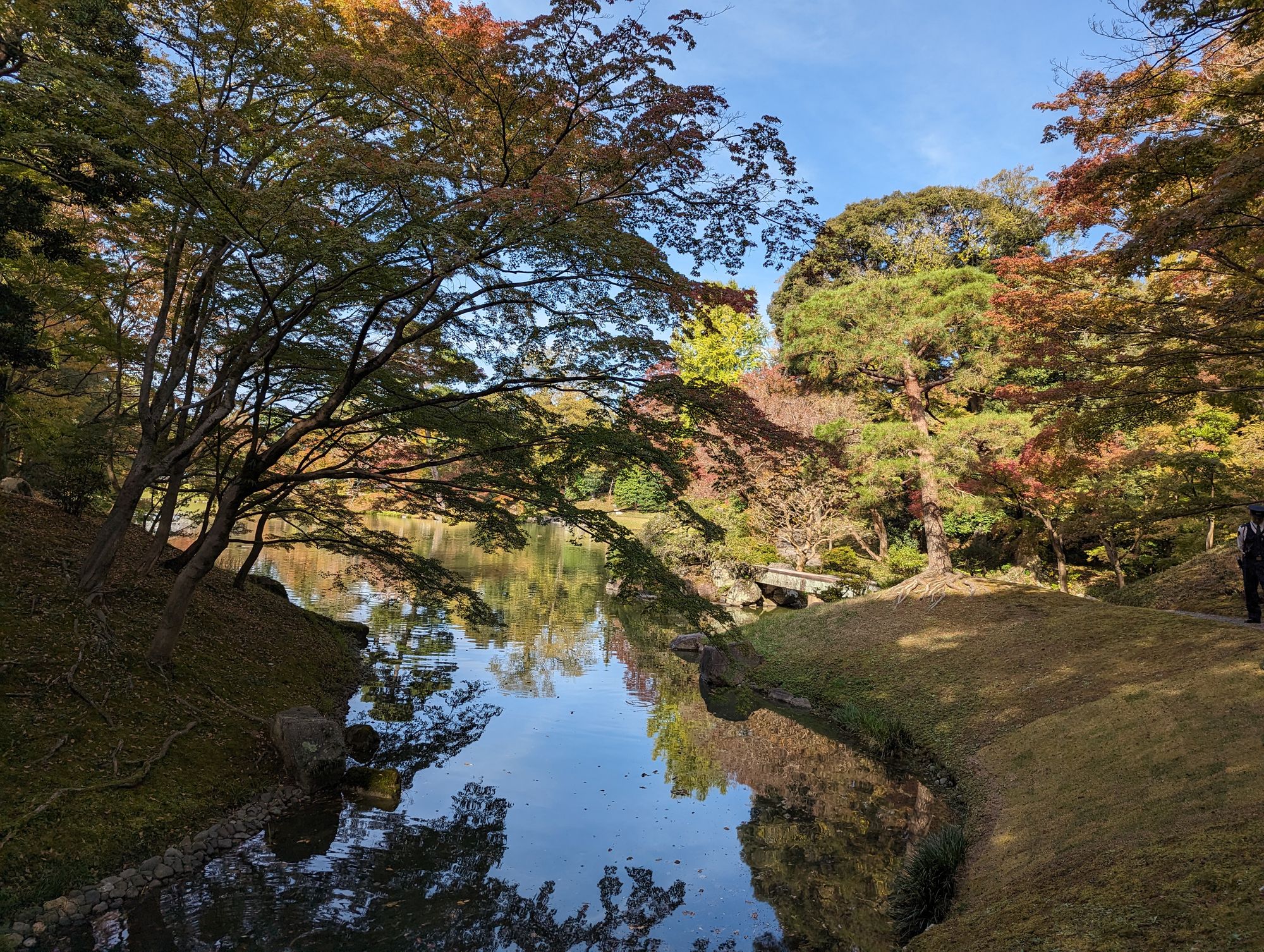
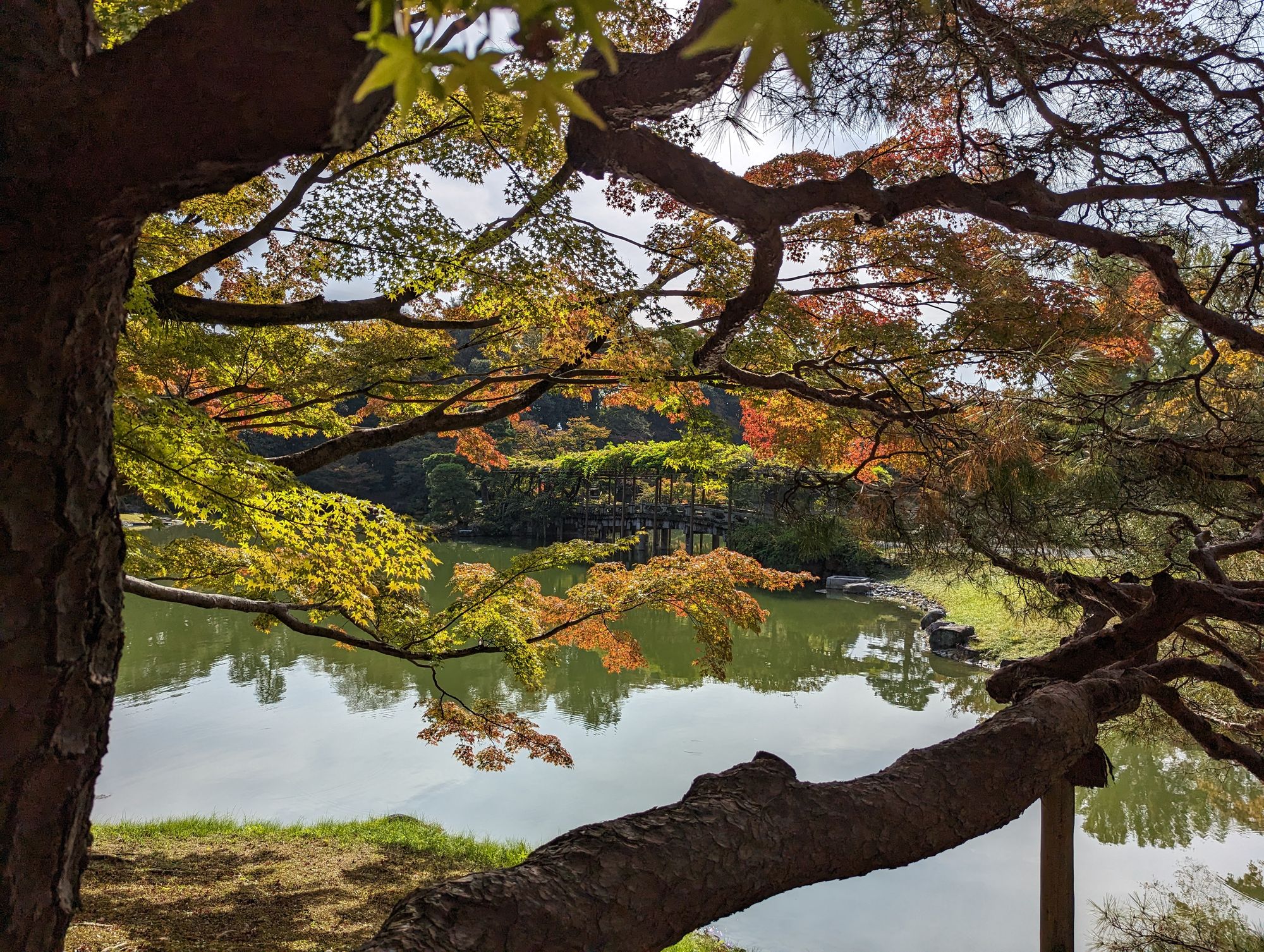
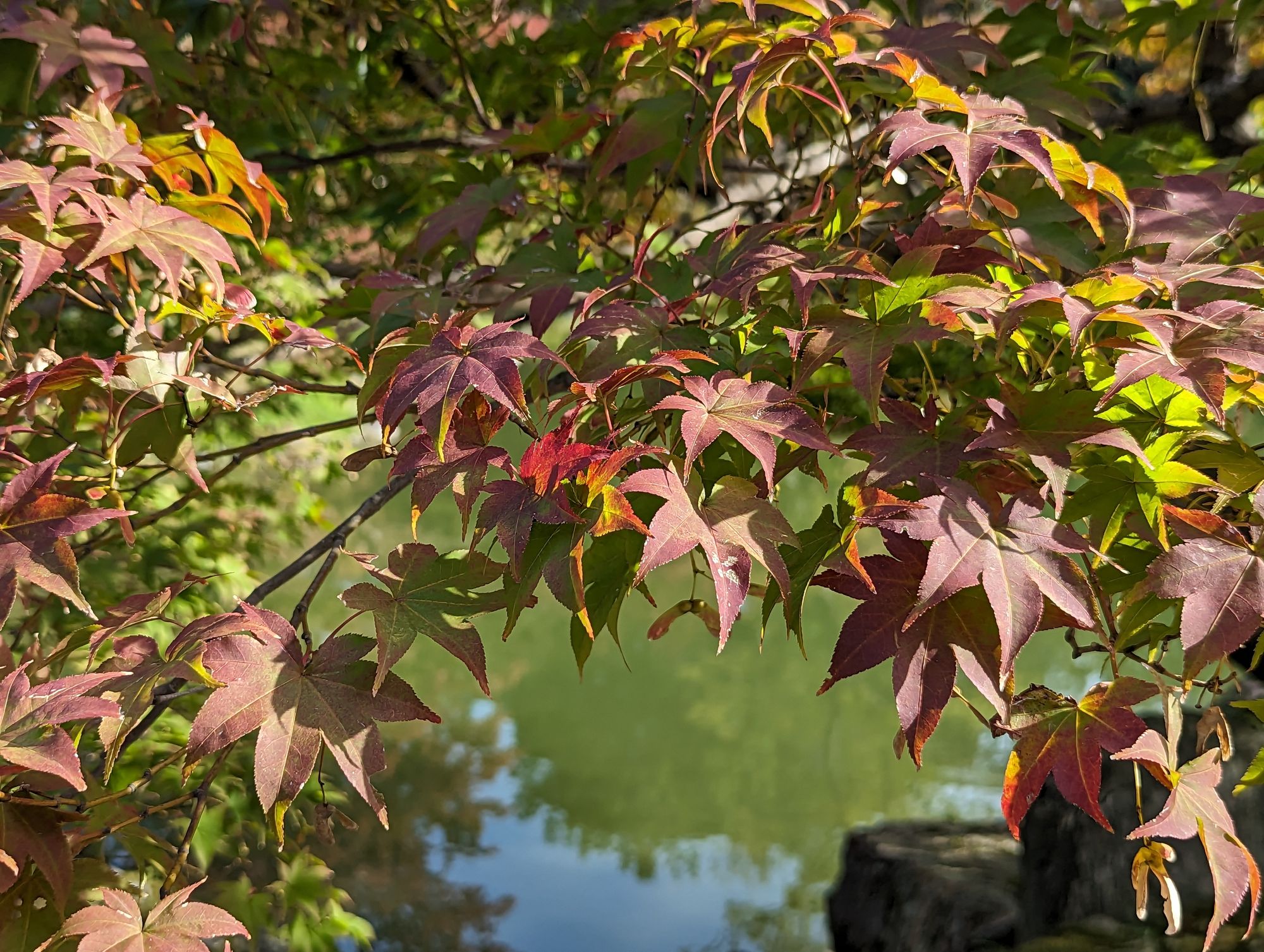
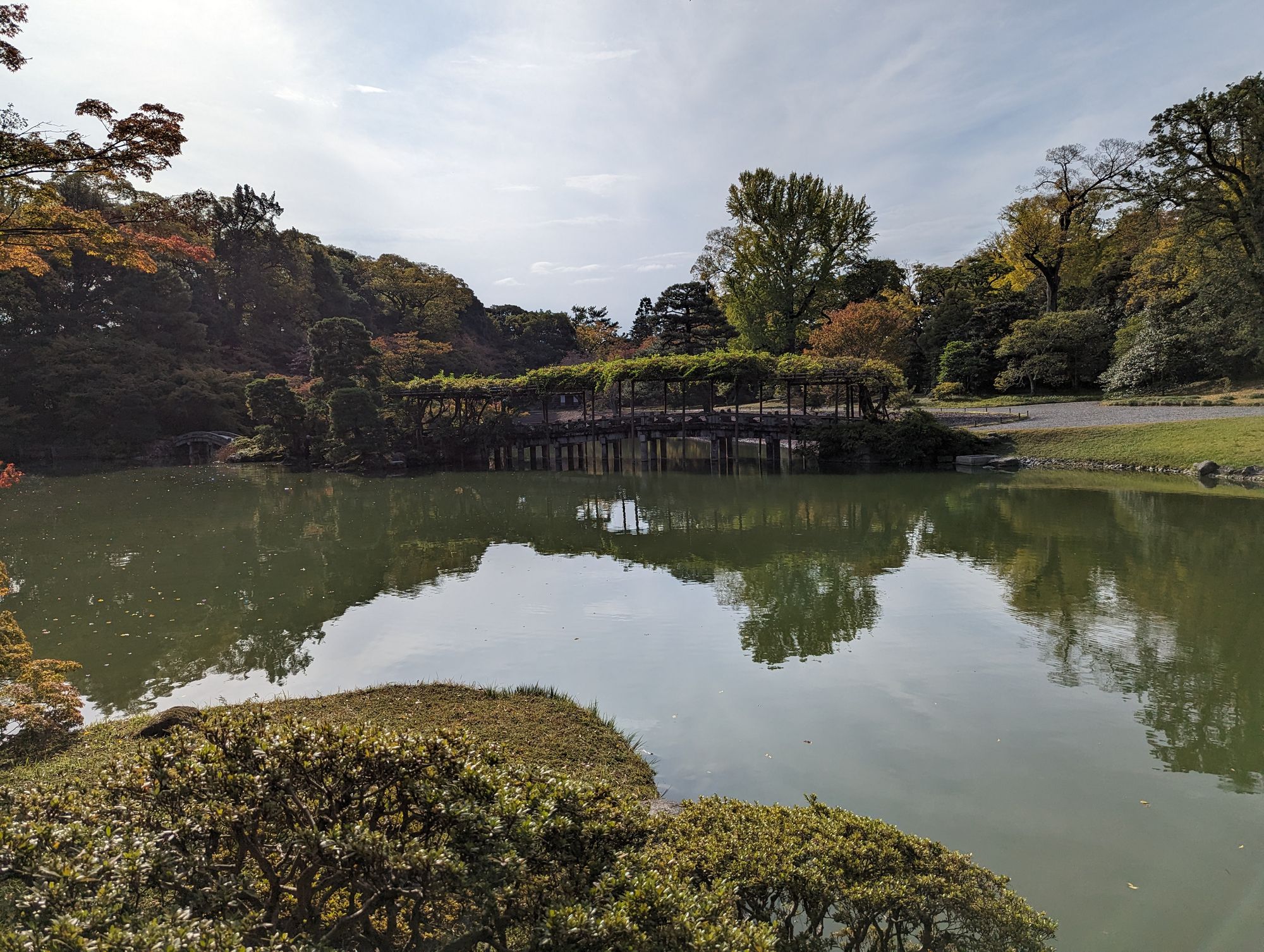
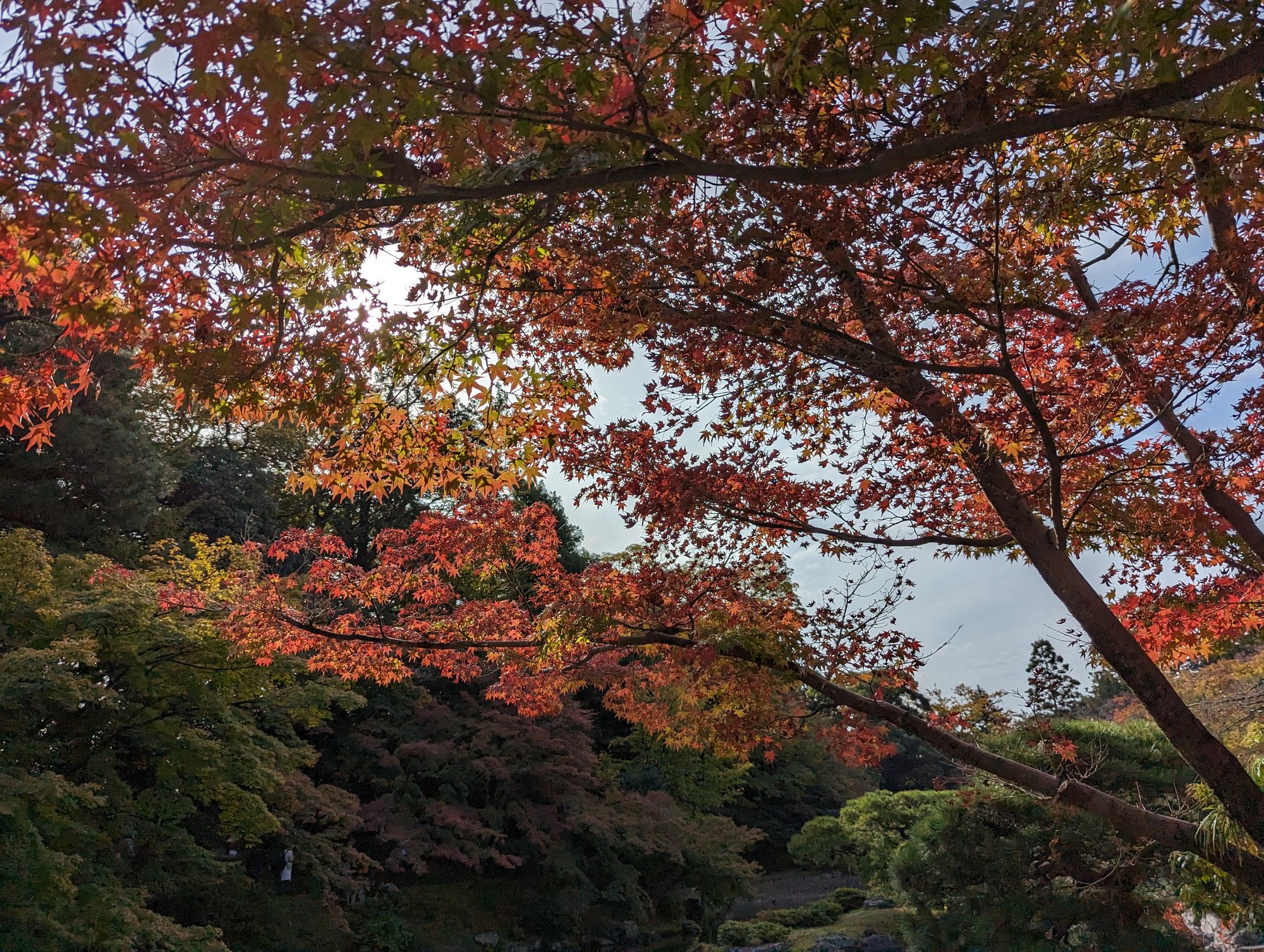
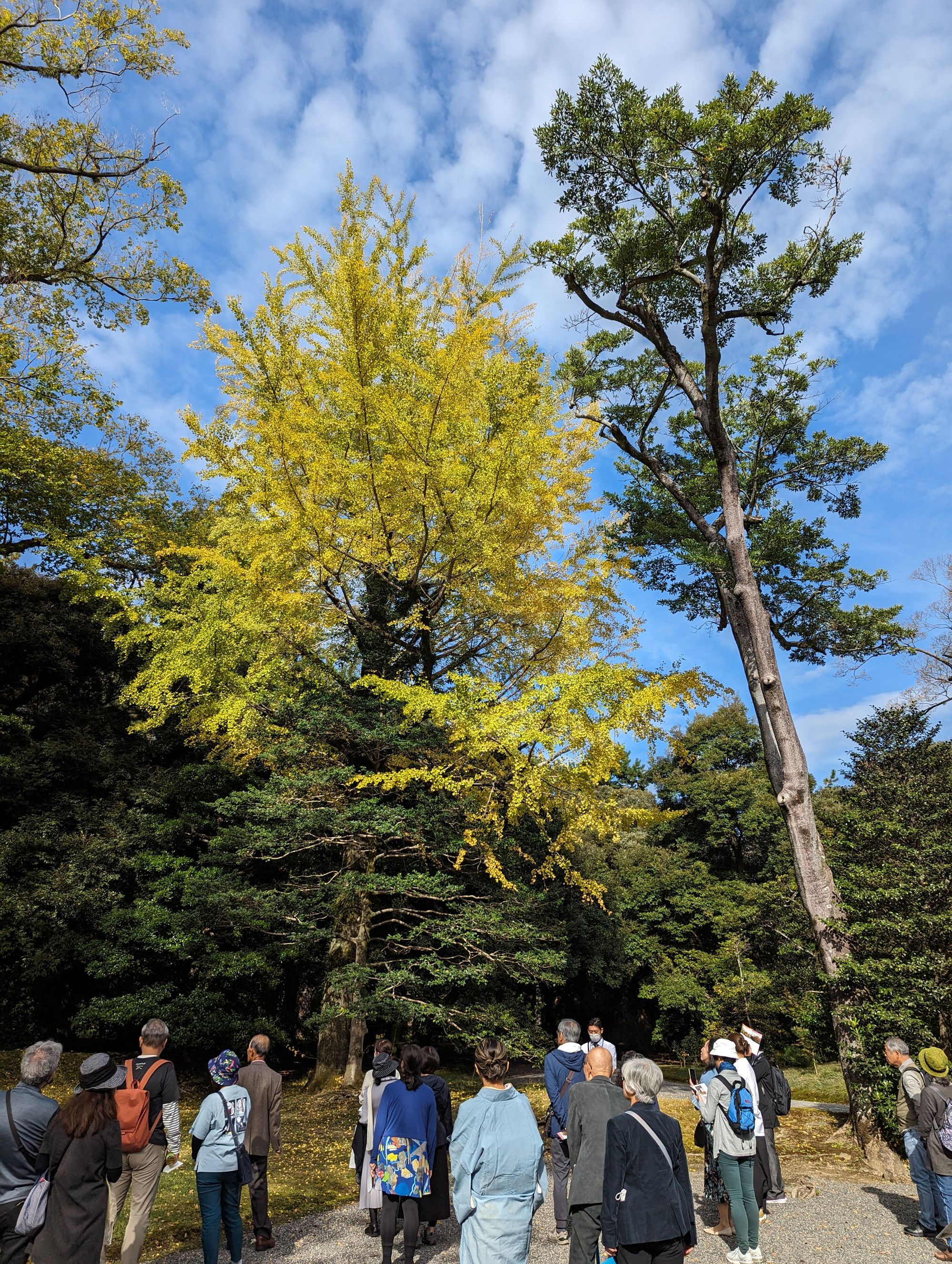
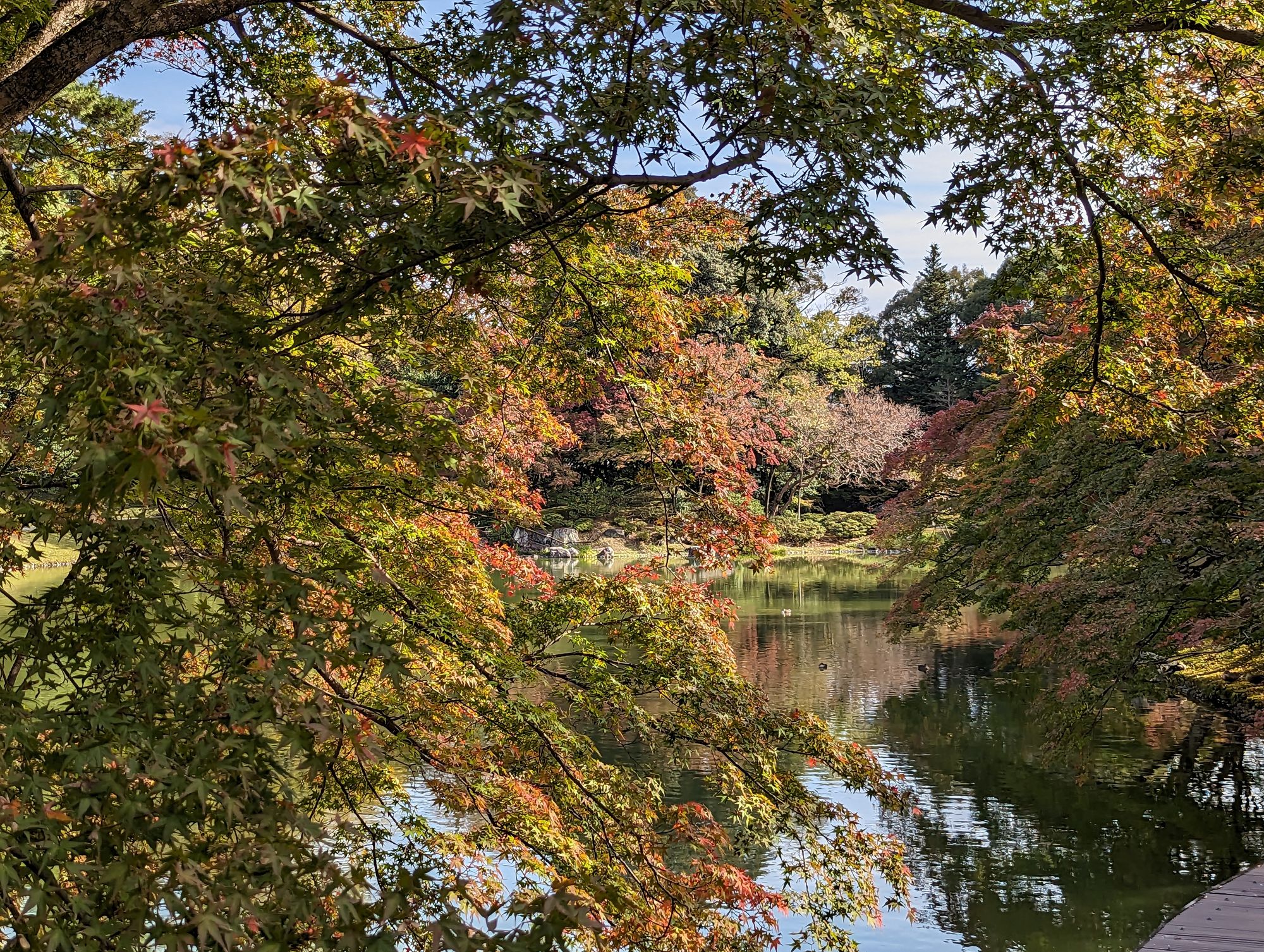
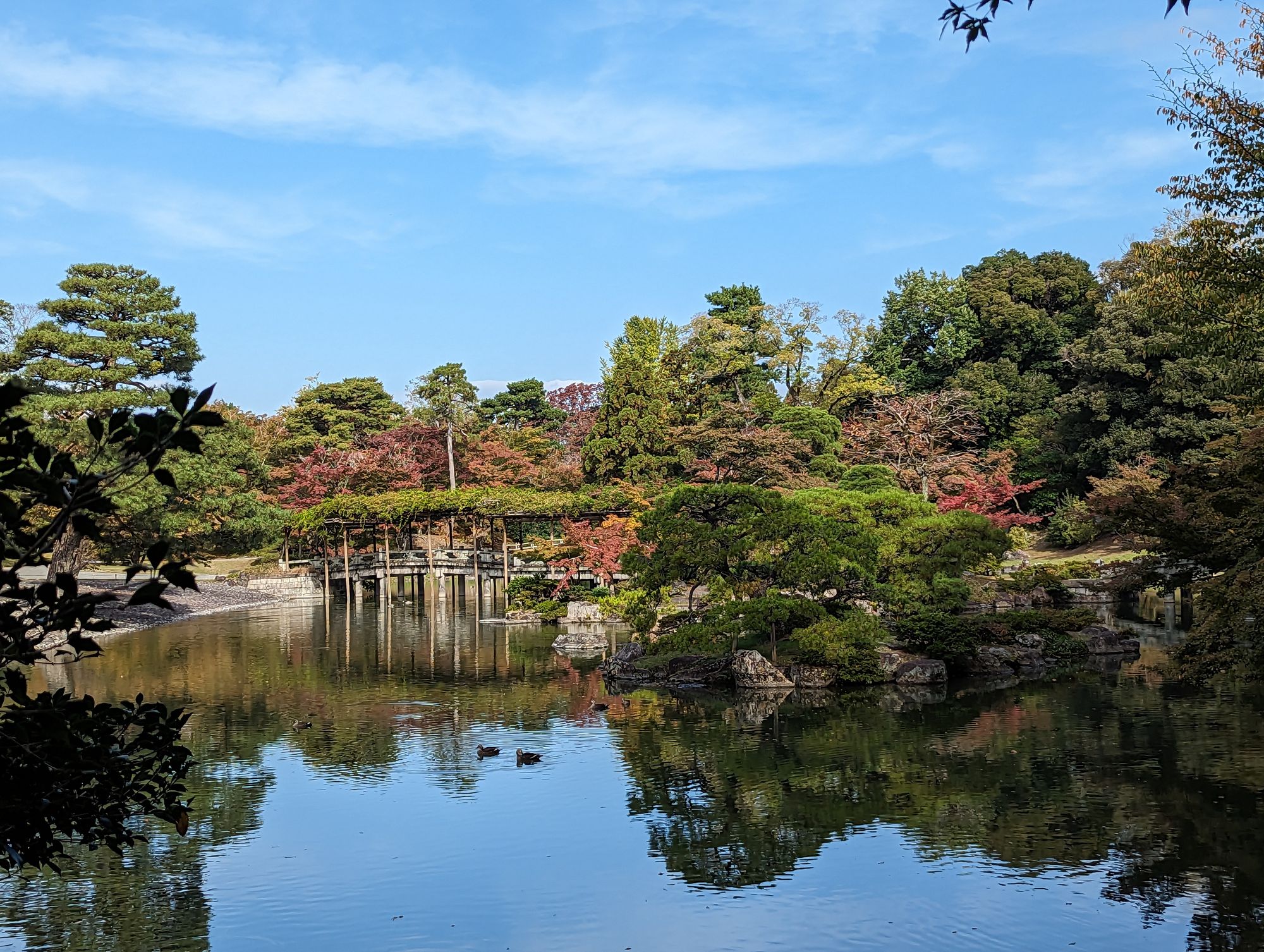
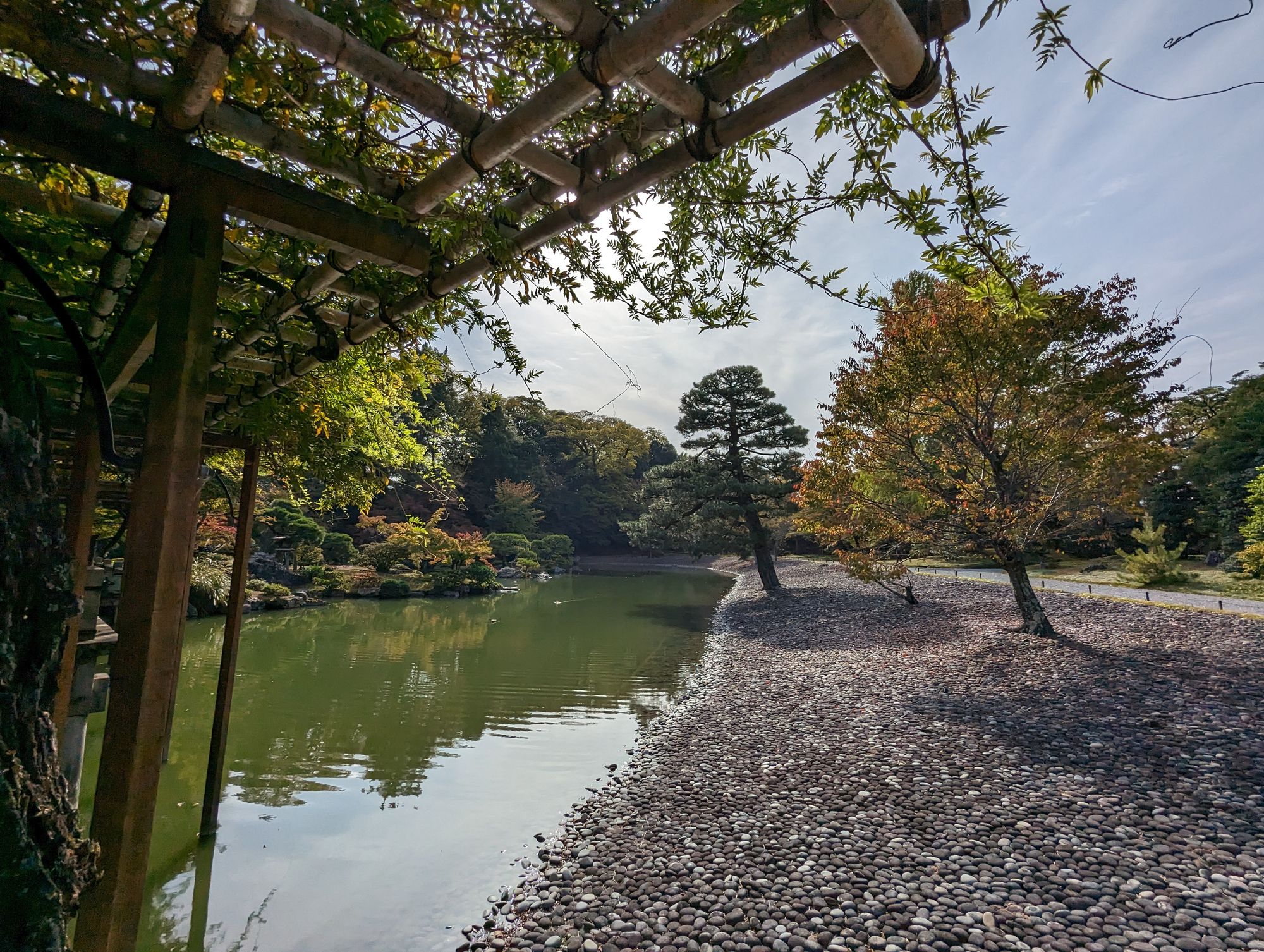
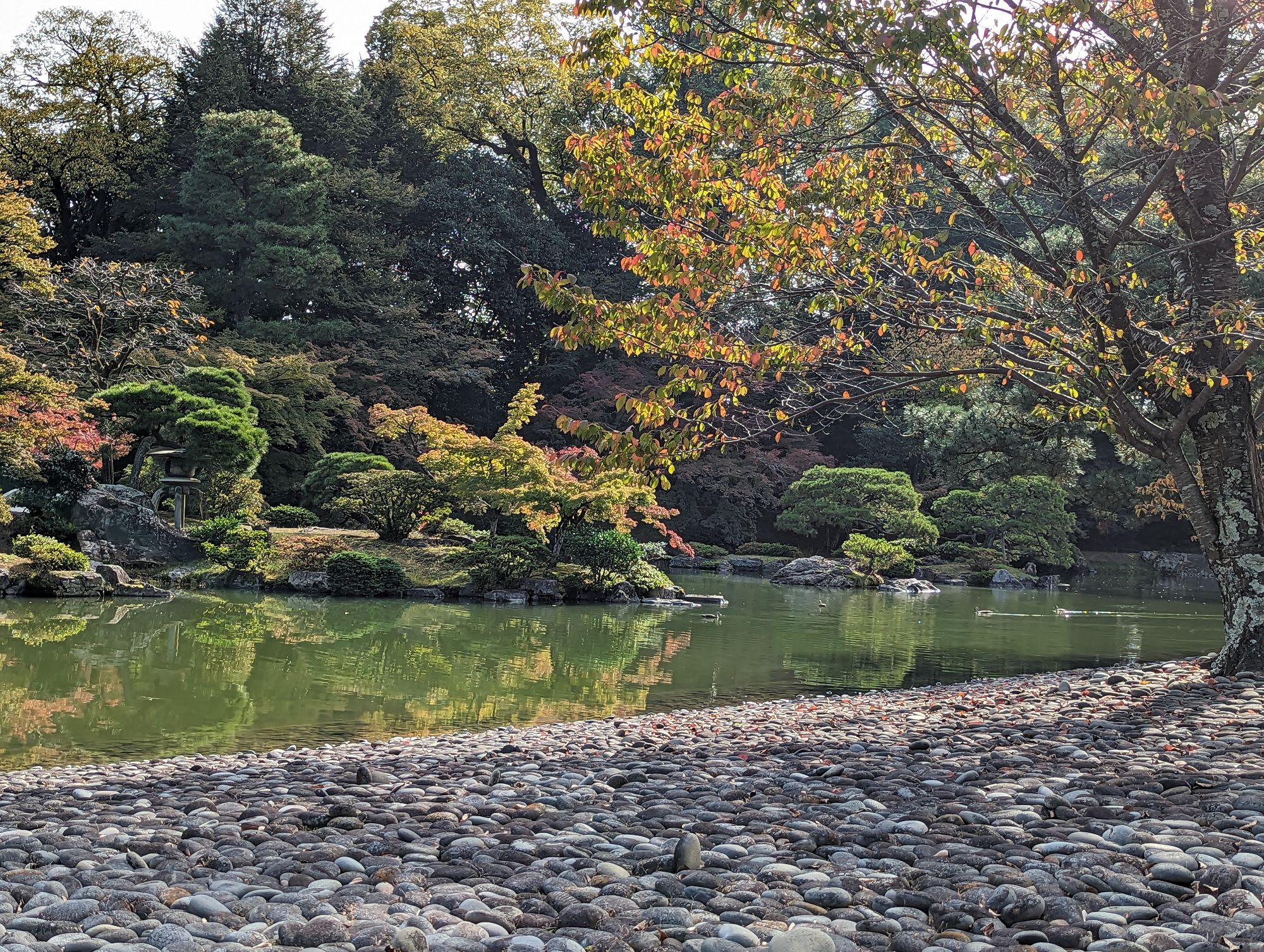
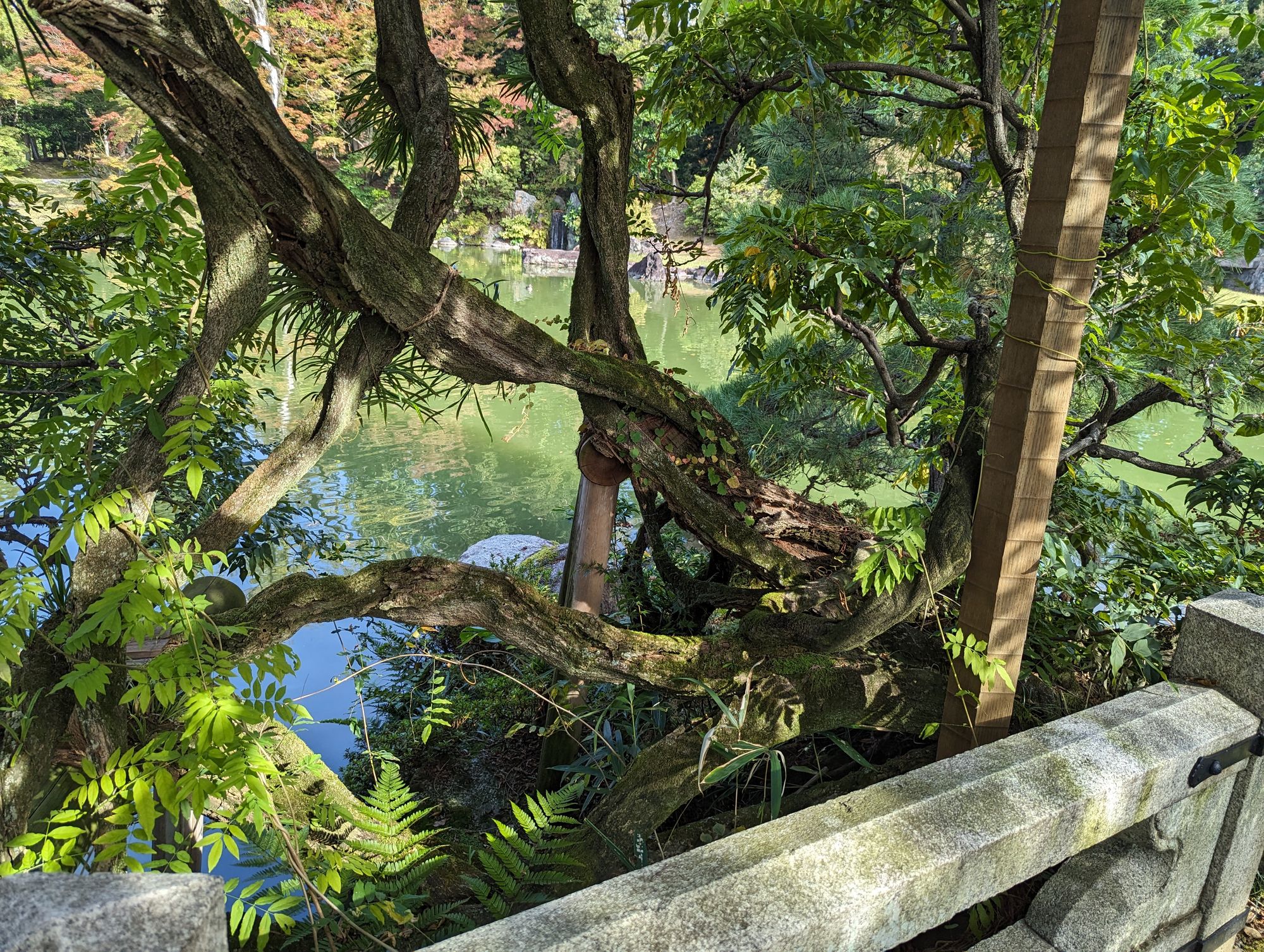
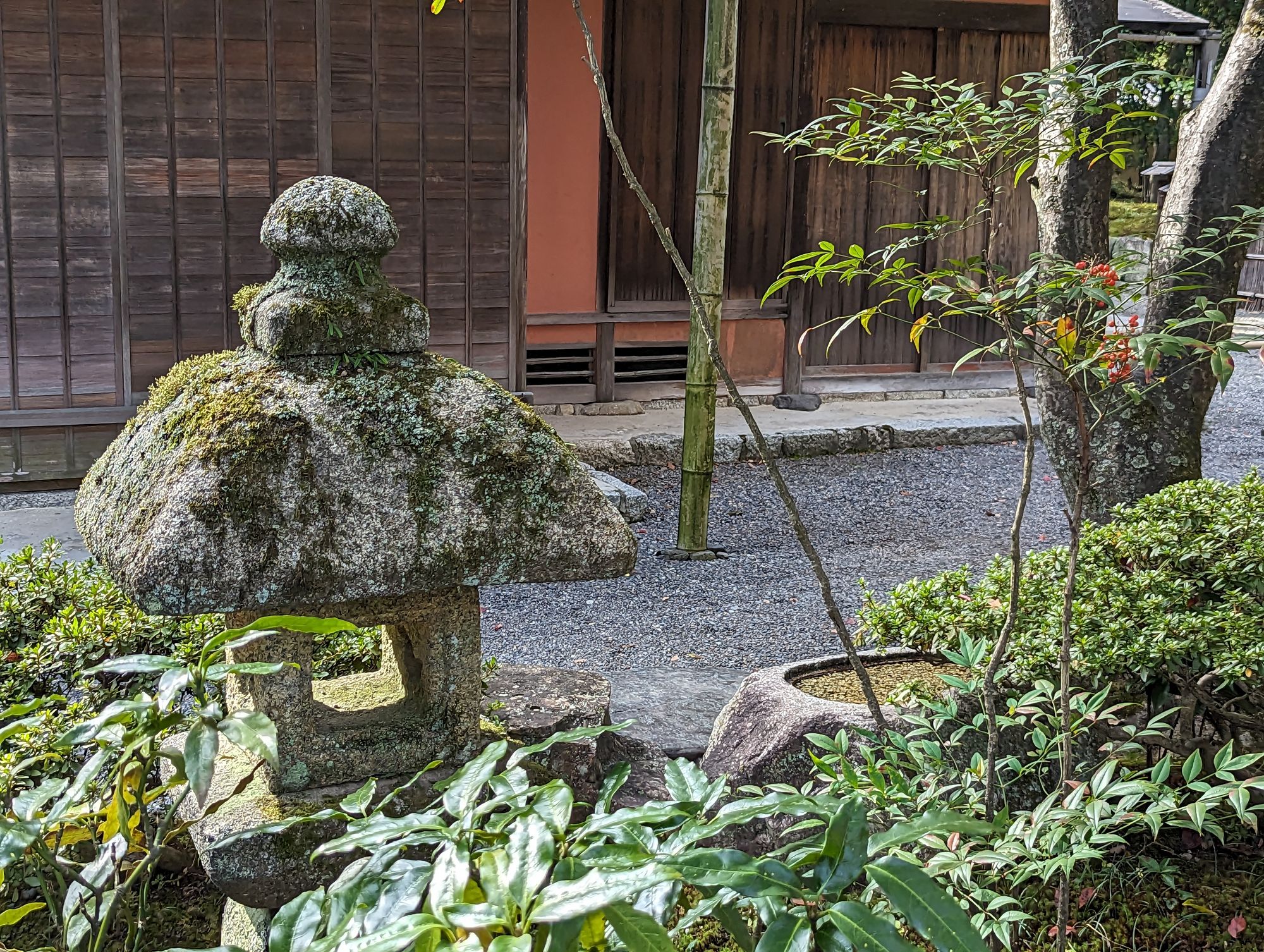
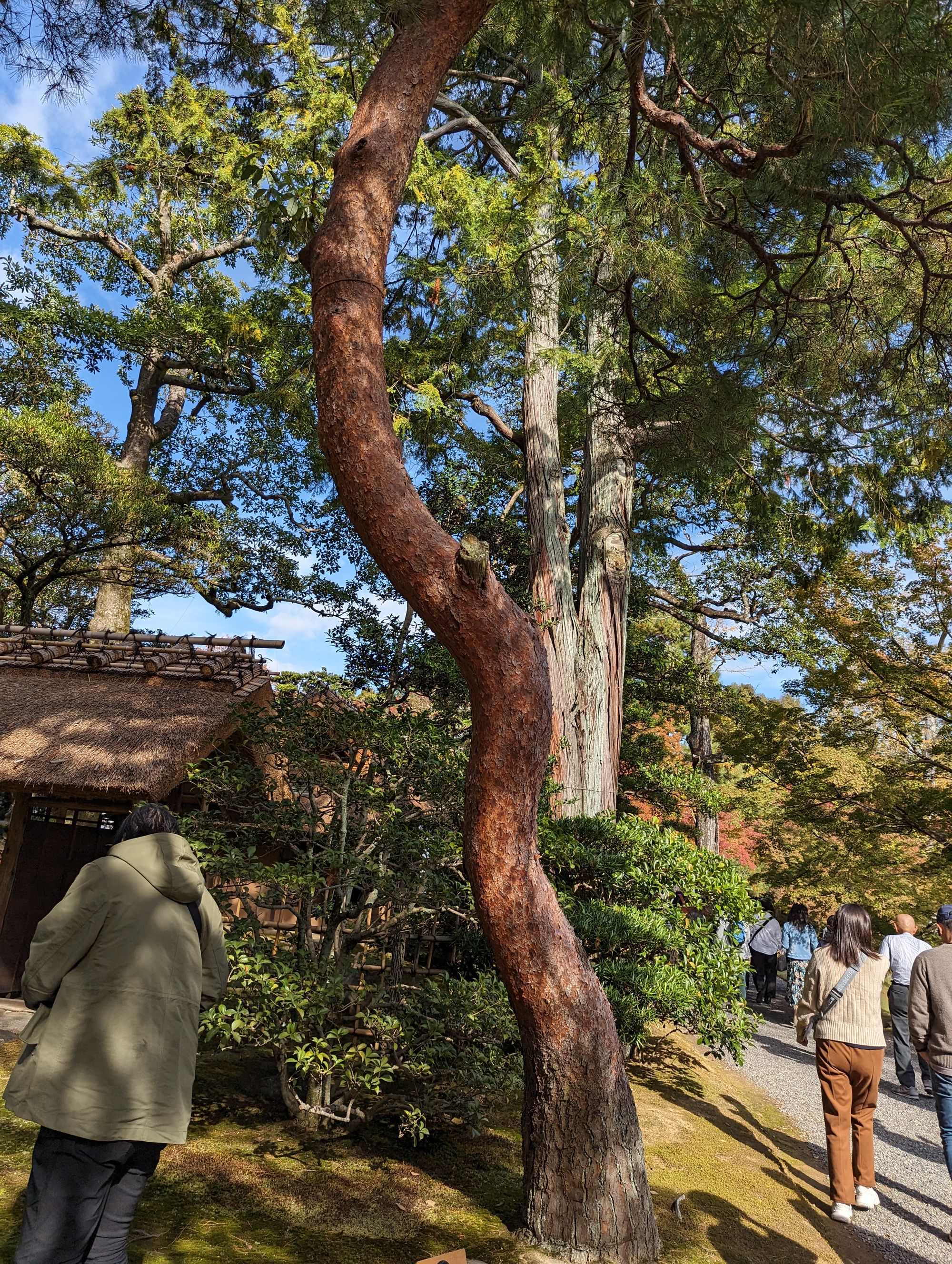
On the way to our next palace, we stopped by the Go-ō-jinja Shrine. Kristen was born in the year of the boar, and this shrine is dedicated to the boar.
Famous for giving healthy legs and hips--Since the enshrined deity 'Kiyomaro' was saved by 300 boars, and his leg wounds were healed, he is worshiped as a god who protects his legs and waist. There are many statues of boars in the shrine.
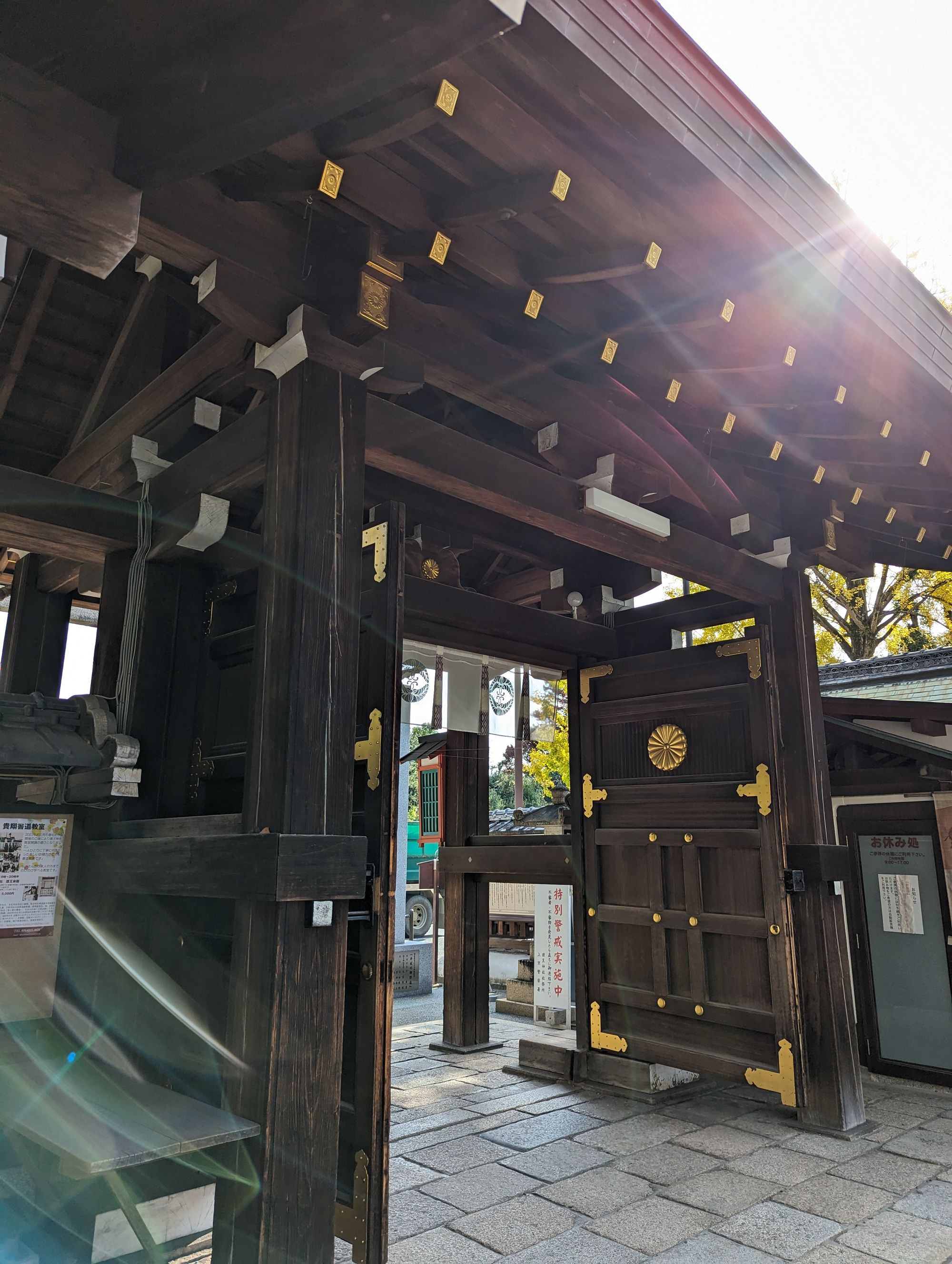
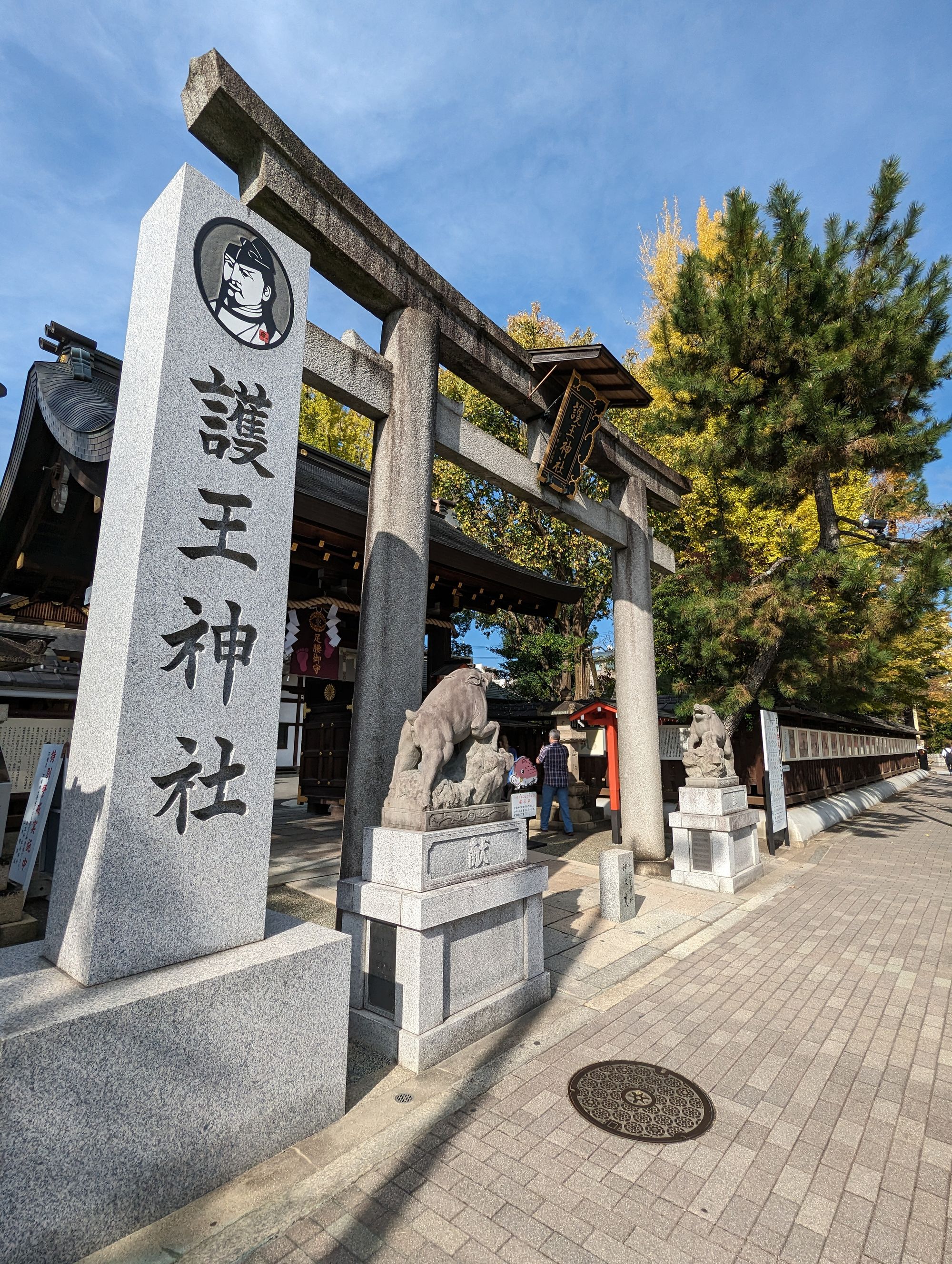
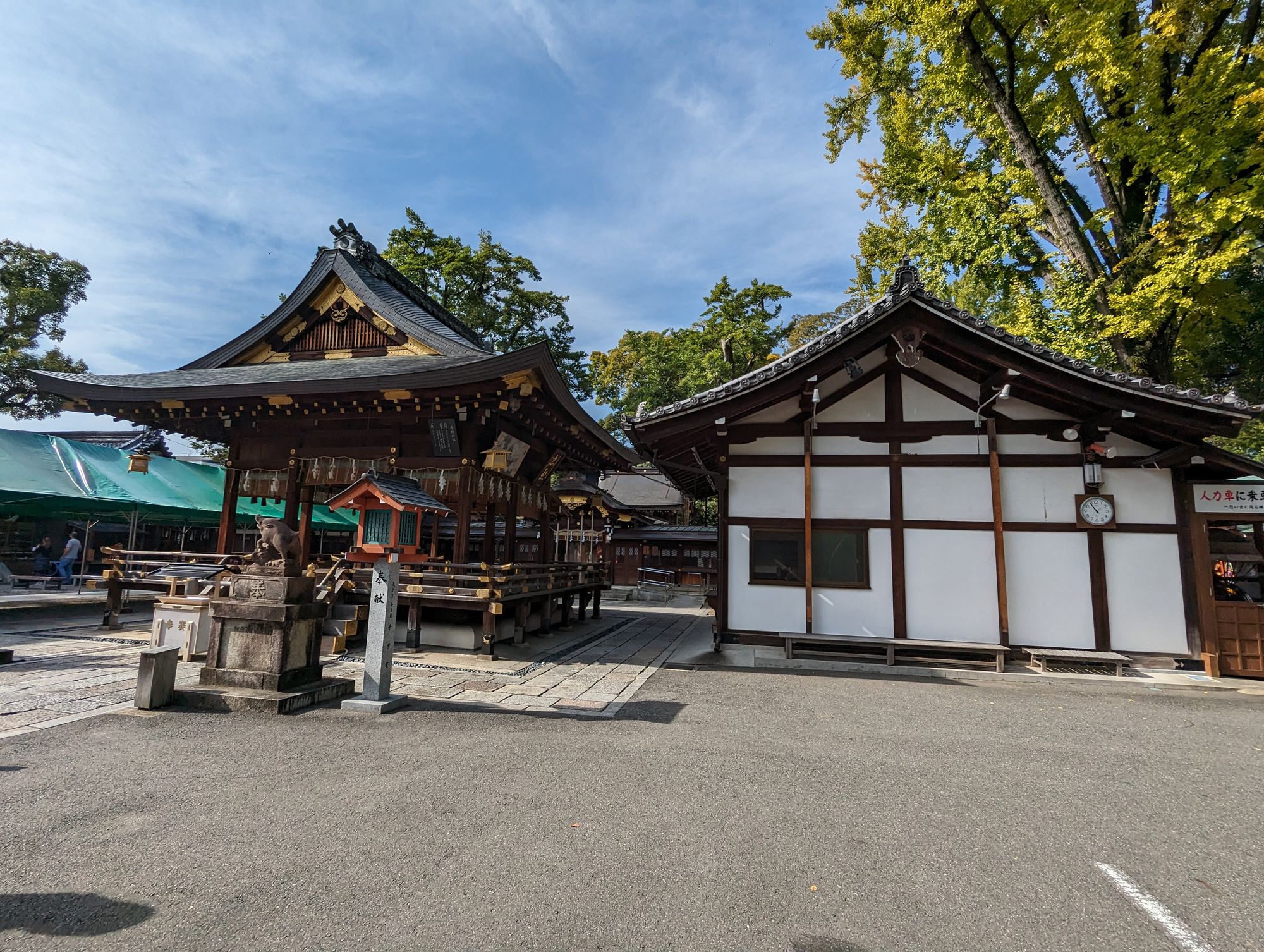
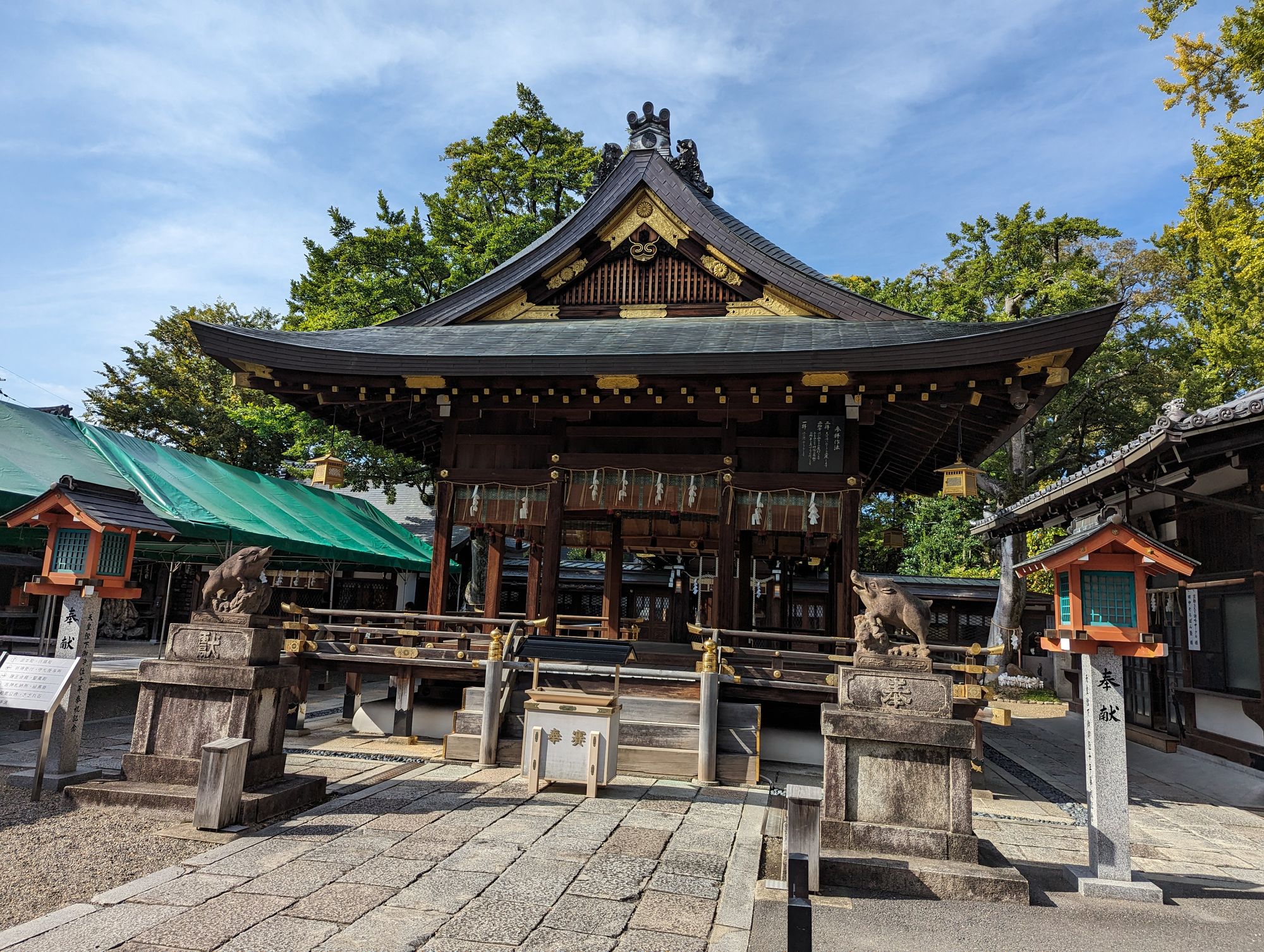
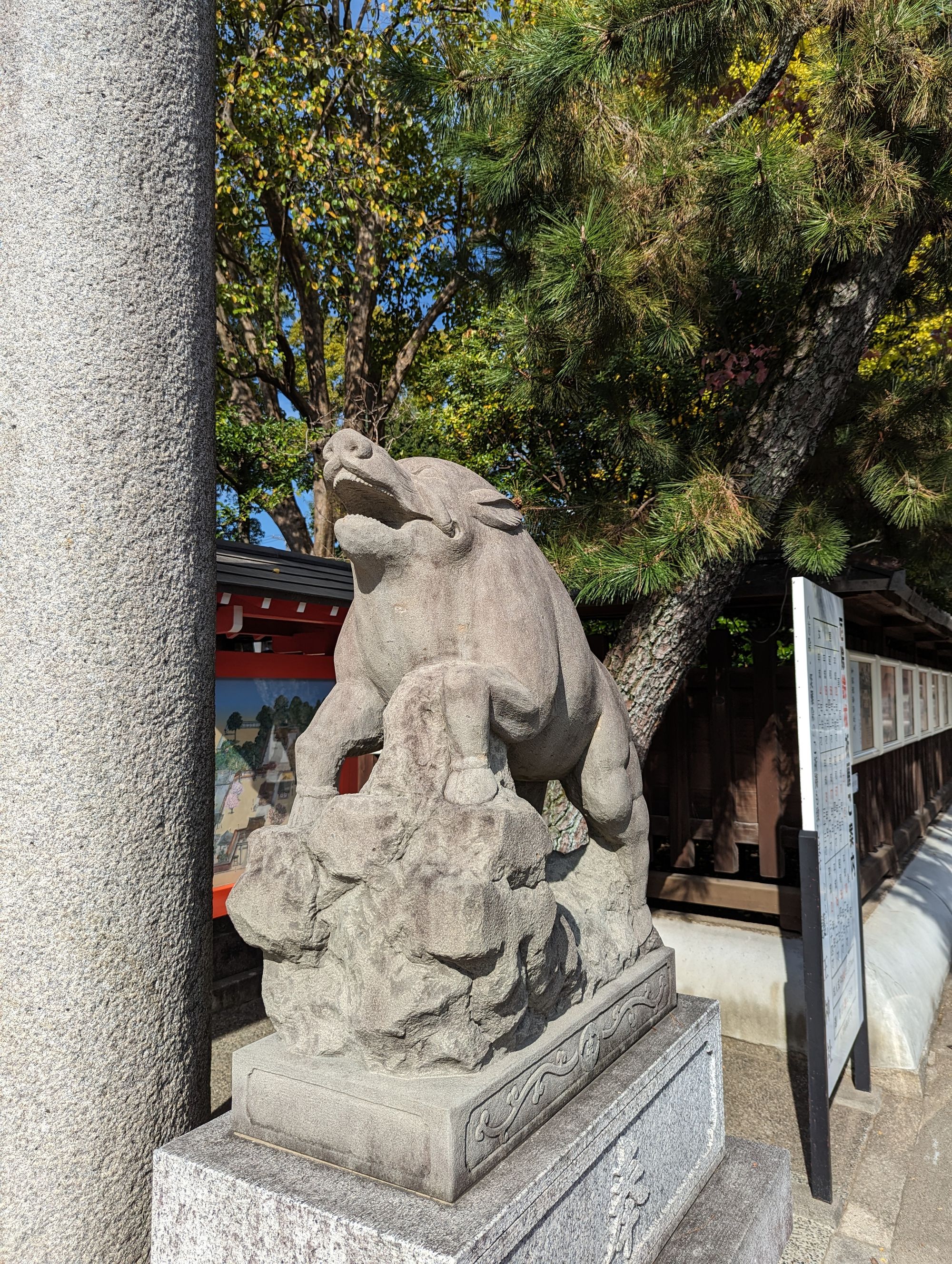
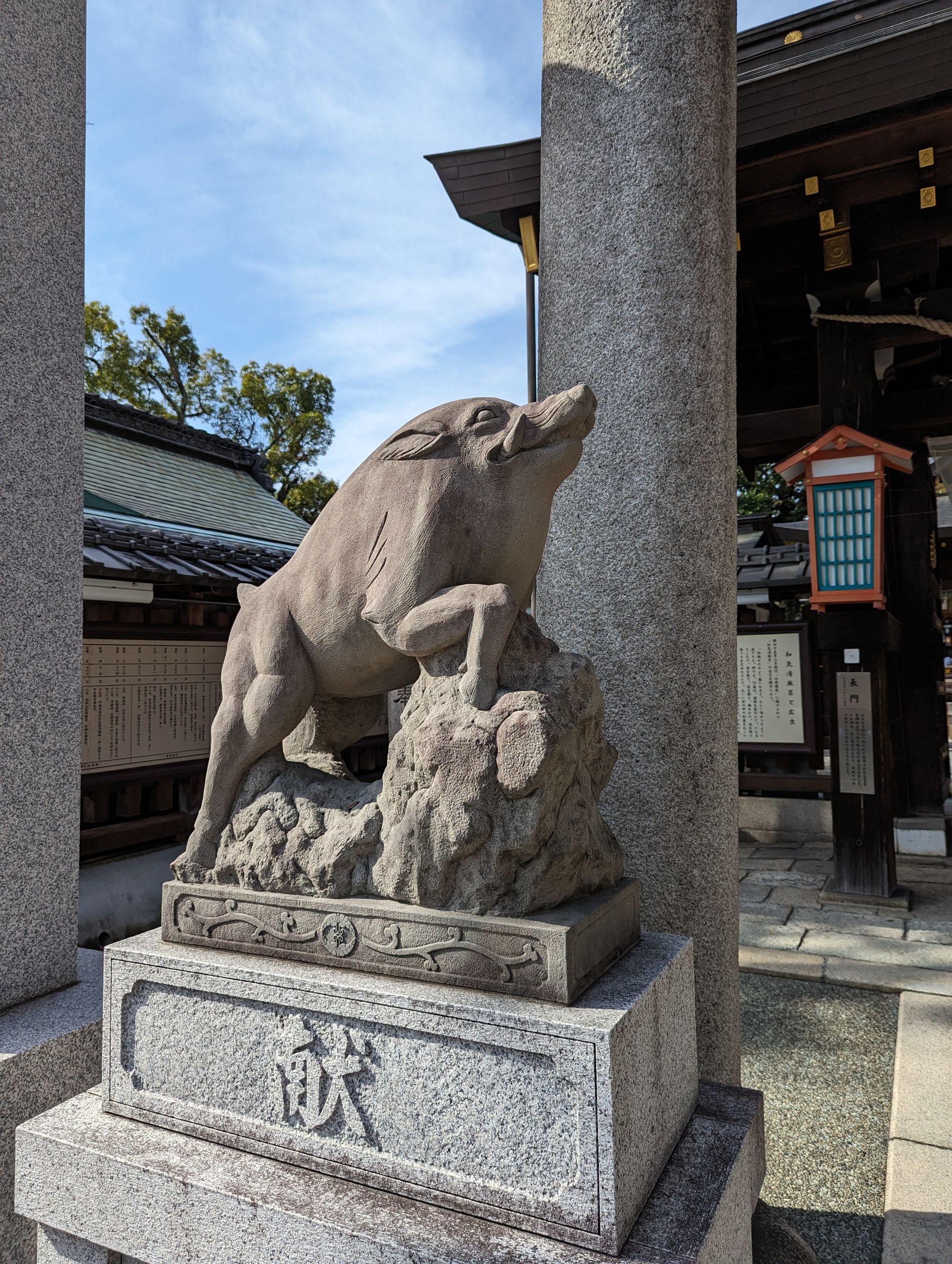
Then, off to the nearest konbini (convenience store) for a quick bite to eat since we won't have time until after 4pm.
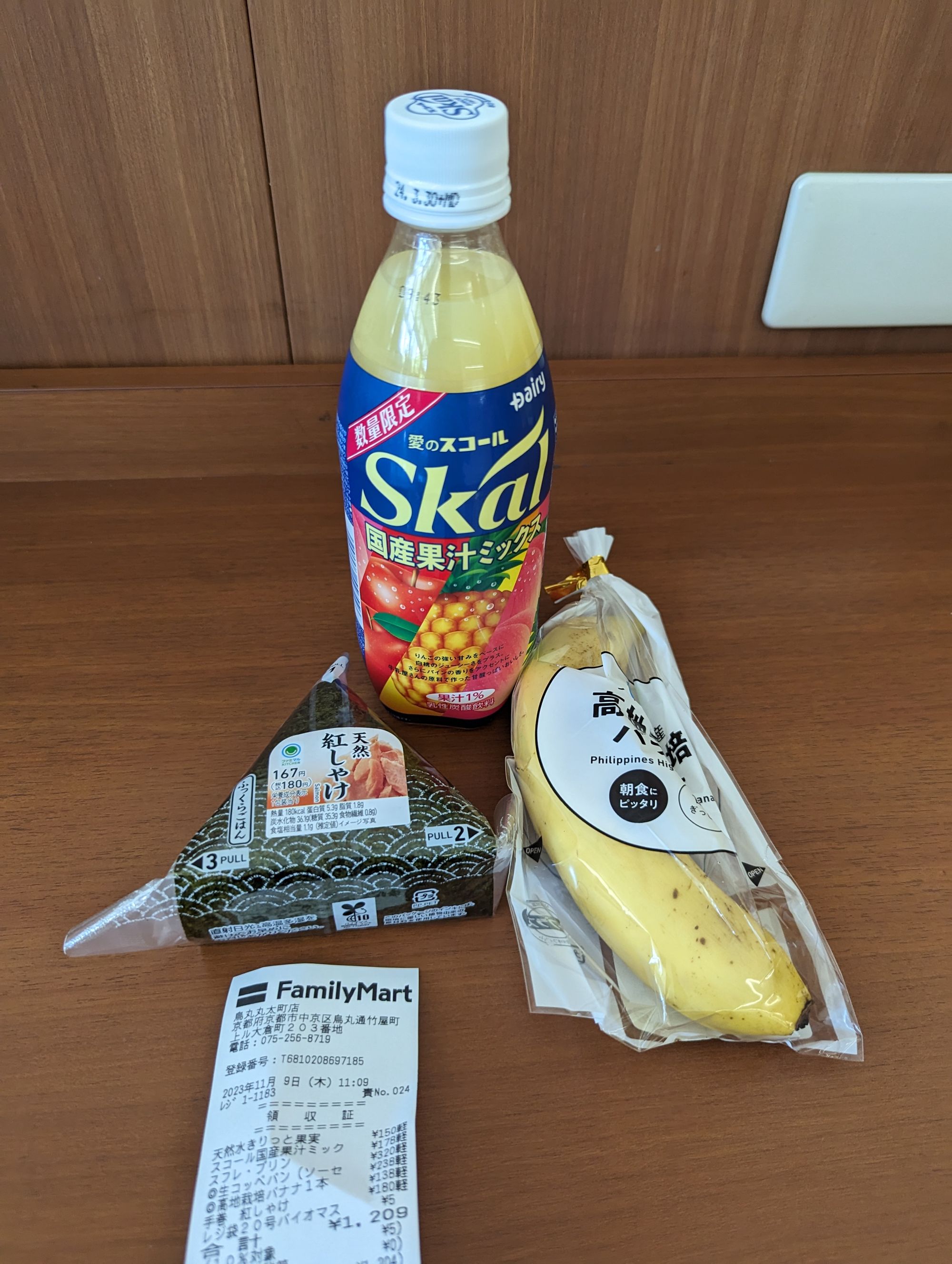
Also, Corn Bread, anyone???
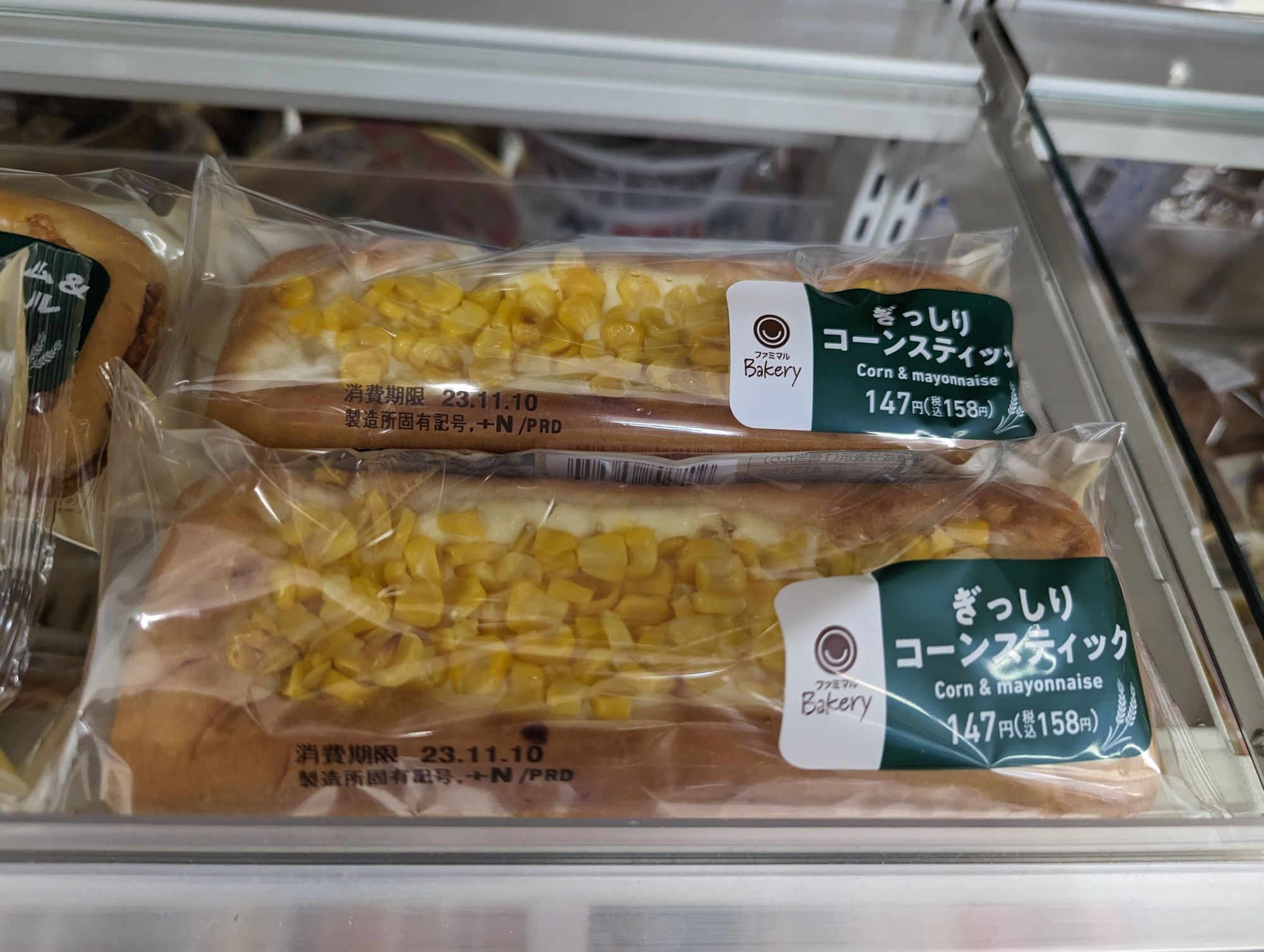
Next up: Nijo-jo Palace. This was the one I was most excited for [the following history are not my words. I got my information from a variety of places.]
The castle was completed in 1603 on the orders of Tokugawa Ieyasu, the founder and first Shogun of the Tokugawa Shogunate (1603-1867). Tokugawa Ieyasu unified Japan after a long period of civil war, and ushered in a period of over 260 years of peace and prosperity. The government that Ieyasu established lasted for fifteen generations, and was one of the longest periods of stability and prosperity in Japanese history. Japan was unified under the rule of the Tokugawa family after the Battle of Sekigahara in 1600, and in 1603 Tokugawa Ieyasu was appointed Seii-Taishogun (usually shortened to just Shogun), by the Emperor. After receiving his appointment, Ieyasu came to Nijo-jo Castle to announce his appointment to the feudal lords.
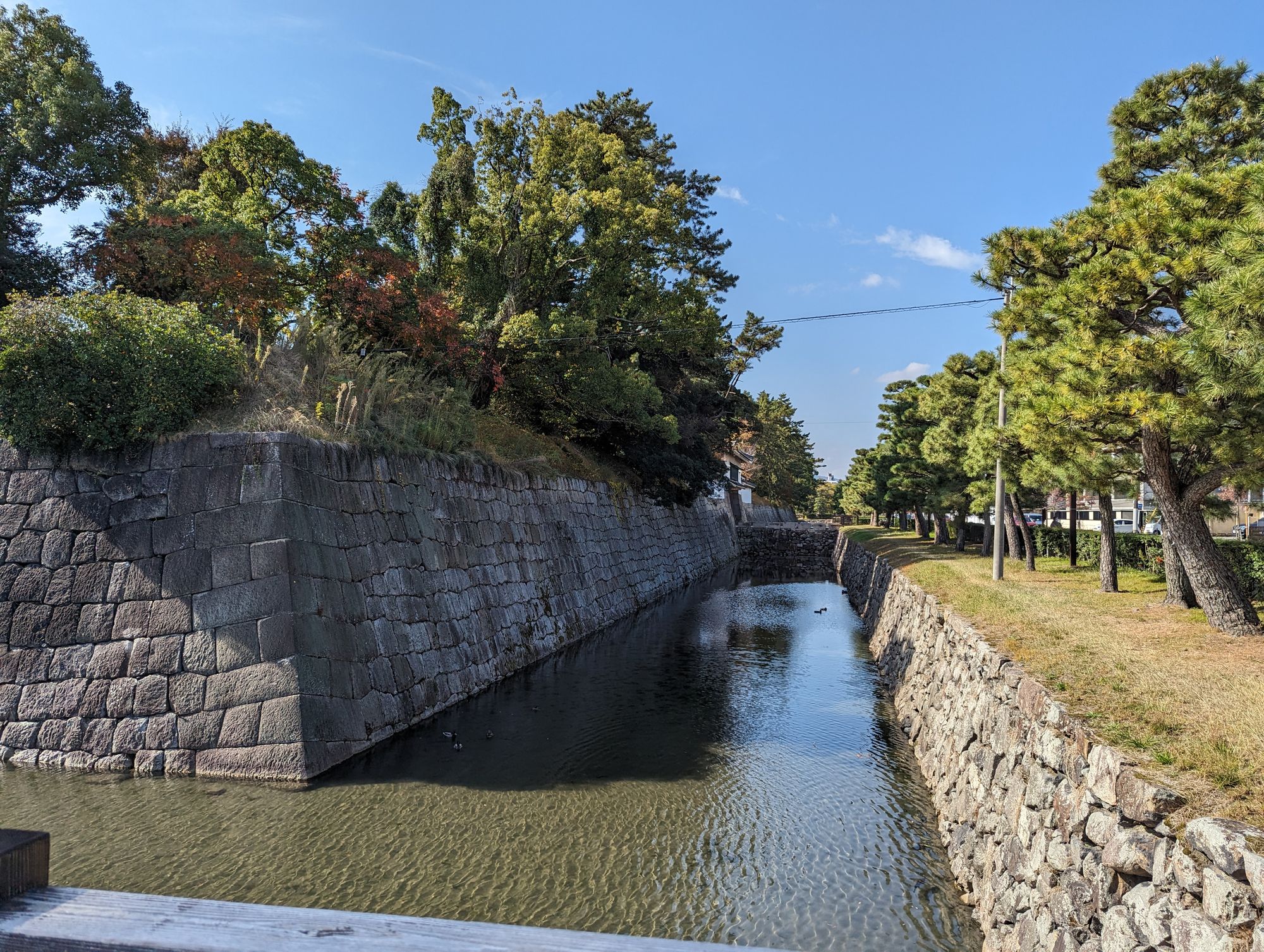
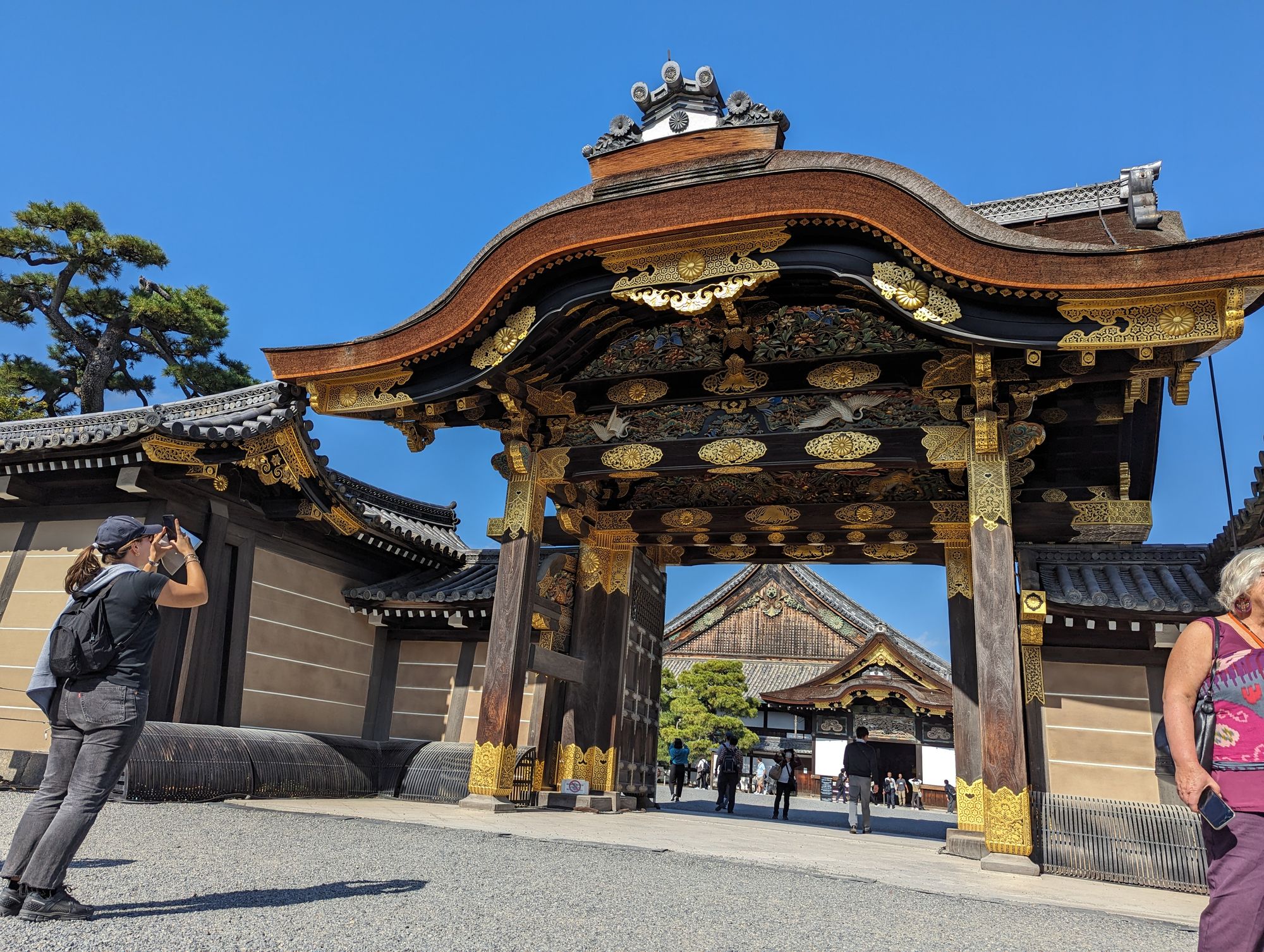
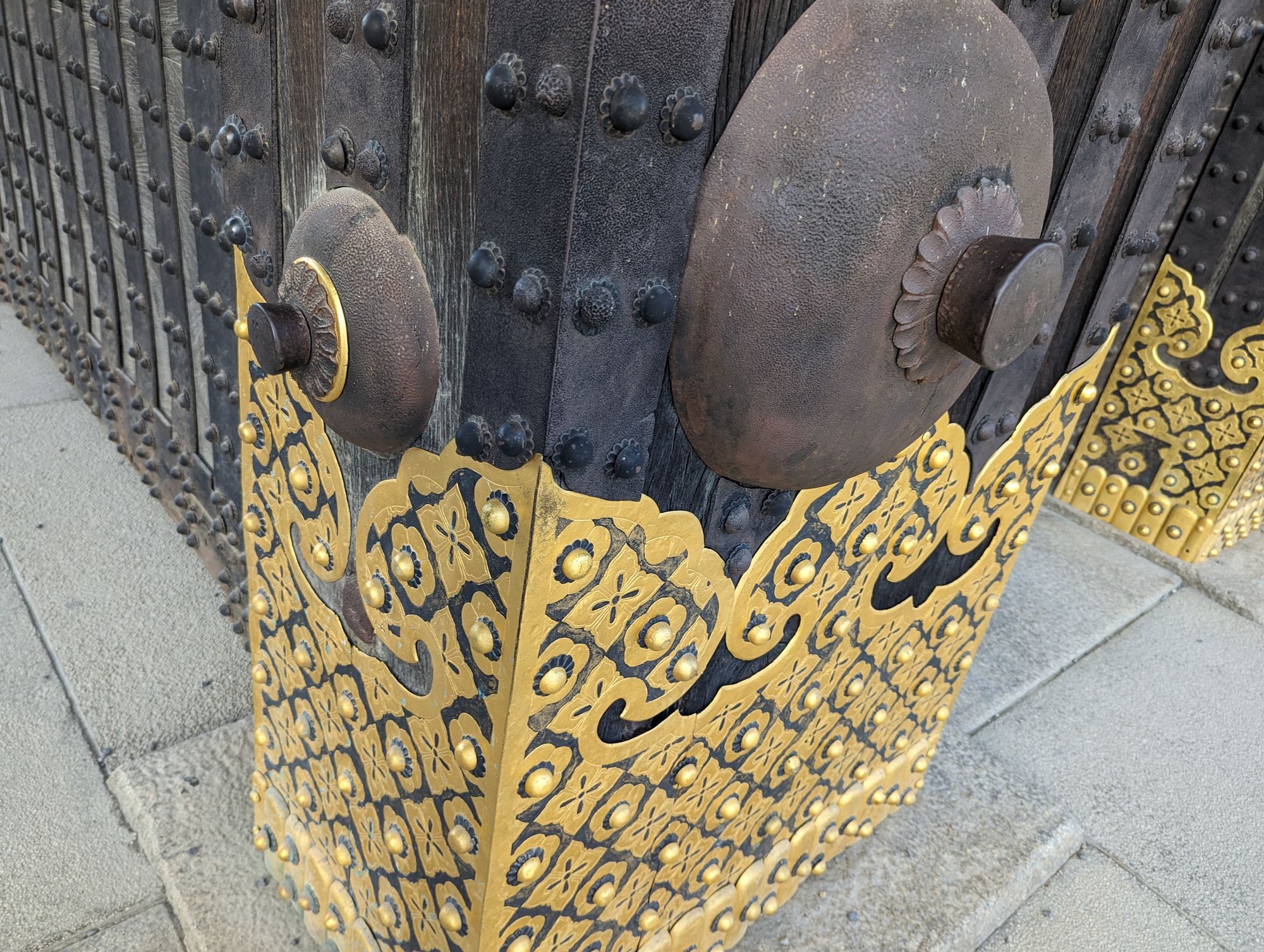
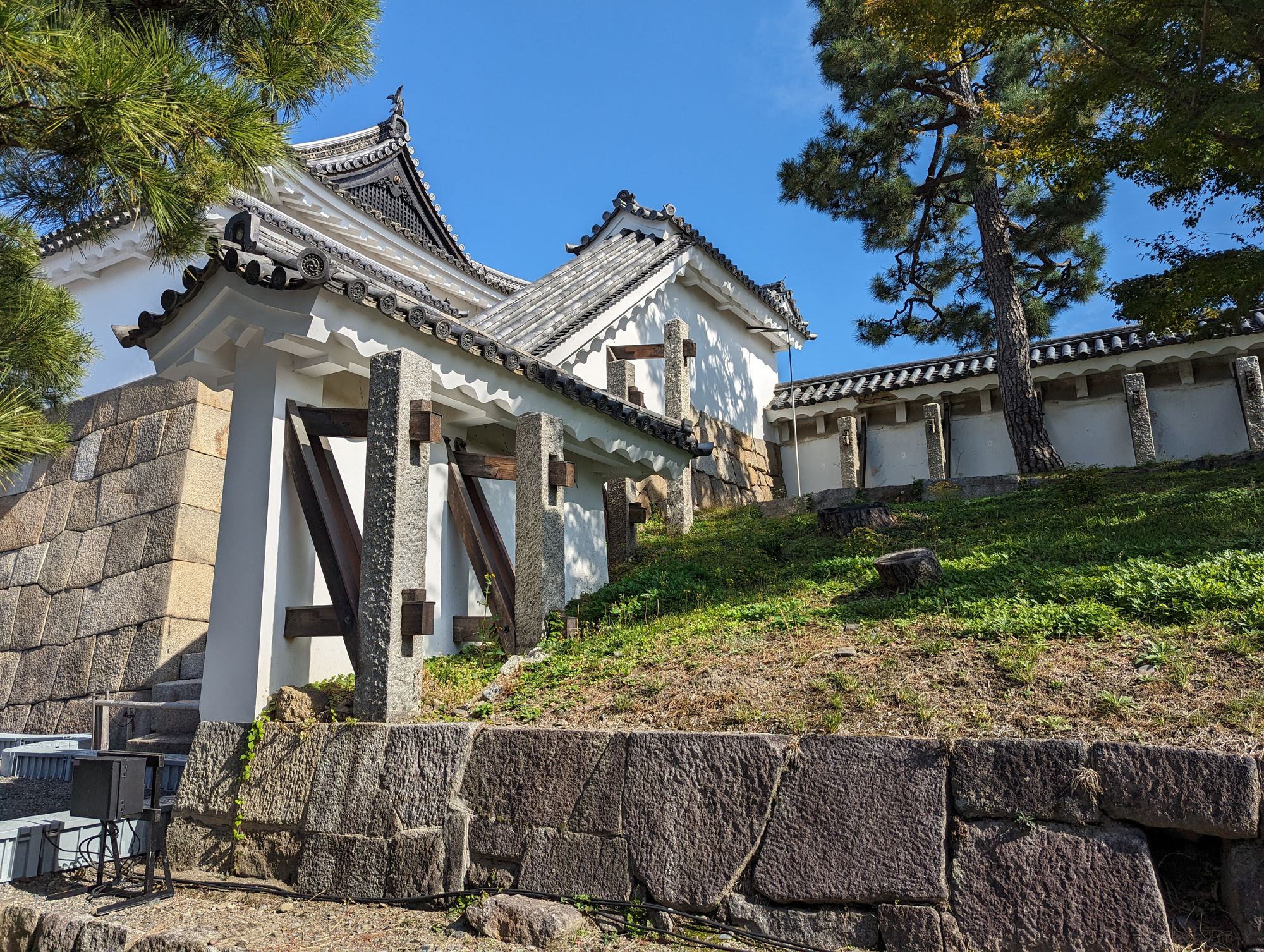
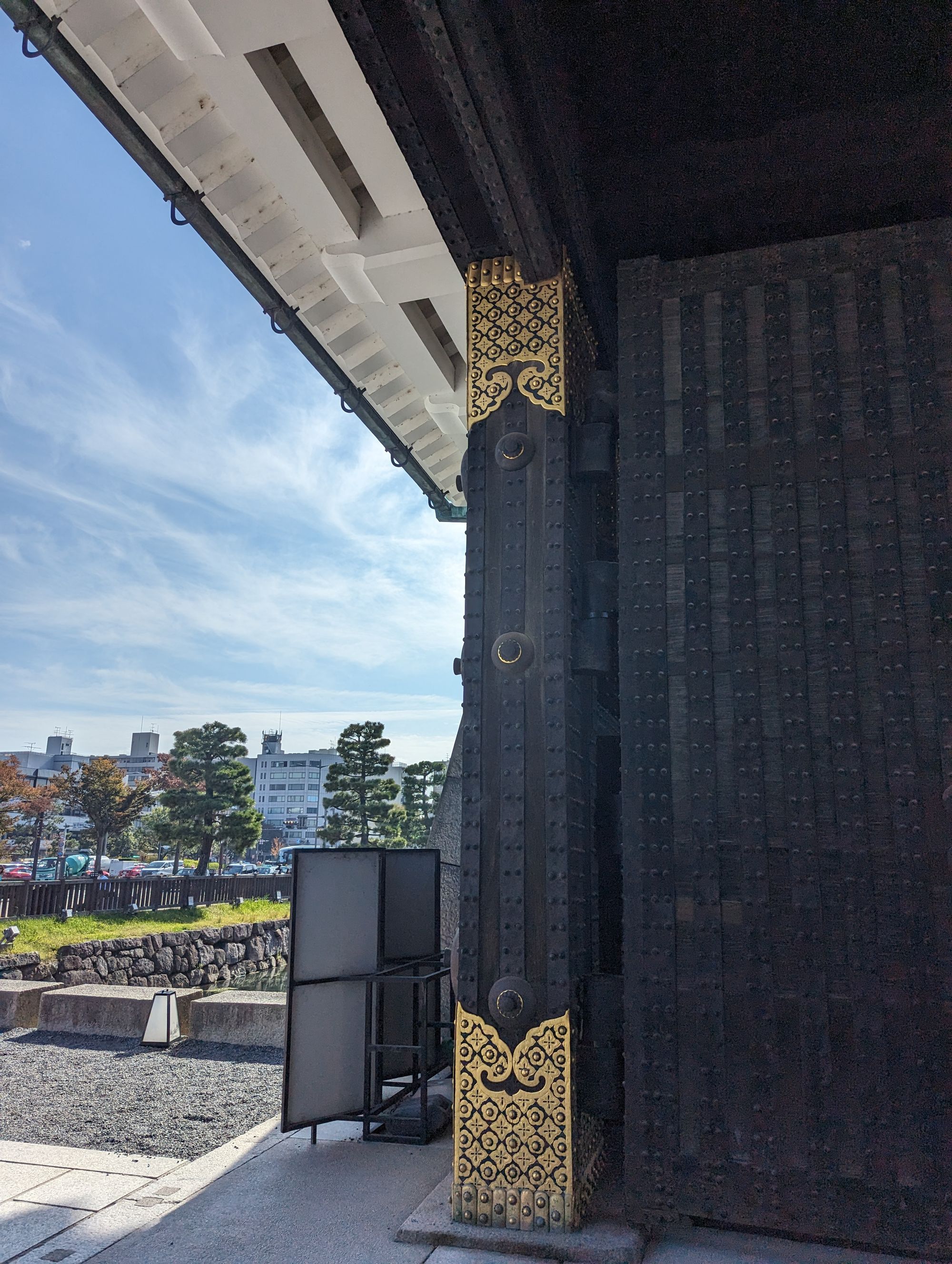
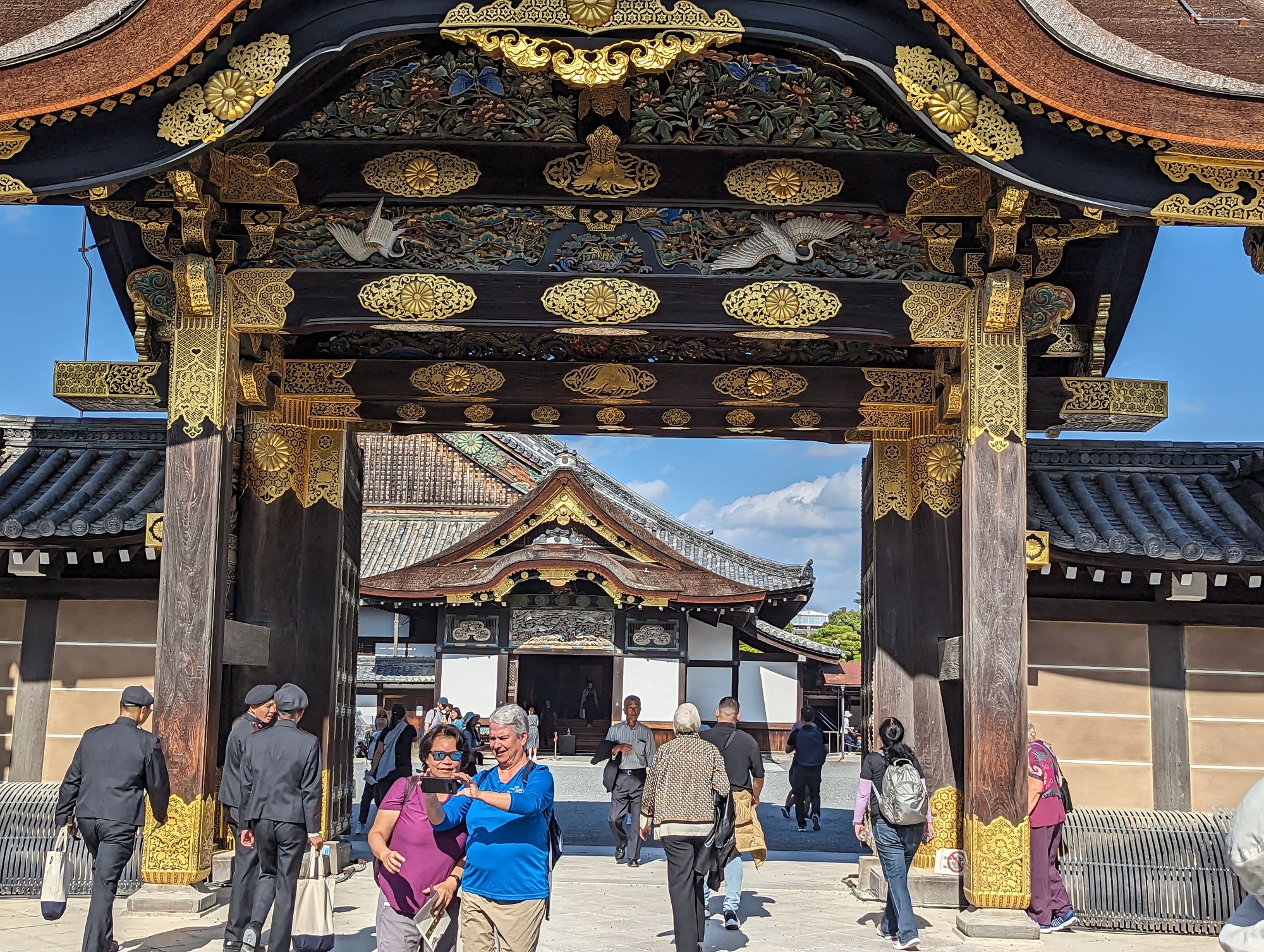
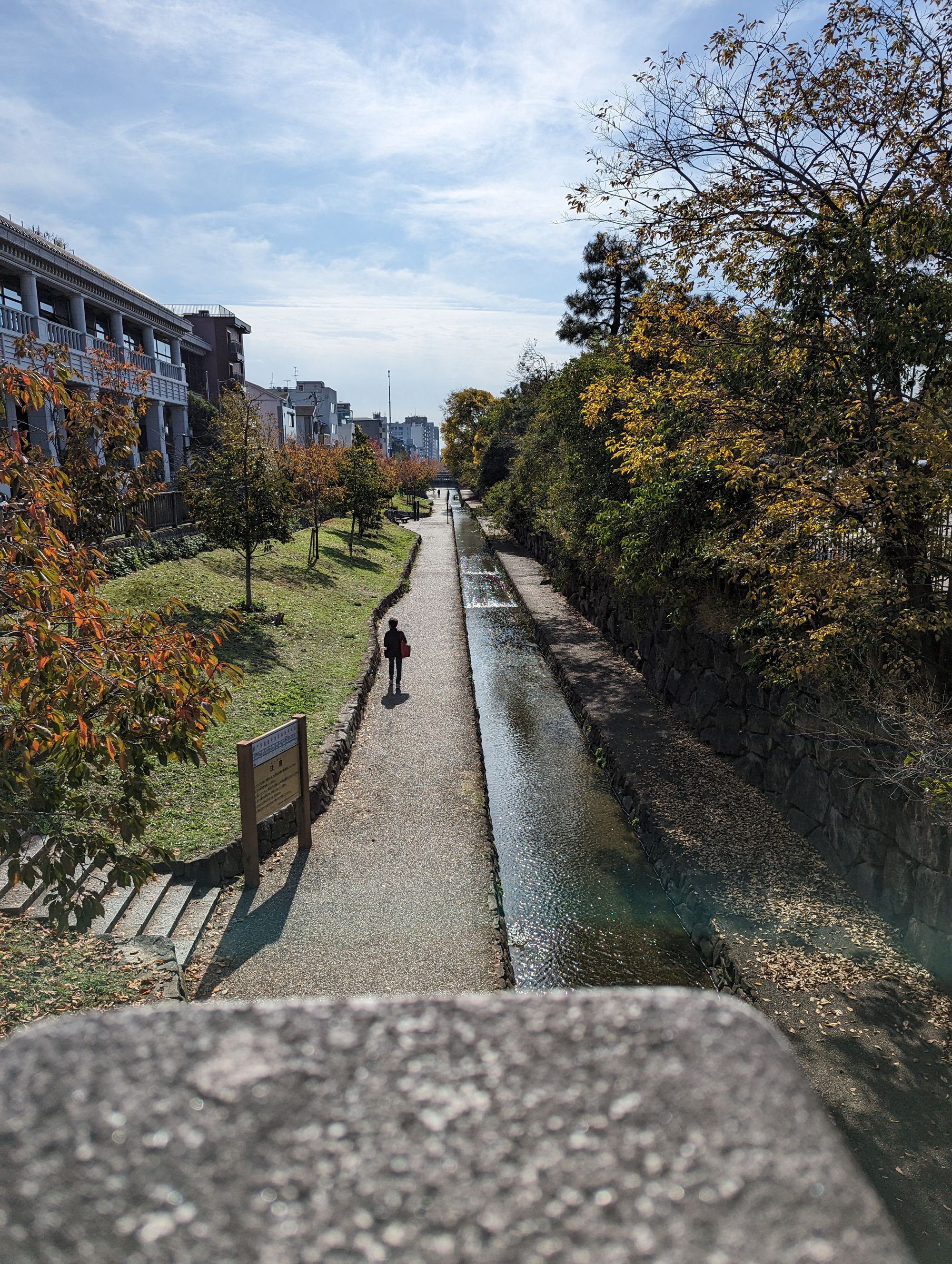
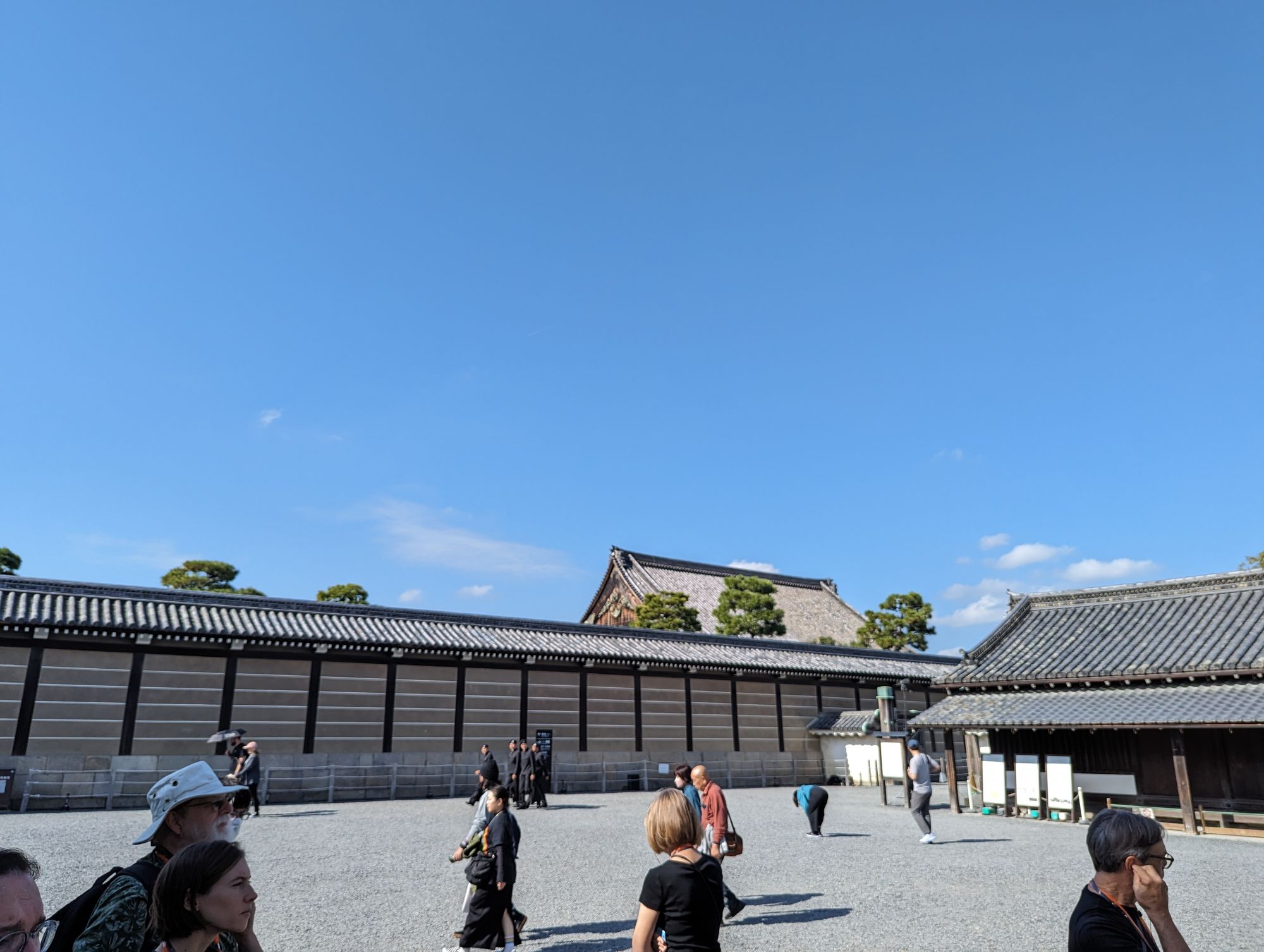
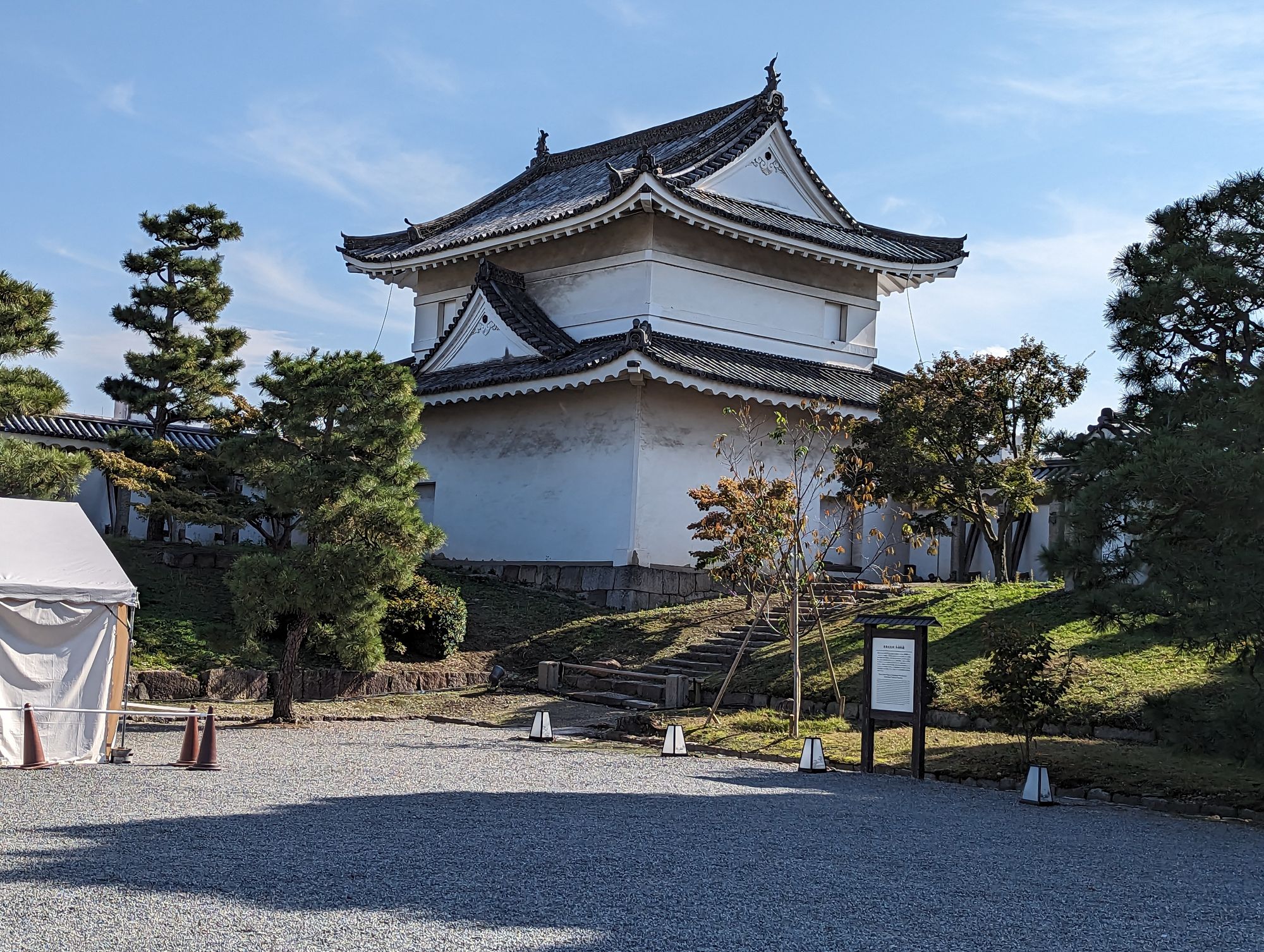
No photos were allowed inside the palace. Even though Tokugawa built it (close to the Emperor's Palace) as a show of power, it was eventually given to the emperor generations later, when Japan decided to give power back to the emperor.
Tokugawa's style was masculine--with big, bold stones, pine trees, and water very prominent in the artwork and gardens.
When the emperor took it over, he added his mark-more feminine-often covering some of the original artwork that Tokugawa had commissioned (mostly on the ceilings--it seemed that all the sliding wall panels were left untouched.
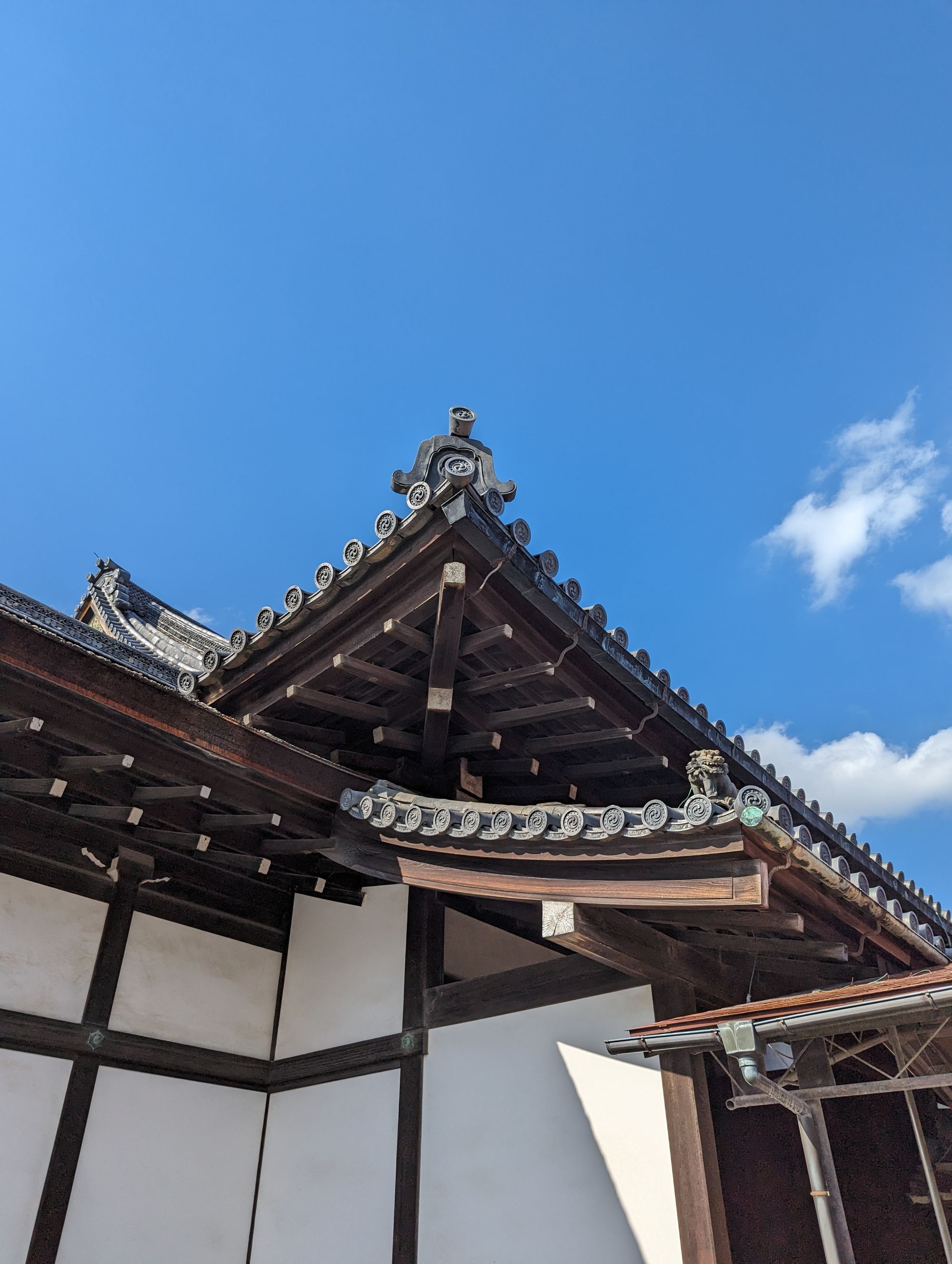
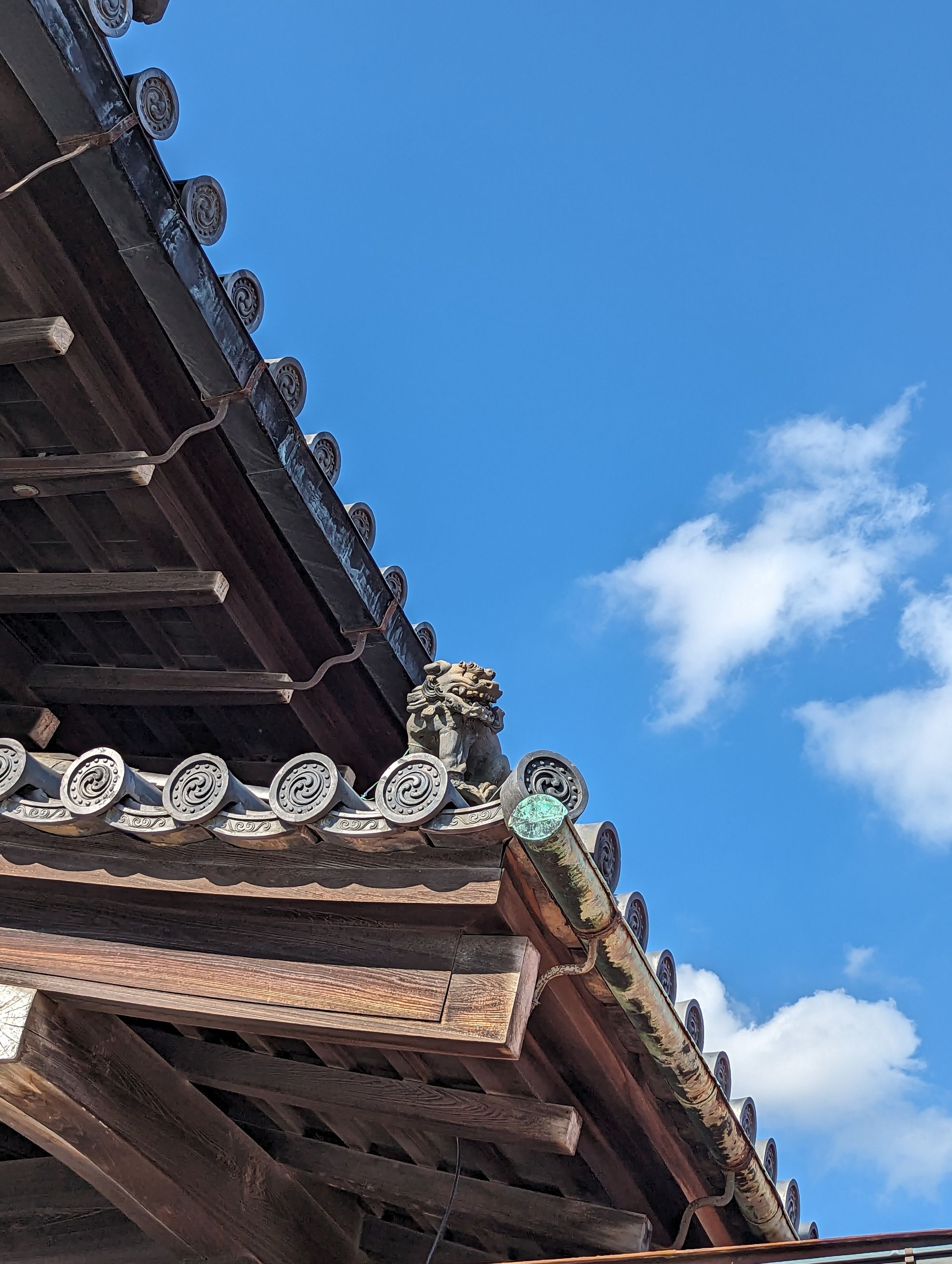
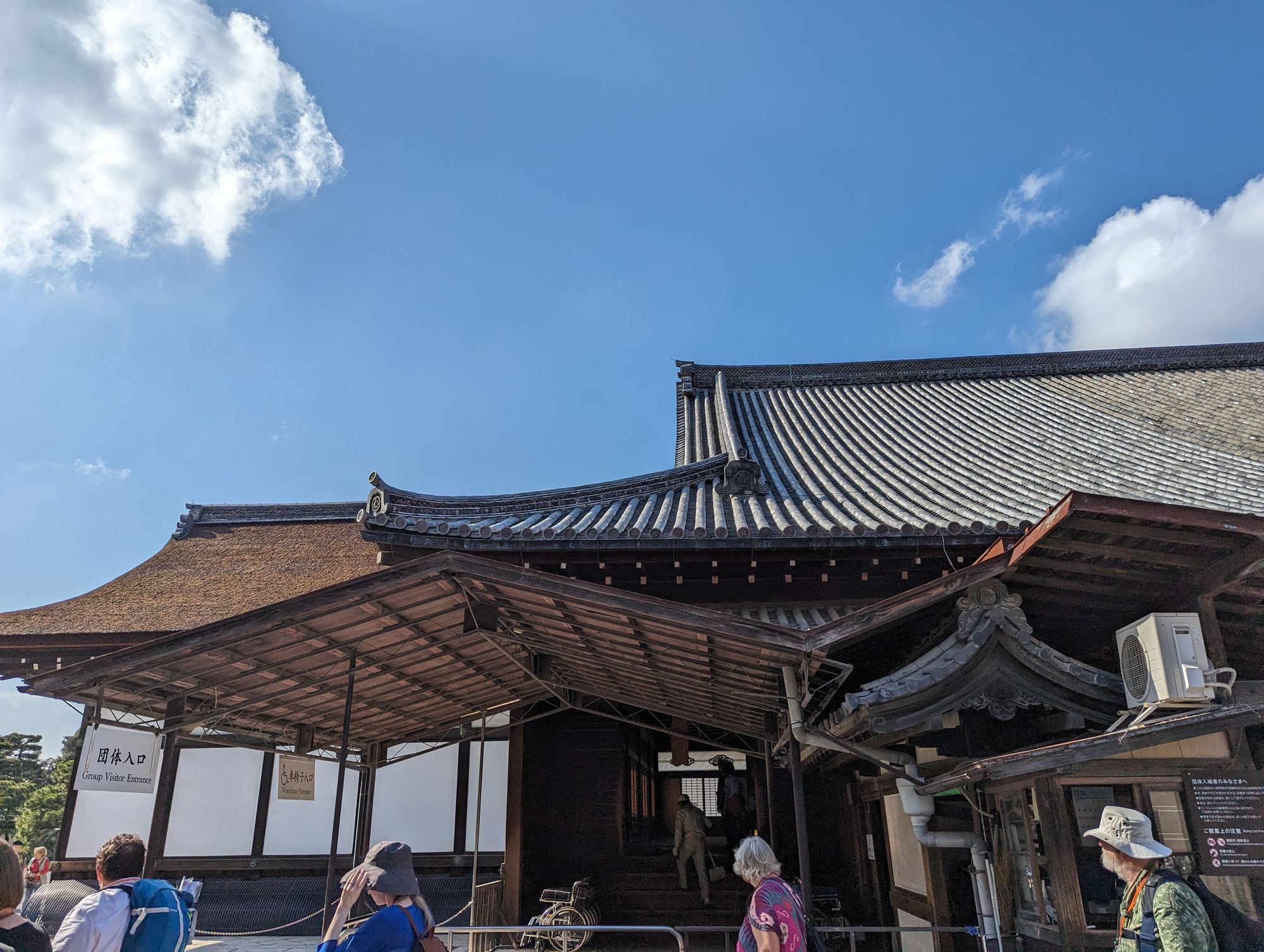
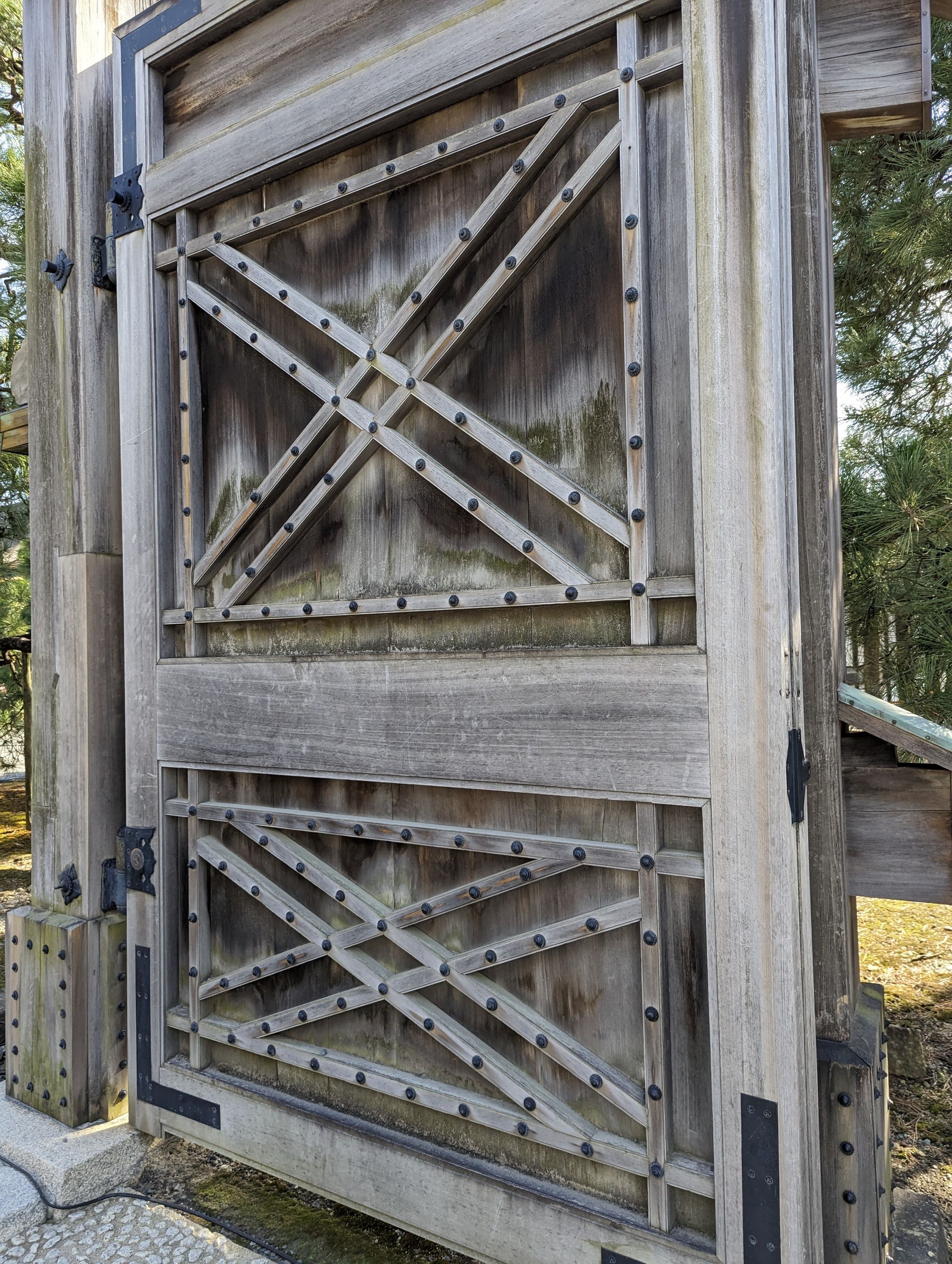
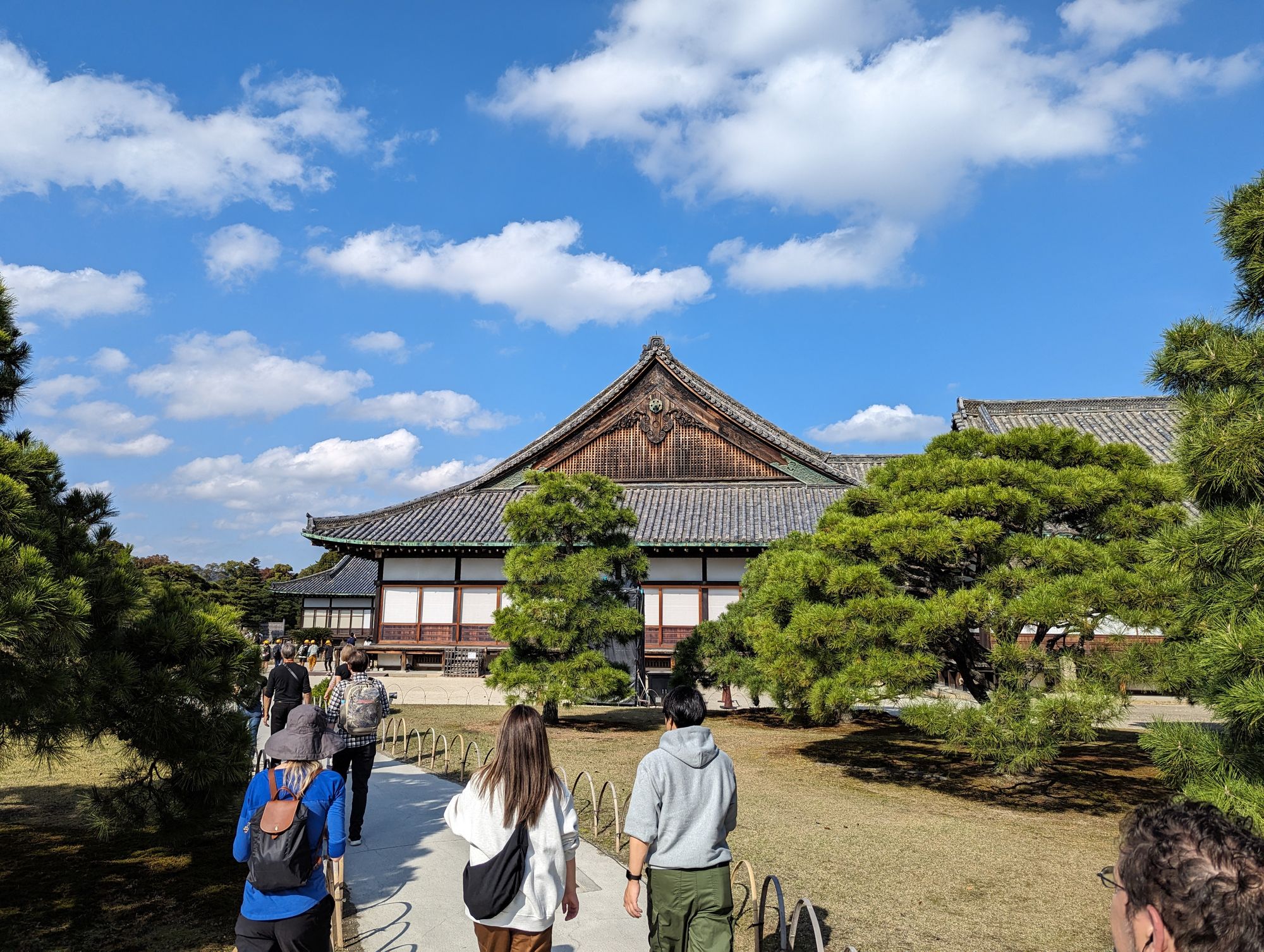
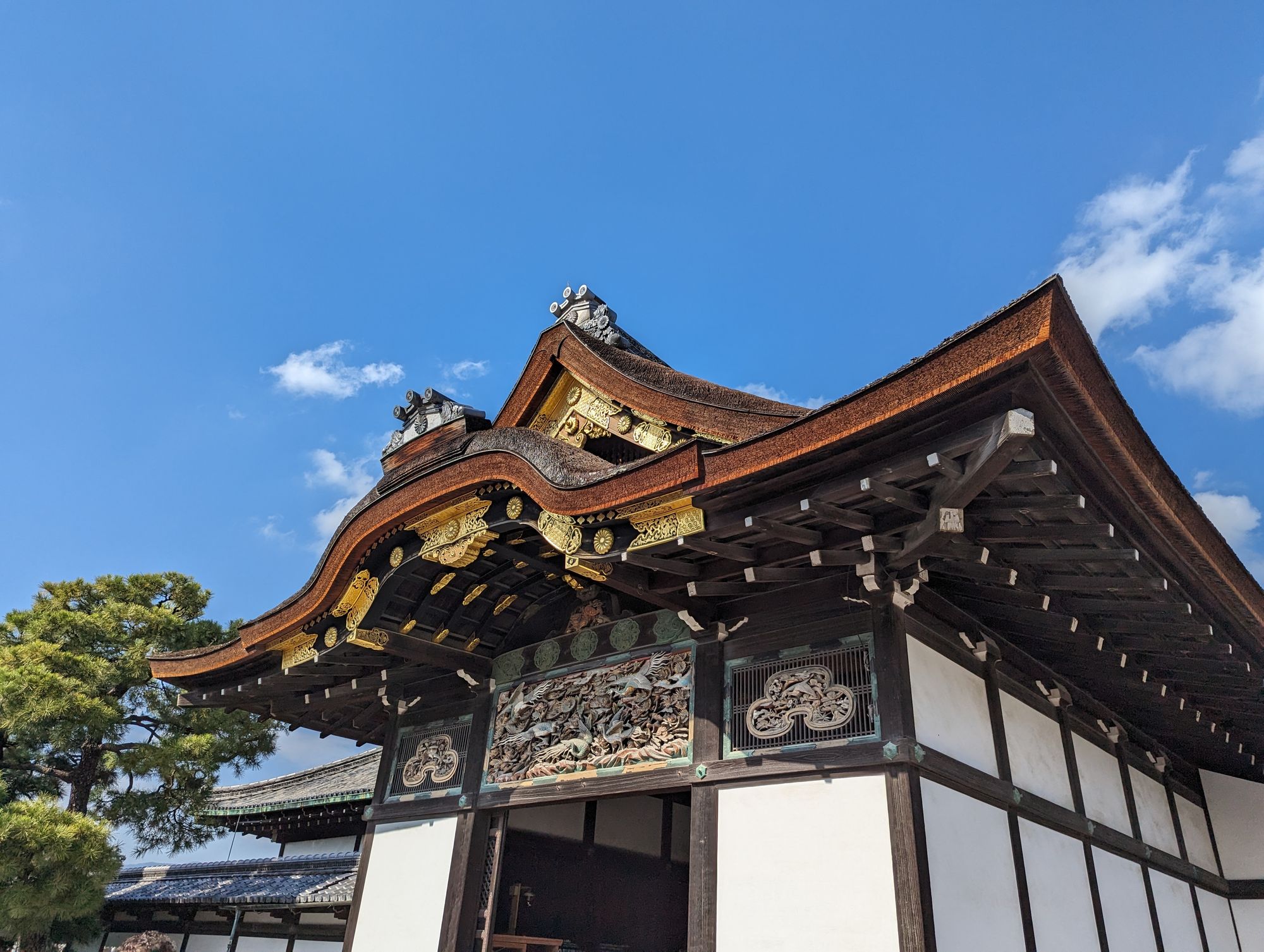
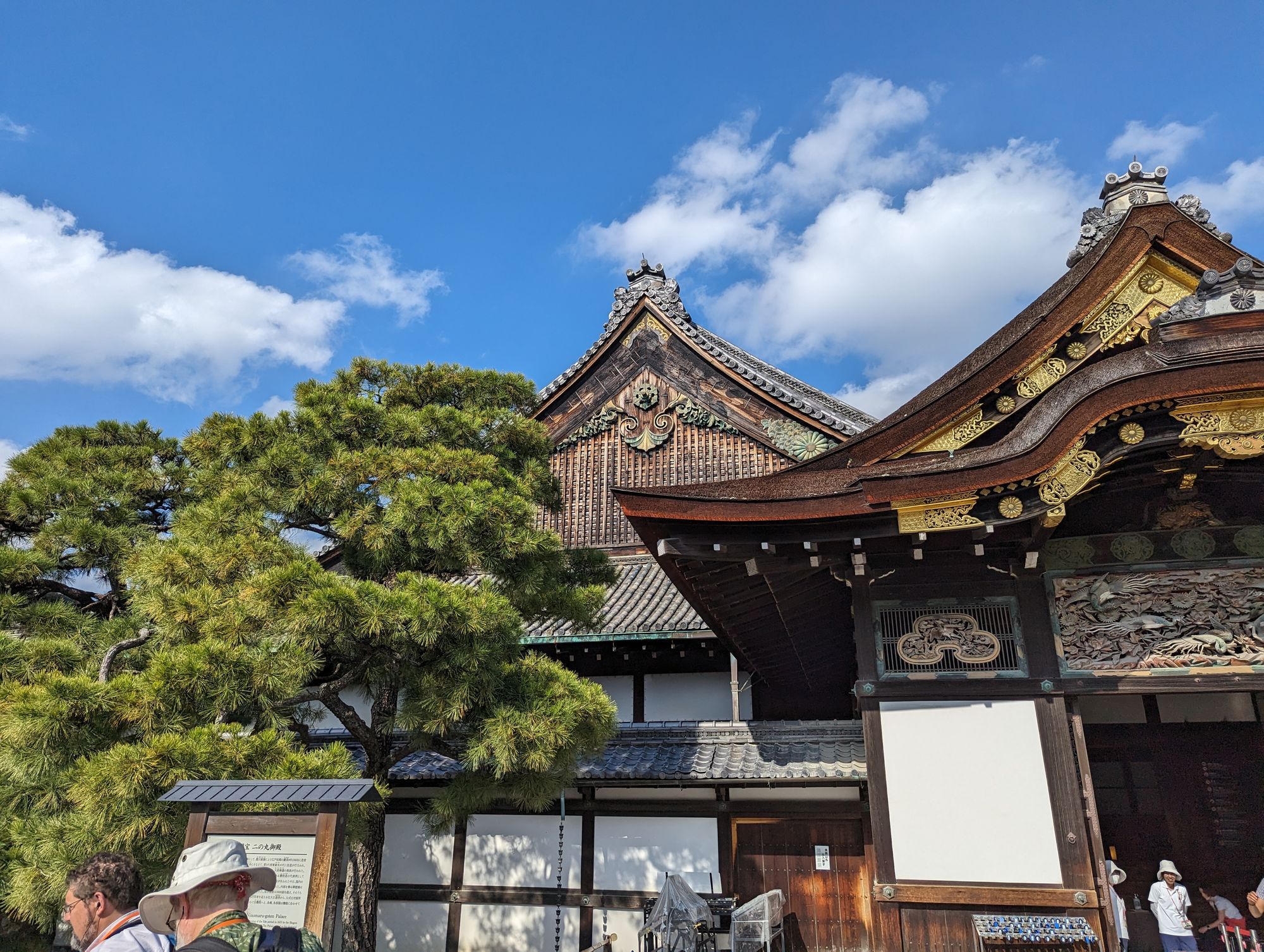
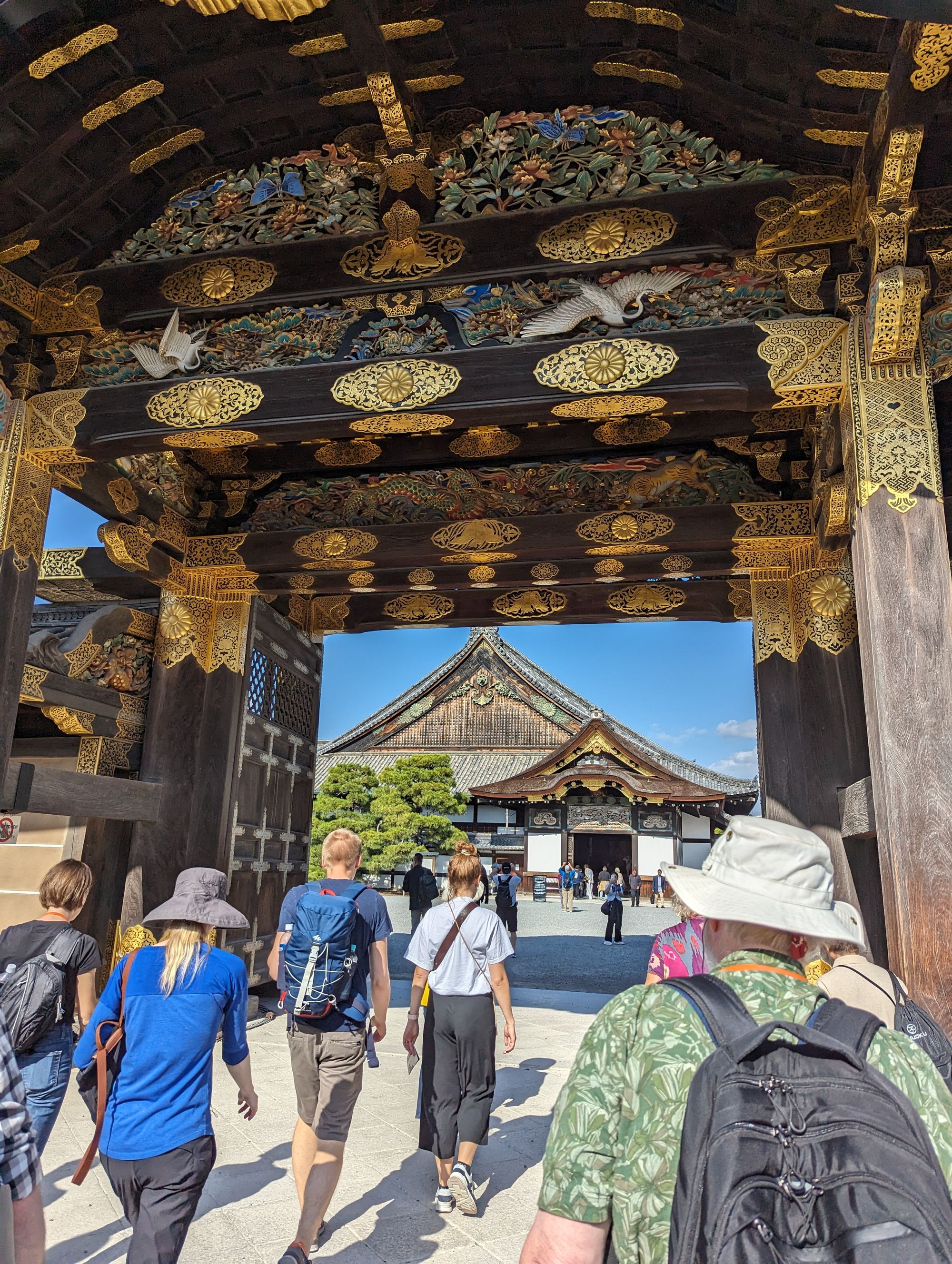
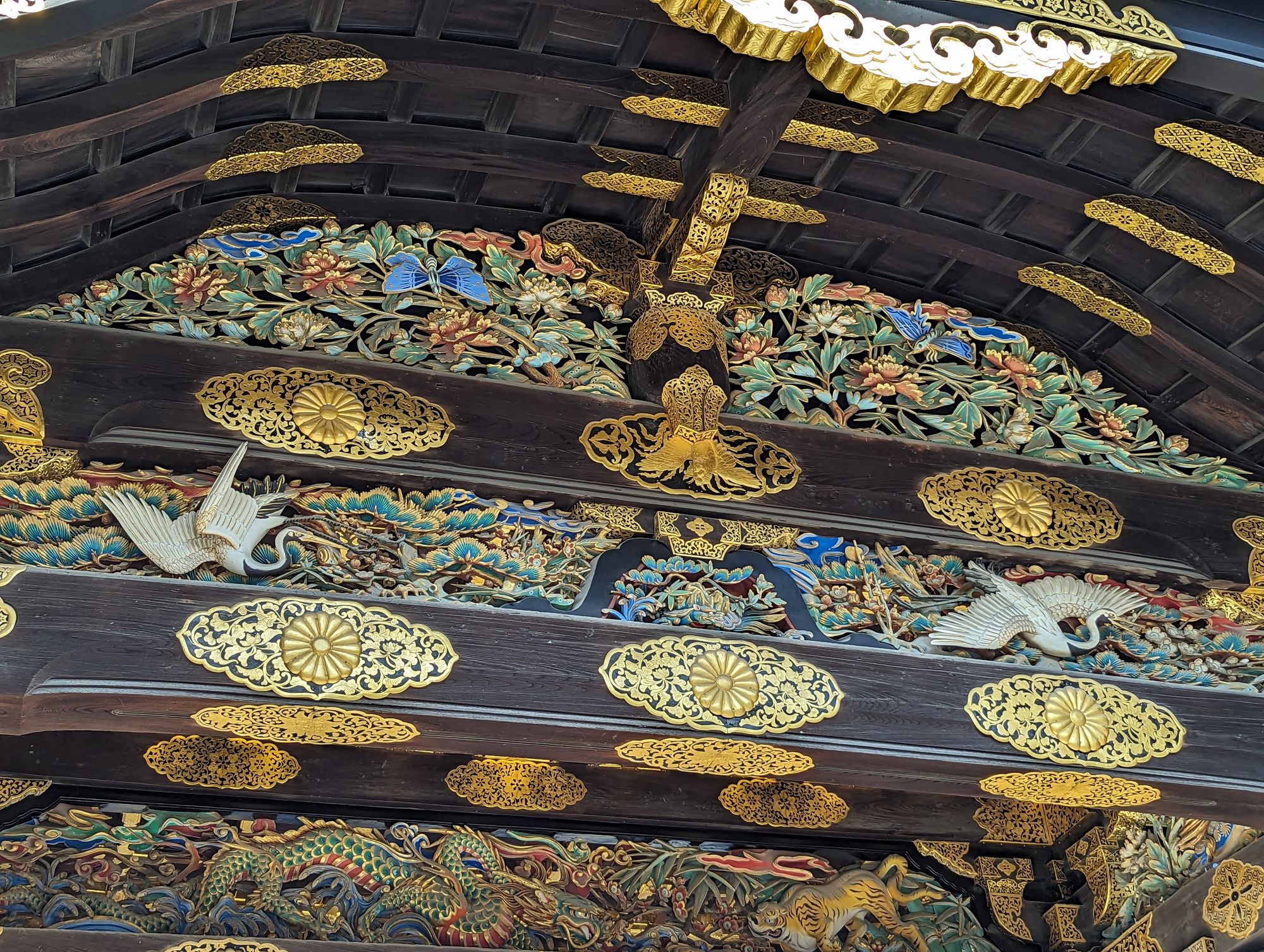
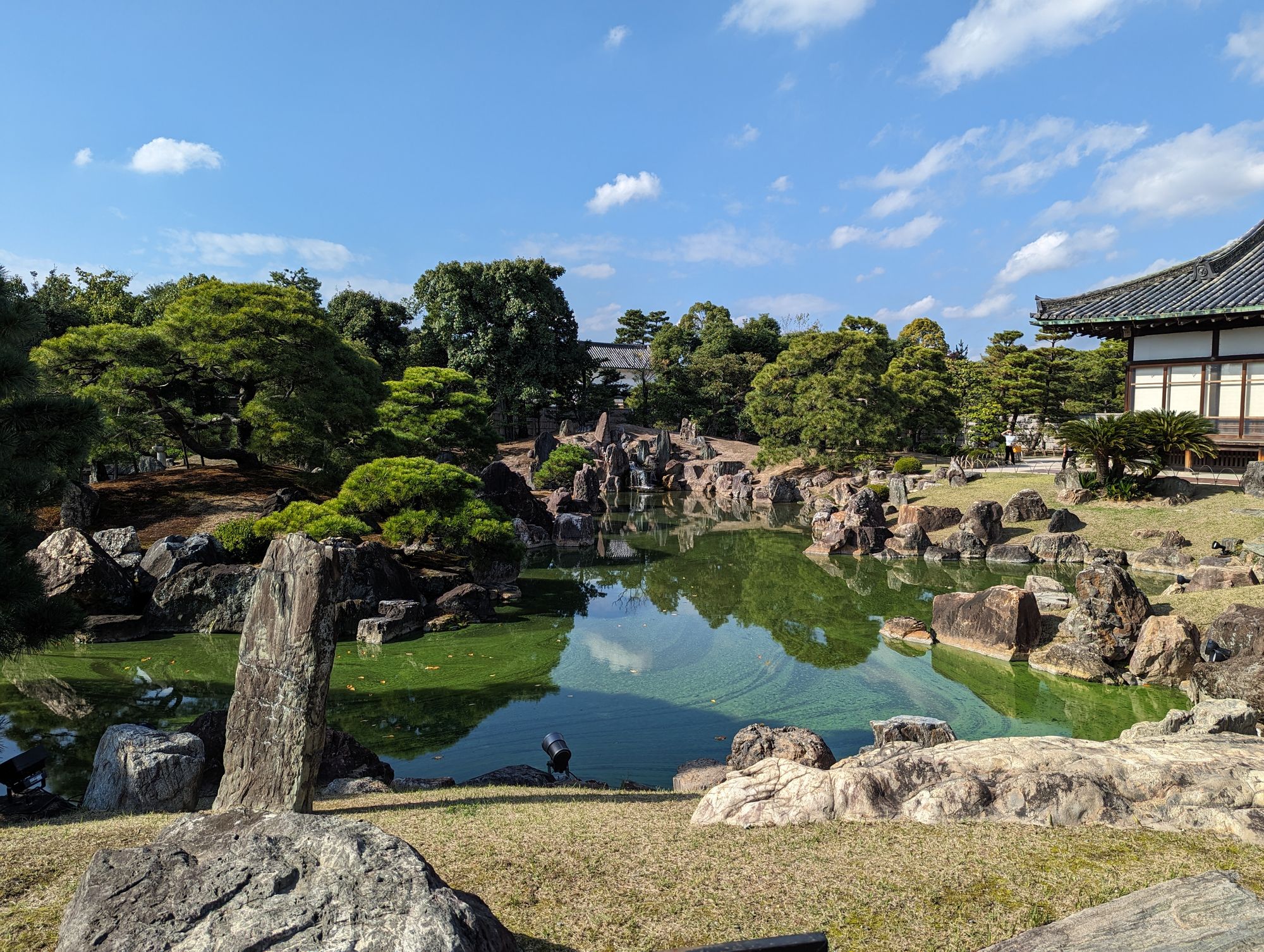
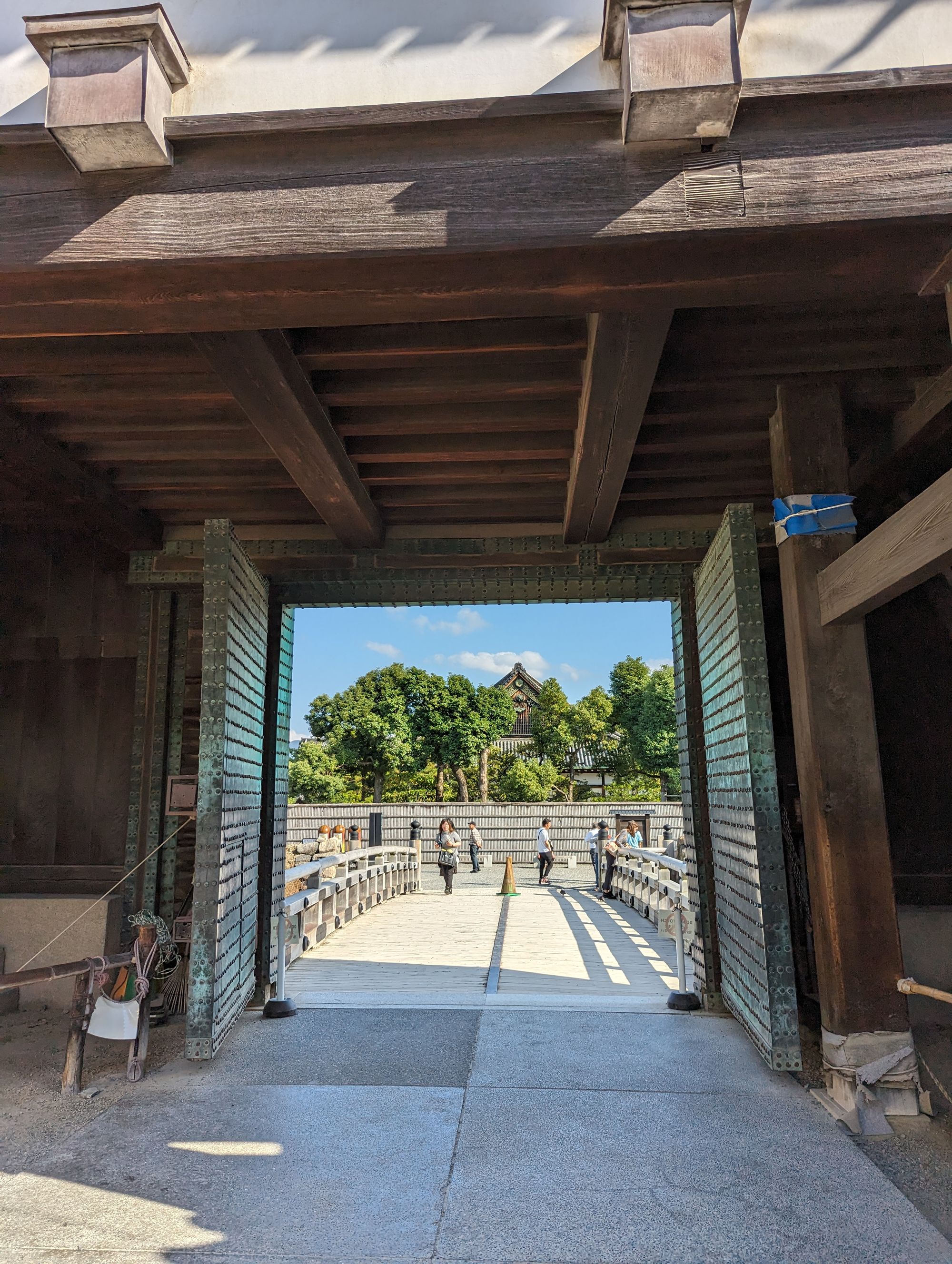
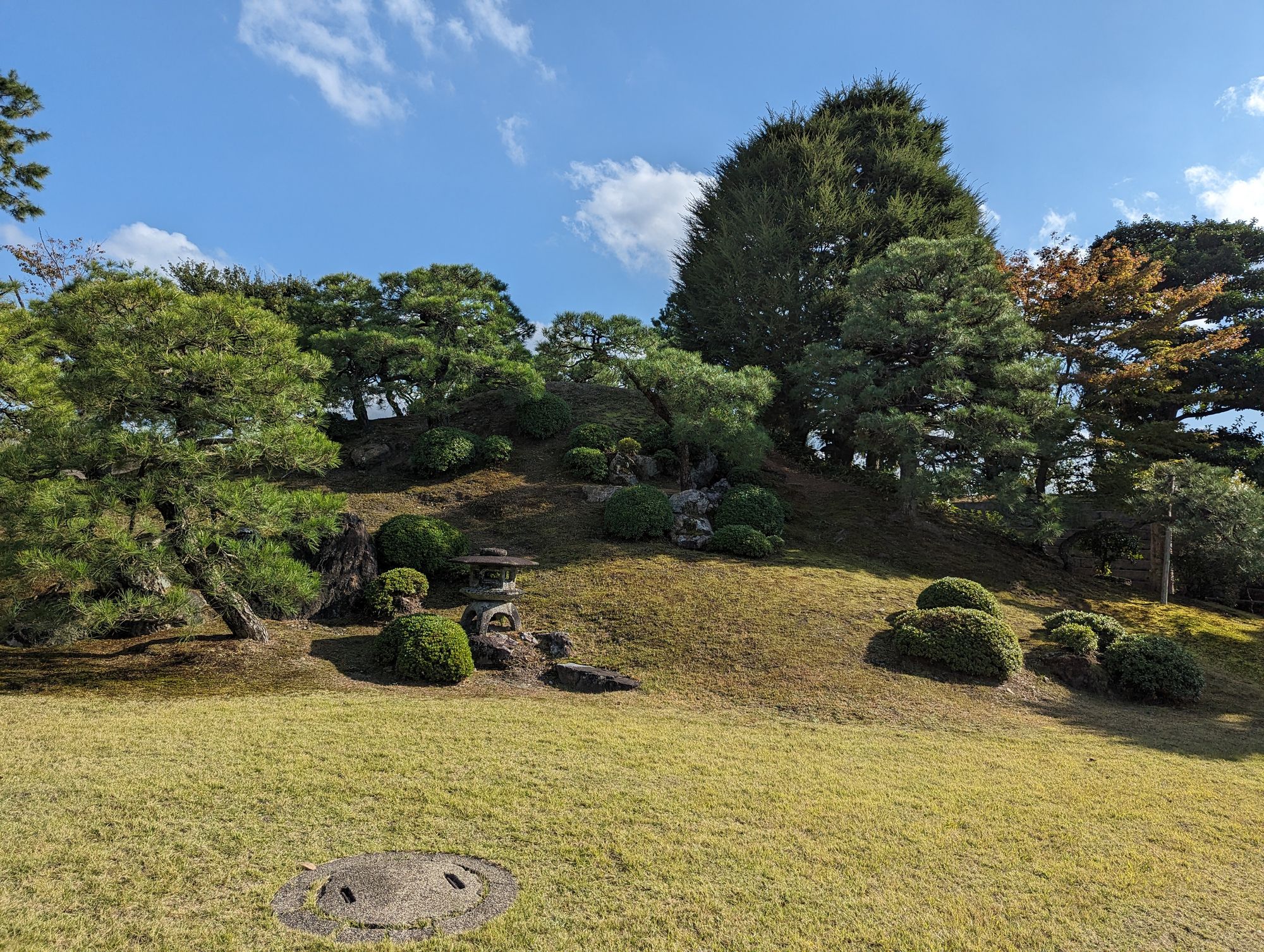
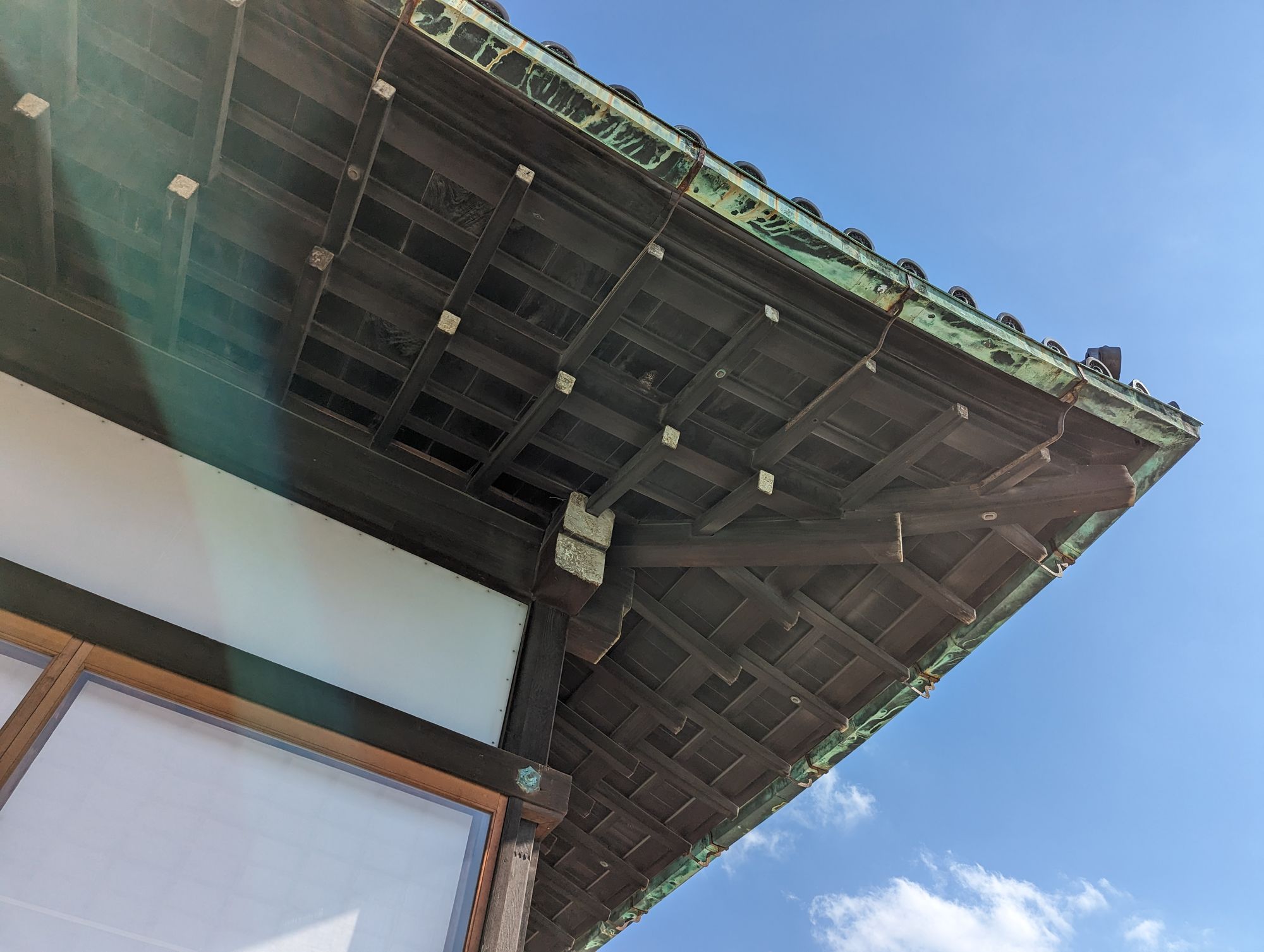
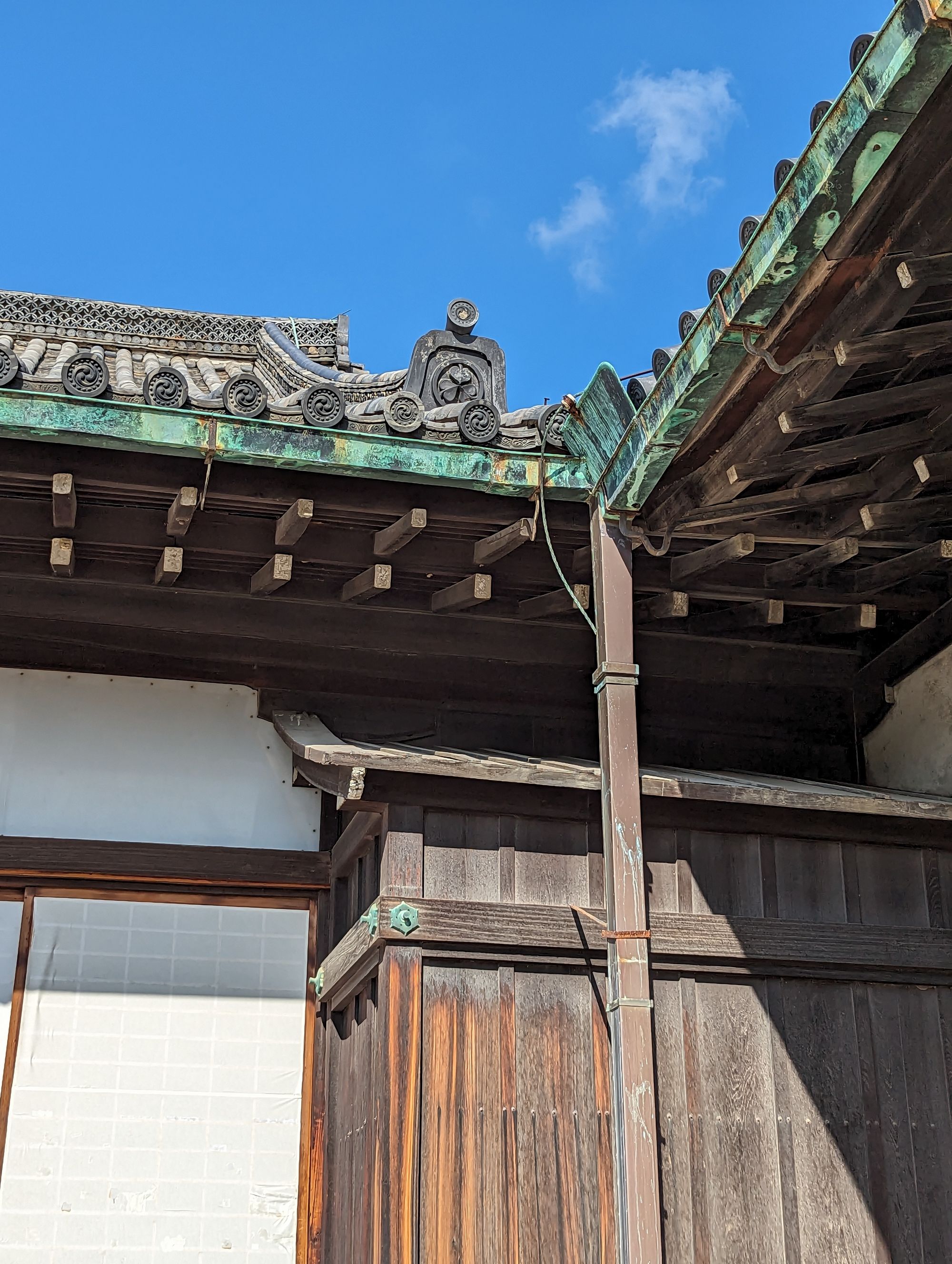
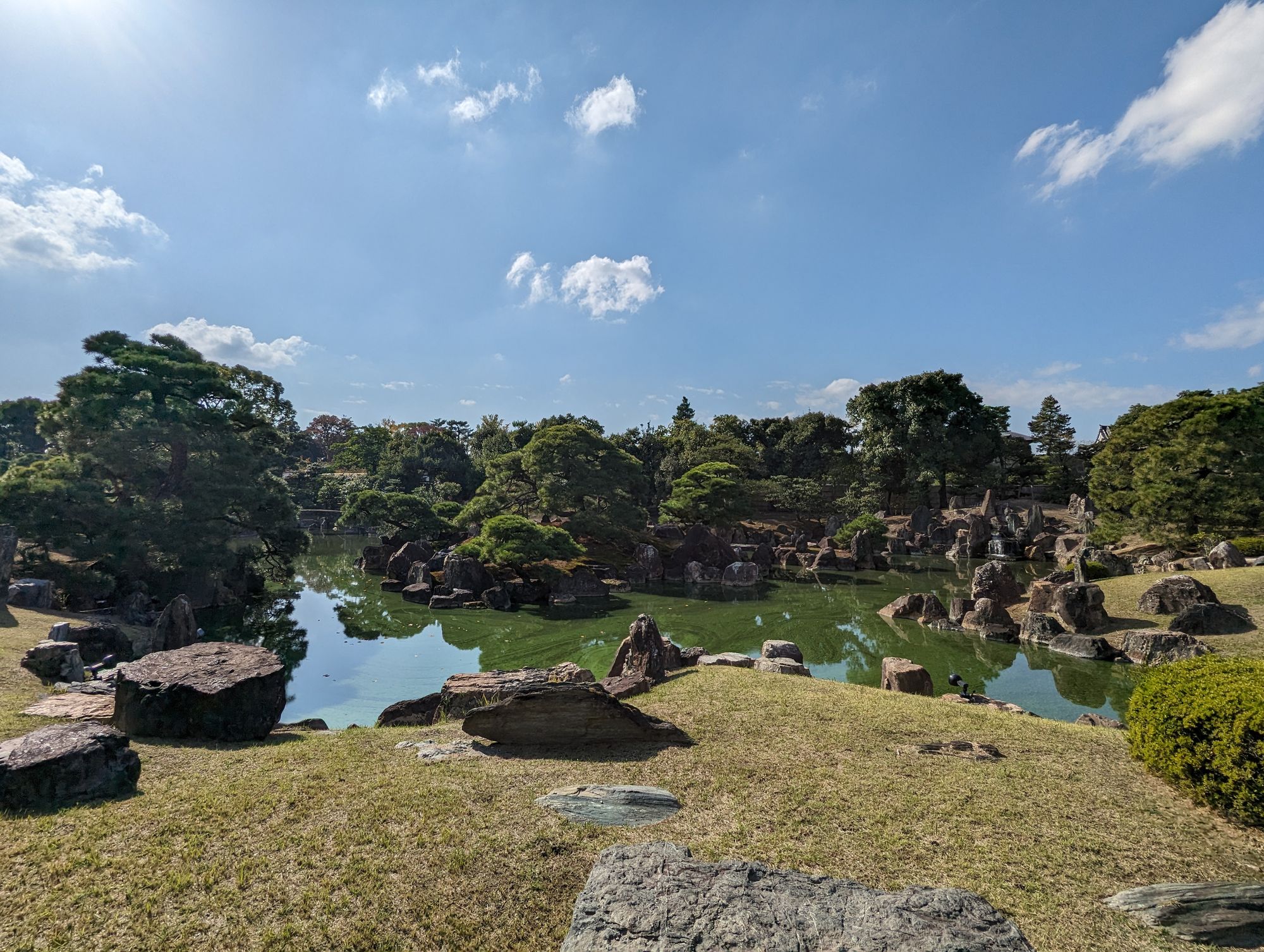
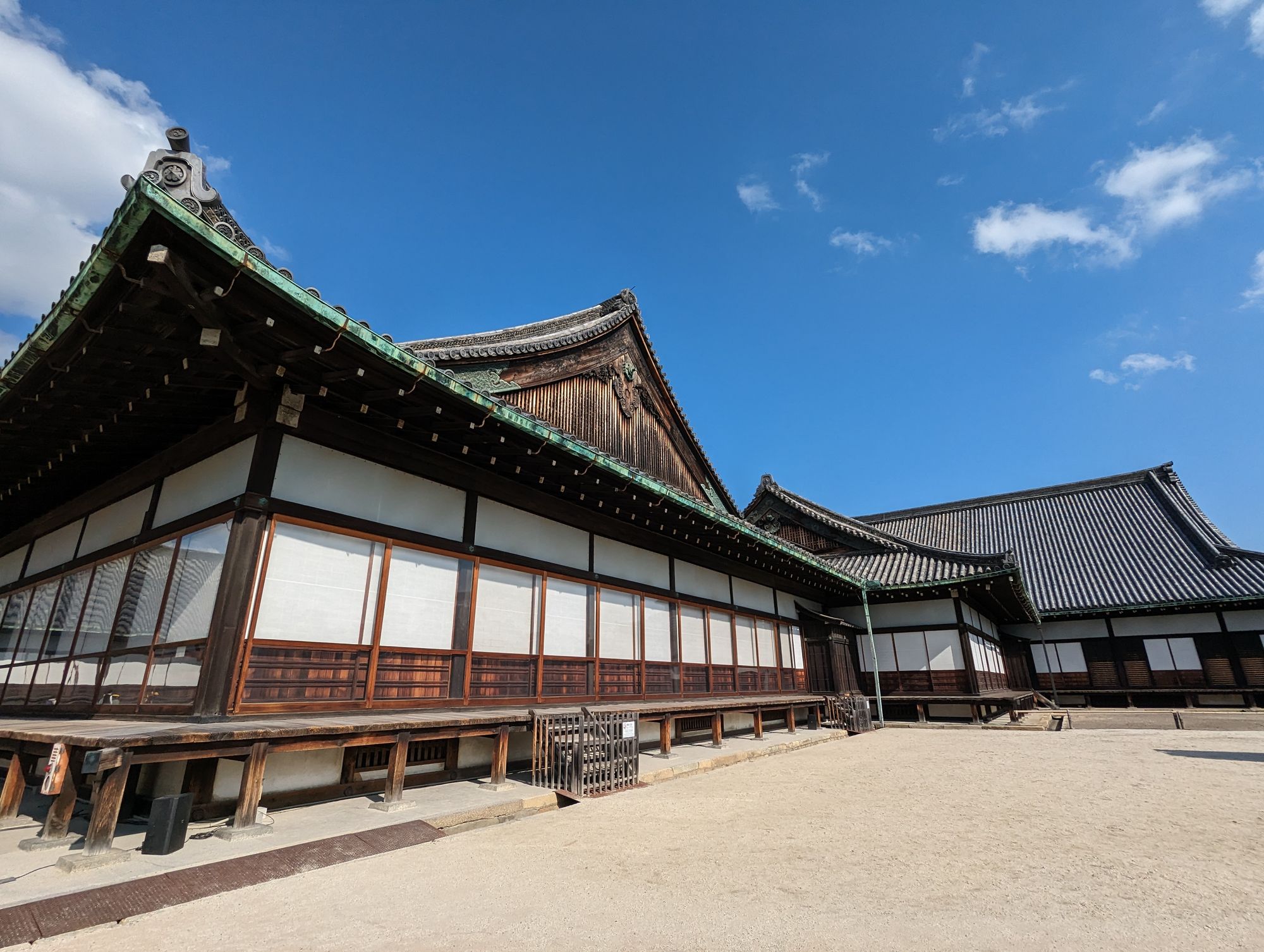
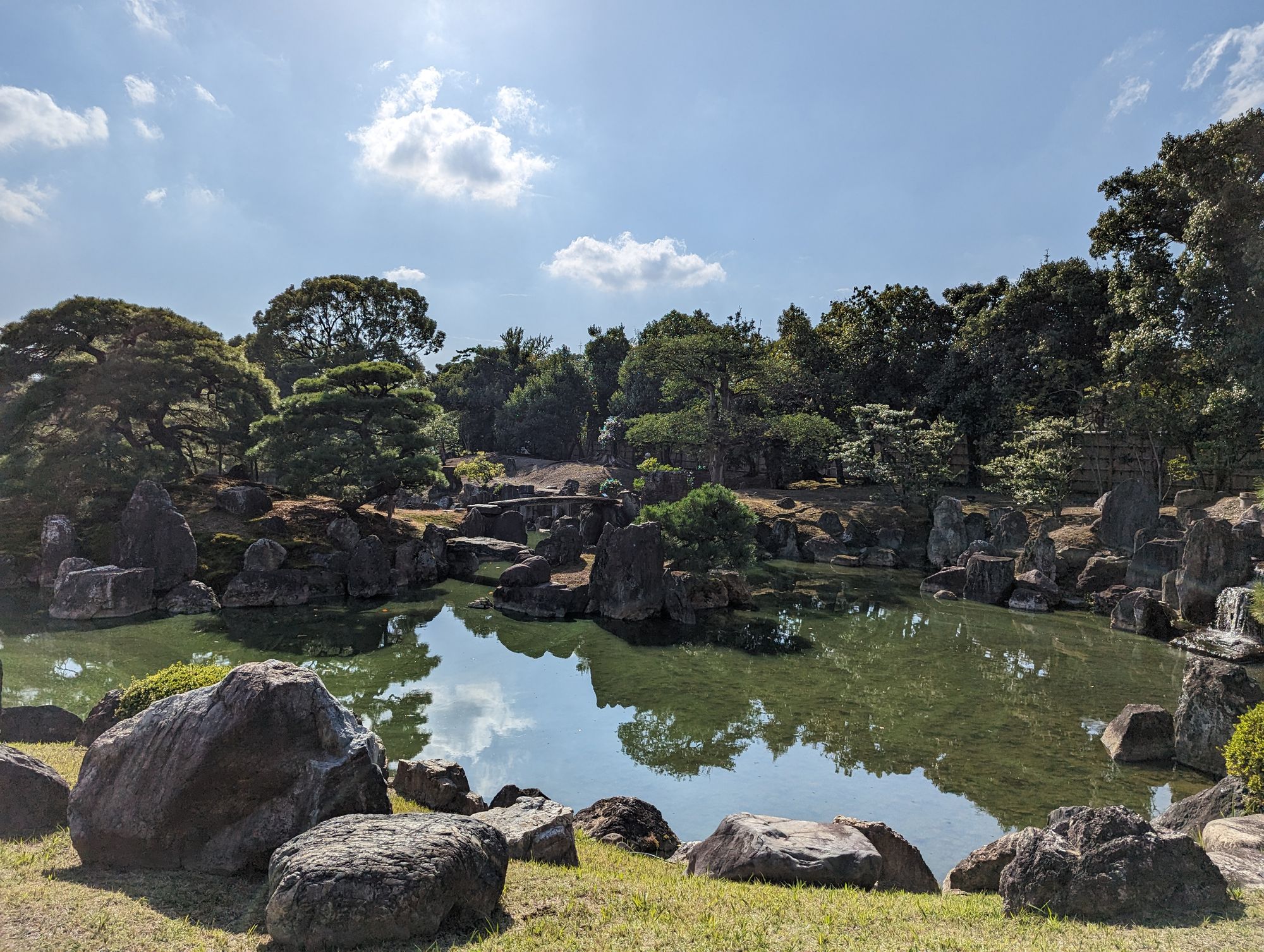
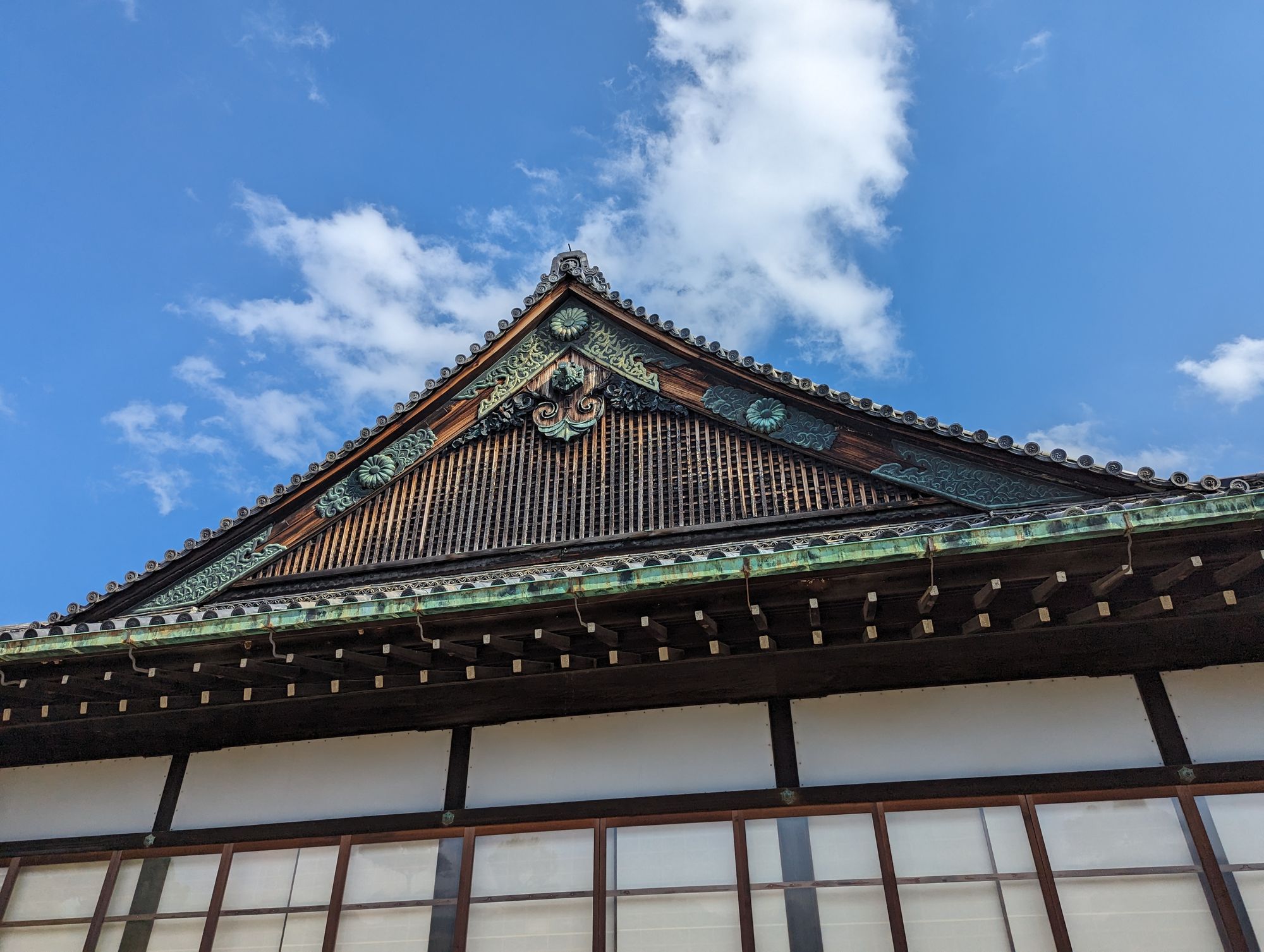
Finally, the last castle of the day, Kyoto Imperial Palace (which is on the same grounds as the Sento Imperial Palace). Not my words:
The city of Kyoto was home to the Imperial Residence since the relocation of the capital by Emperor Kanmu in 794. The present Kyoto Imperial Palace had been used as the residence of Emperors for 500 years since 1331 until the capital moved to Tokyo in 1869. The palace was repeatedly plagued by fire and was rebuilt each time. Most of the present buildings were rebuilt in 1855. One can observe the transition of the architectural style through the buildings that encompass features of multiple eras from the 8th century.
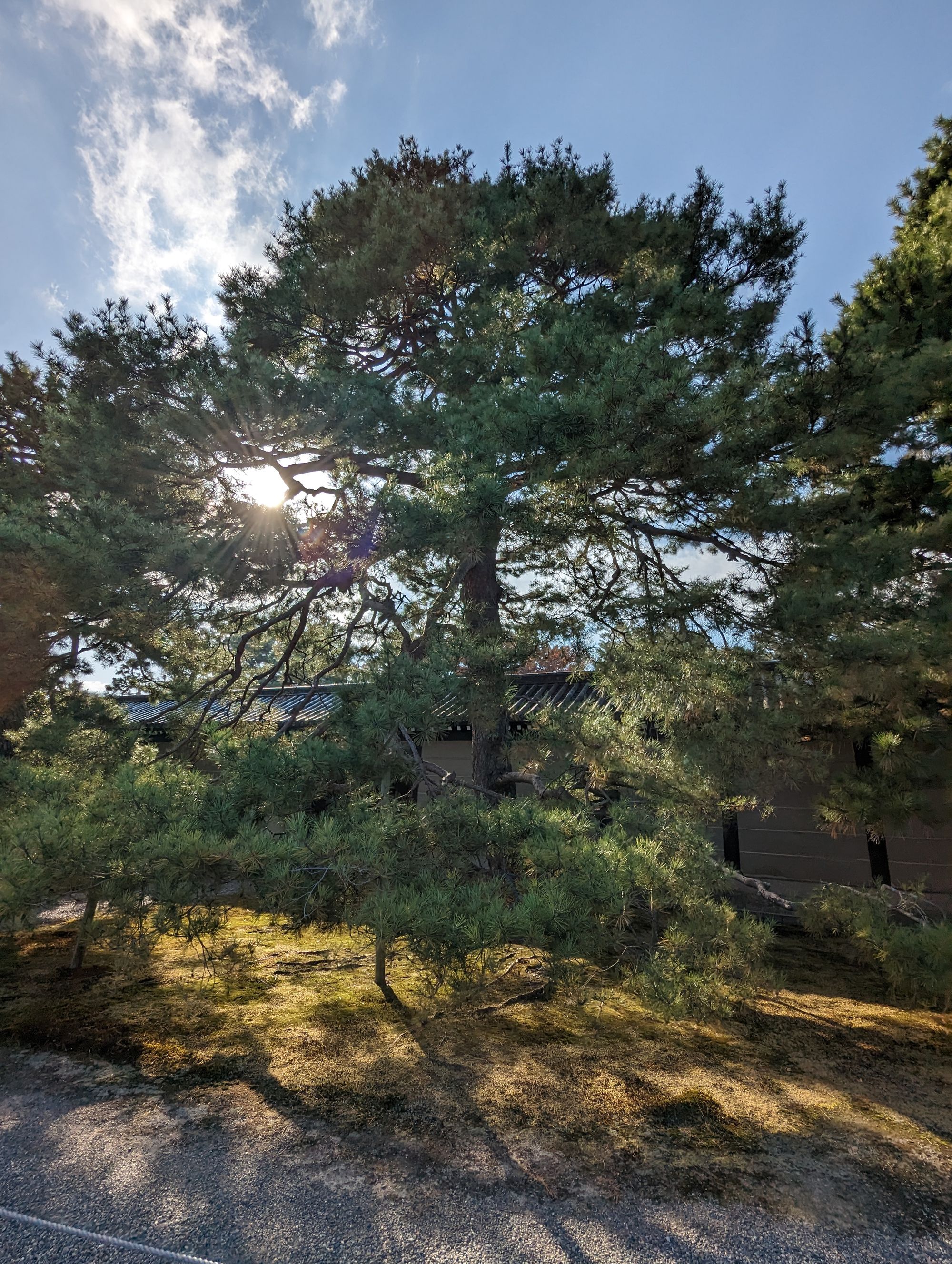
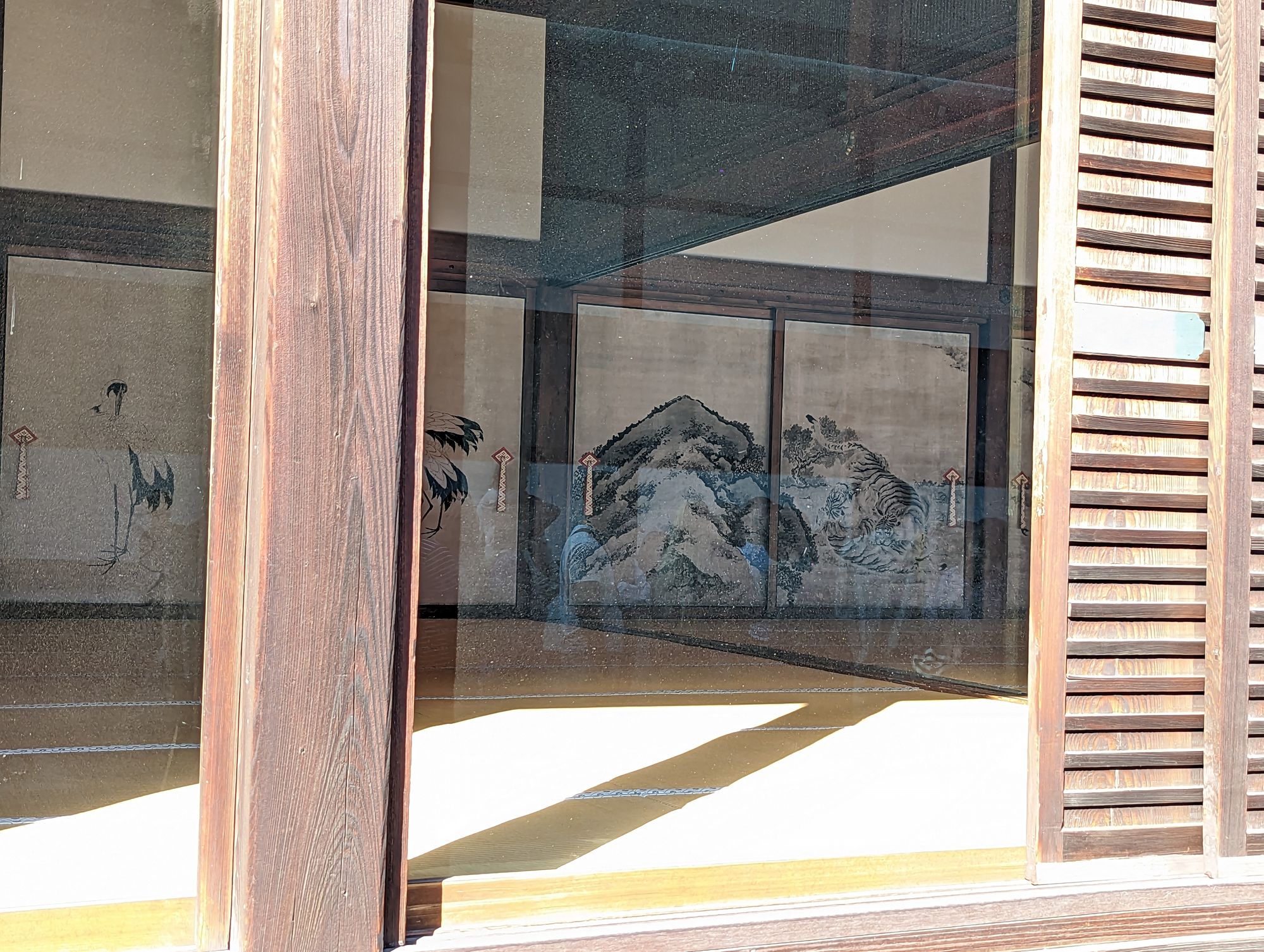
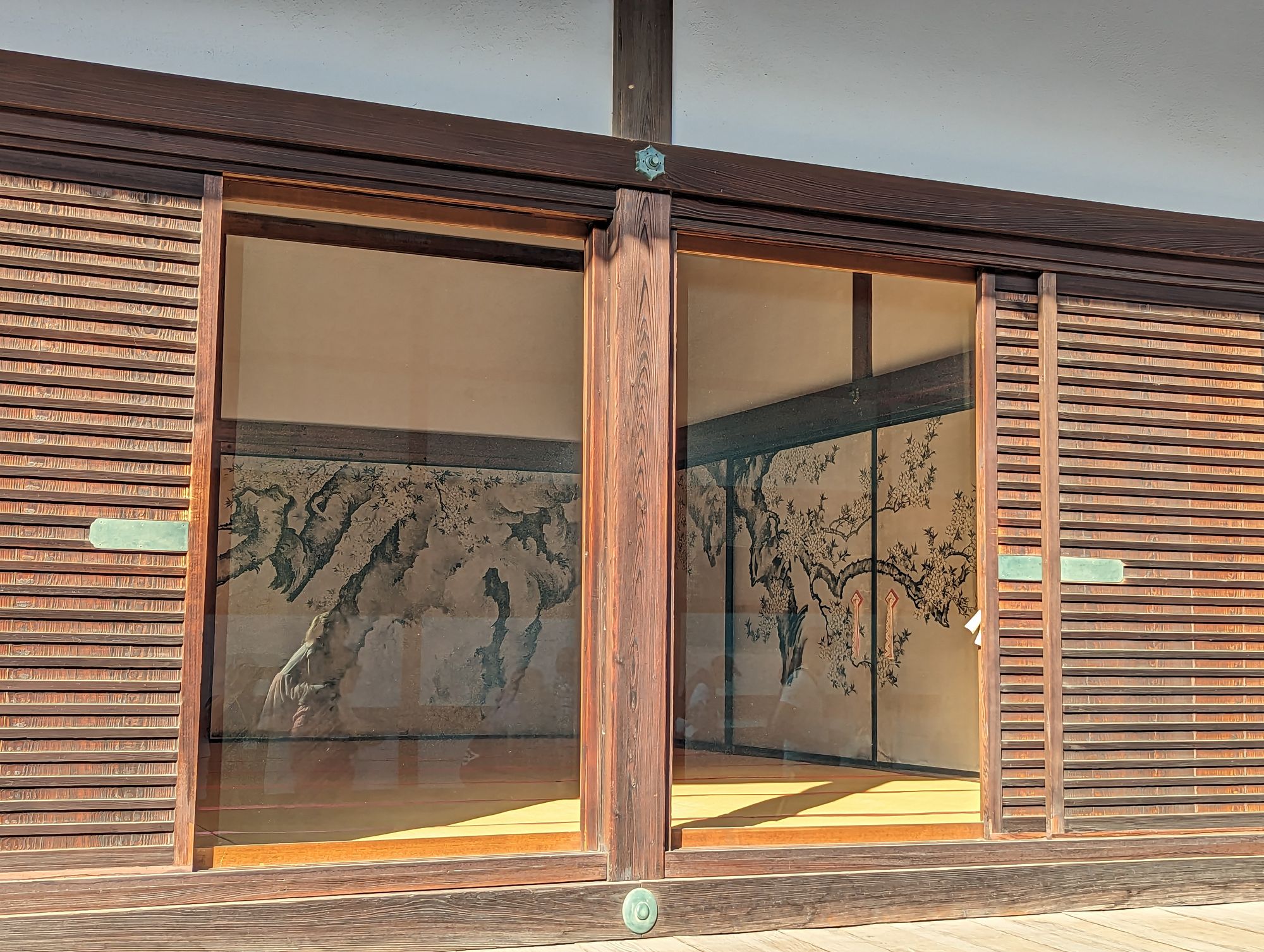
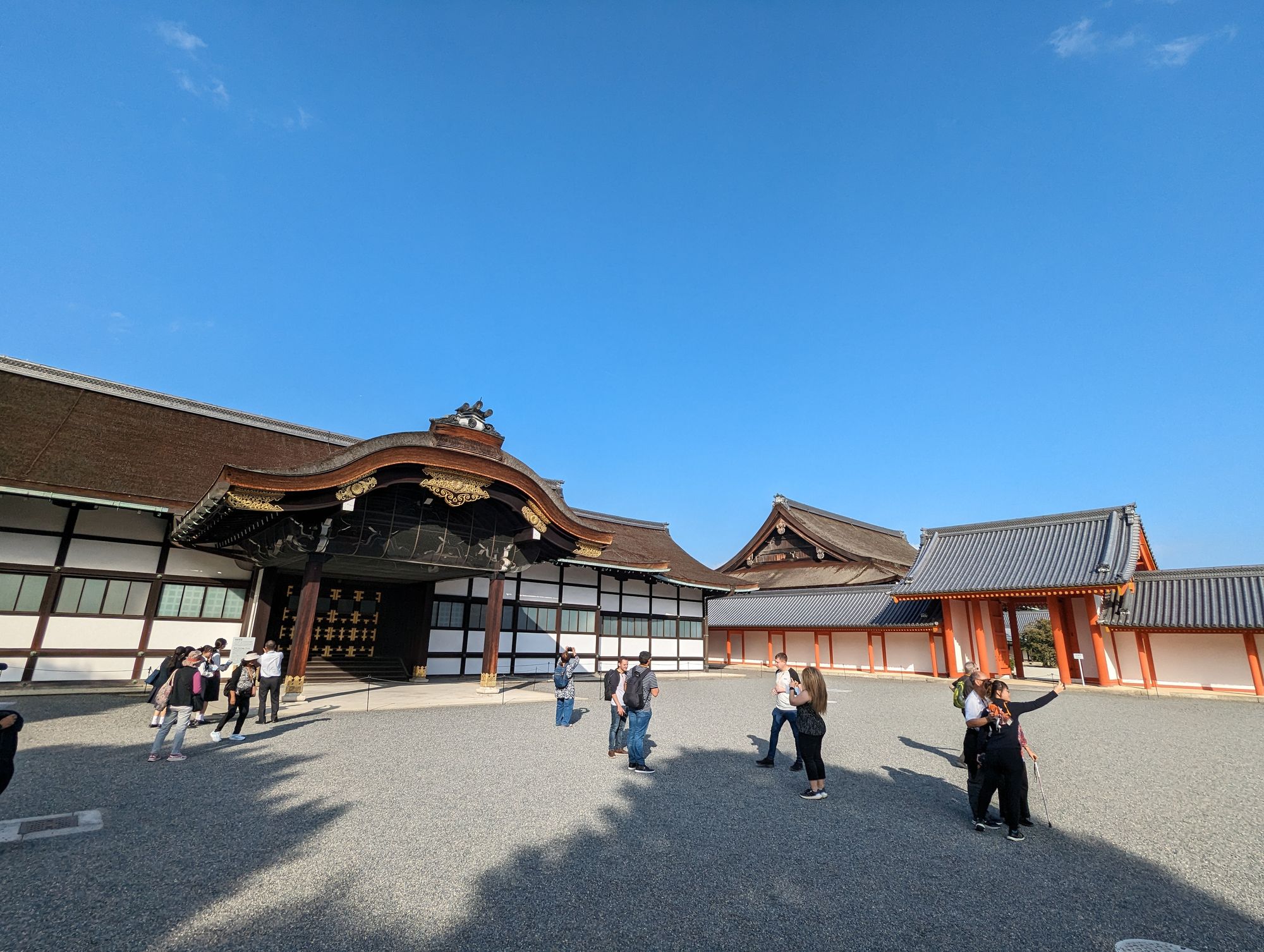
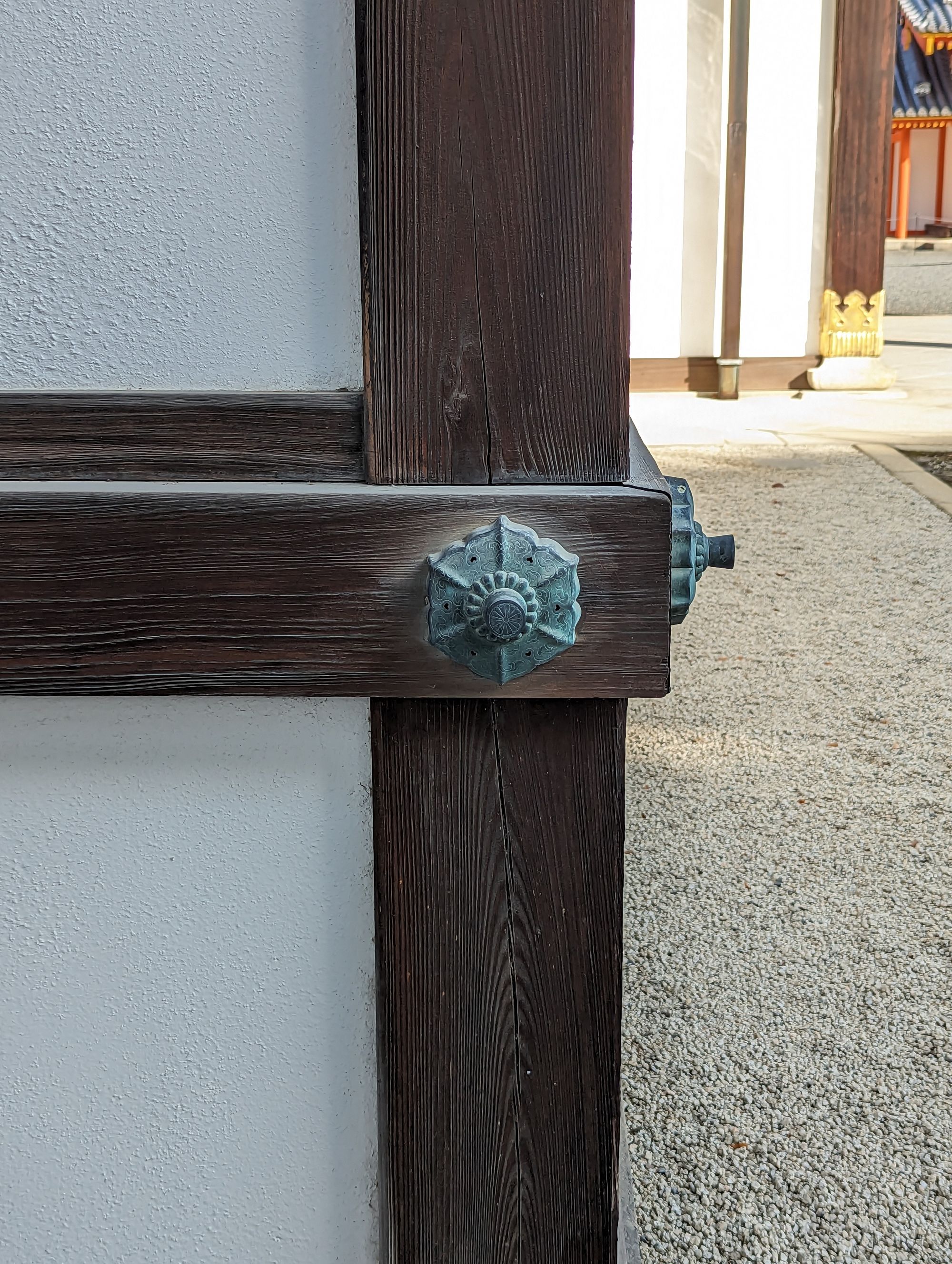
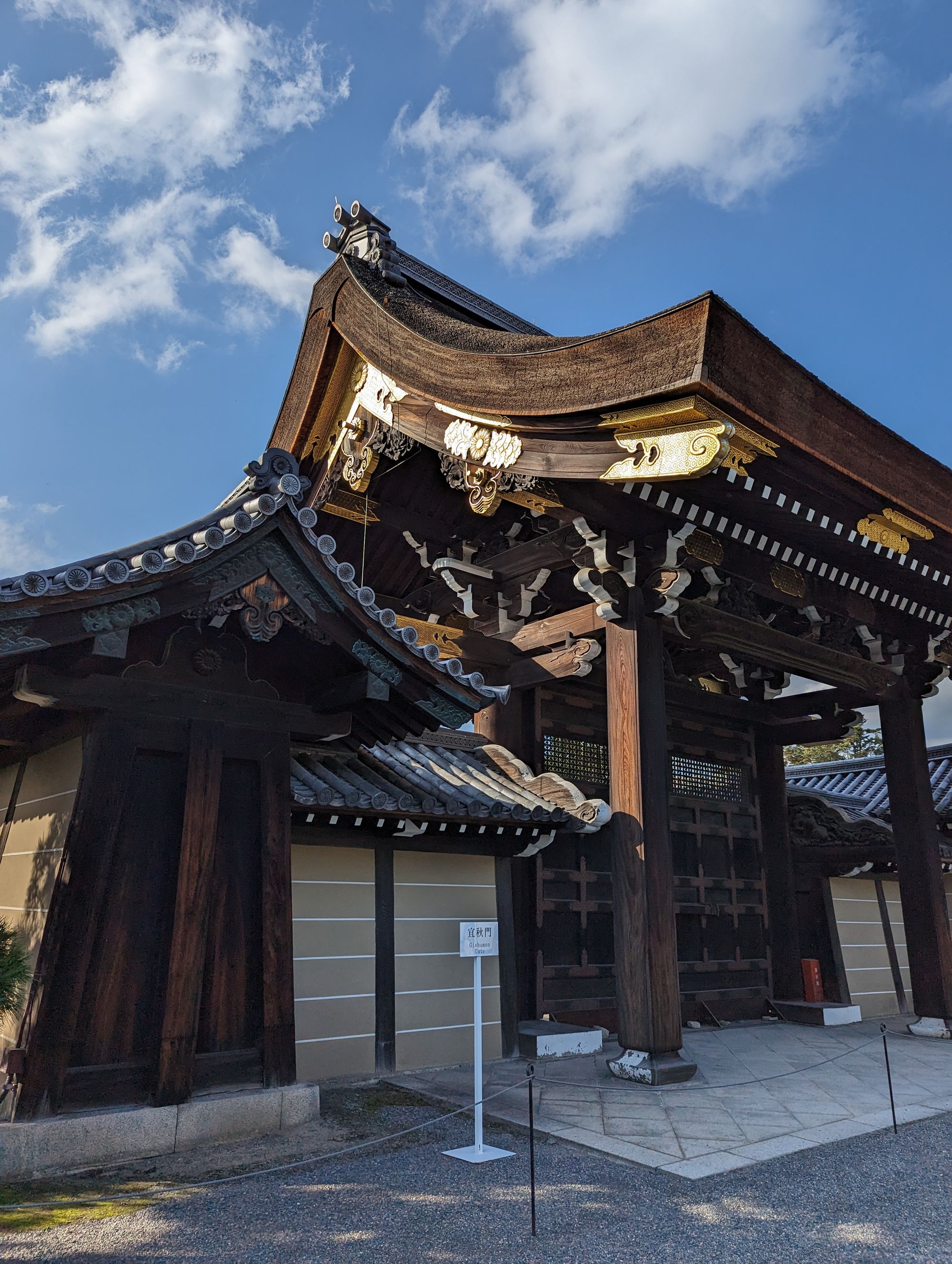
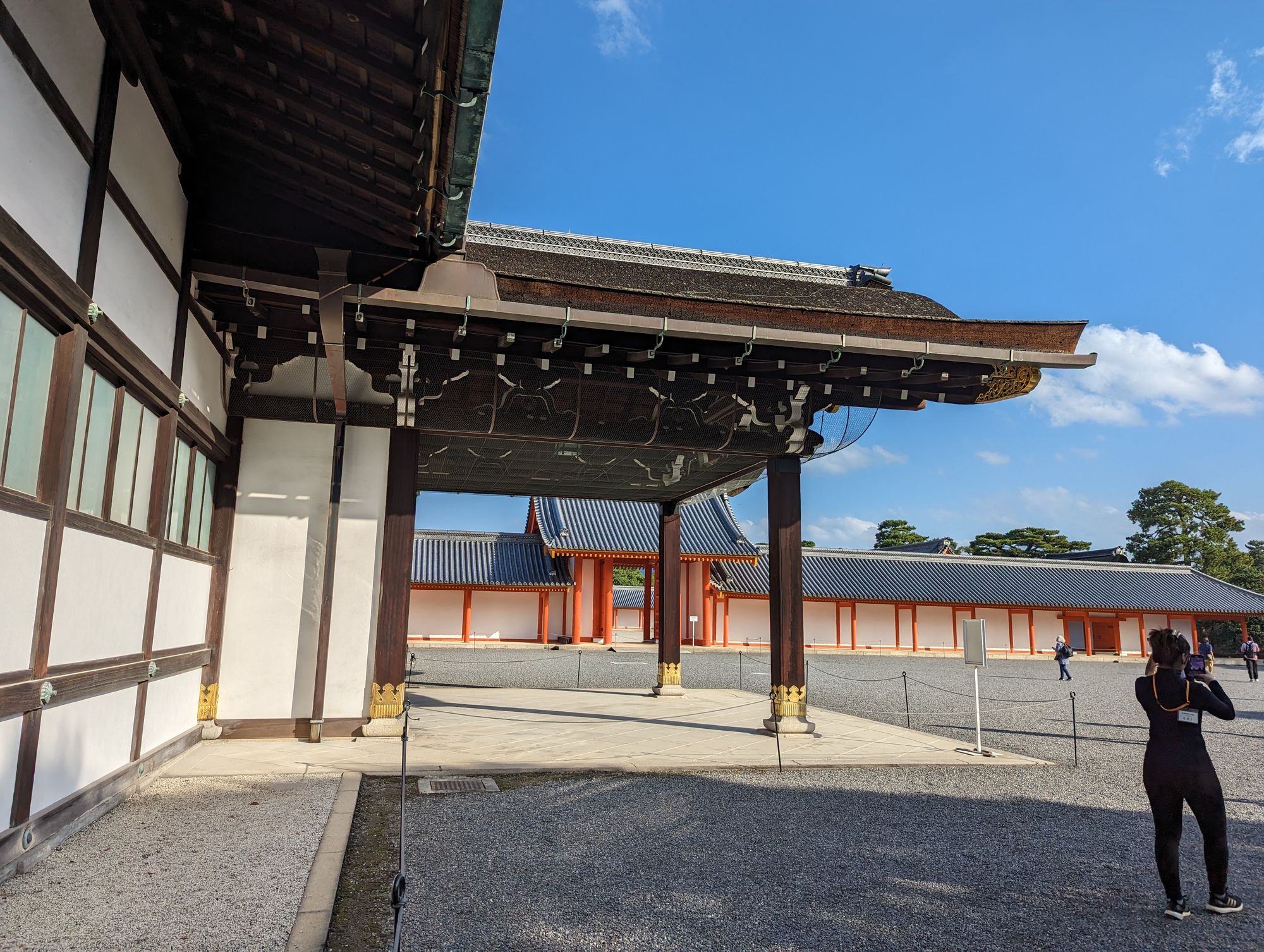
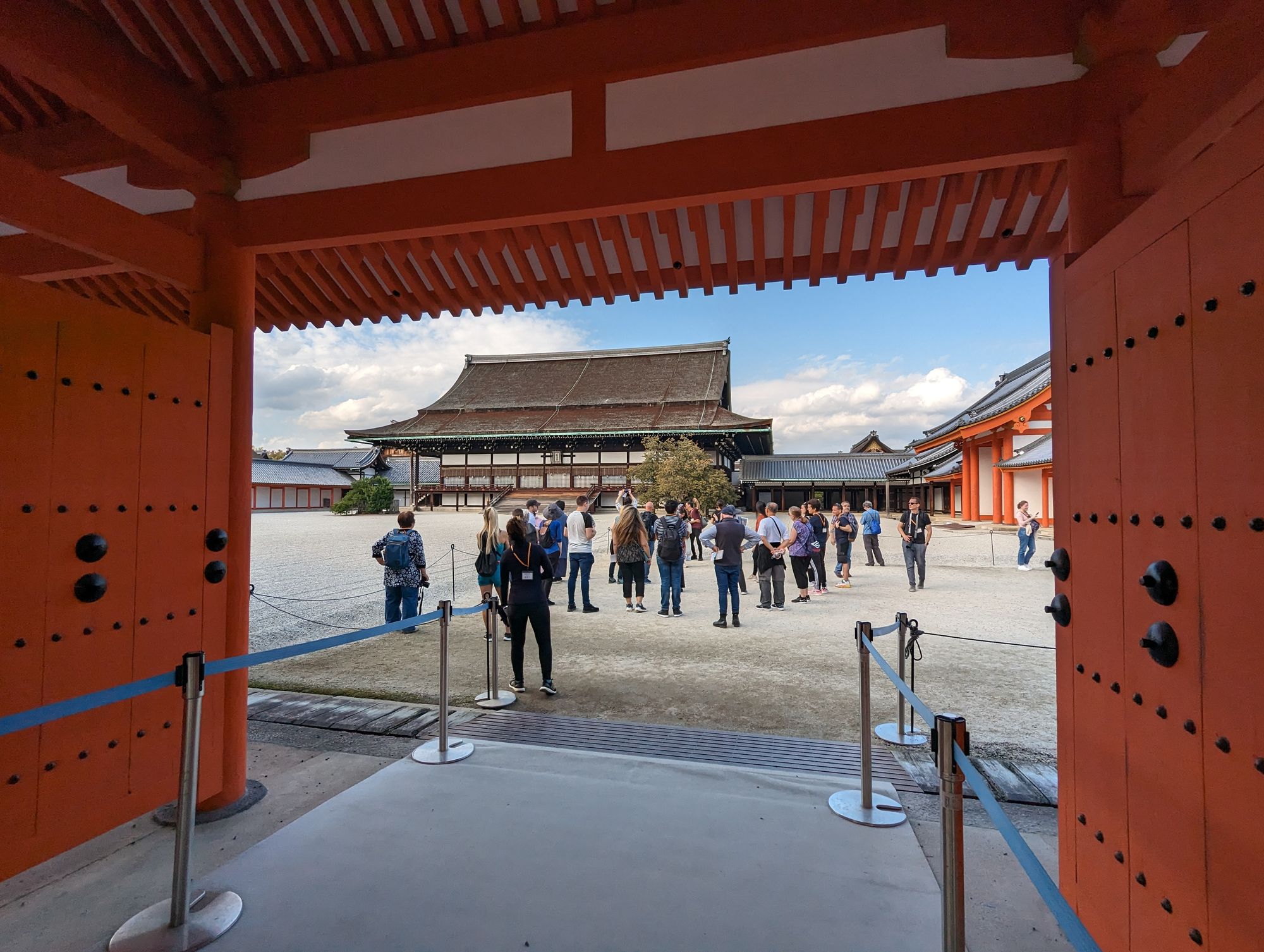
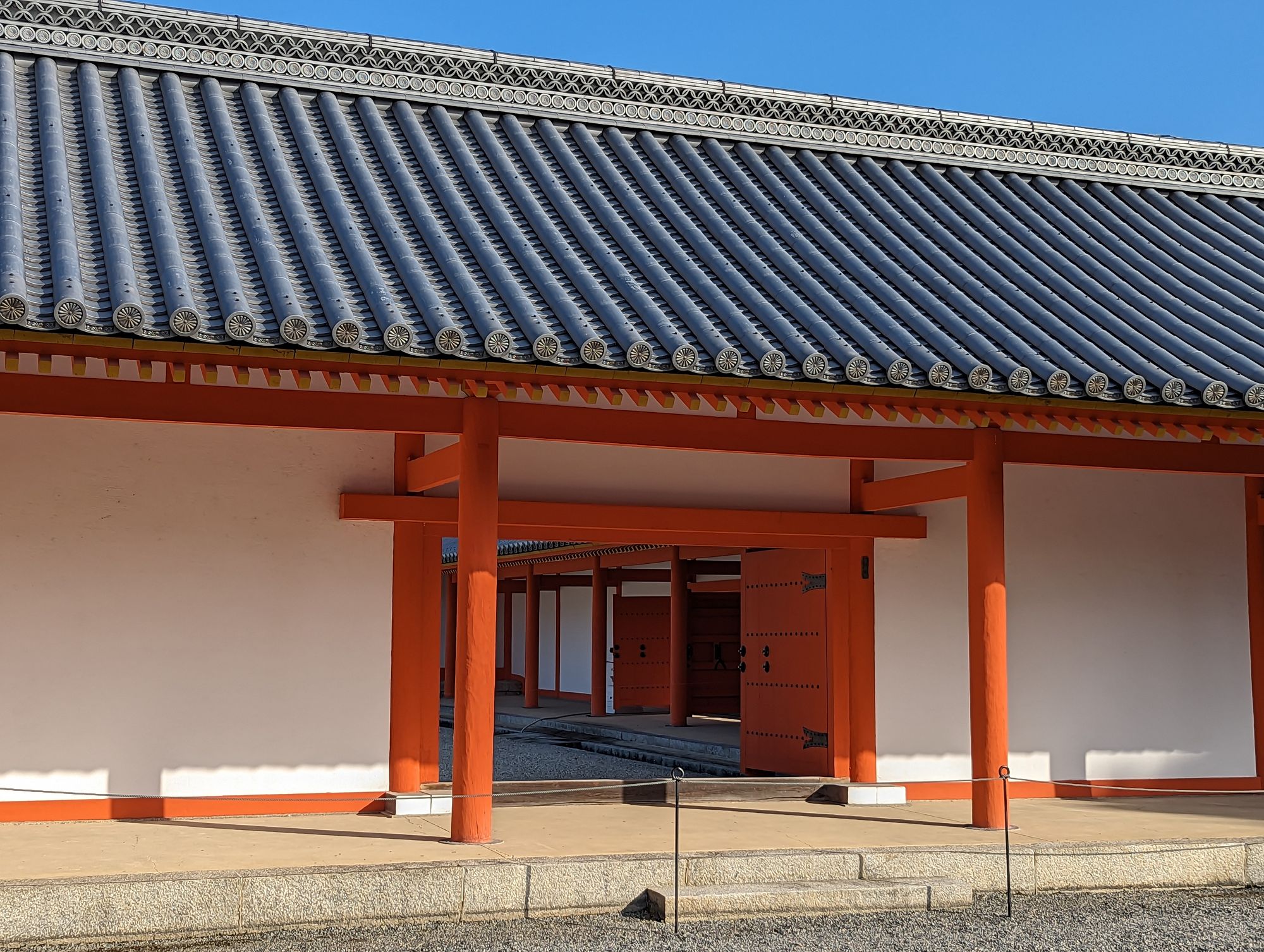
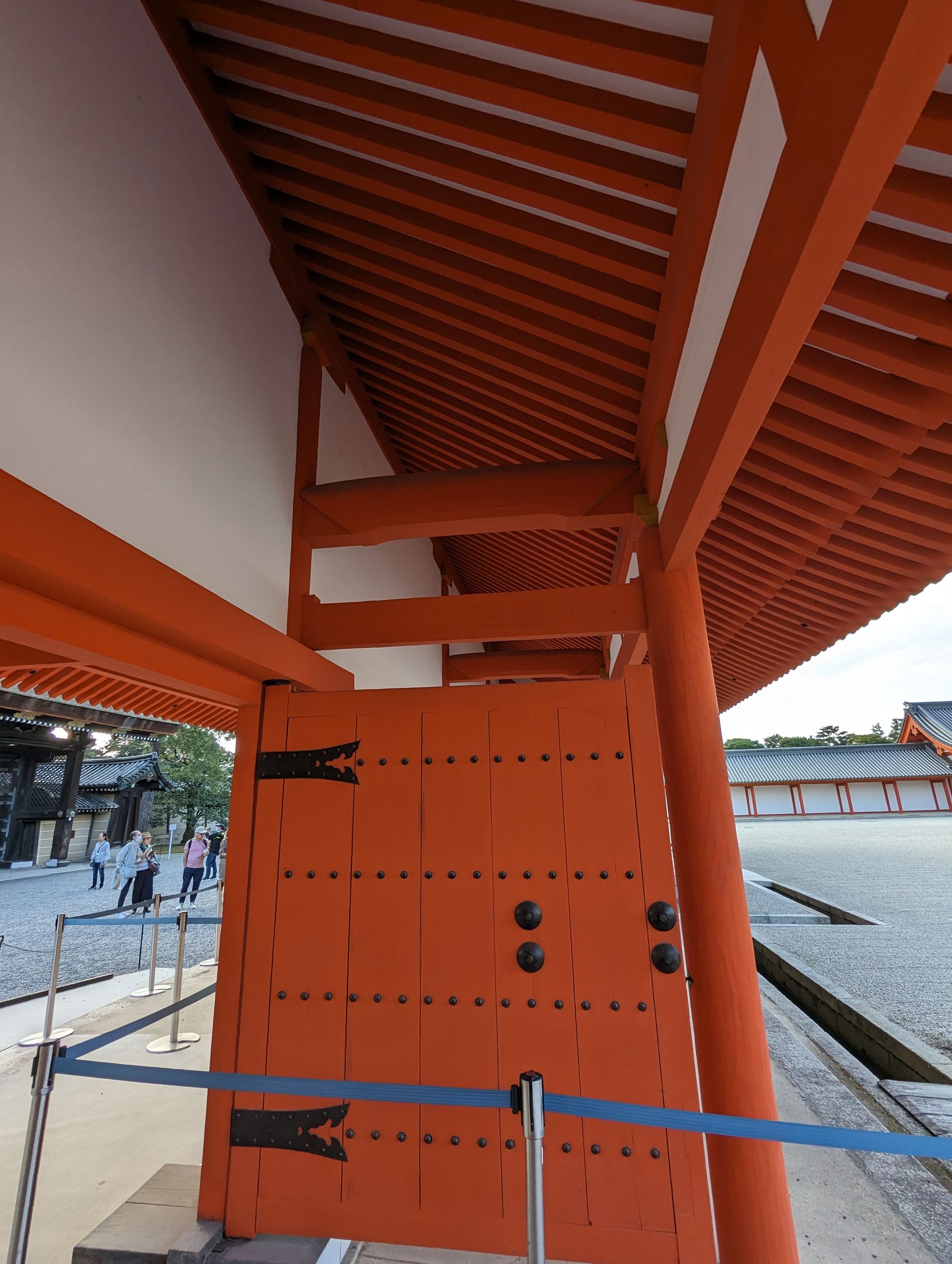
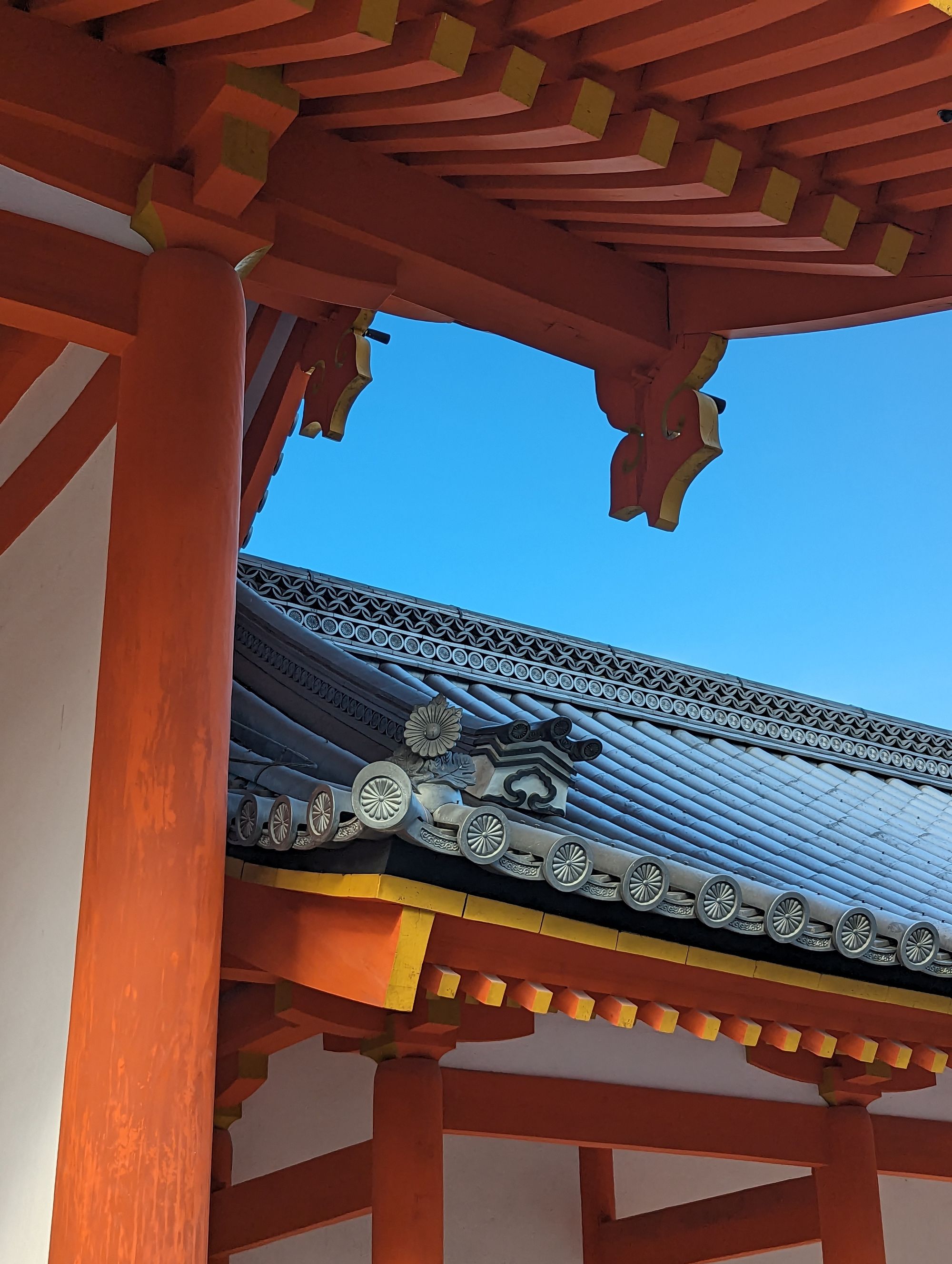
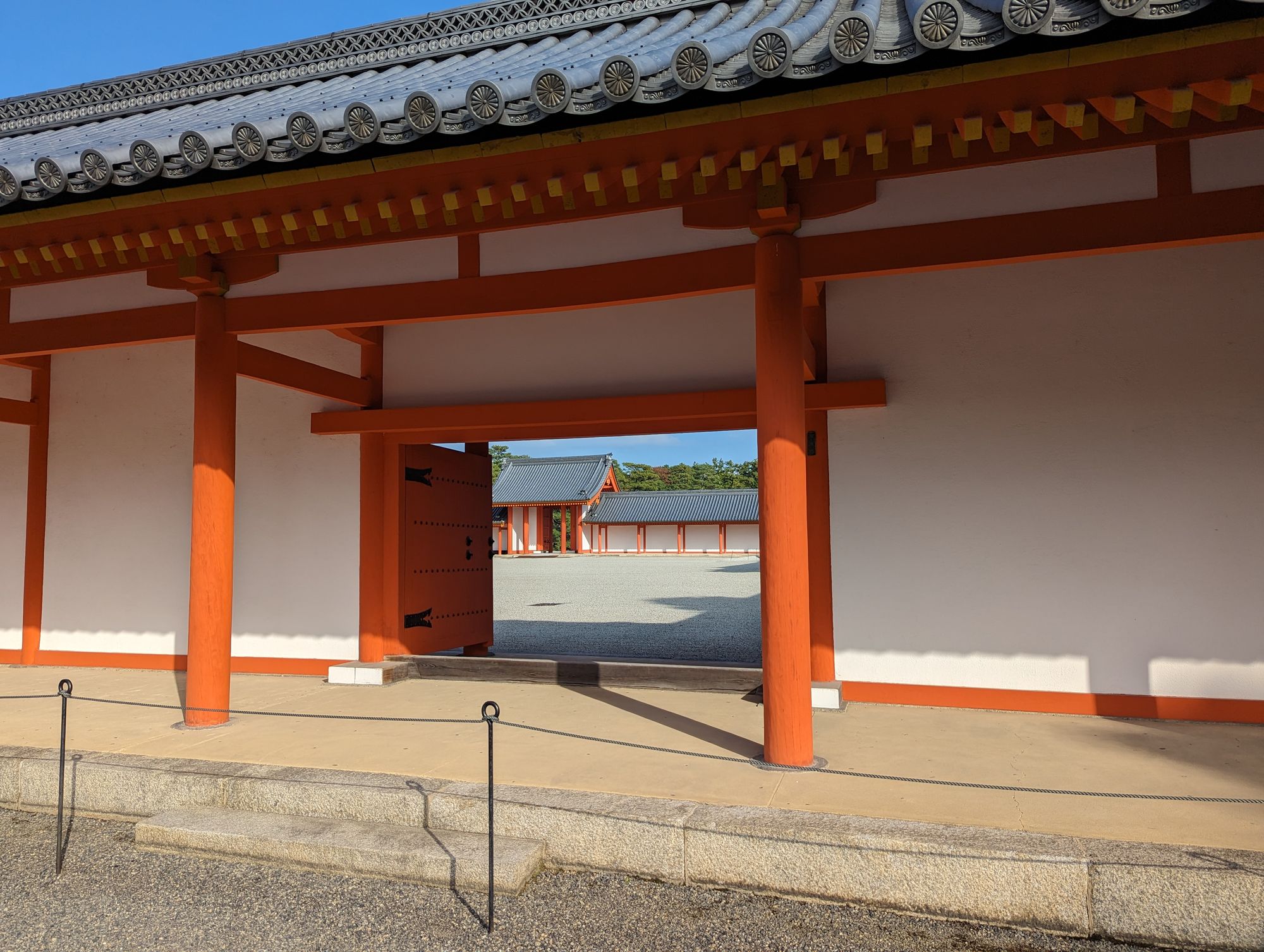
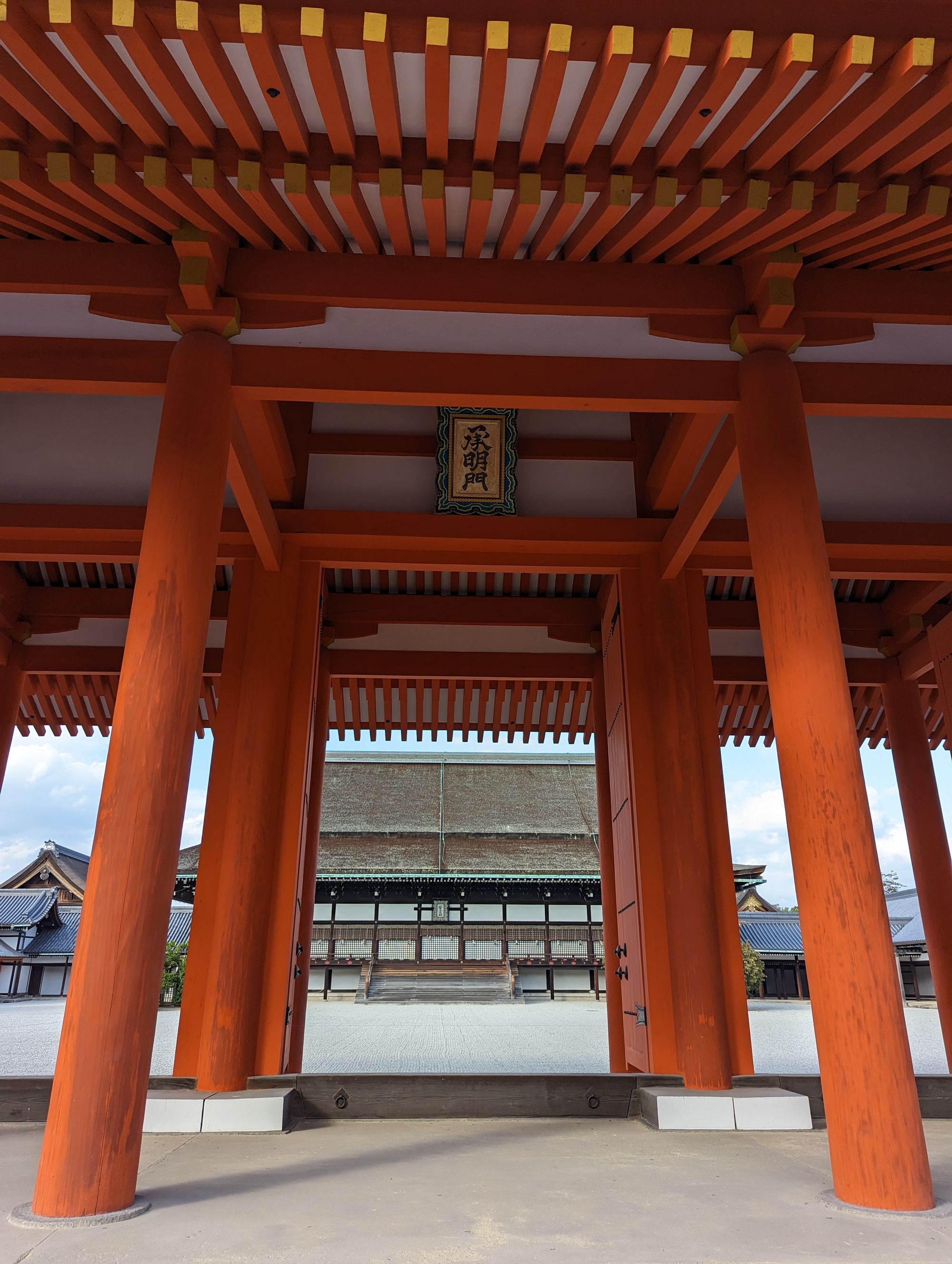
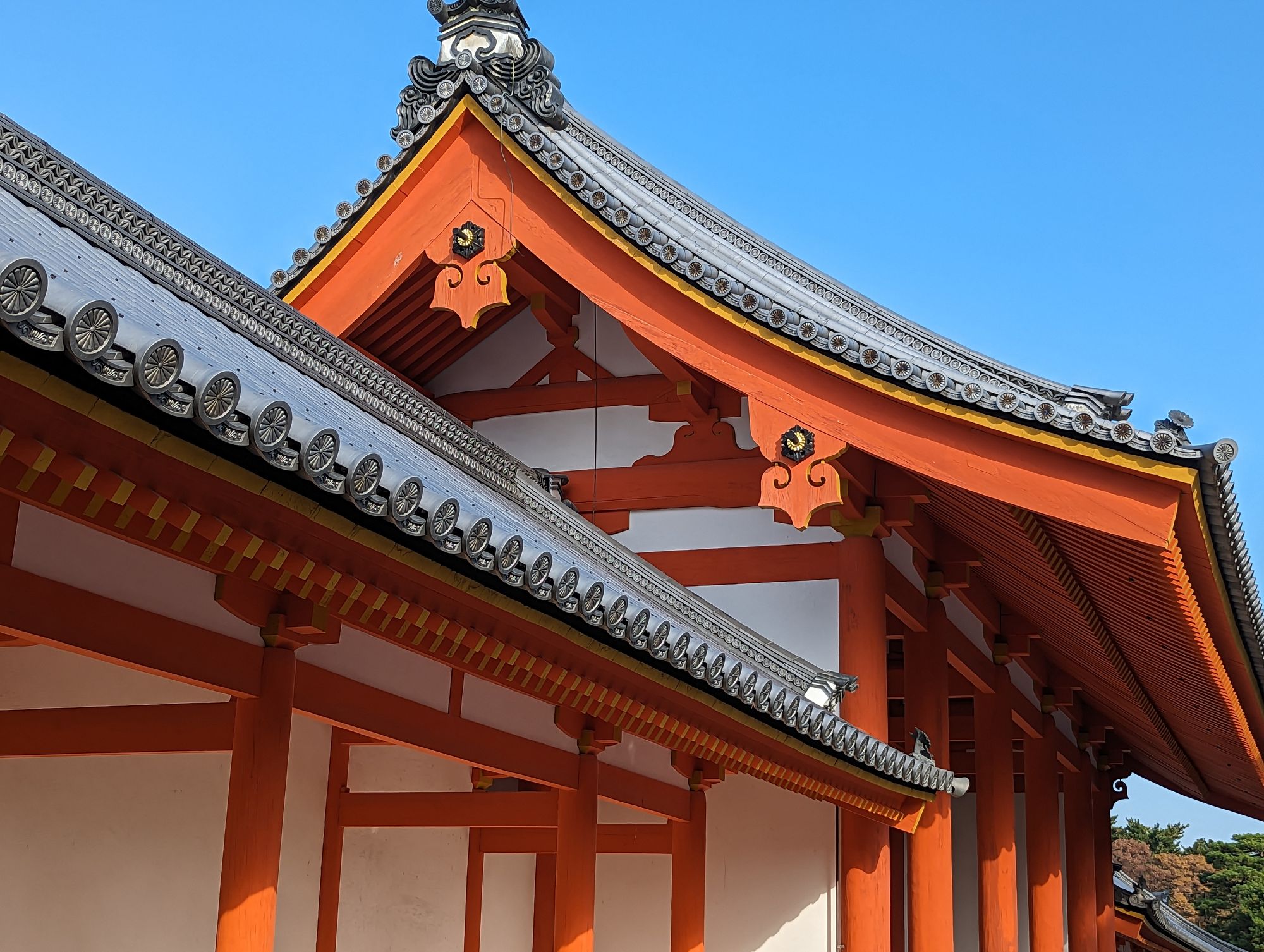
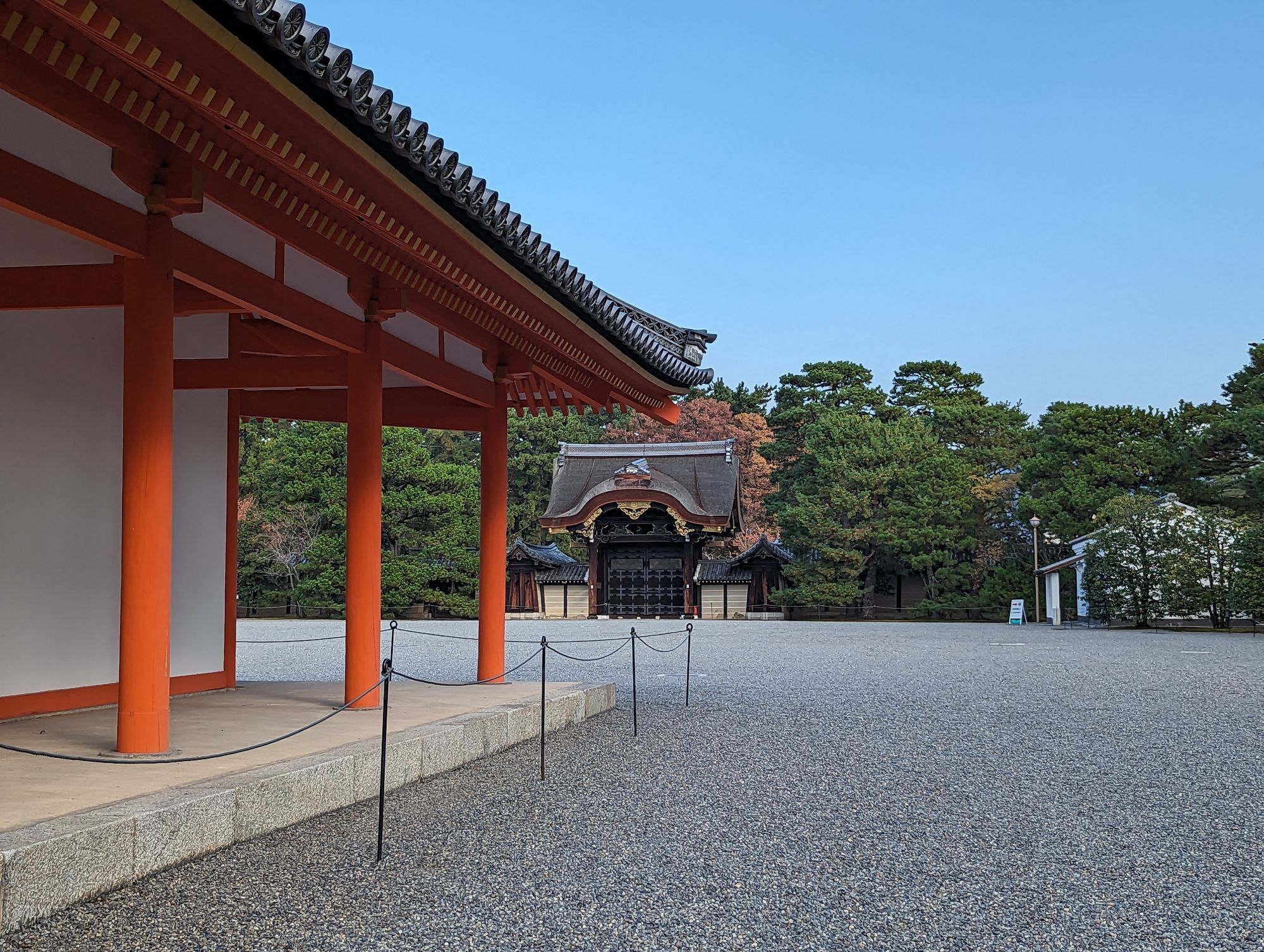
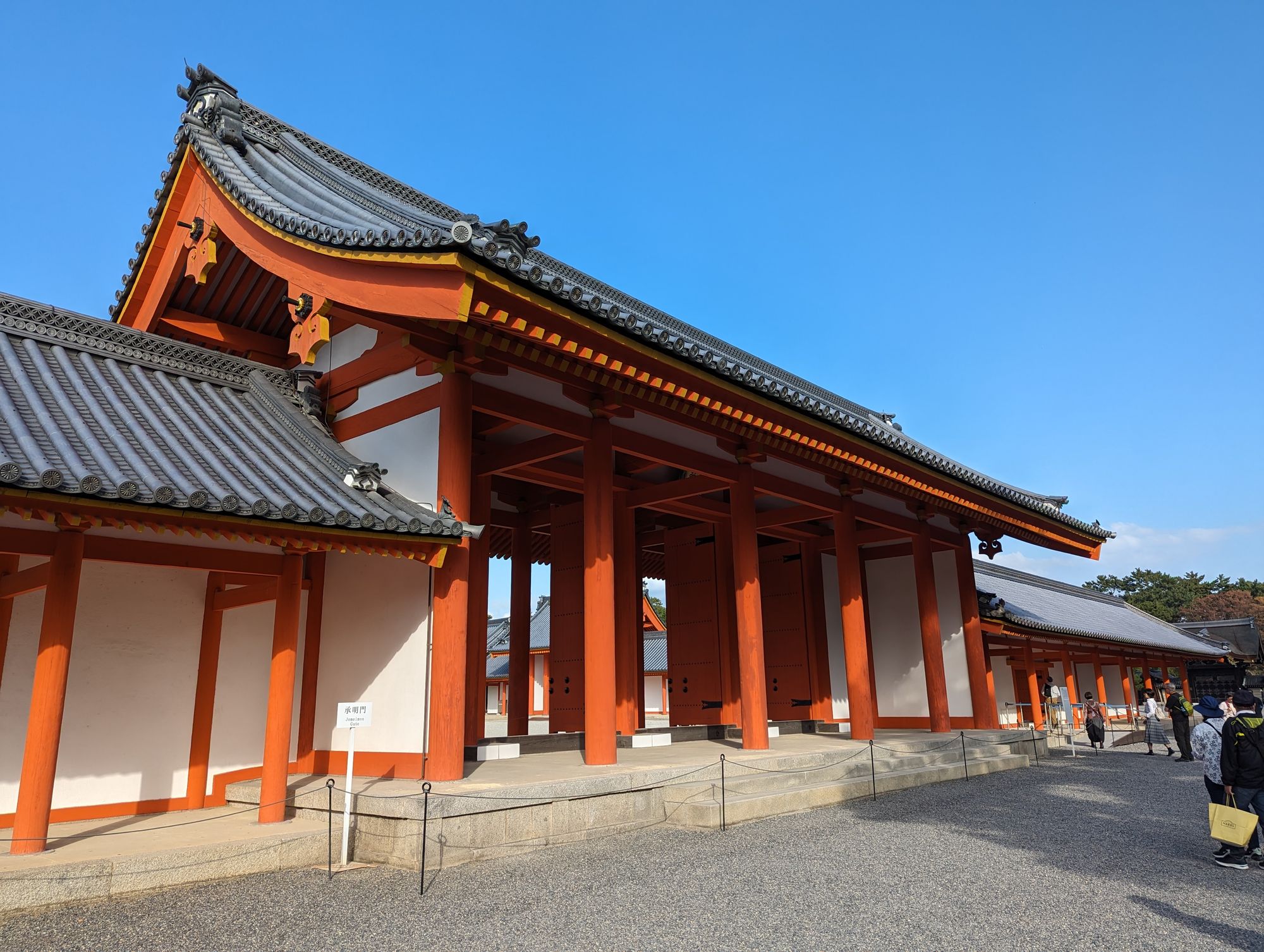
The above red and white building is where the emperor would do important things: greet honored guests, make speeches, etc. Specifically, he would stand in the middle archway, with the plaque above it.
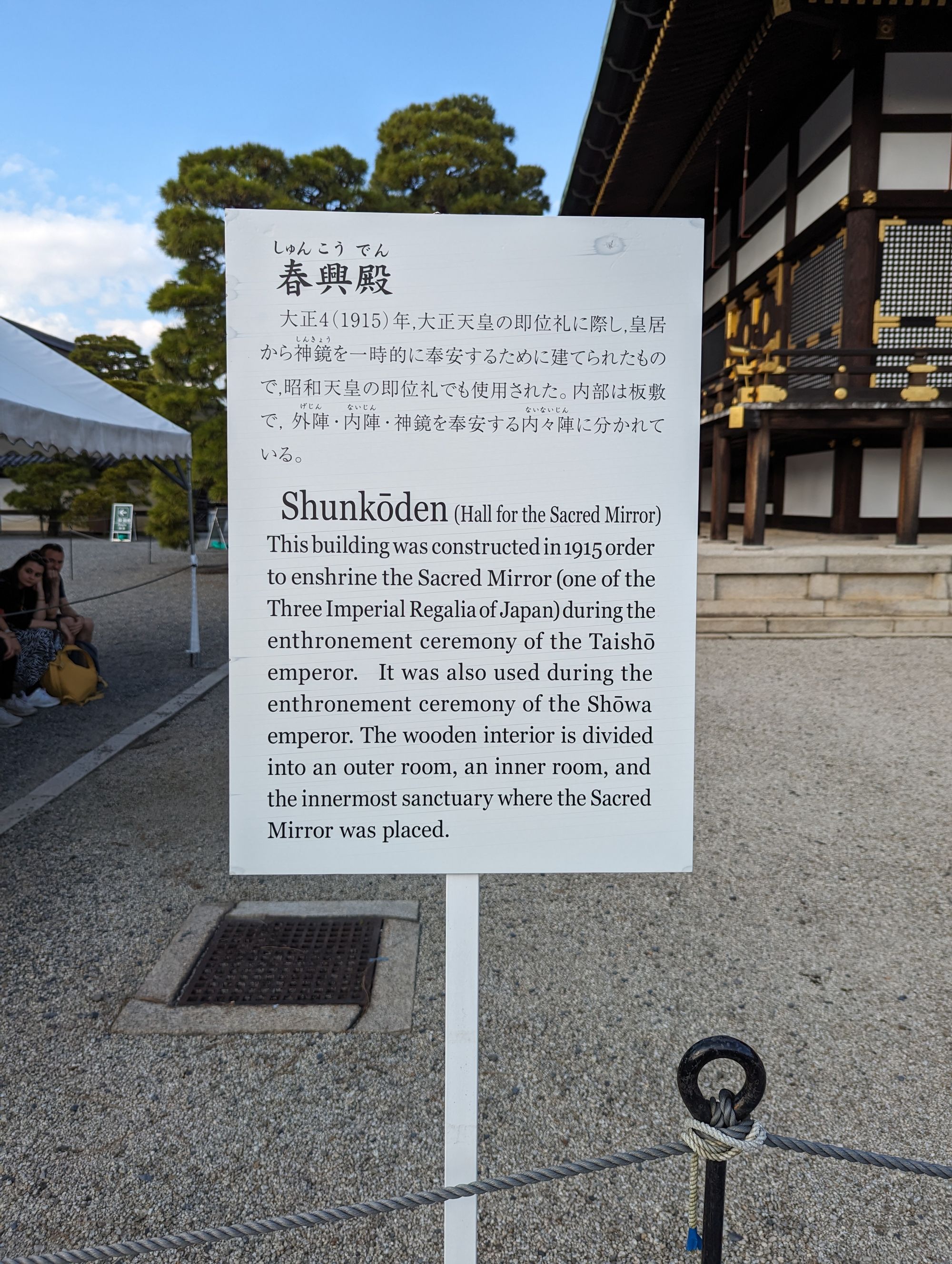
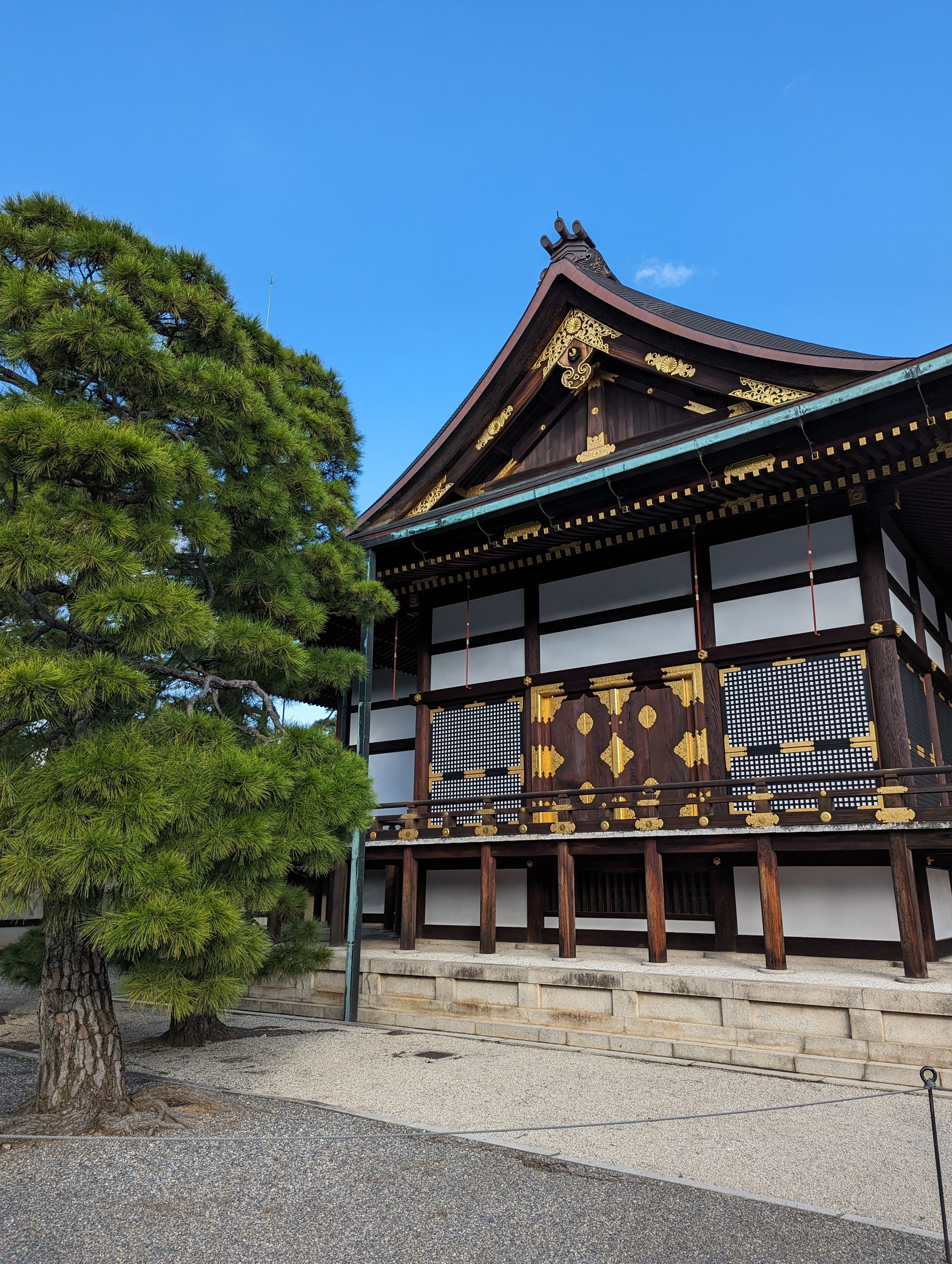
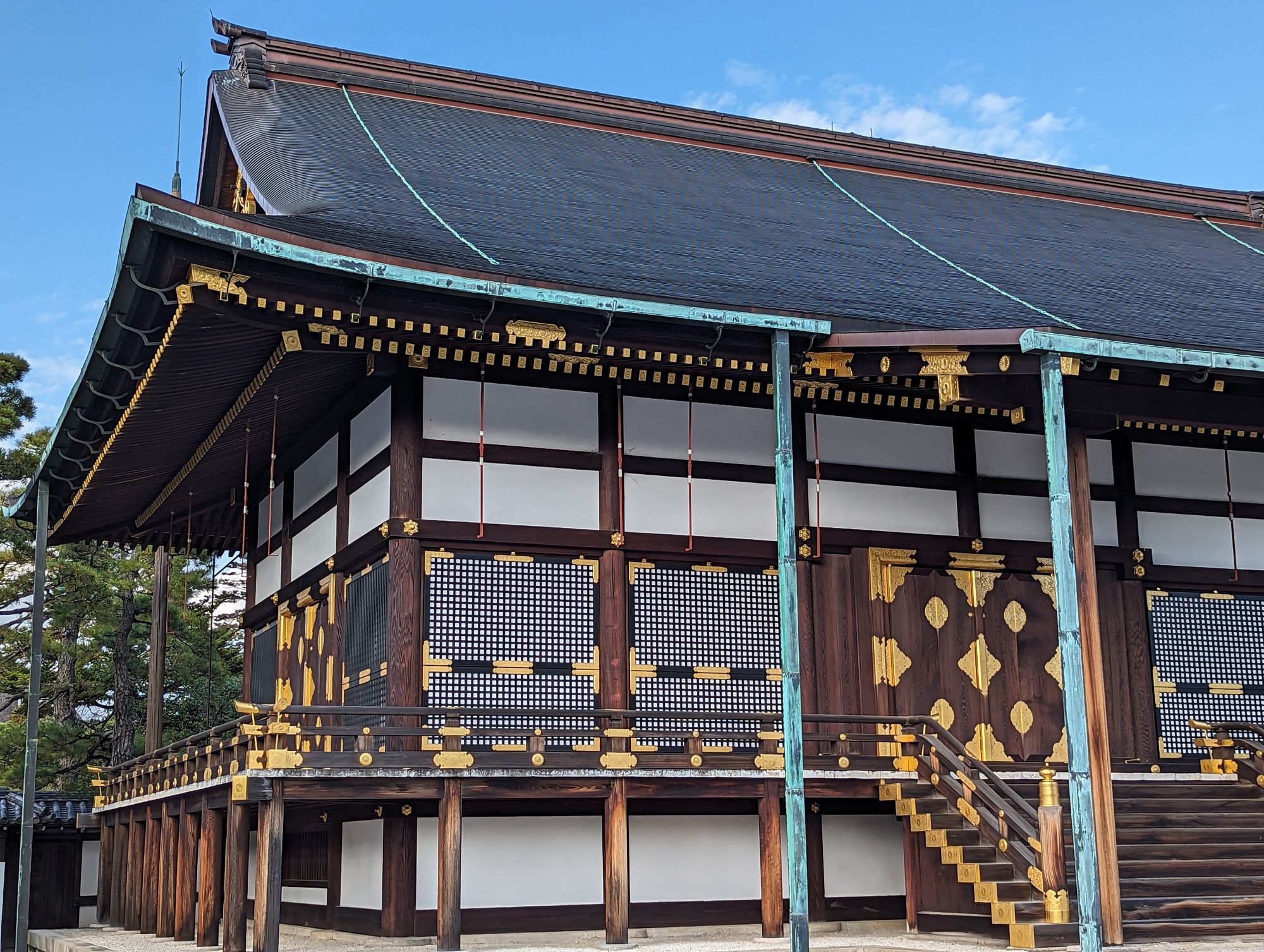
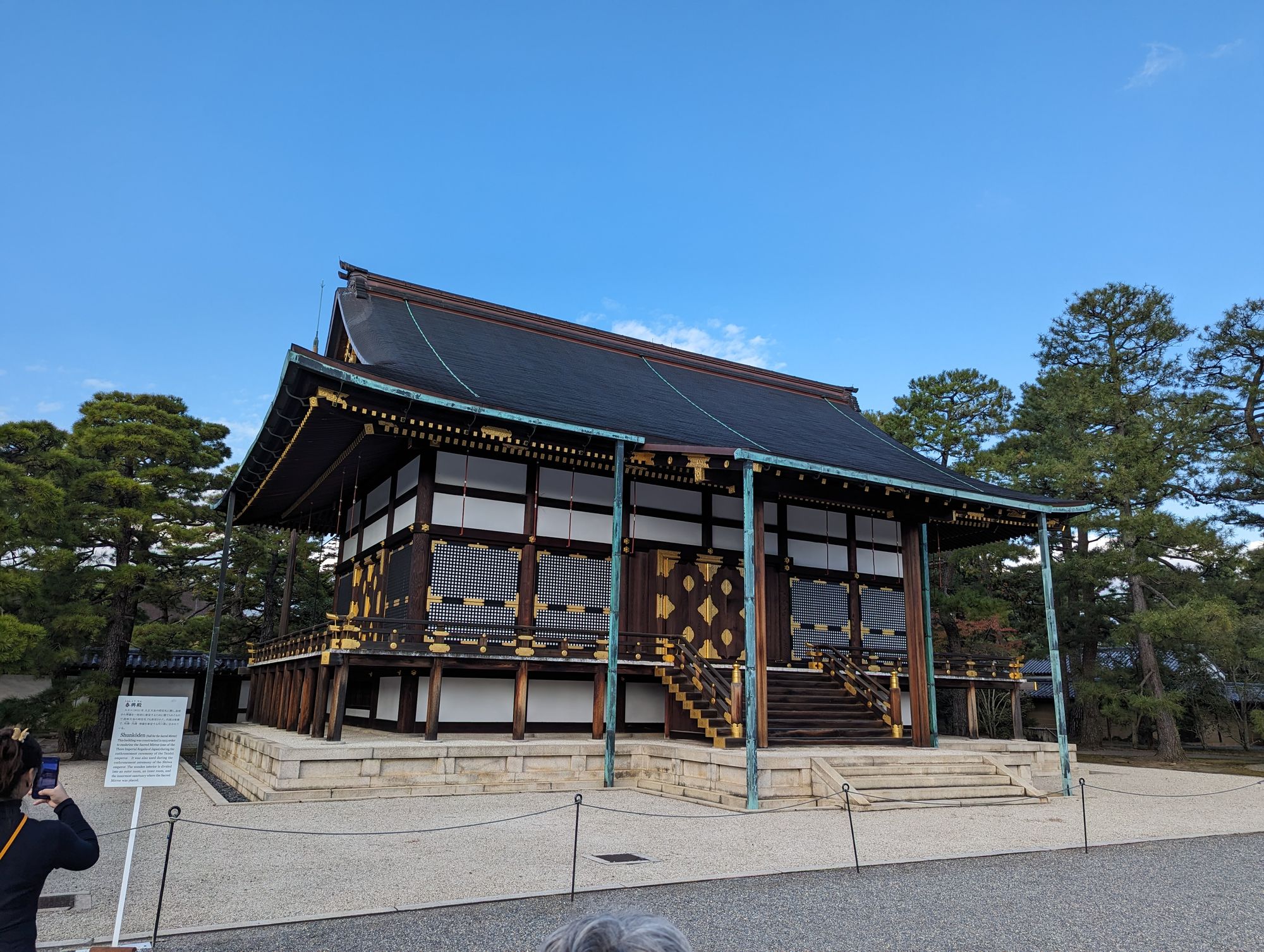
The above is the treasury building, where the three sacred items of the emperor were were kept: the sword Kusanagi no Tsurugi, the mirror Yata no Kagami, and the jewel Yasakani no Magatama. They follow the emperor wherever he lives, which is now Tokyo. When the capital was Kyoto, they were kept here. No one can see these sacred items except the emperor (and possibly his immediate family). The tour guide showed us photos of their boxes. 😂
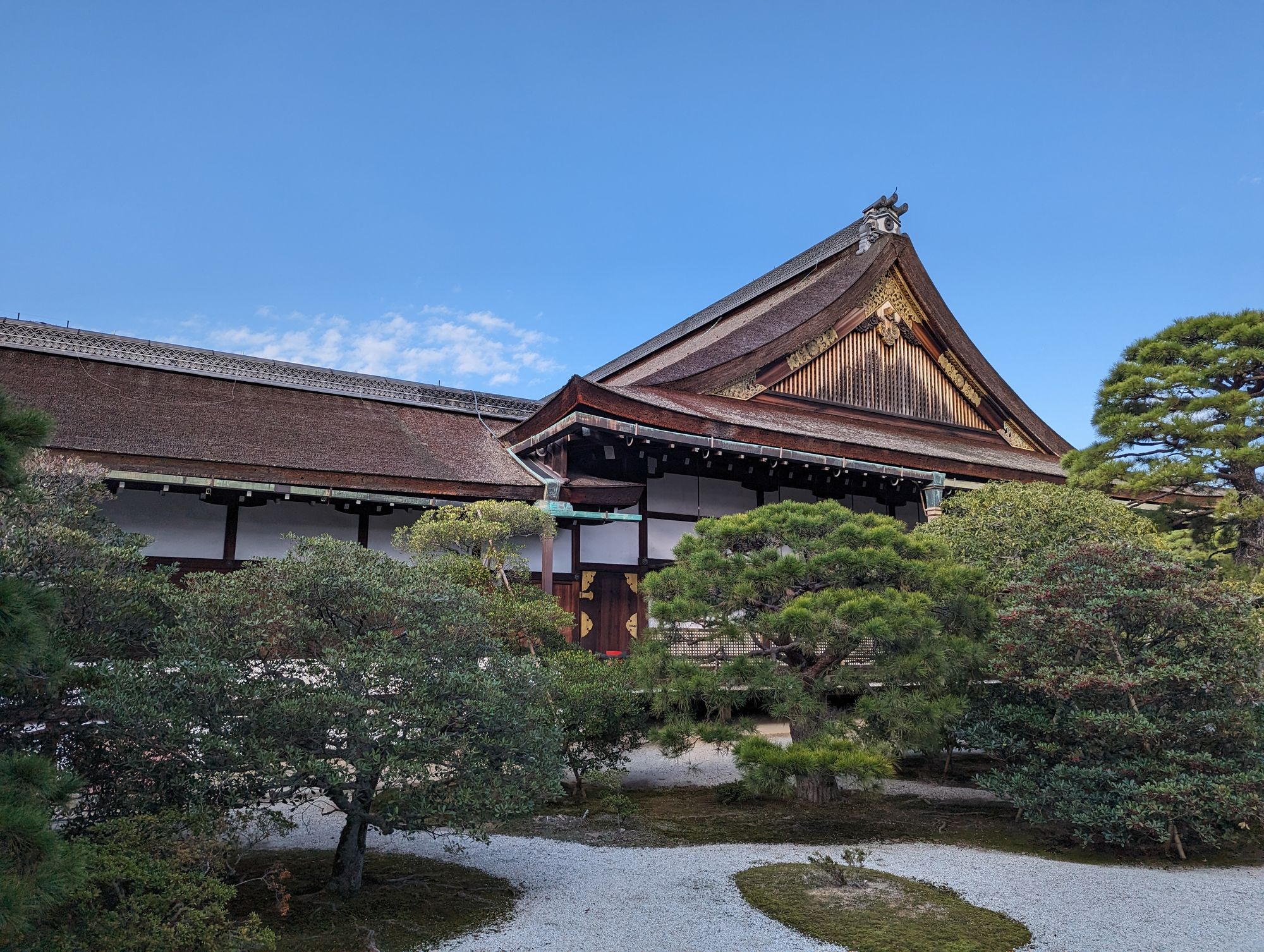
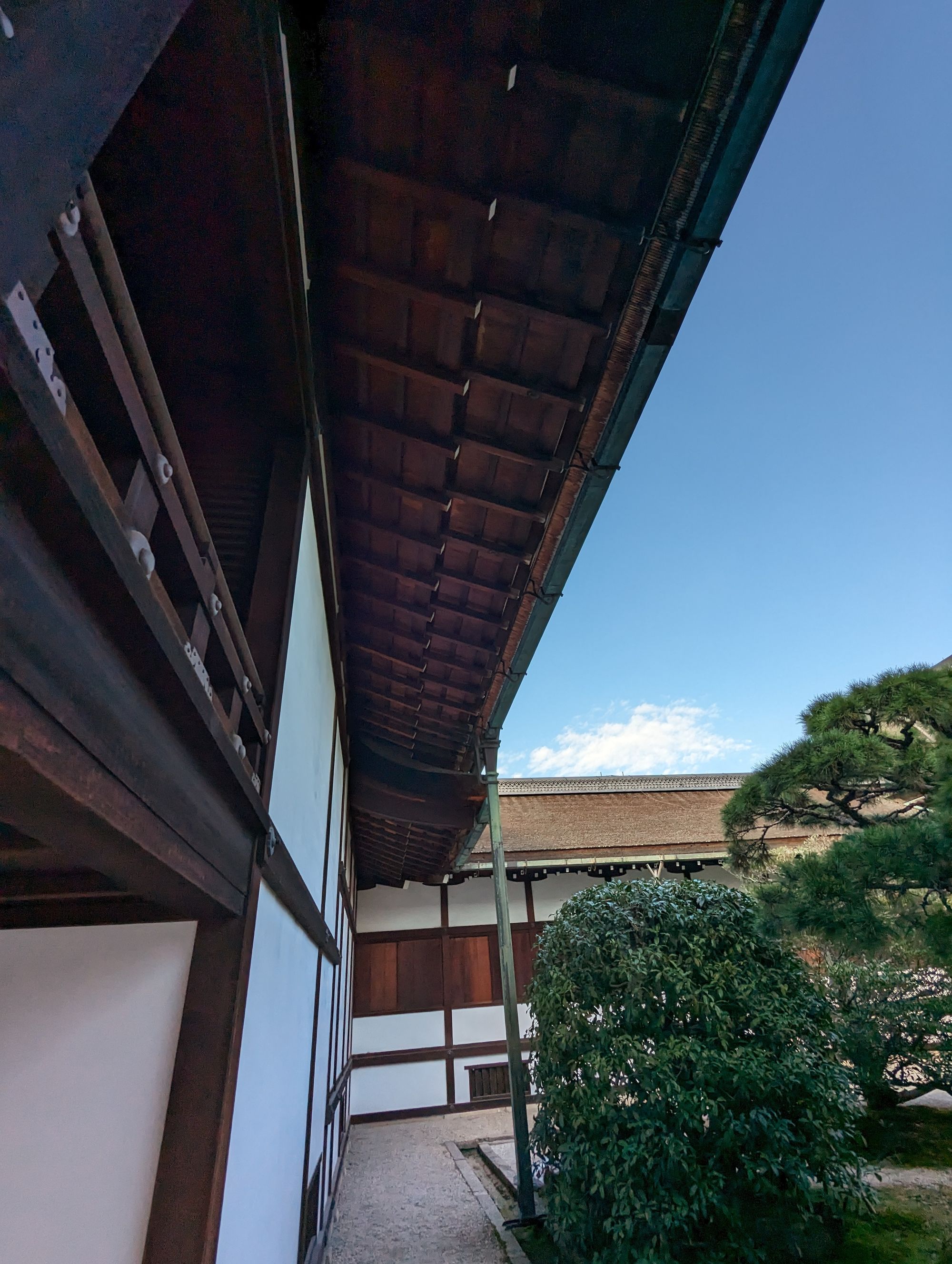
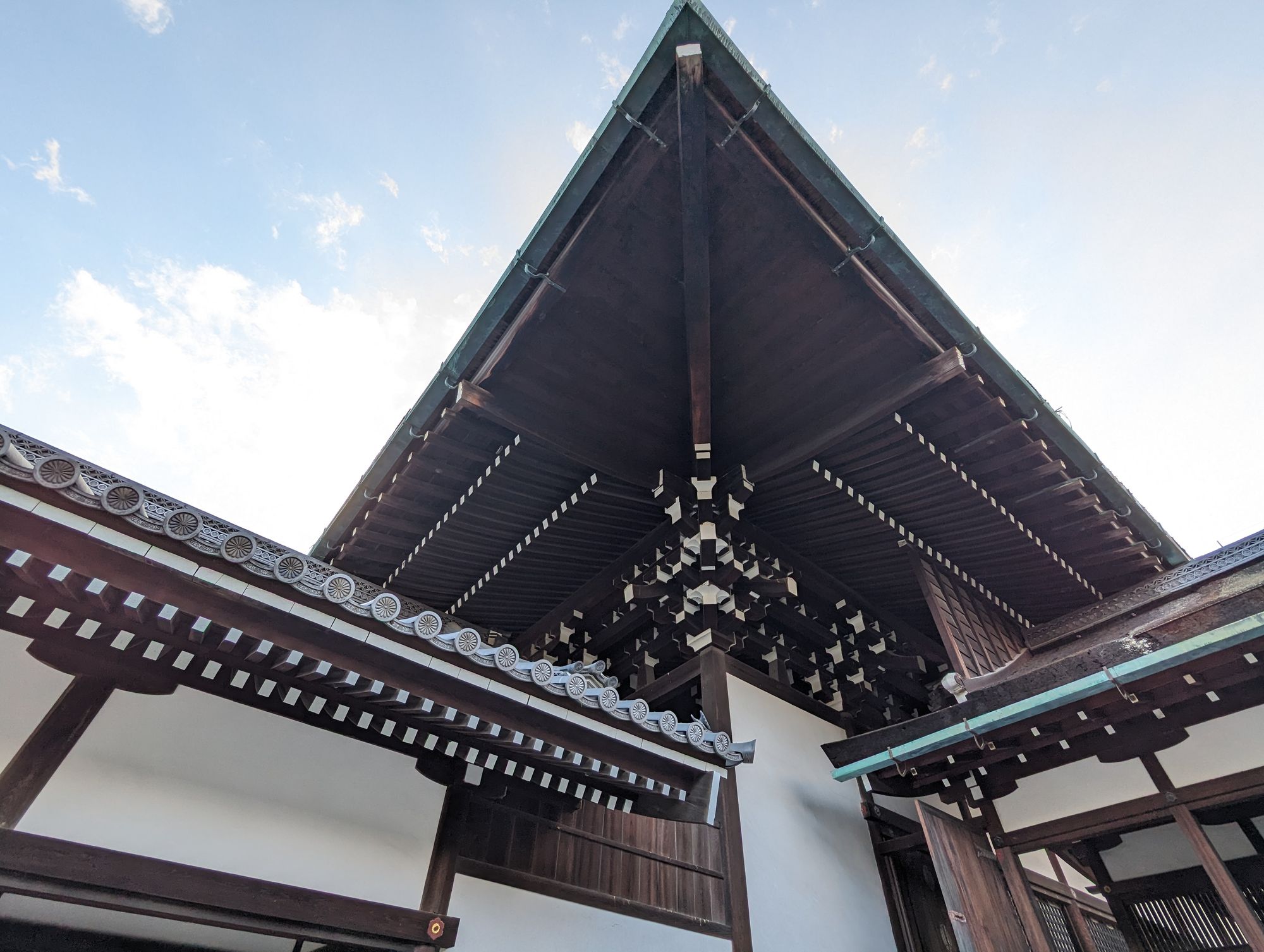
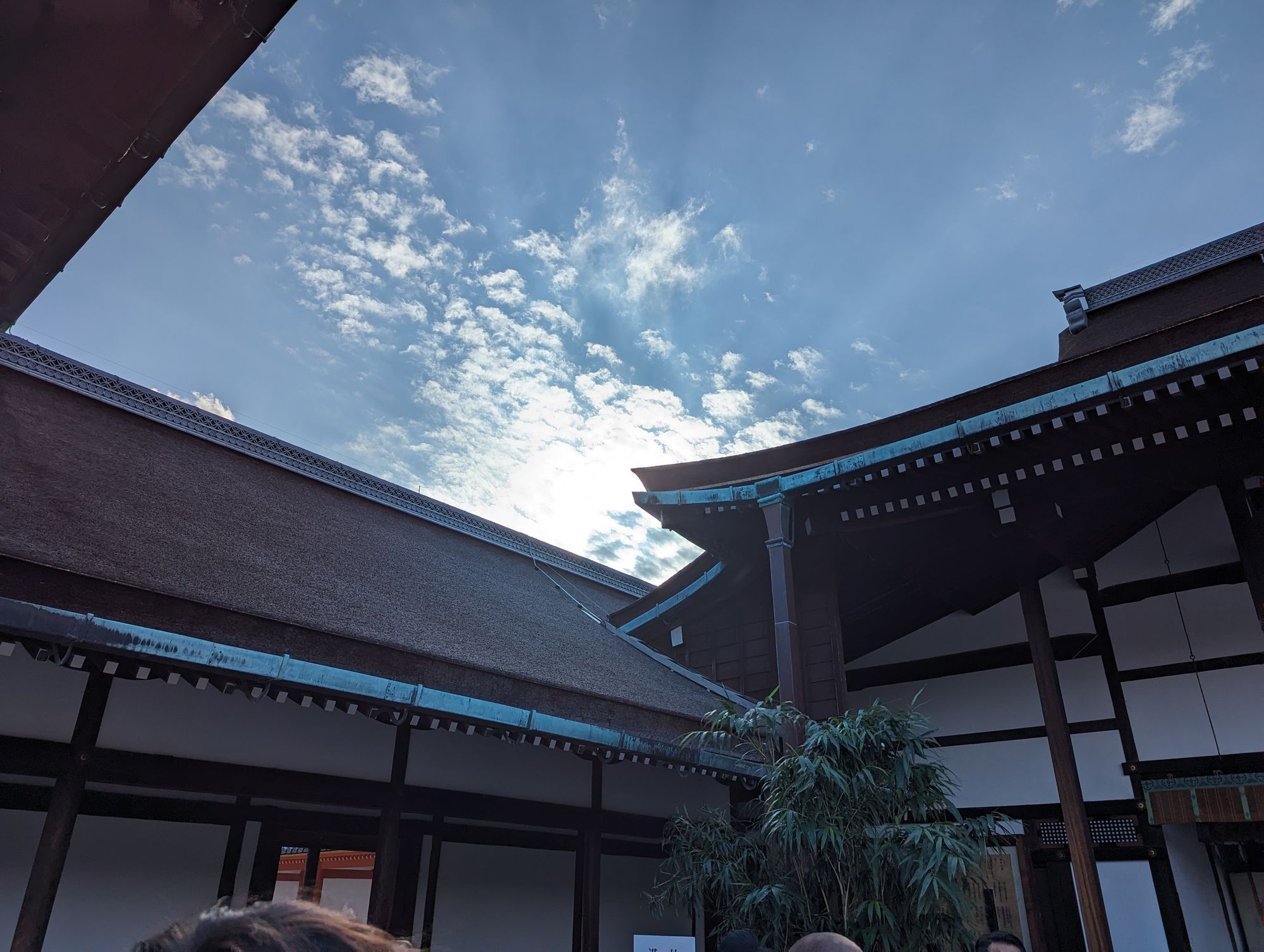
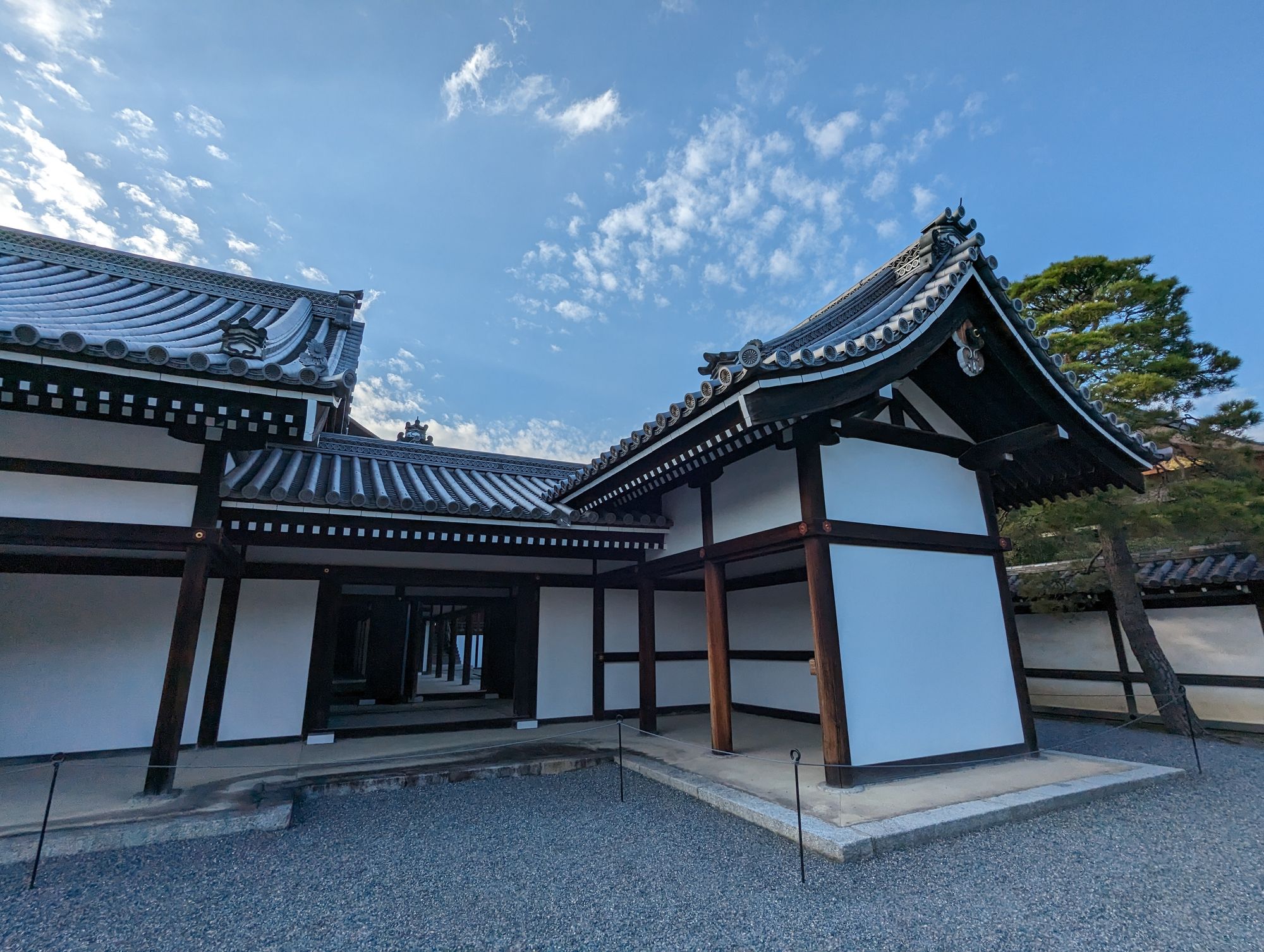
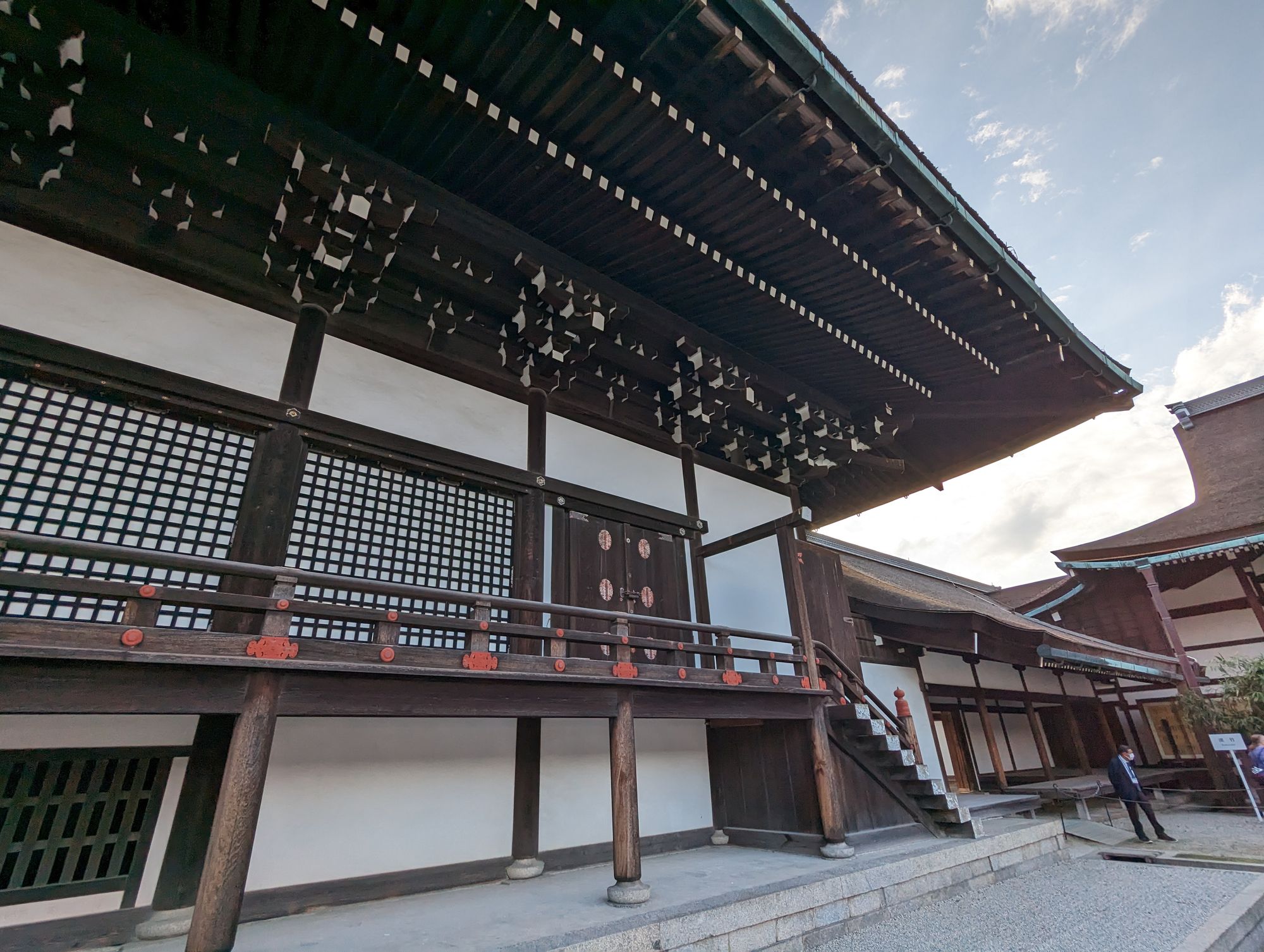
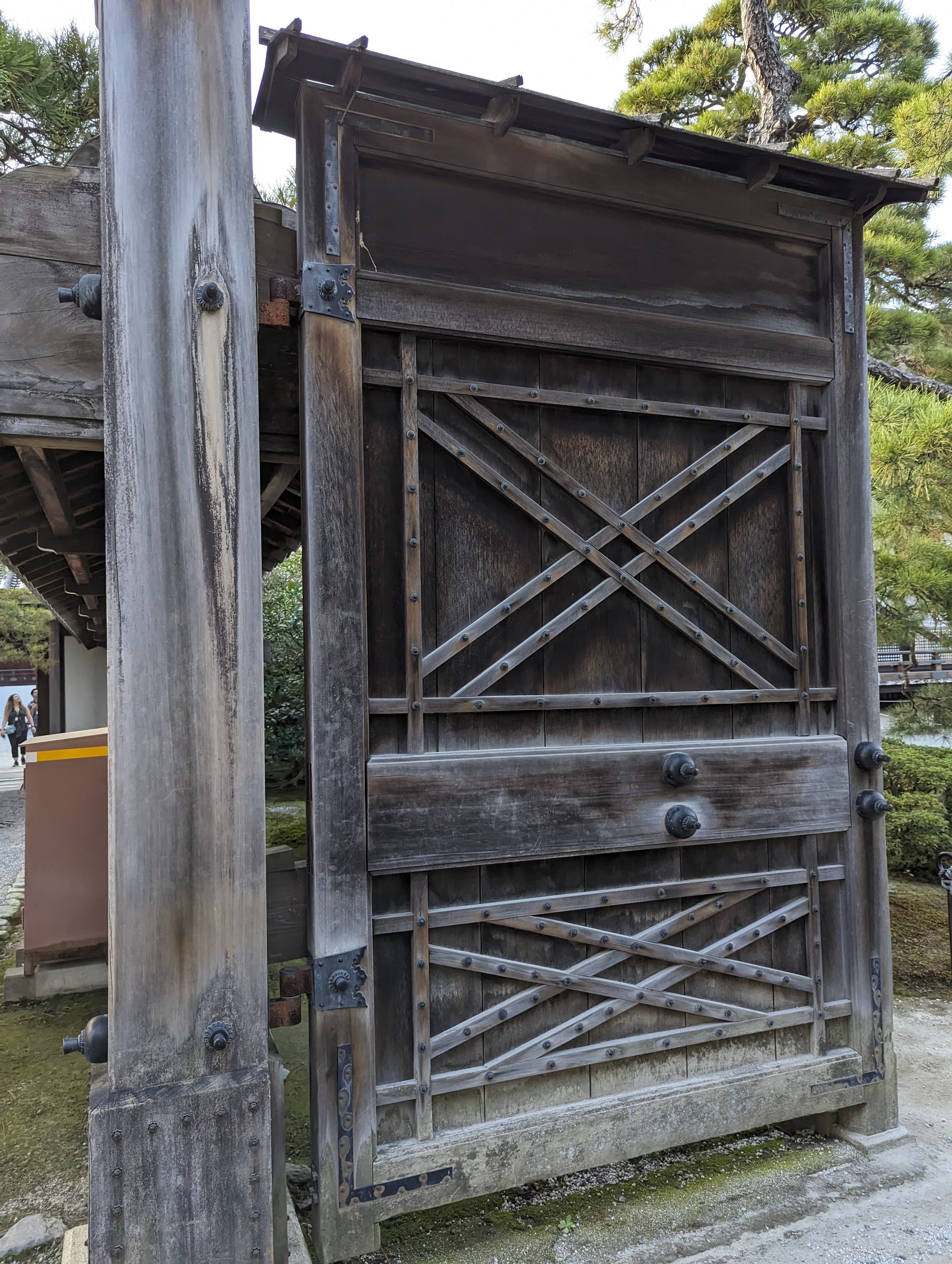
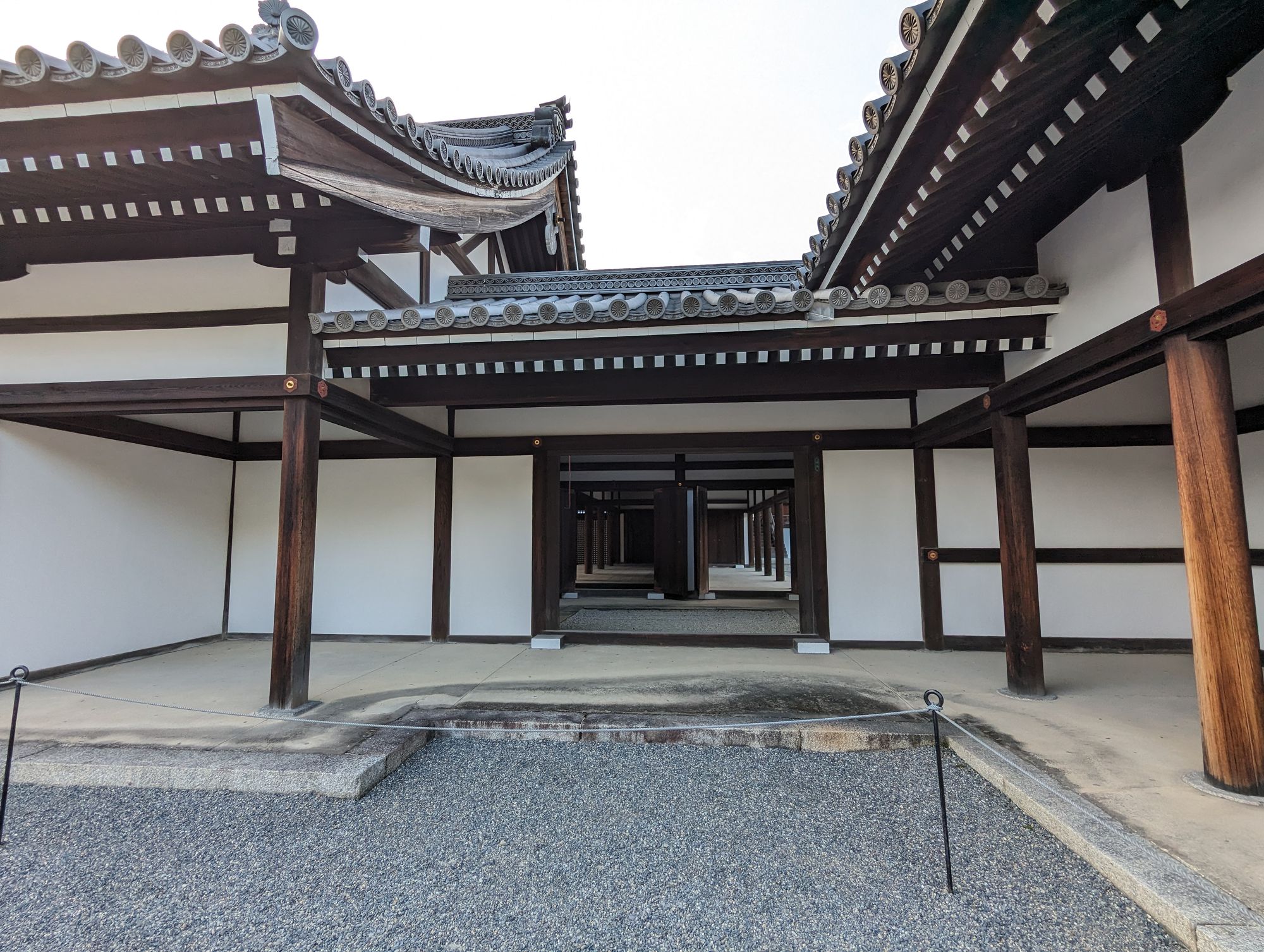
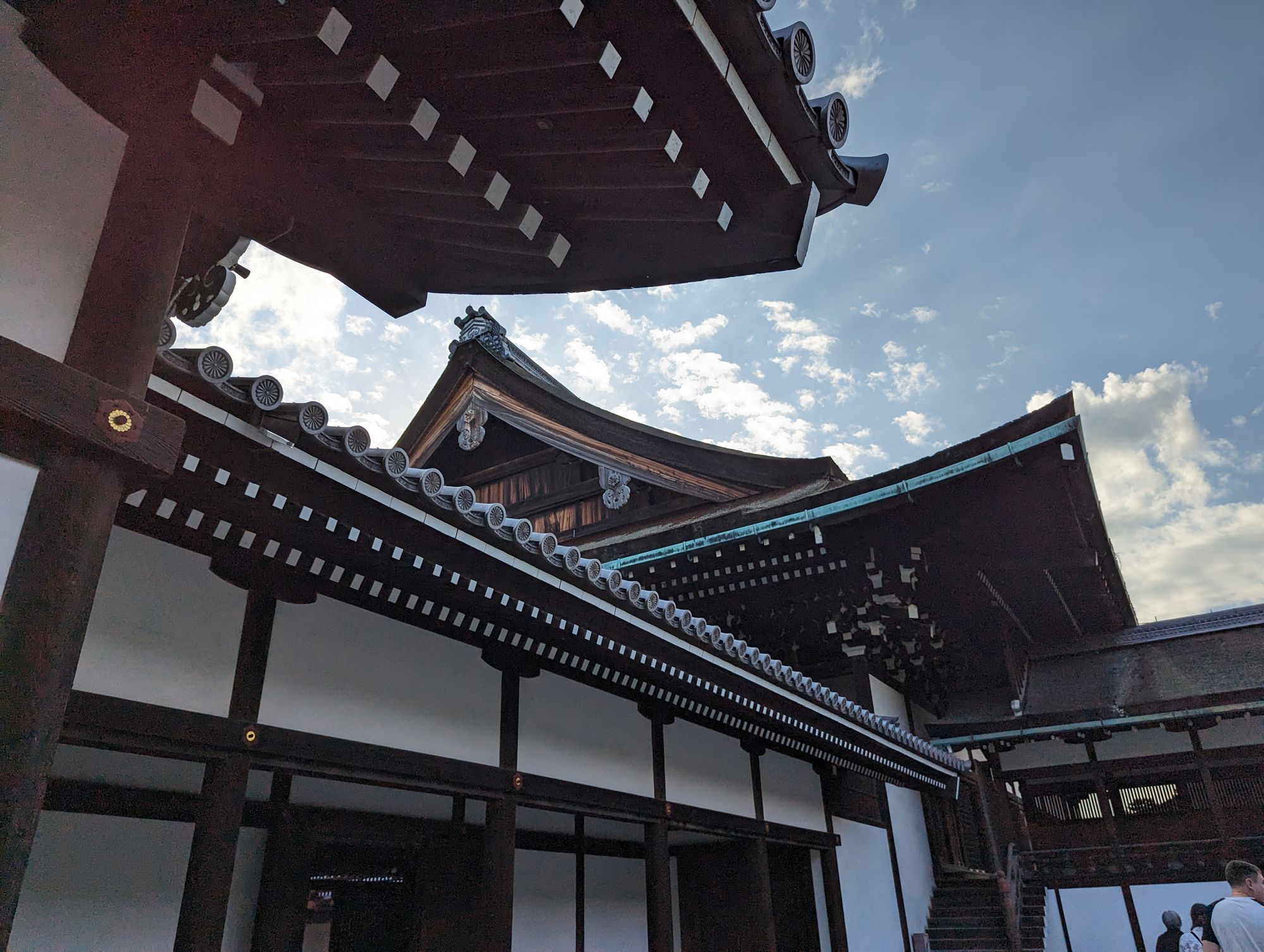
An interesting thing to note: the way these point trees are shaped--rounded, like balls--is unique to Kyoto. Almost everywhere else in Japan, pine trees are allowed to grow tall and "natural," with the regular "Japanese-looking" way of pruning, of course (called "Niwaki").
The tour guide showed us the garden, and then brought us to the beginning, and said goodbye.
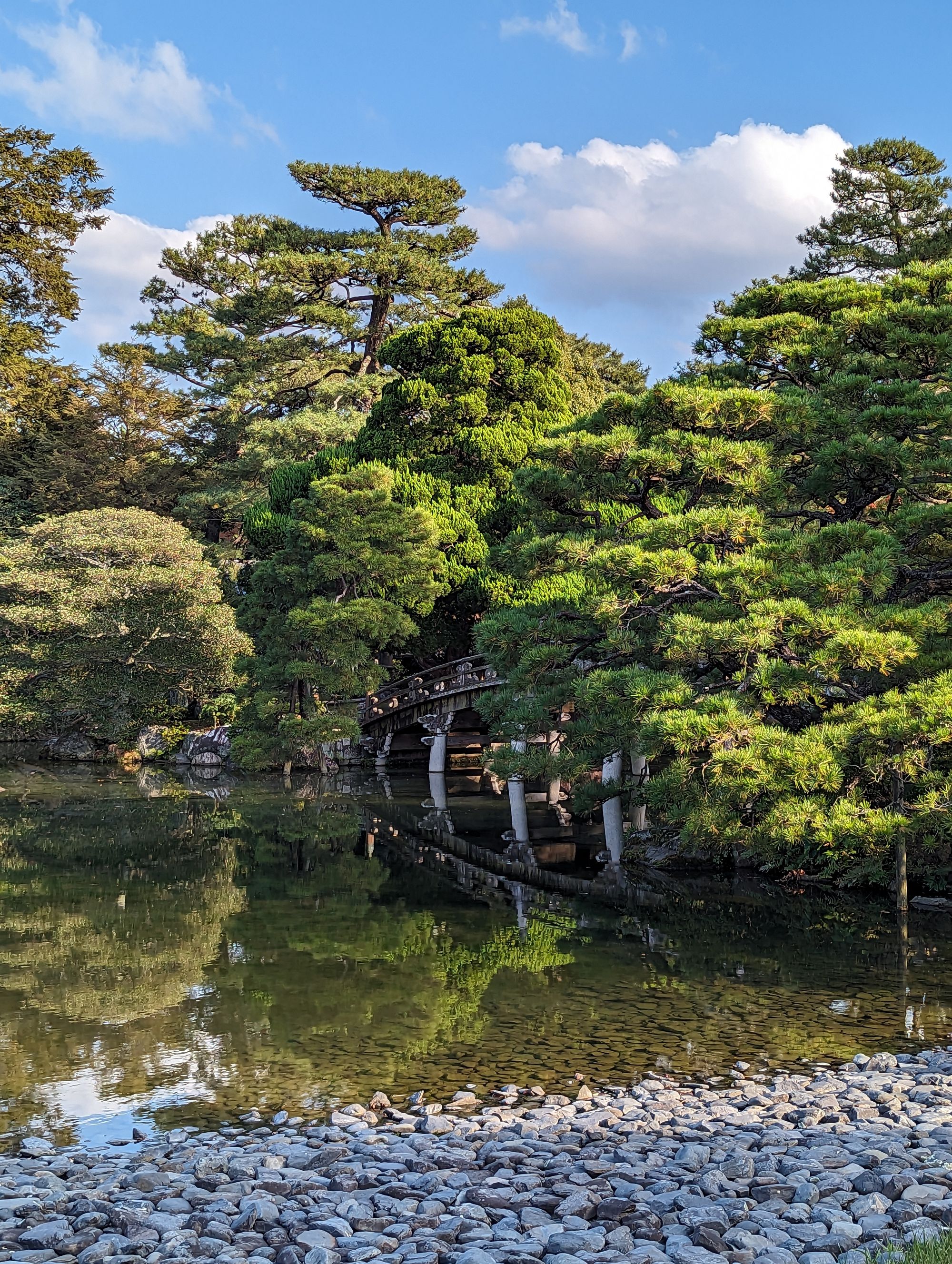
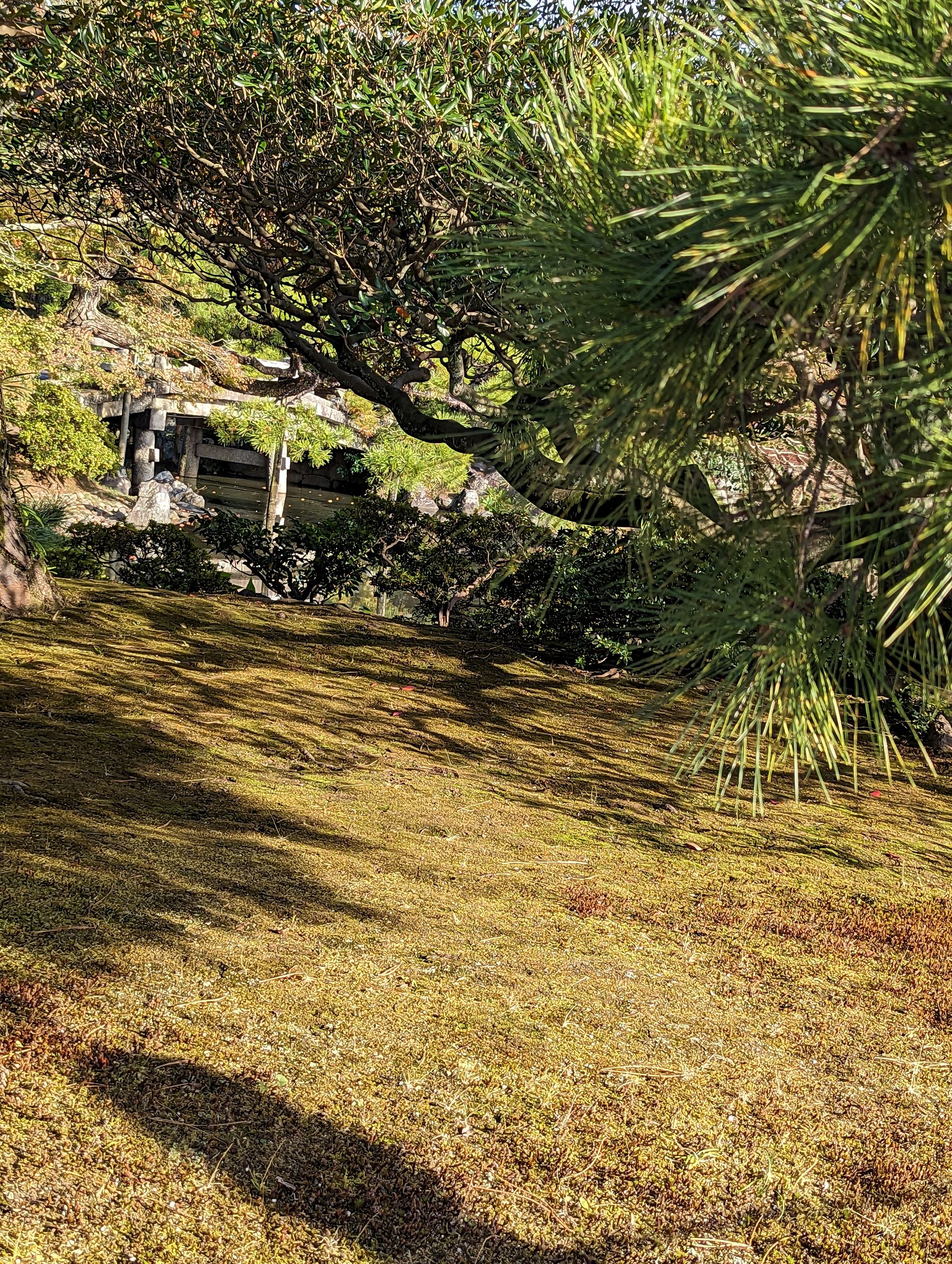
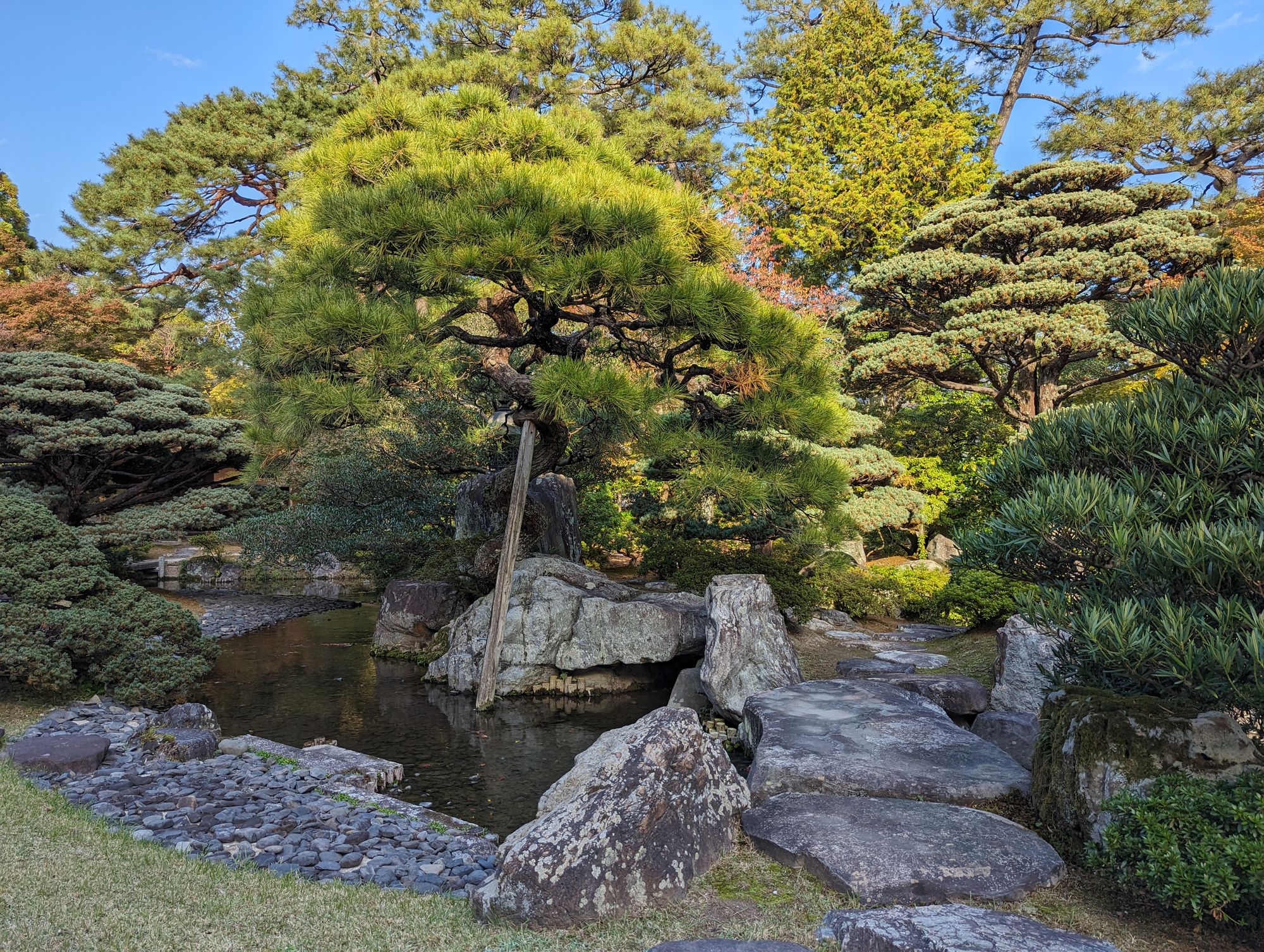
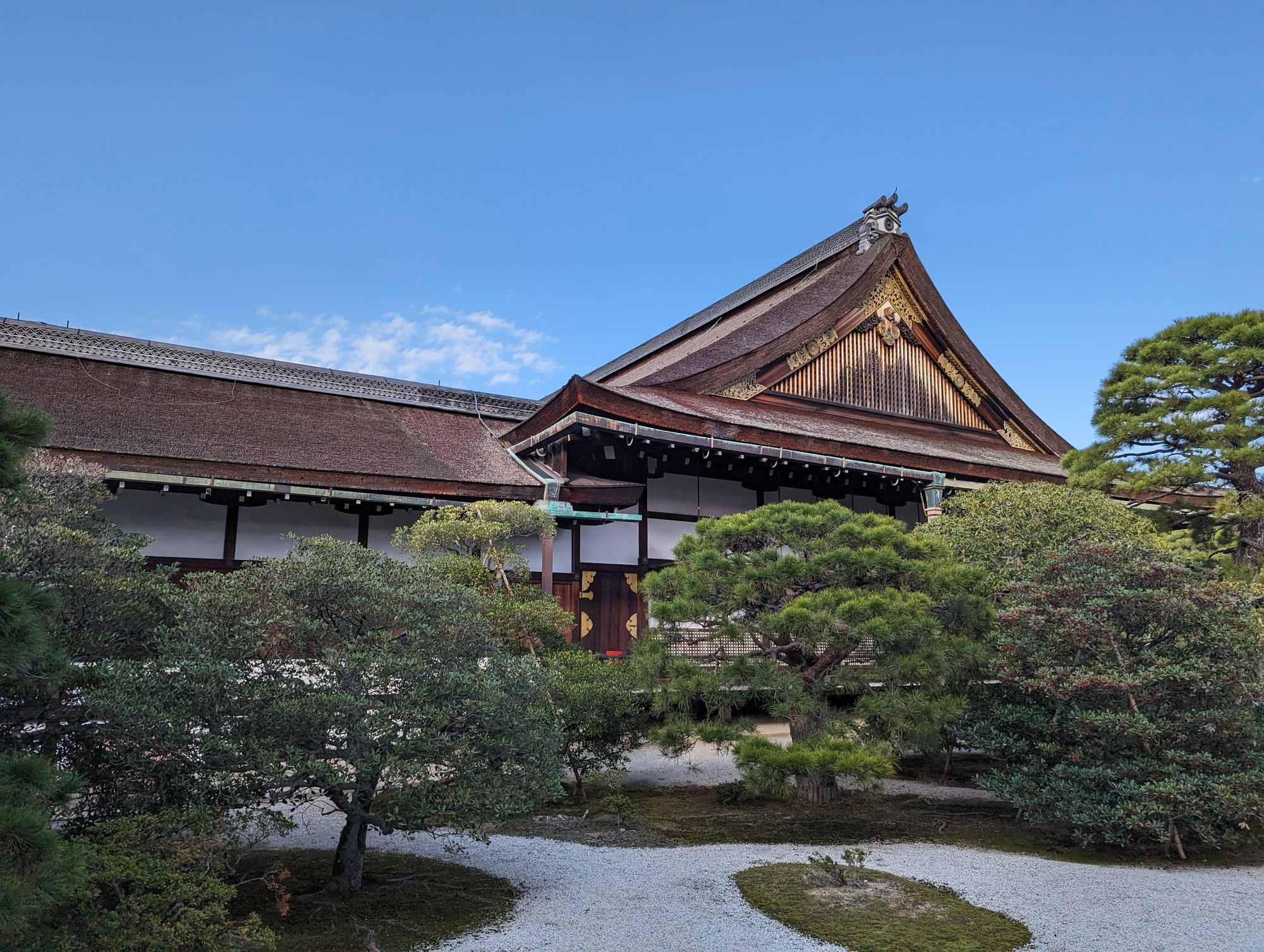
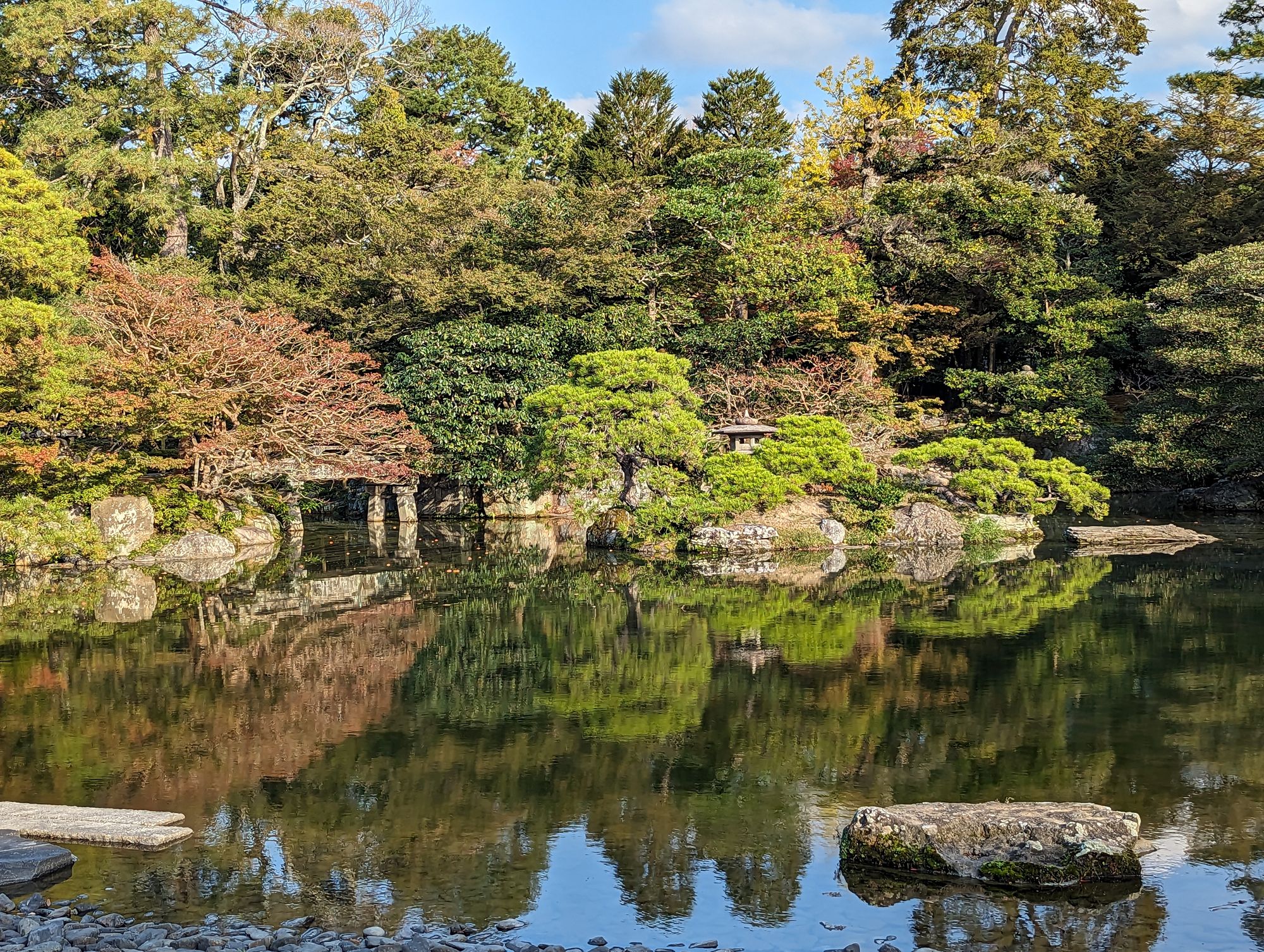
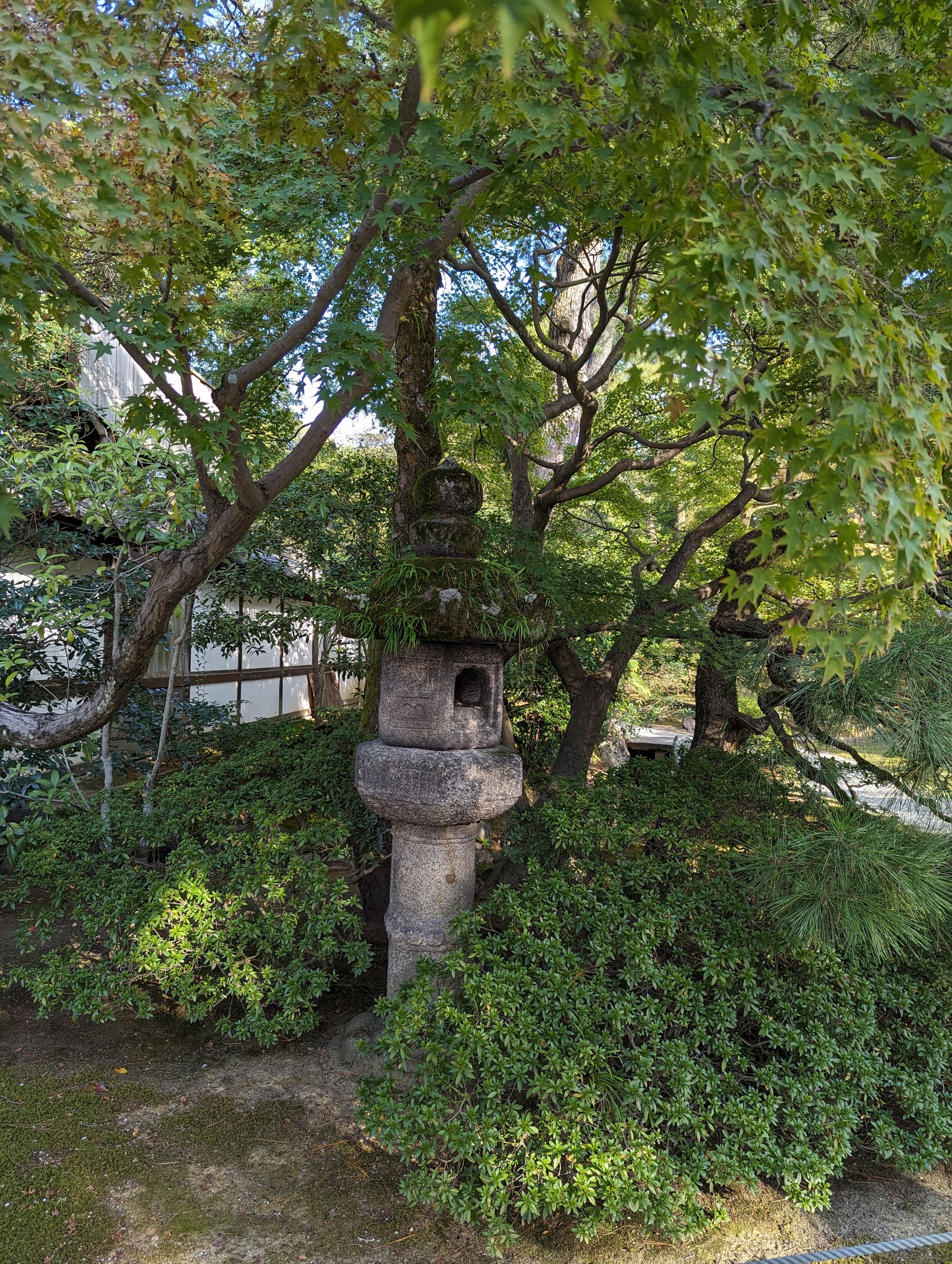
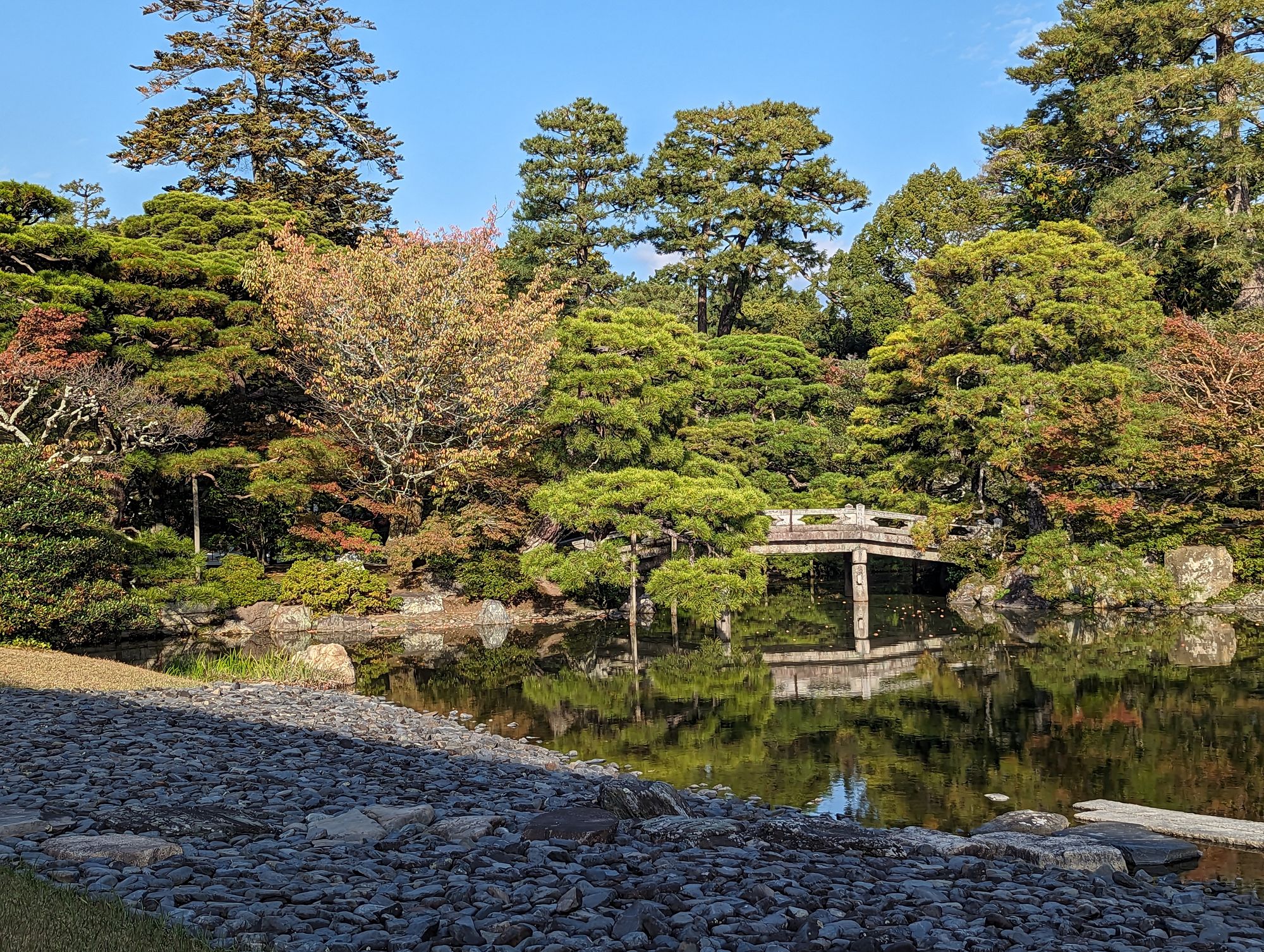
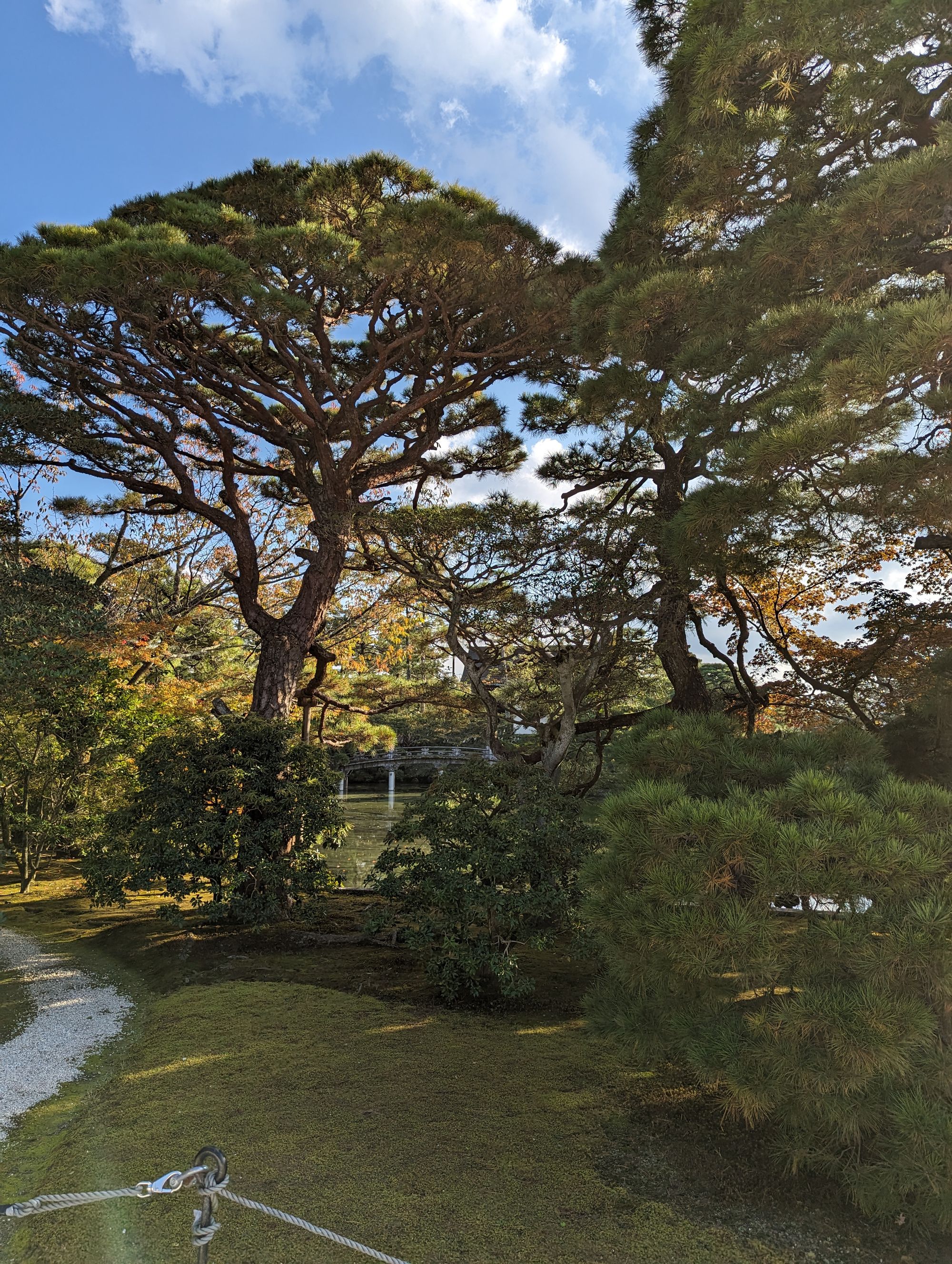
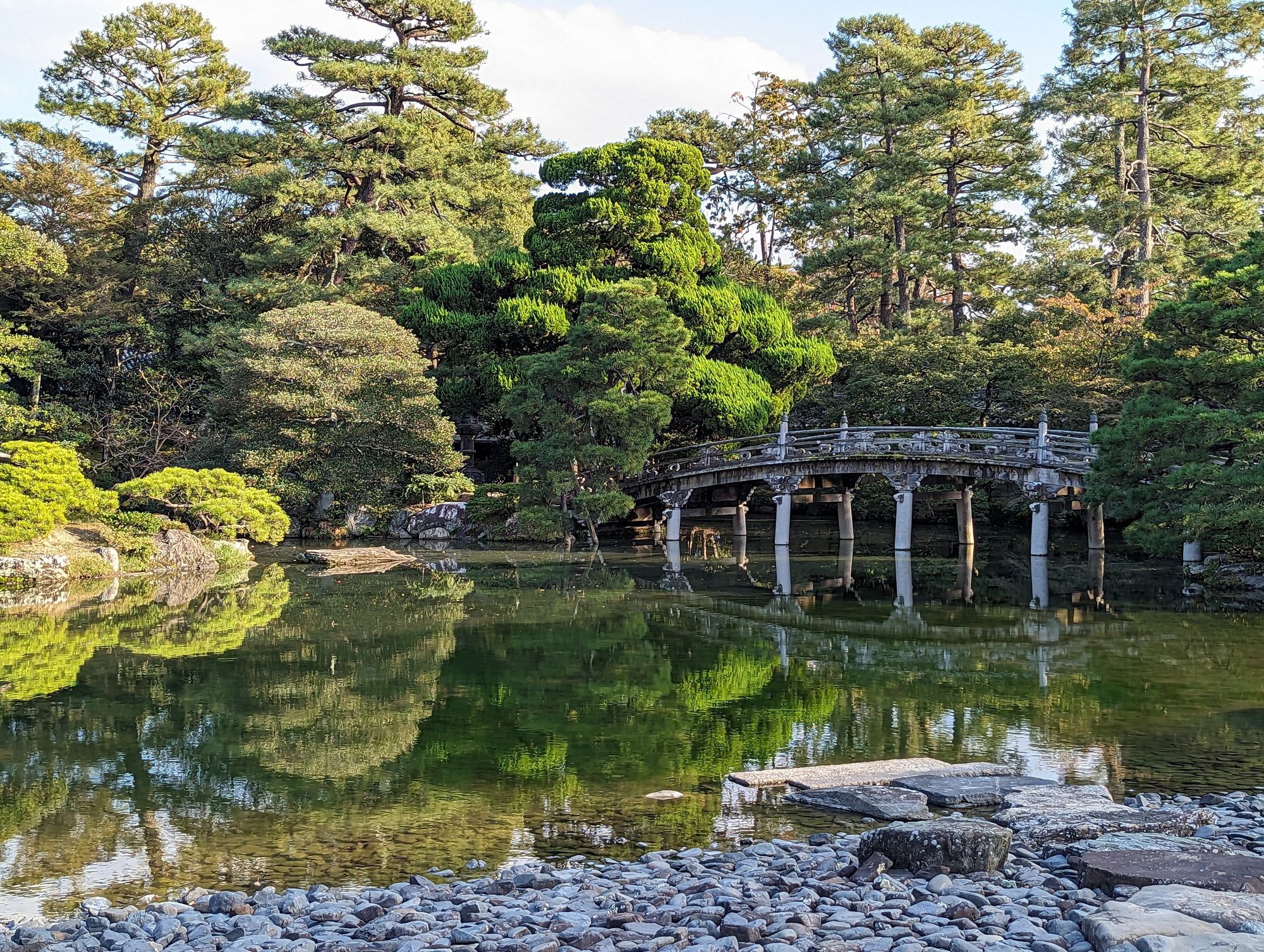
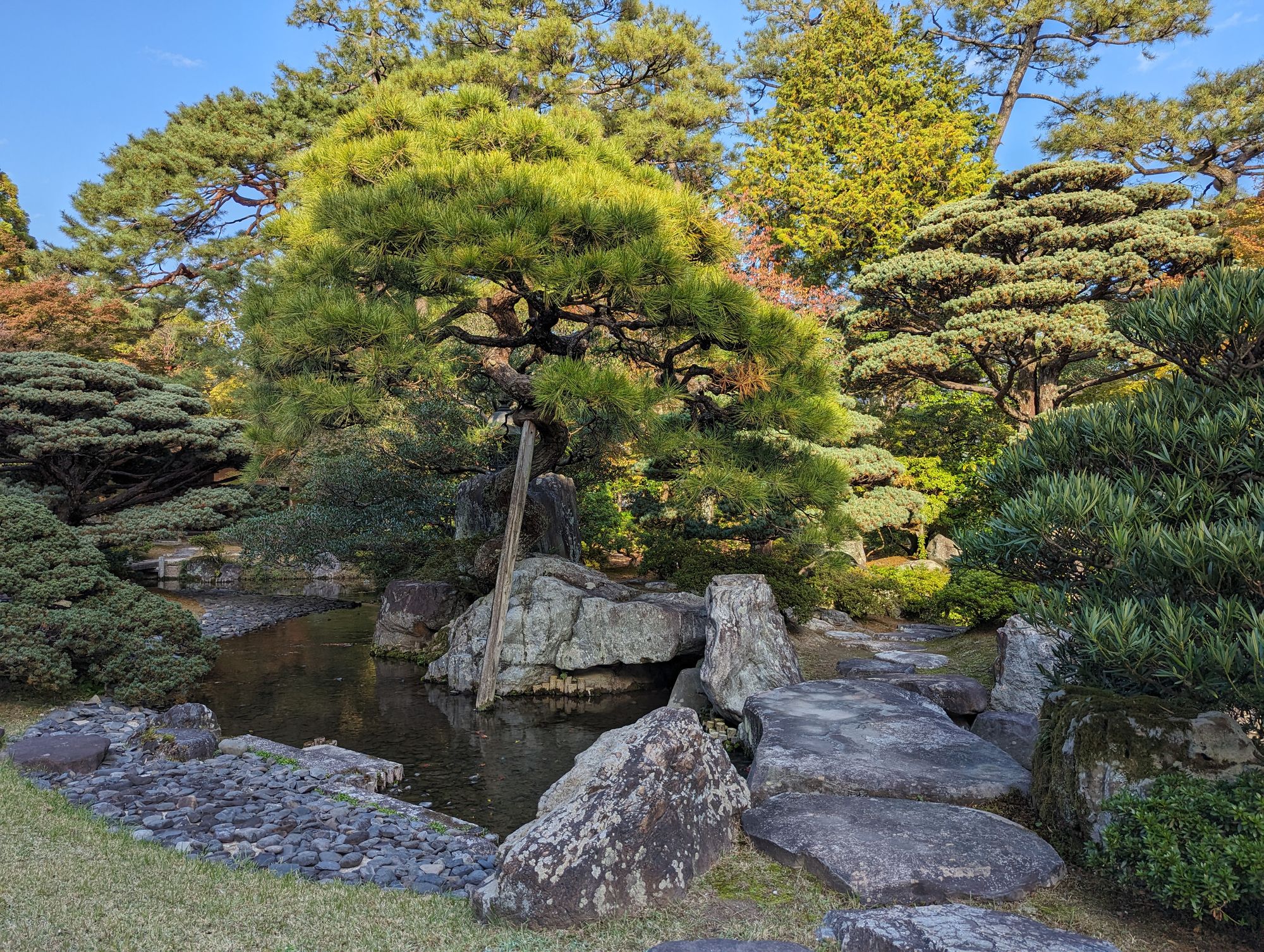
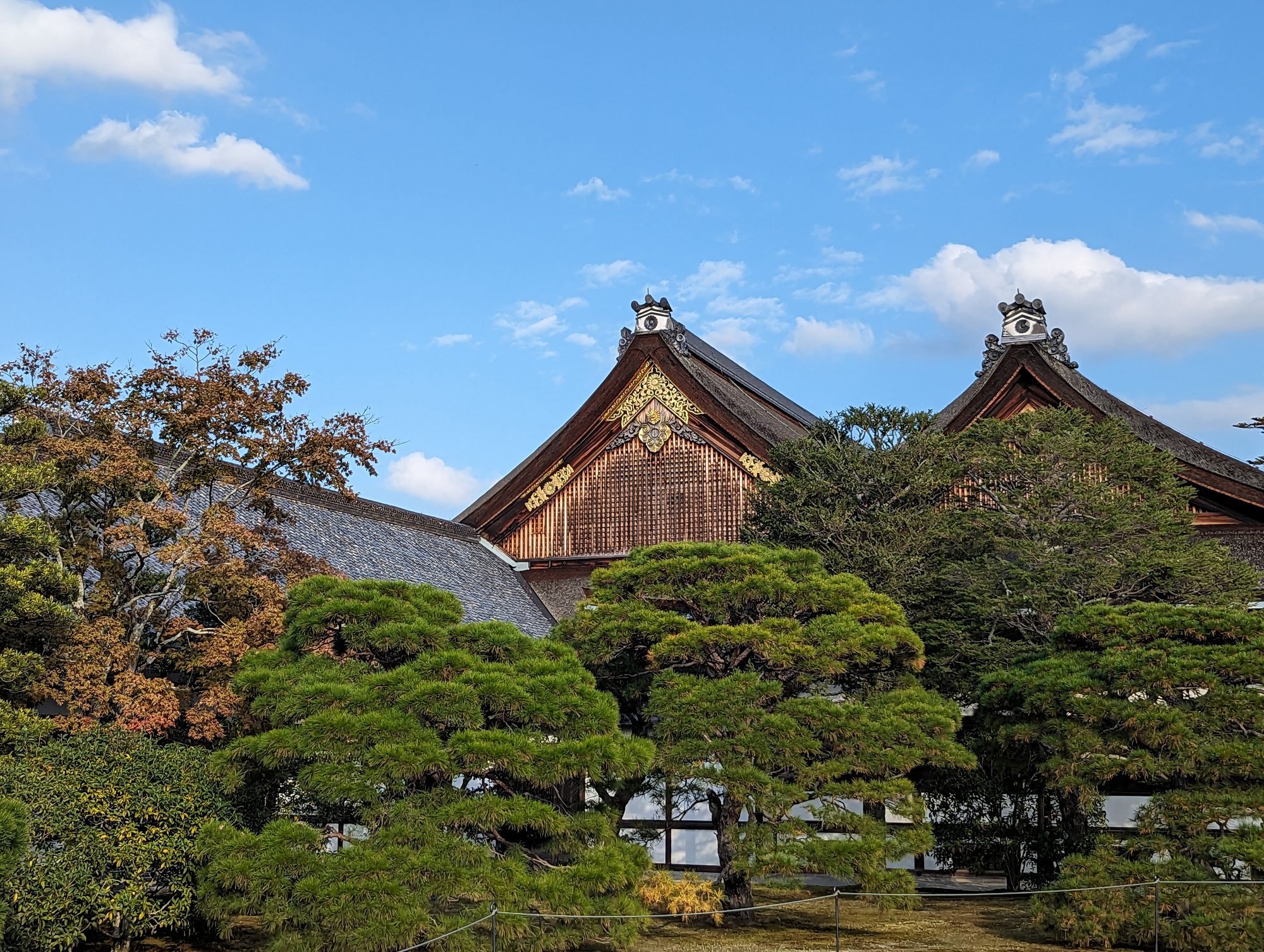
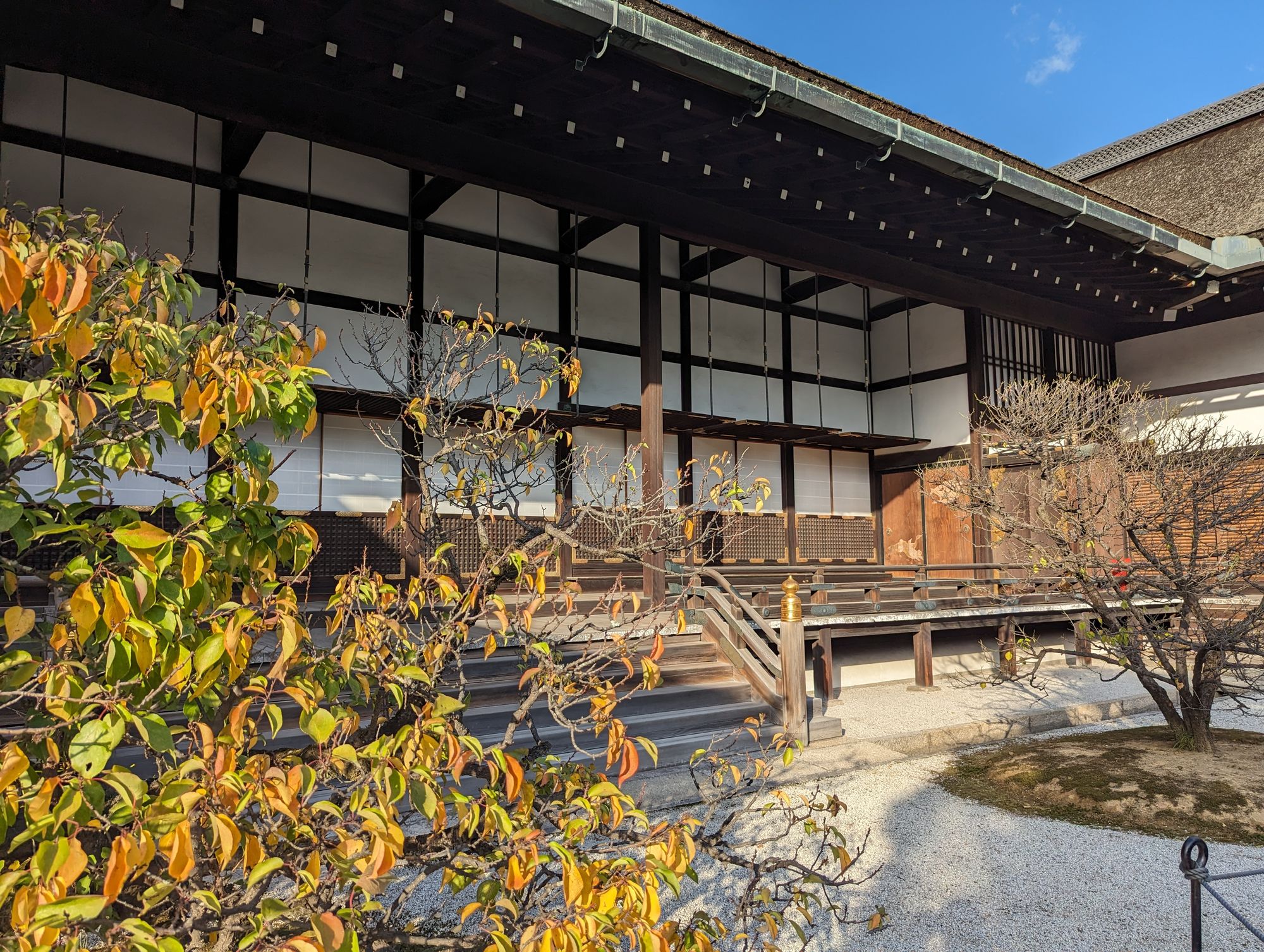
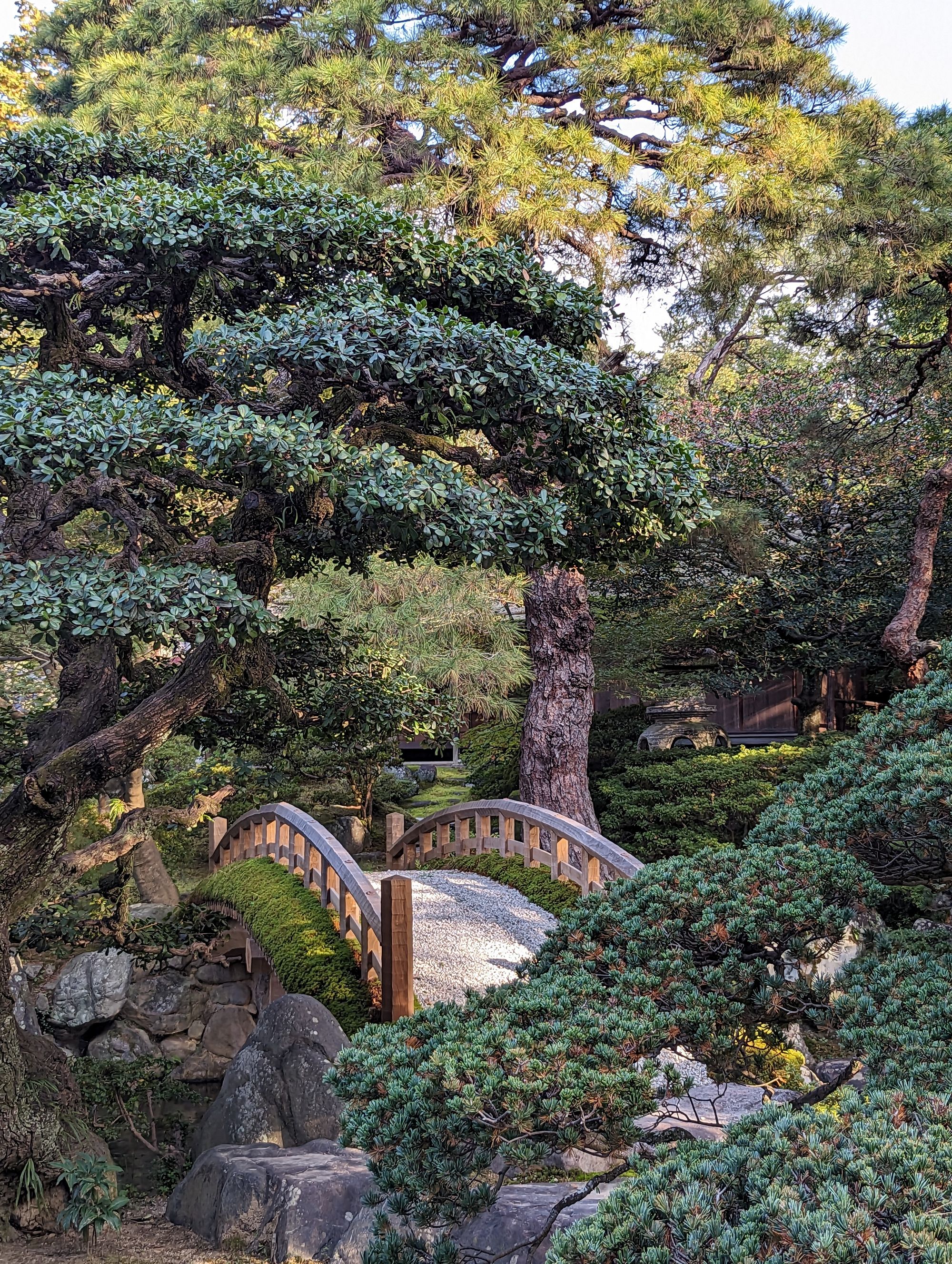
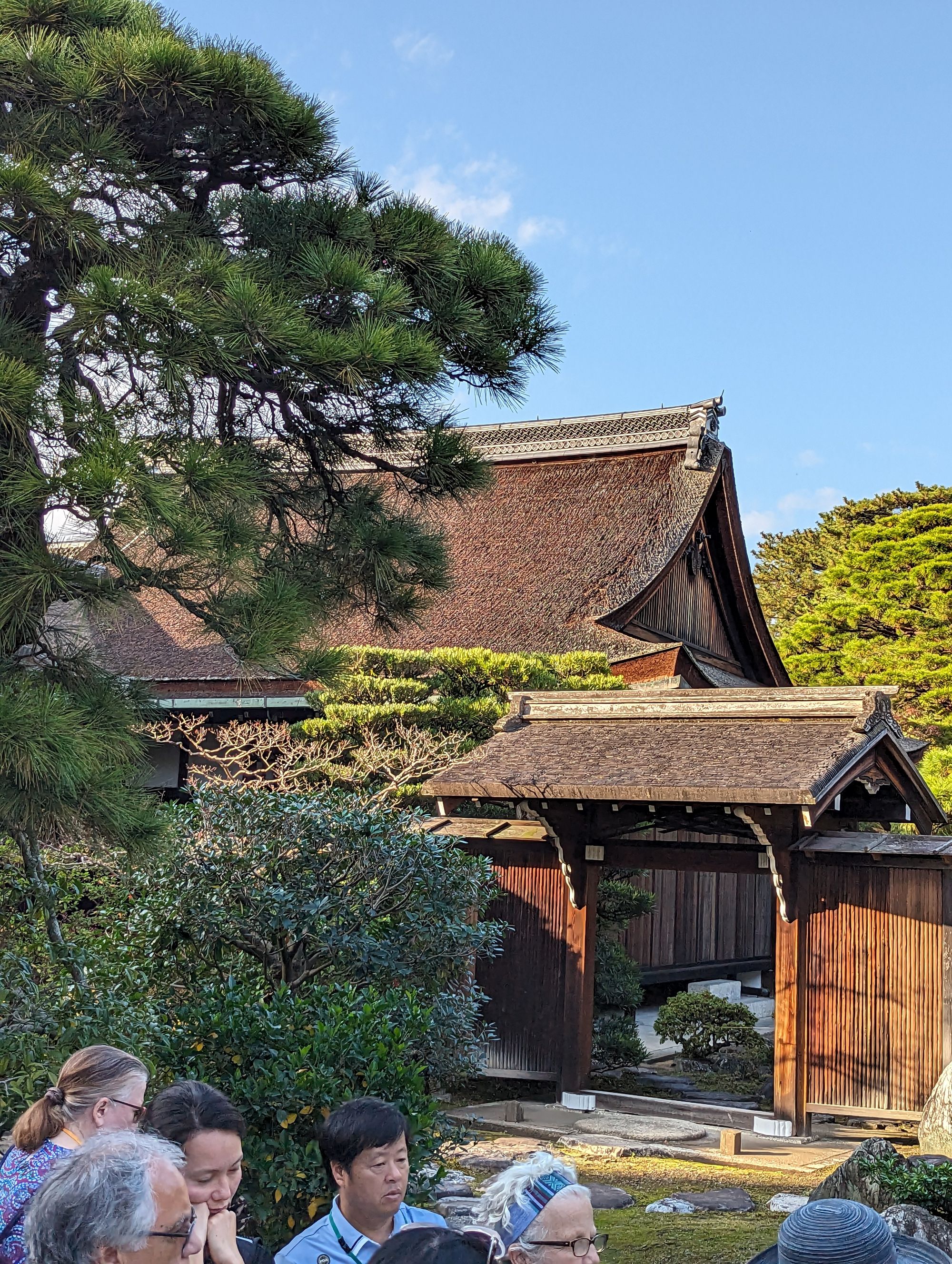
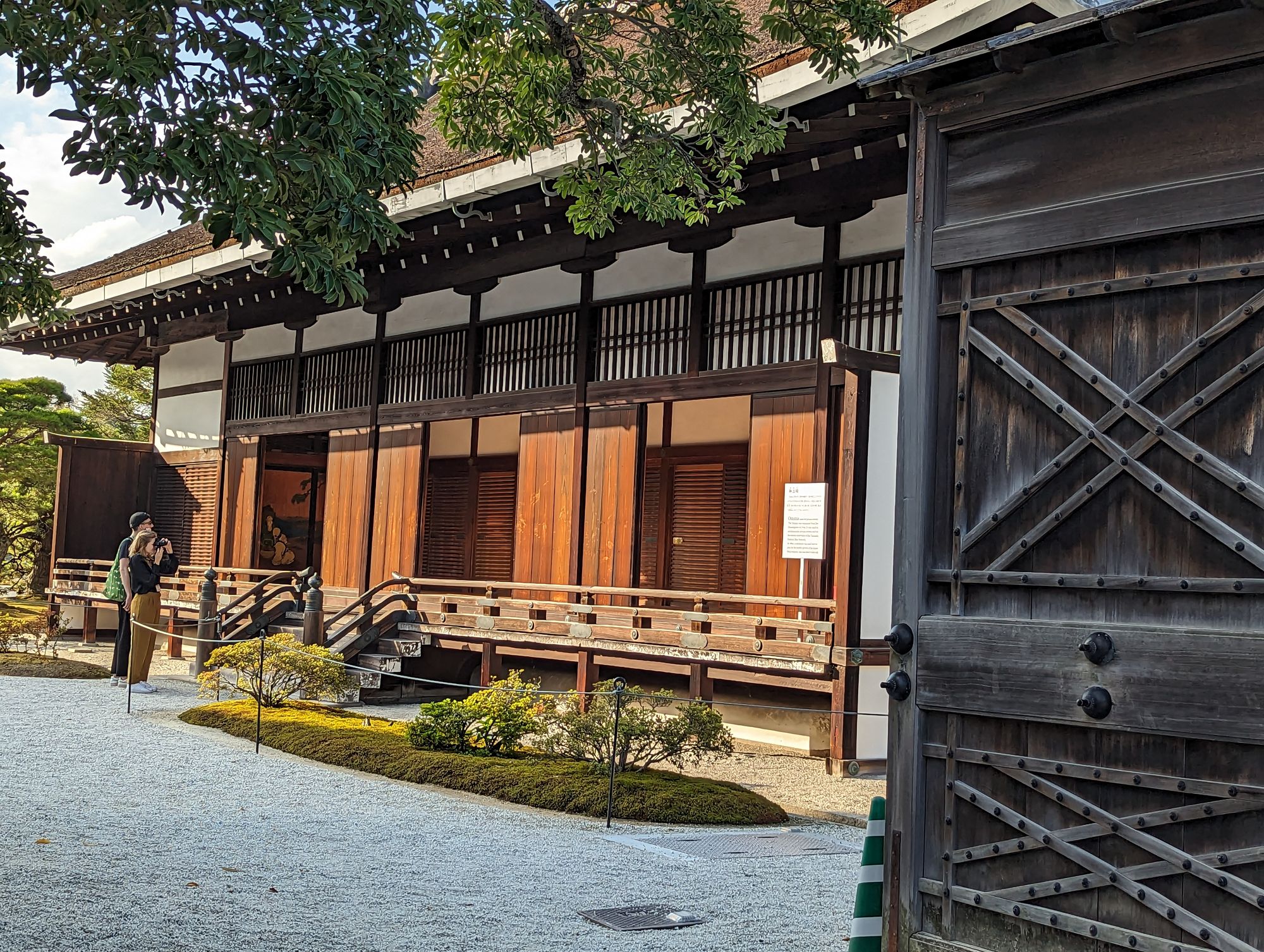
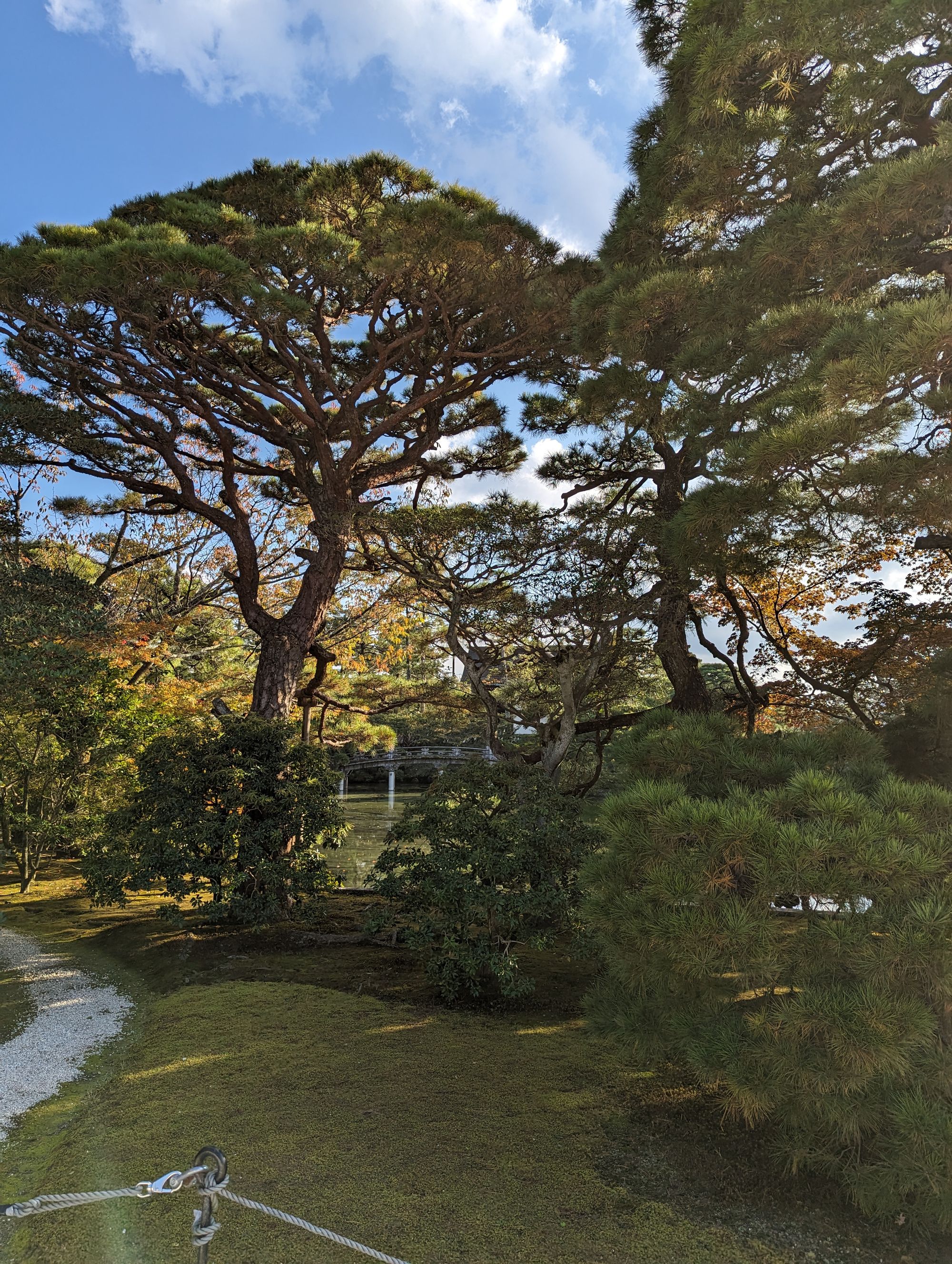
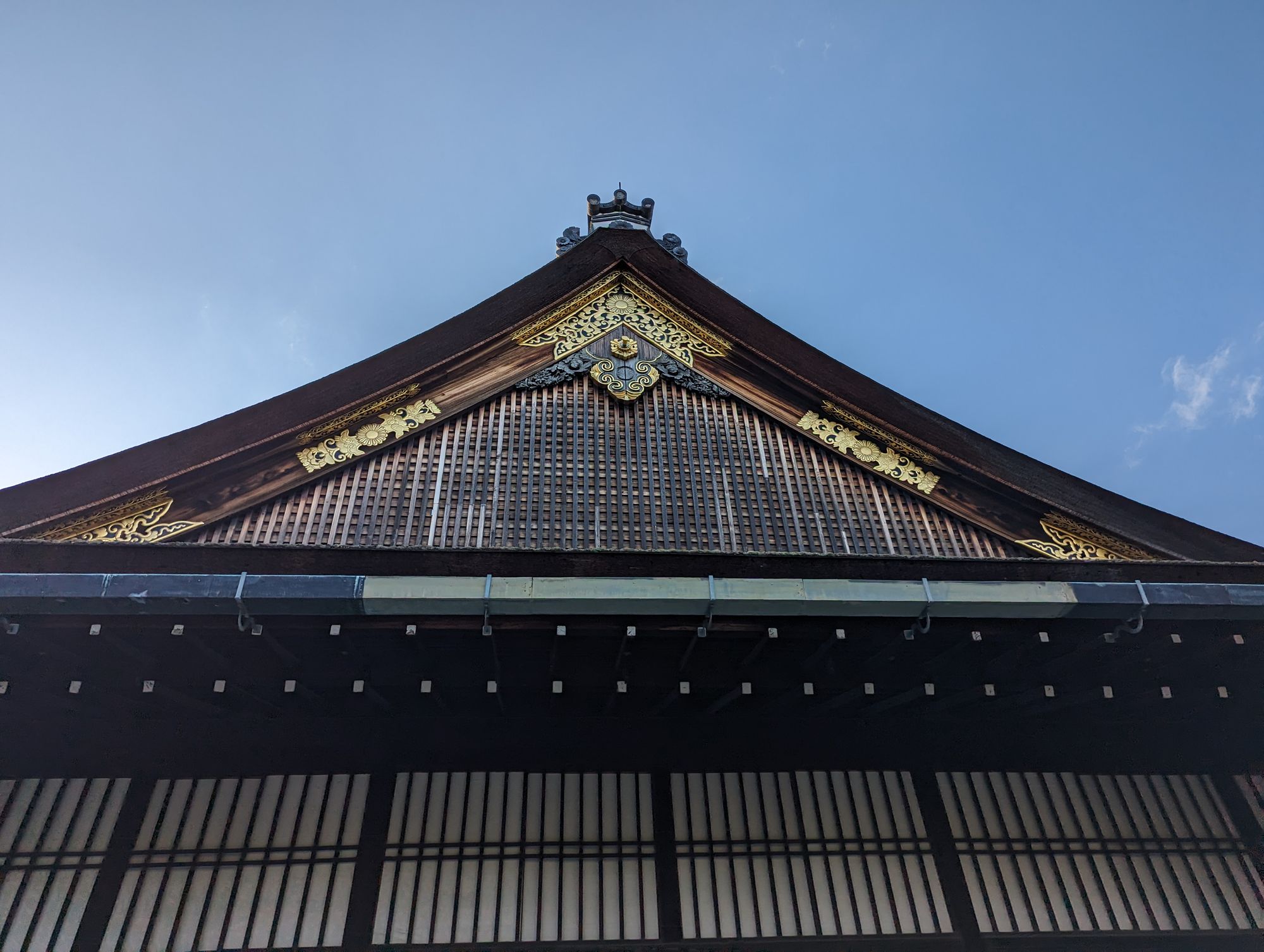
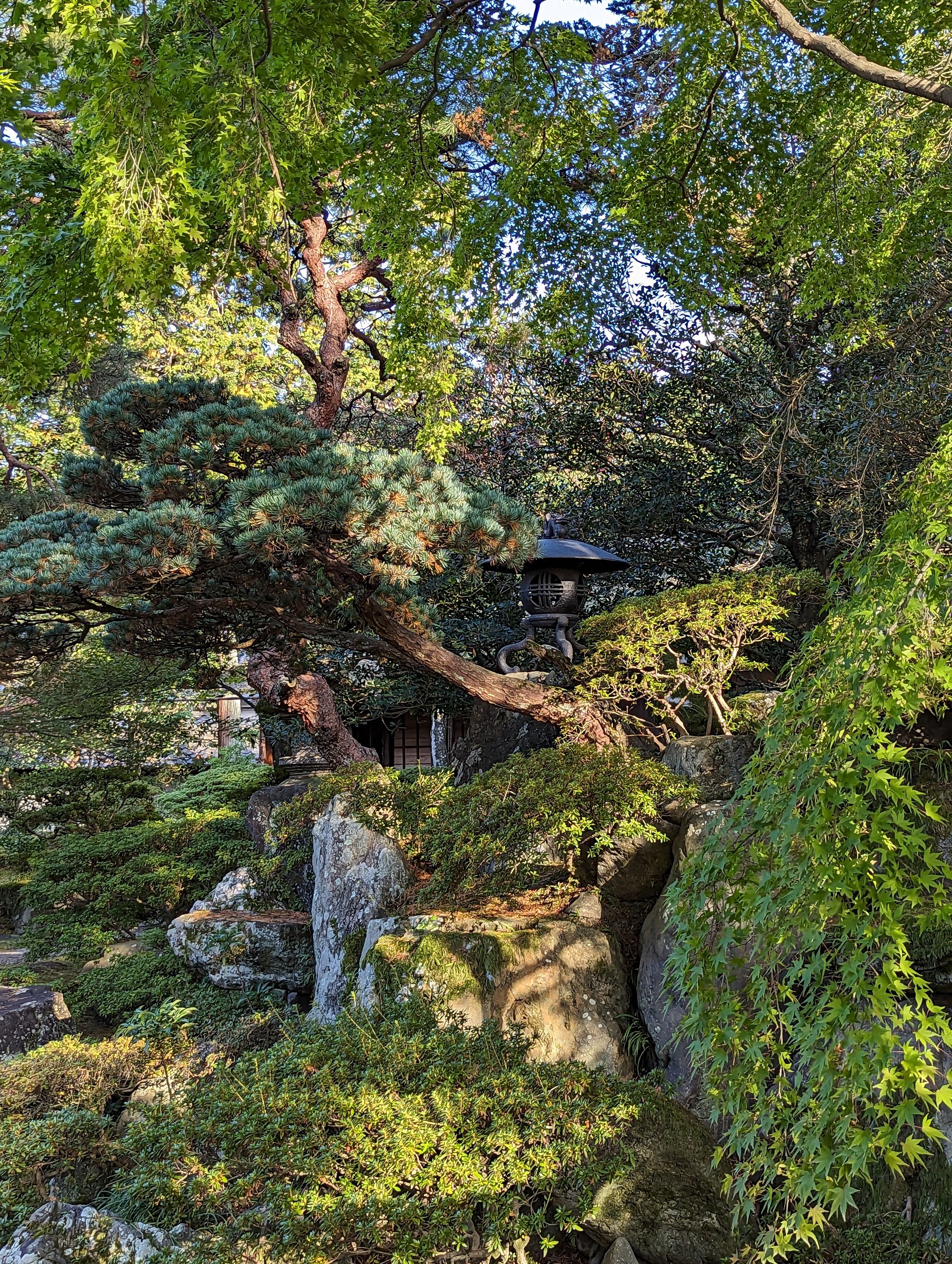
We then went back to the hotel for a rest, and later headed out to dinner
Kyoto at night, and delicious chocolates that I can eat!
